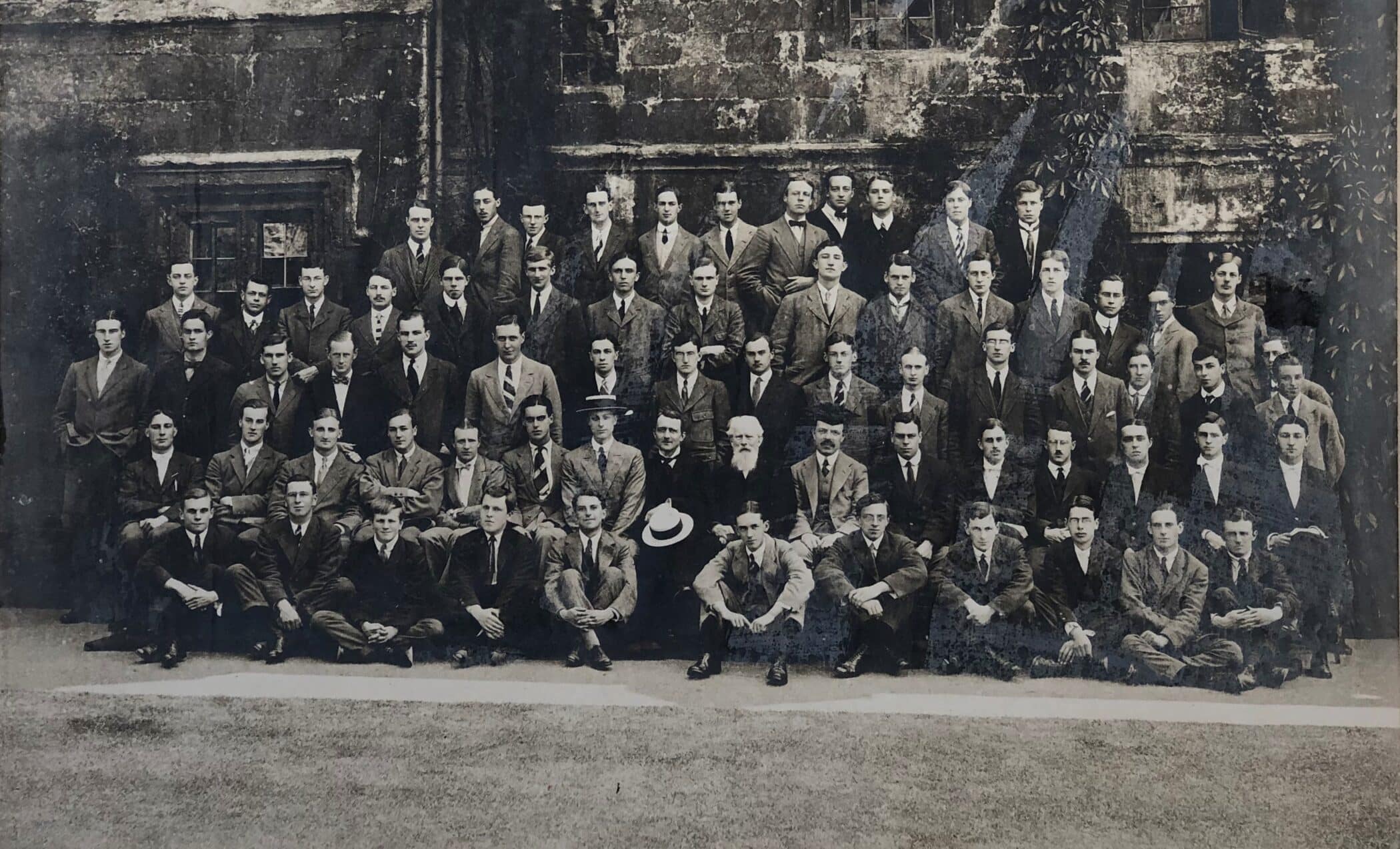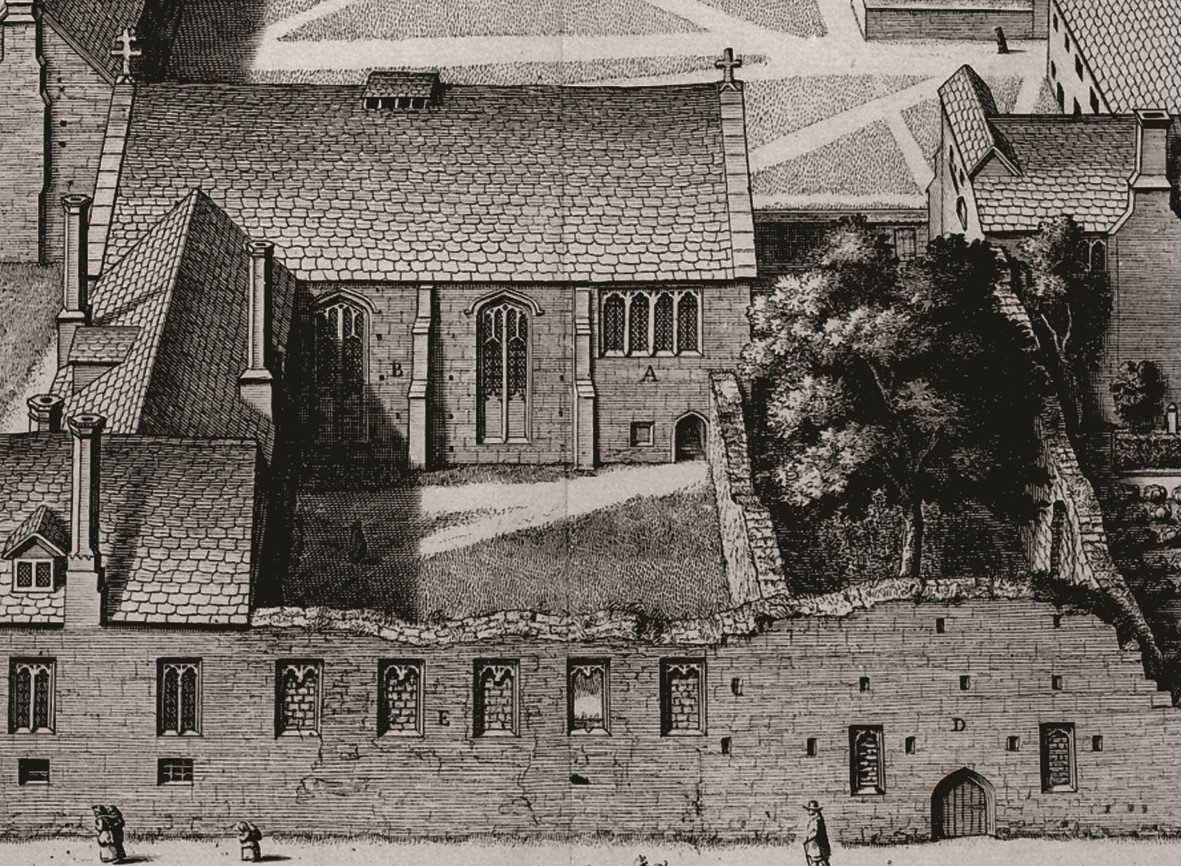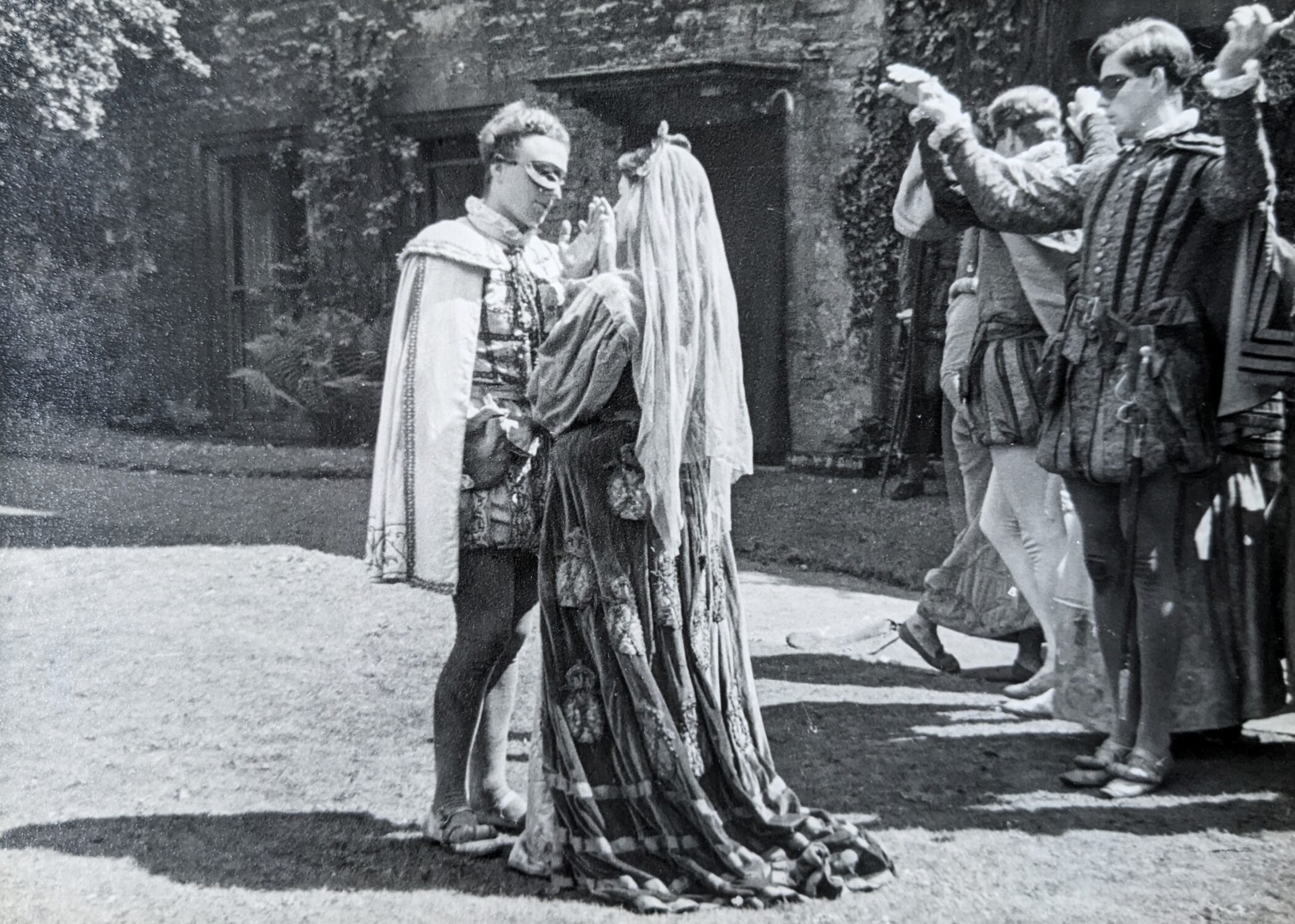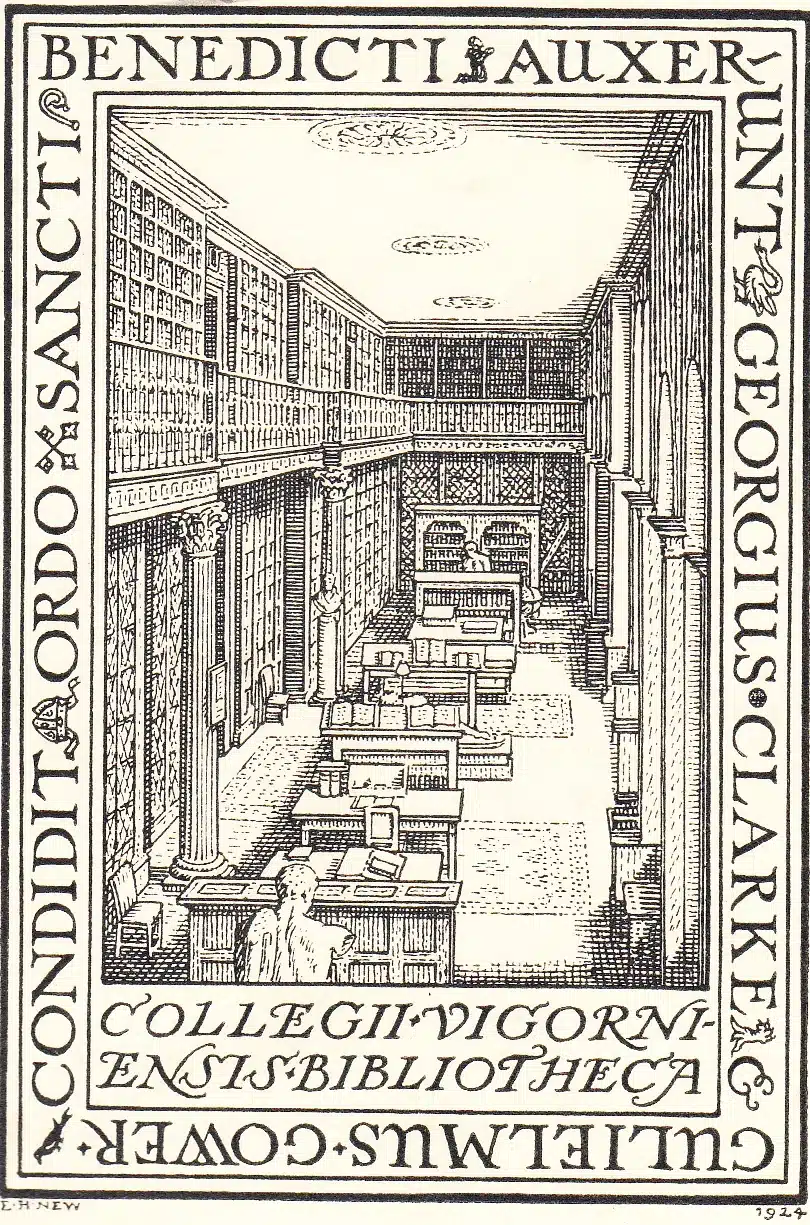On Tuesday 4 August 1914, during the Long Vacation, Britain declared war on Germany. By 31 December 1914, 49 of the 69 undergraduates shown in the above photograph (of Worcester College members in June 1914) were serving in the armed forces.
The College emptied rapidly as many undergraduates were able to receive a commission quickly through their membership of the Oxford University Officers’ Training Corps. Worcester itself was used as quarters first for an Officer Training School, and then for a Company of an Officers’ Cadet Battalion.
In total, 86 members of the College and 2 members of staff were killed during the First World War. The then Bursar, Francis Lys, wrote to the families of all those who were killed asking for biographical details and photographs; it was his intention to use this information to produce a book of remembrance to accompany the First World War memorial situated outside the Chapel.
Lys’ memorial book was never produced but the material for it was preserved in the College Archives and is now presented online. We have also included the 92 College members and 2 staff members who died as a consequence of the Second World War. The College did not keep detailed records of these individuals in the way it did for the fallen of the First World War. We are therefore extremely grateful to John Hamblin for offering to undertake this project and for his diligent research over the course of a year, without which this memorial would not have been possible.
Bibliography
Additional individual sources of information are listed after the relevant biography. Further information about the College during the First World War can be found in Jessica Goodman’s account, ‘Worcester at War’, in Bate and Goodman (eds), Worcester: Portrait of an Oxford College (London: Third Millennium, 2014). For comments or further information please contact the Archivist.
FIRST World War
Members who died in 1914
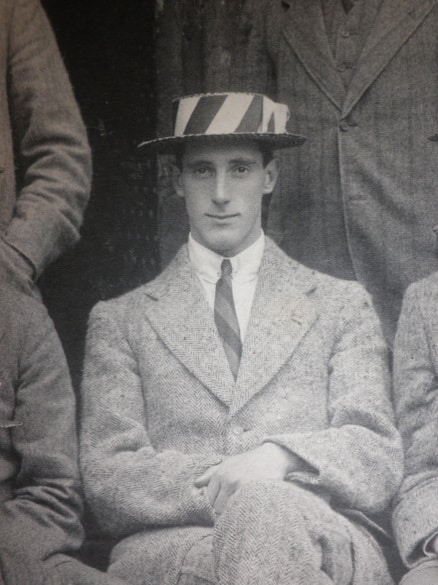
John Rothes Marlow Wilkinson (1887-1914)

John Rothes Marlow Wilkinson (1887-1914)
Lieutenant Rothes Wilkinson matriculated in 1907 and graduated in 1911. He came from a family that had associations with Worcester College dating back to the eighteenth century, and was later joined at the College by his two younger brothers, Harry (died 1916) and Cyril (later a fellow of the College, and Dean from 1919 to 1958). Following his graduation Rothes Wilkinson obtained a commission in the 4th Battalion, Middlesex Regiment in 1911 and was promoted to Lieutenant in 1913. At the outbreak of war his battalion was quickly mobilised and they left Southampton for the French-Belgian border on 13 August 1914. They were involved in some of the first skirmishes of the war at Obourg, near Mons, and Rothes Wilkinson was killed in action on 23 August 1914.
Image taken from a photograph of the Worcester College Eight in 1911.
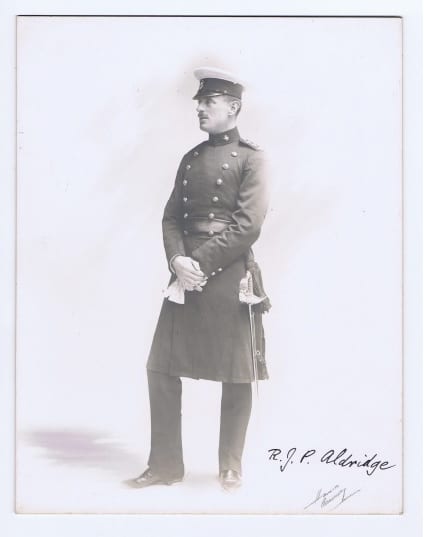
Reginald John Petty Devenish Aldridge (1877-1914)

Reginald John Petty Devenish Aldridge (1877-1914)
Captain R J P Aldridge matriculated in 1895 and graduated BA in 1898; during his time at Worcester he won prizes for athletics and was a Rugby Blue. He joined the 2nd Battalion of the Royal Sussex Regiment in May 1900 and served with them in India and Malta. He went to France with the first British Expeditionary Force on 12 August 1914 and was killed by a shell at the Battle of the Aisne on 7 October. Captain Aldridge was married in 1908 to Mabel Noble and had two children; Dulcibella, born 1909, and Reginald who was born two months after his death in December 1914.
Photograph chosen for the remembrance volume by his wife, Mabel Aldridge.
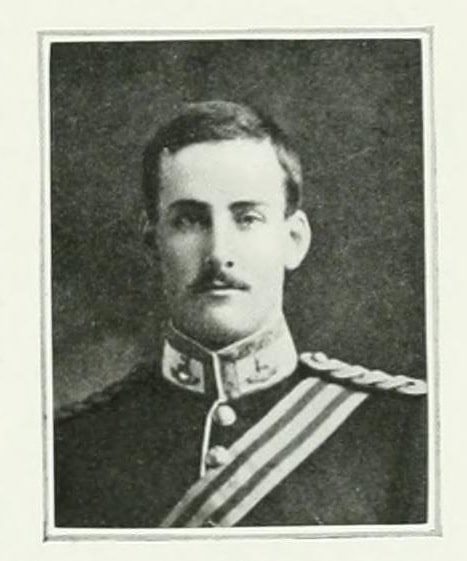
Arthur Edwin Bradshaw (1882-1914)

Arthur Edwin Bradshaw (1882-1914)
Captain Arthur Bradshaw was educated at Marlborough and Sandhurst and received a commission with 14th Jat Lancers in 1902 with whom he served in India. He entered Worcester College as a Fellow Commoner in 1907 and devoted each leave from his Indian Service to the successive steps of an undergraduate career, achieving the BA degree in 1912. In December 1913 he married Florita Price. On the outbreak of war he applied to be sent to France rather than back to India and joined the 15th The King’s Hussars. He was killed in action at Bout de Ville on 13 October 1914.
Photograph reproduced from Clutterbuck (ed), The Bond of Sacrifice (1917).
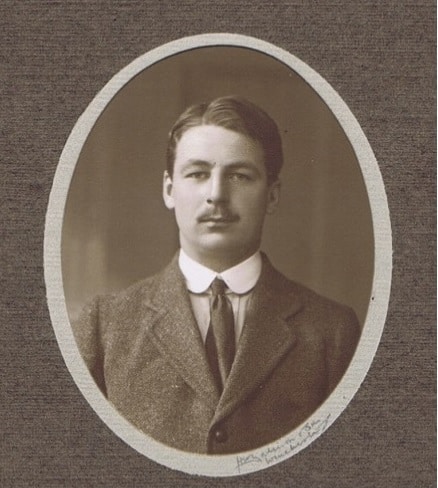
George Herbert Vacher (1894-1914)

George Herbert Vacher (1894-1914)
Second Lieutenant George Vacher matriculated in 1913. He was a keen athlete, excelling at running and boxing, and reached the welterweight finals of the Oxford University trials in 1914. He was a member of the Oxford University Officers’ Training Corps, through which he applied for a commission on the outbreak of war and was gazetted to his regiment in August 1914. He left for Flanders on the 5th of October and was killed in action at Zandvoorde on 30 October 1914.
Photograph chosen for the remembrance volume by his father, H P Vacher.
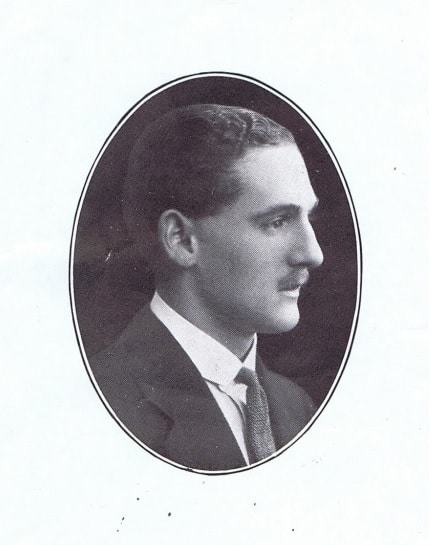
Kenneth Shorland Aplin (1892-1914)

Kenneth Shorland Aplin (1892-1914)
Kenneth Aplin matriculated in 1911 but did not take a degree. He joined the 3rd (Reserve) Battalion of the Royal Inniskilling Fusiliers on 1 November 1913 and following the outbreak of war left for the front on 13 September 1914. He was killed in action near Messines, Belgium, on 1 November 1914.
Photograph chosen for the remembrance volume by his father, J. Shorland Aplin.
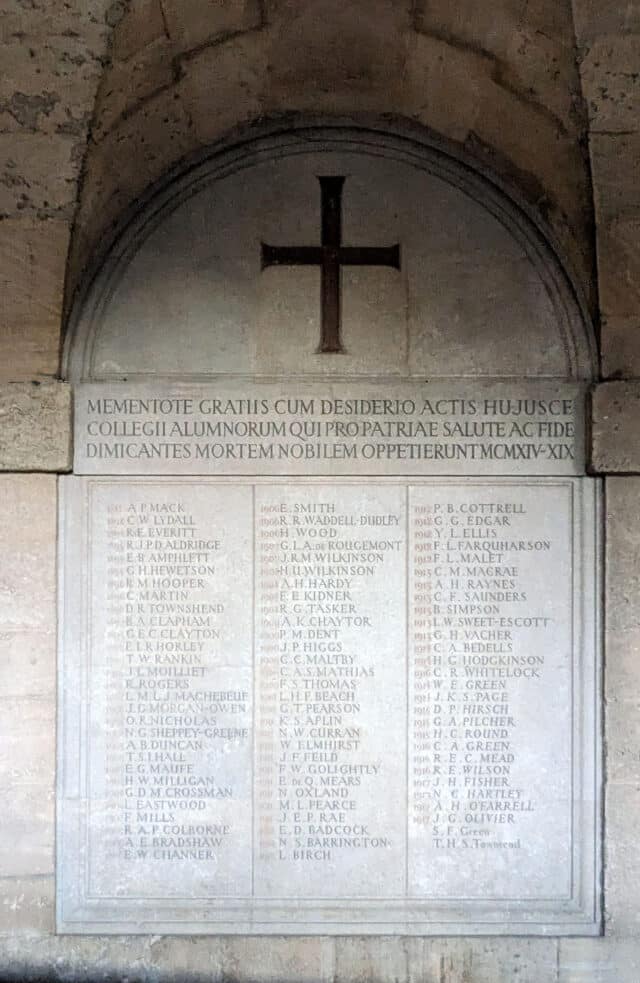
Léon Marie Louis Jules Machebeuf (1882-1914)
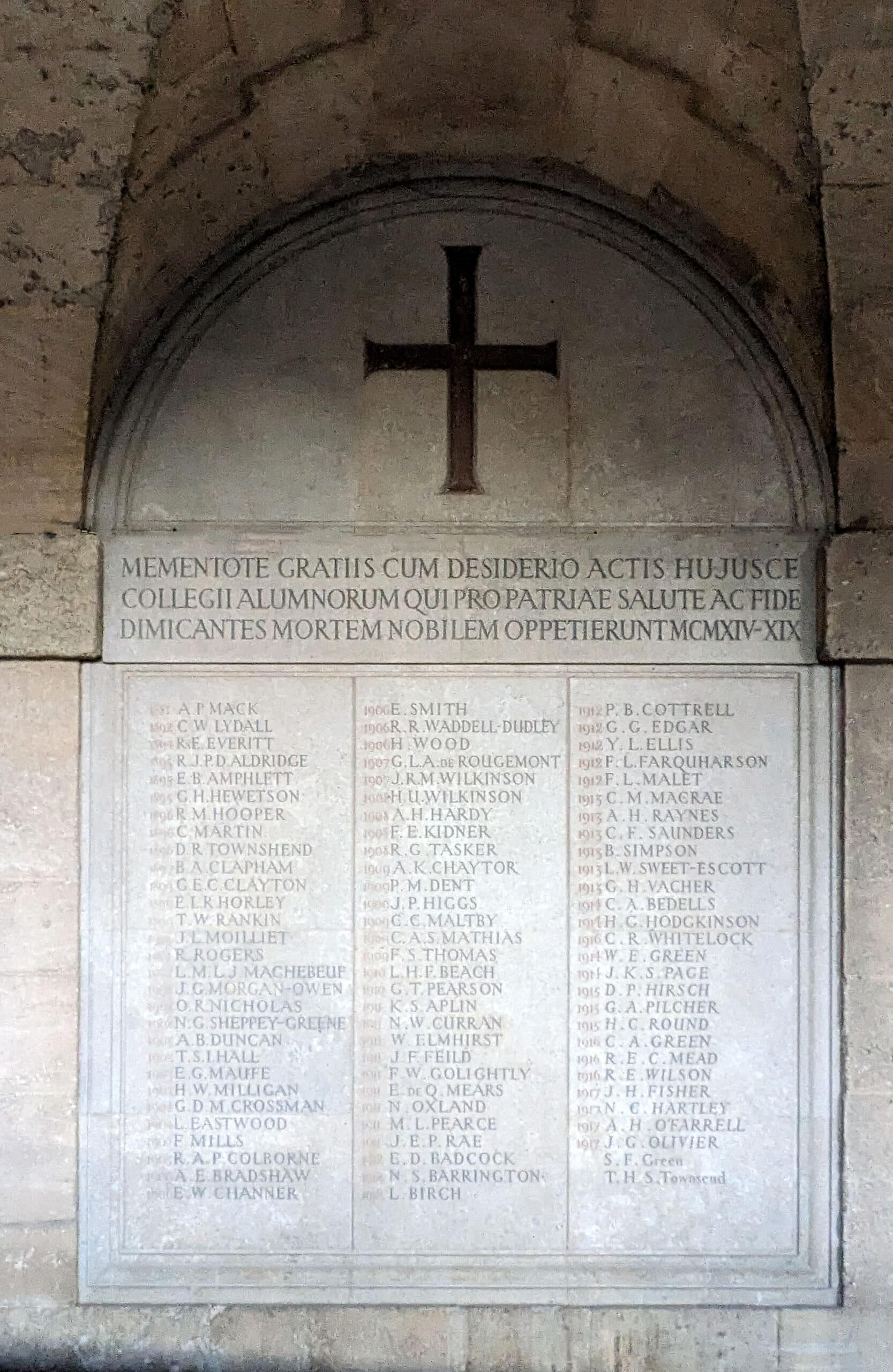
Léon Marie Louis Jules Machebeuf (1882-1914)
Léon Machebeuf matriculated in 1902 but did not take a degree. He joined the 166e Regiment d’Infanterie of the French army in 1908 and was killed at Buzy-Darmont on 12 November 1914.
Unfortunately the College has no photographs of Léon Machebeuf.

George Hayton Hewetson (1877-1914)

George Hayton Hewetson (1877-1914)
The Reverend George Hewetson matriculated in 1895, graduated BA in 1901 and became chaplain to the Royal Navy in 1906, serving on HMS Britannia and HMS Minotaur in the China Sea. At the time of his death he was chaplain on the HMS Bulwark and was killed on 26 November 1914 in an explosion.
Unfortunately the College has no photographs of George Hewetson.
Members who died in 1915

Frederick Elworthy Kidner (1888-1915)

Frederick Elworthy Kidner (1888-1915)
Frederick Kidner was born in Somerset and attended Sherborne School in Dorset between 1901 and 1906. He entered Worcester College in 1908 and during his time in Oxford played rugby for the College. After an unsuccessful attempt to join the Indian Civil Service Frederick Kidner graduated BA in 1911 and joined his uncle’s agricultural business in Russia. He returned to Britain at the outbreak of war and joined the 16th London Regiment (Queen’s Westminster Rifles) in September 1914. On 19 February 1915 Lance-Corporal Frederick Kidner was shot by a sniper and died of his wounds the following day.
Unfortunately the College has no photographs of Frederick Kidner.
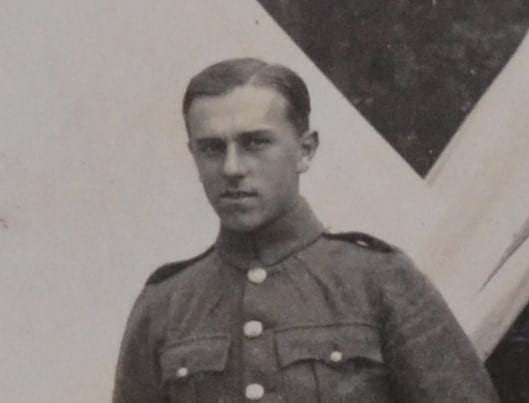
Noël Scott Barrington (1892-1915)

Noël Scott Barrington (1892-1915)
Noël Barrington matriculated in 1912. While at Worcester he was a member of the Torpid rowing crew who achieved 6 bumps in 1914. He interrupted his degree to join the Royal Irish Rifles on 4 August 1914 and served with them in France. Second Lieutenant Noël Barrington was killed in action at Neuve Chapelle on 10 March 1915.
Photograph from the album of Lionel Beach (died 1918), kindly provided by his family.
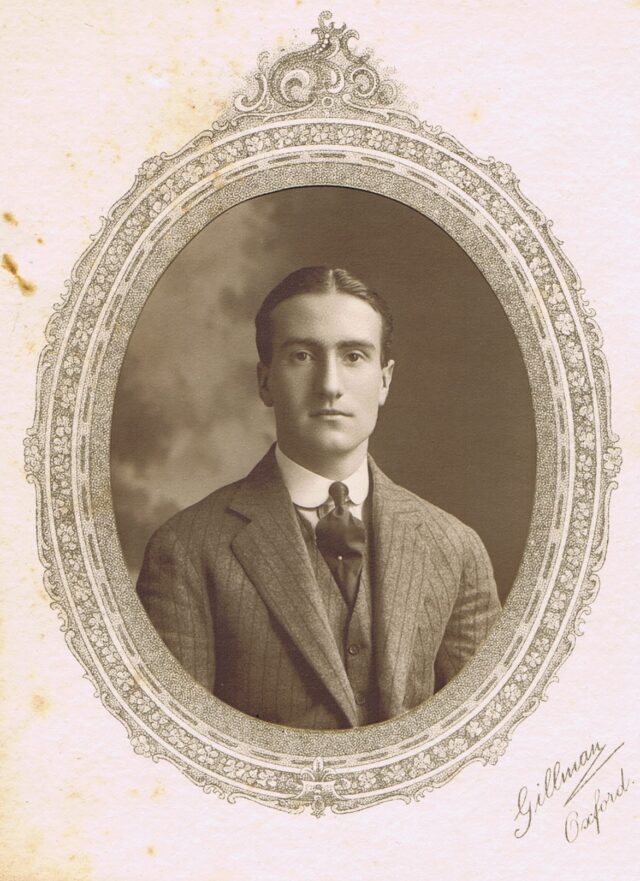
Robert Roland Waddell-Dudley (1887-1915)
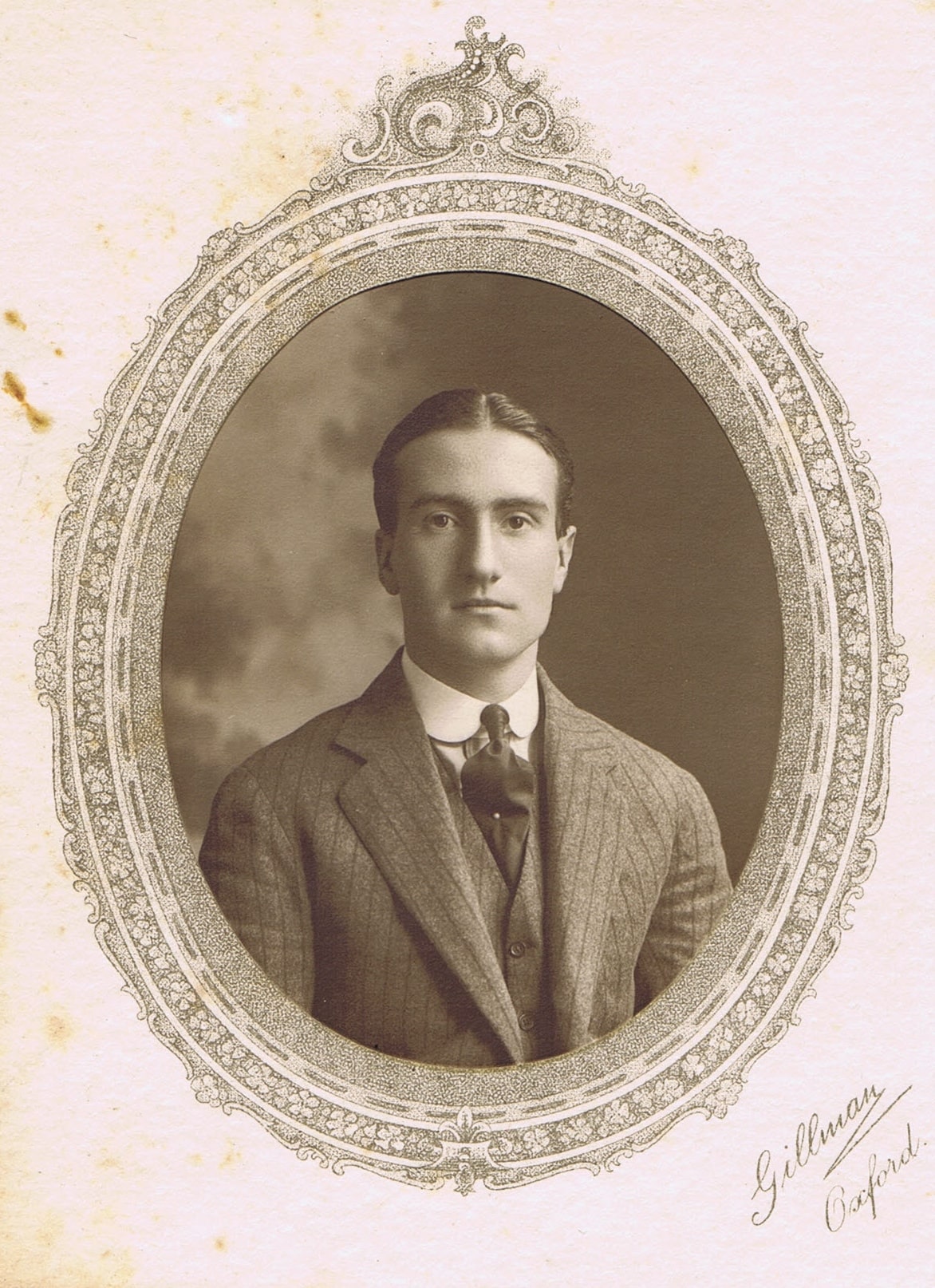
Robert Roland Waddell-Dudley (1887-1915)
Roland Waddell-Dudley was born in St Albans and educated at Malvern College. He came up to Worcester in 1906 and was a tennis half-blue. He was gazetted to the 3rd battalion Royal Fusiliers in December 1911 and joined the regiment in India in January 1912. He returned to Britain with his regiment following the outbreak of war, and was wounded in February 1915 when a bullet was embedded in his back. Refusing an operation to remove it, or to return to England to convalesce, he returned to the front in March. Lieutenant Roland Waddell-Dudley was killed in action in Belgium on 15 April 1915.
Photograph chosen by his sister, Maud Waddell-Dudley, for the remembrance volume.

Paxton Malaby Dent (1891-1915)

Paxton Malaby Dent (1891-1915)
Paxton Dent matriculated in 1909 but left the College in 1911 without taking a degree. He enlisted in the army on the outbreak of war and became a machine gunner in the 4th Seaforth Highlanders. He was killed in action at Neuve Chapelle on 28 April 1915.
Unfortunately the College has no photographs of Paxton Dent.
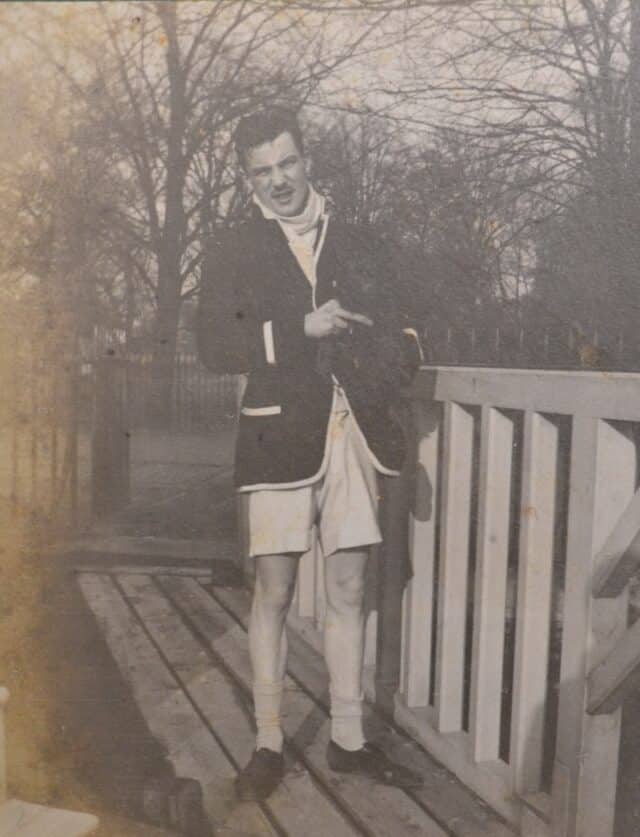
Brian Simpson (1894-1915)
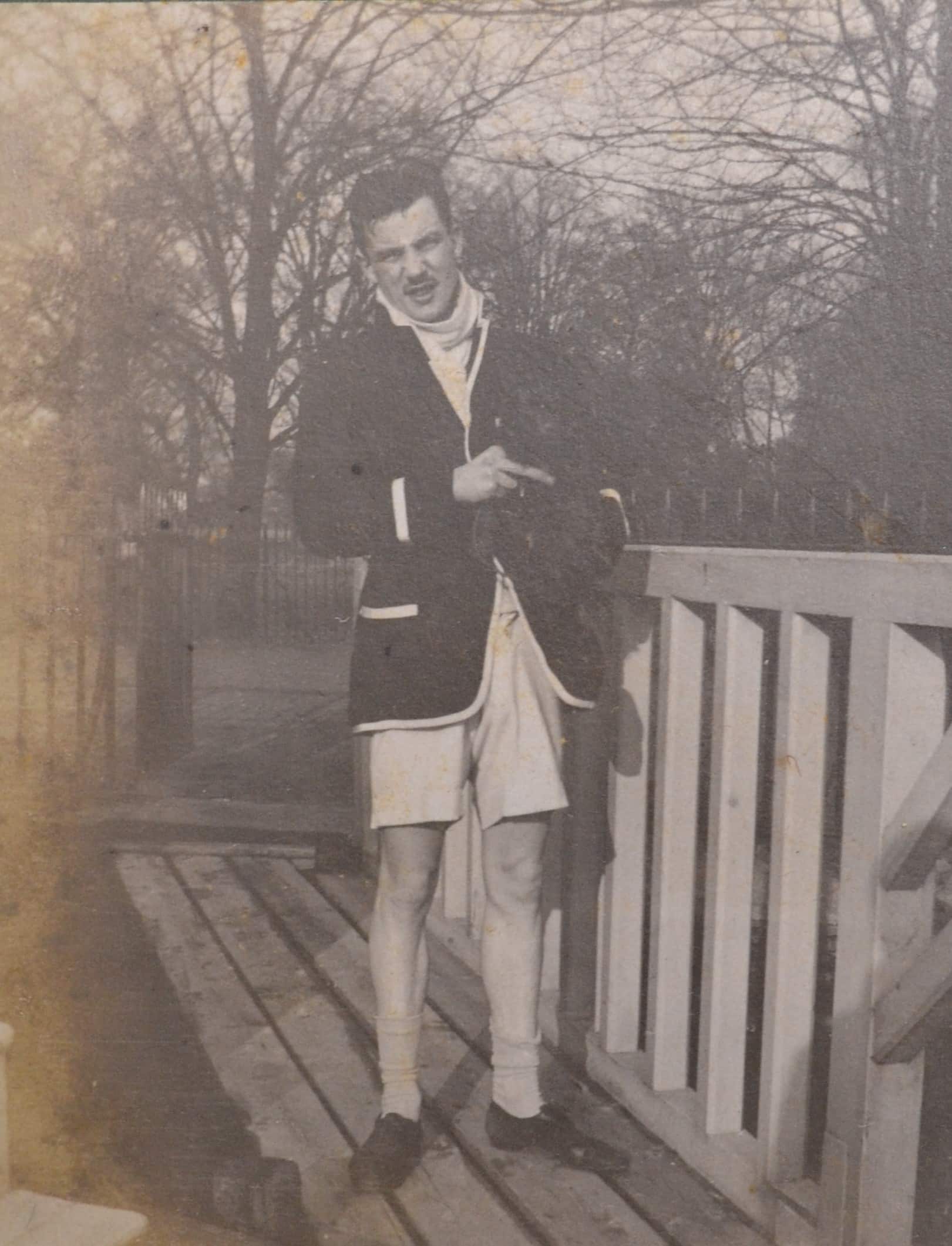
Brian Simpson (1894-1915)
Brian Simpson matriculated in October 1913 and was a member of the successful College Torpid and Eight in 1914. At the outbreak of war he went to Sandhurst, and subsequently obtained a commission in the Scottish Rifles. He joined the 2nd Battalion at the front in March 1915. Second Lieutenant Brian Simpson was killed in action while leading a charge, near Armentieres, on 9 May 1915.
Photograph from the album of Lionel Beach (died 1918), kindly provided by his family.
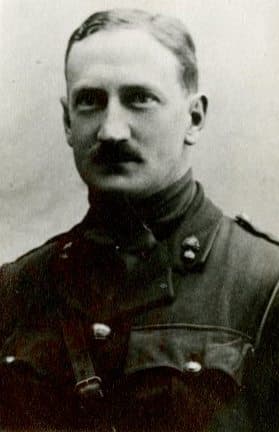
Edward John White Abbott (1884-1915)

Edward John White Abbott (1884-1915)
Edward Abbott matriculated in 1903 but left the College without taking a degree. He was mobilised on 4 August 1914 and at the time of his death was attached to the Royal Irish Fusiliers. Lieutenant Abbott was killed at Festubert on 17 May 1915, however he does not appear on the war memorial outside the Chapel as the College did not hear of his death until 1952.
Photograph courtesy of Sherborne School.
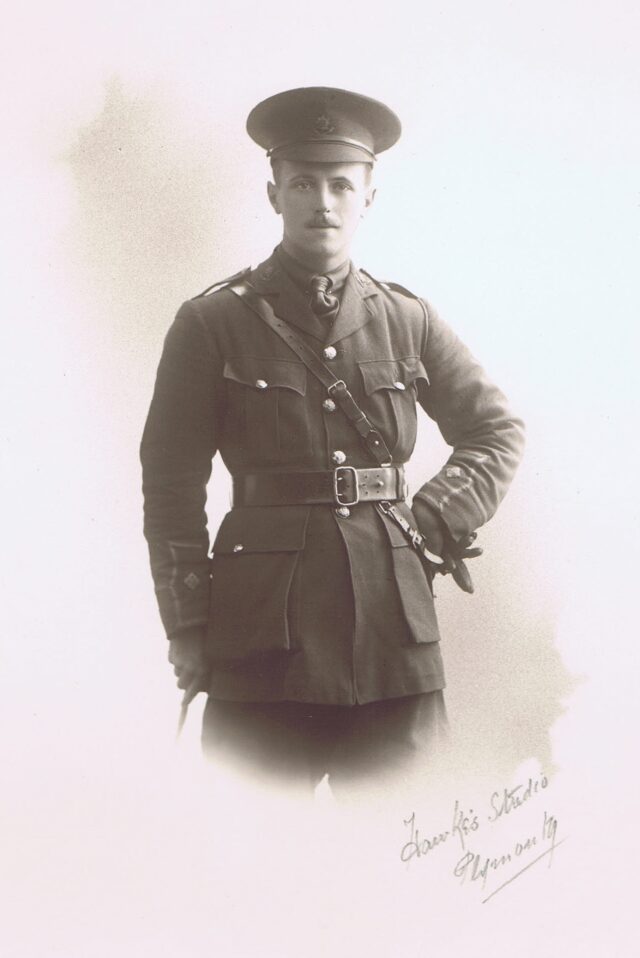
Alban Kingsford Chaytor (1890-1915)
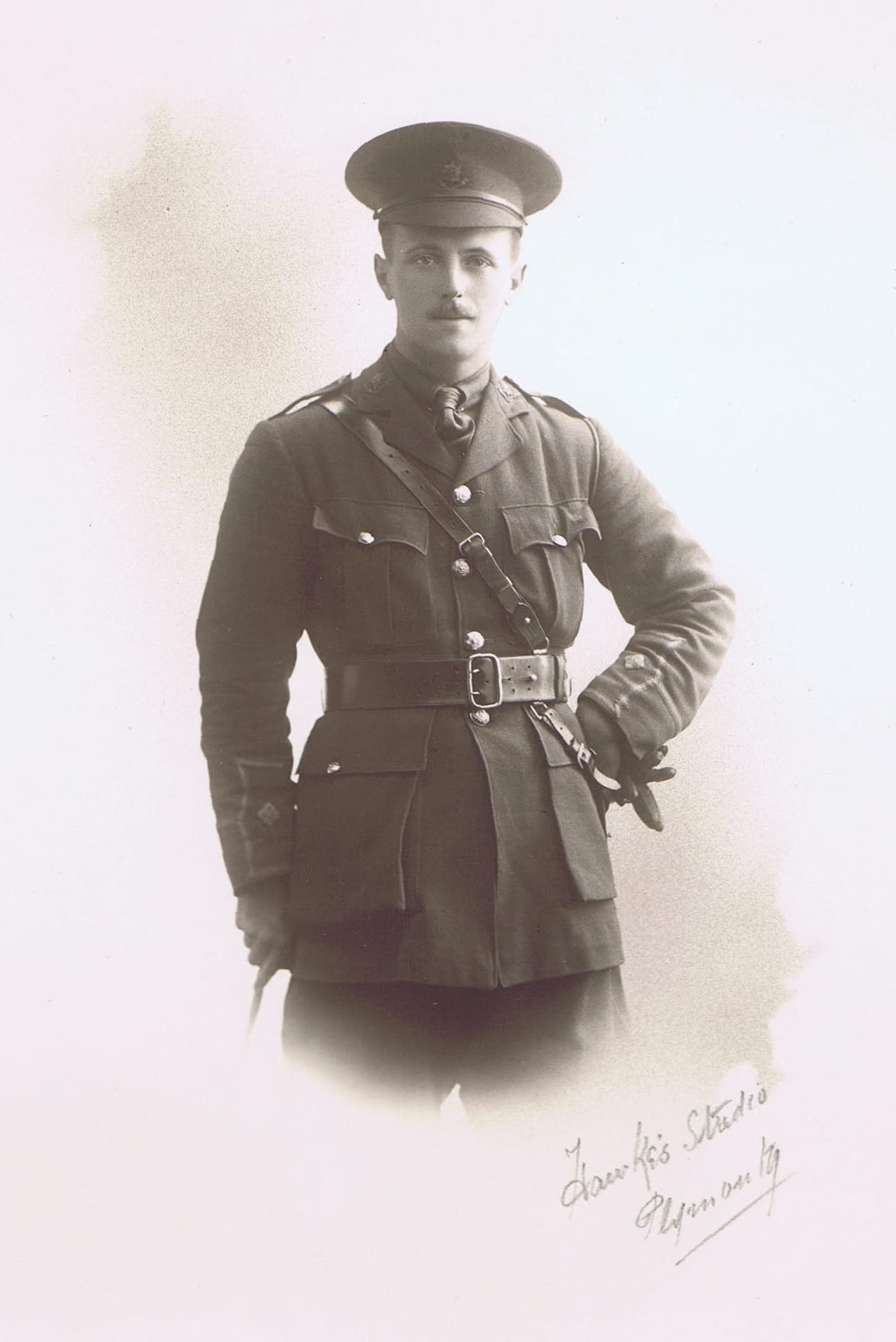
Alban Kingsford Chaytor (1890-1915)
Alban Chaytor was born on 24 October 1890 and educated at the Worcester Cathedral King’s School where he excelled at sports and was a member of the cricket XI, the football team and the school boat. He entered Worcester College in 1909 but did not take a degree, leaving the College in 1910 to take a post as a tea planter in Ceylon. He returned from Ceylon on the outbreak of war and took up a commission in the 3rd Worcestershire Regiment in December 1914. Second Lieutenant Alban Chaytor was dangerously wounded on 23 May 1915 while in charge of a working party and died from his wounds on 26 May 1915.
Photograph chosen for the remembrance volume by his father, Charles Chaytor.
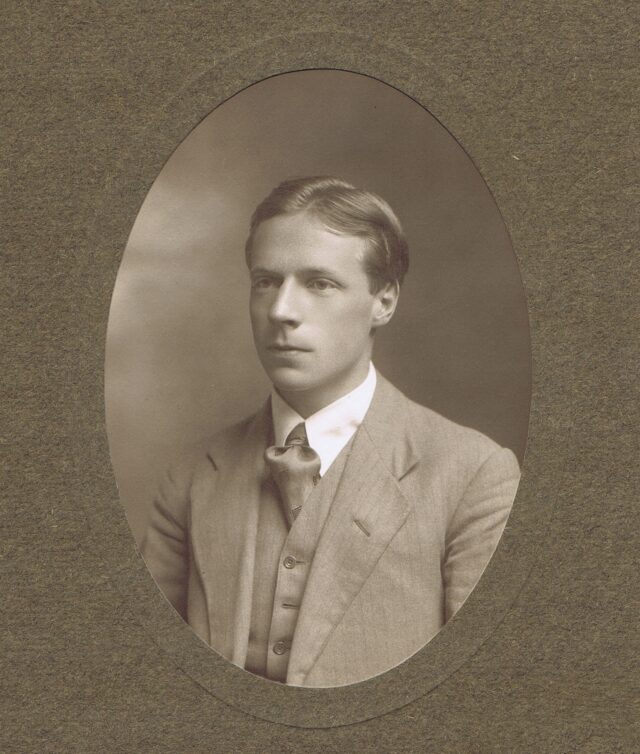
Francis (Frank) Lumsden Farquharson (1894-1915)
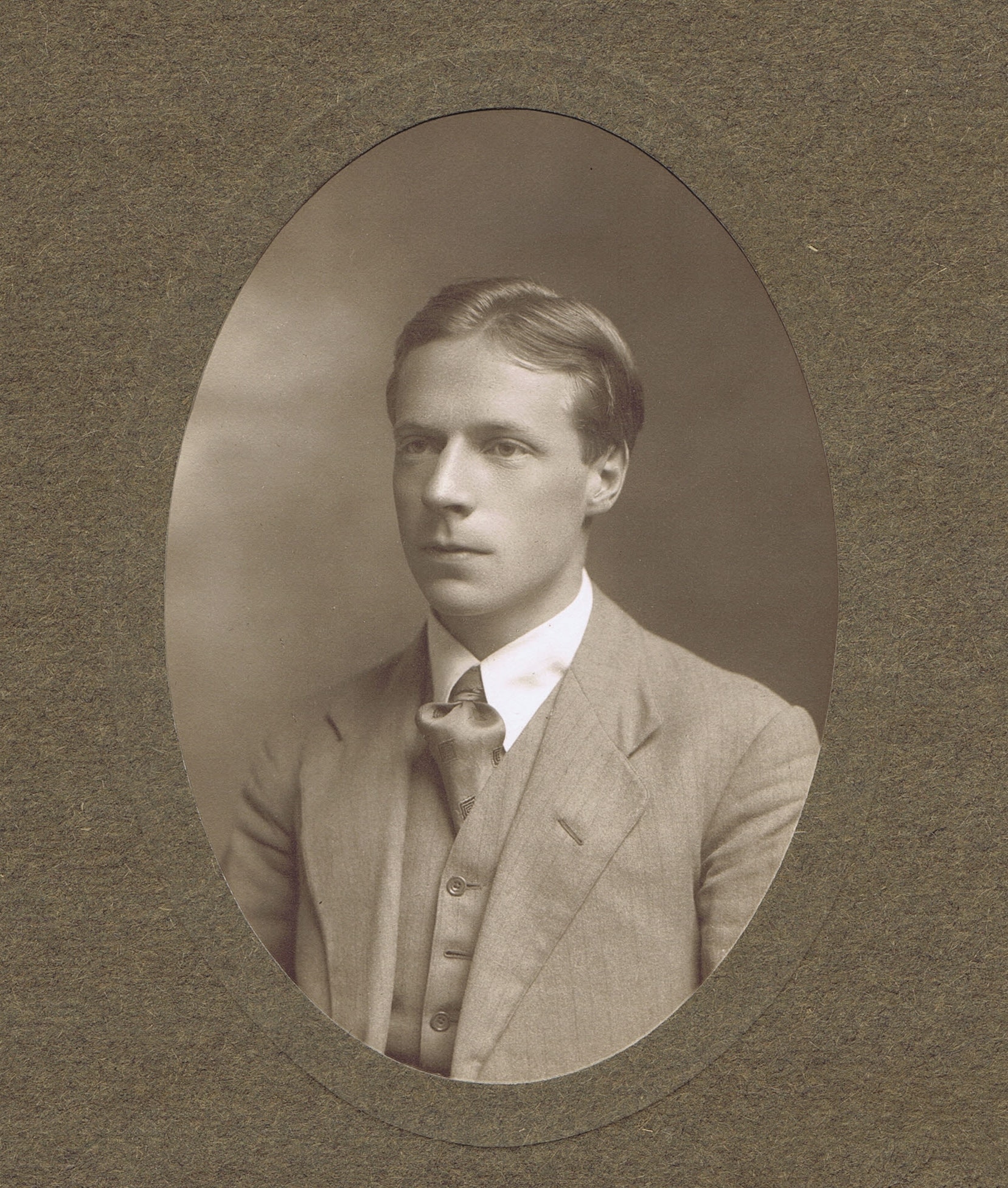
Francis (Frank) Lumsden Farquharson (1894-1915)
Lieutenant Frank Farquharson, a native of Keith in Banffshire, matriculated in 1912 as a classical scholar, and achieved first class honours in Classical Moderations in 1914. In his obituary in the Oxford Magazine Frank Farquharson was described by the College Bursar as “an attractive and most likable companion”. At the outbreak of the First World War he enlisted in the 6th Gordon Highlanders, and had been some months at the front when he was killed in action near Givenchy on 3 June 1915.
Image chosen for the remembrance volume by the Bursar at the request of the family.
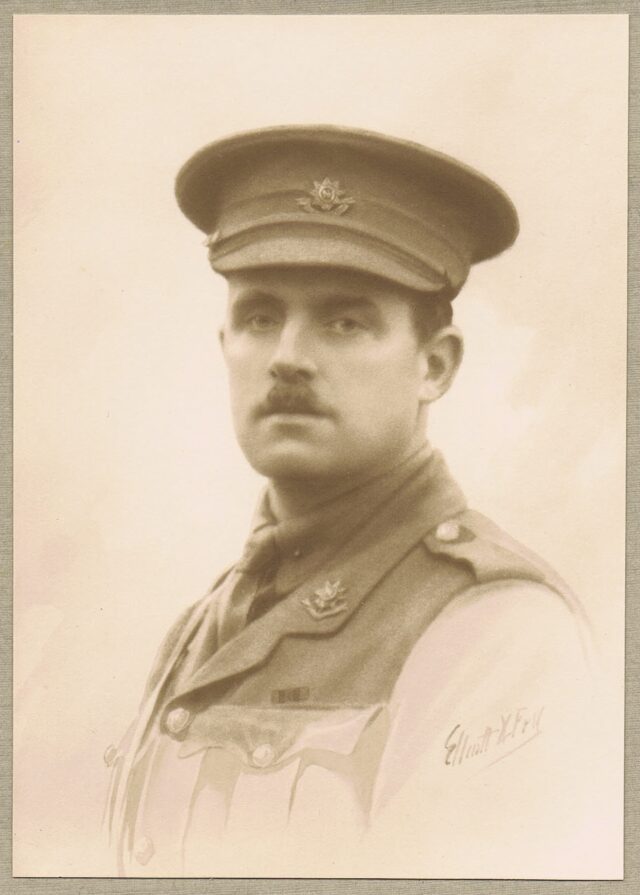
Edward Baylie Amphlett (1877-1915)
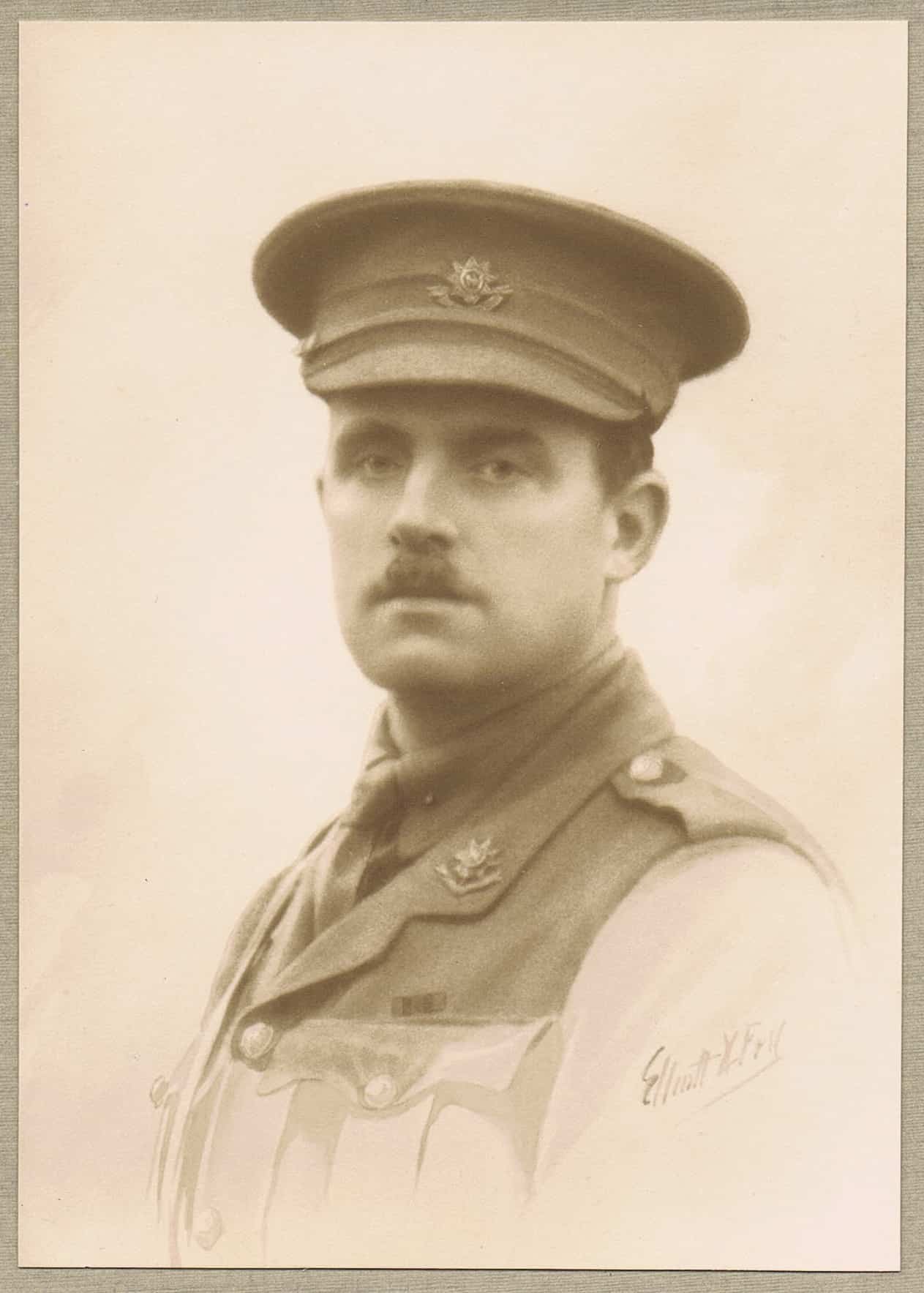
Edward Baylie Amphlett (1877-1915)
Edward (Eddie) Amphlett came from a family long associated with Worcester College; several of his ancestors had attended the College during the nineteenth century, including his father, John Amphlett (matriculated 1864). Eddie Amphlett matriculated in 1894 and during his time at the College was Captain of Boats. Following graduation he became a barrister in Oxford before fighting in the Boer War and then taking a position as Police Magistrate in Grenada in 1912. At the outbreak of the First World War he returned to England to join the armed forces and was appointed Captain in the 12th Battalion of the Worcester Regiment in January 1915. In May 1915 he joined the Mediterranean Expeditionary Force and was killed in the third battle of Krithia at Gallipoli on 4 June 1915.
Photograph chosen for the remembrance volume by his father, John Amphlett.

Frank Louis Malet (1893-1915)

Frank Louis Malet (1893-1915)
Louis Malet came up to Worcester College in 1912 from Wolverhampton Grammar School, a recipient of the recently founded Warner Exhibition. He obtained a second class in Classical Moderations. He obtained a commission in the 12th Battalion Royal Warwickshire Regiment on 7 November 1914 and sailed for the Dardanelles on 20 May 1915. Lieutenant Louis Malet was killed in action at Gallipoli on 4 June 1915 whilst leading a charge against a Turkish trench.
Unfortunately the College has no photographs of Louis Malet.
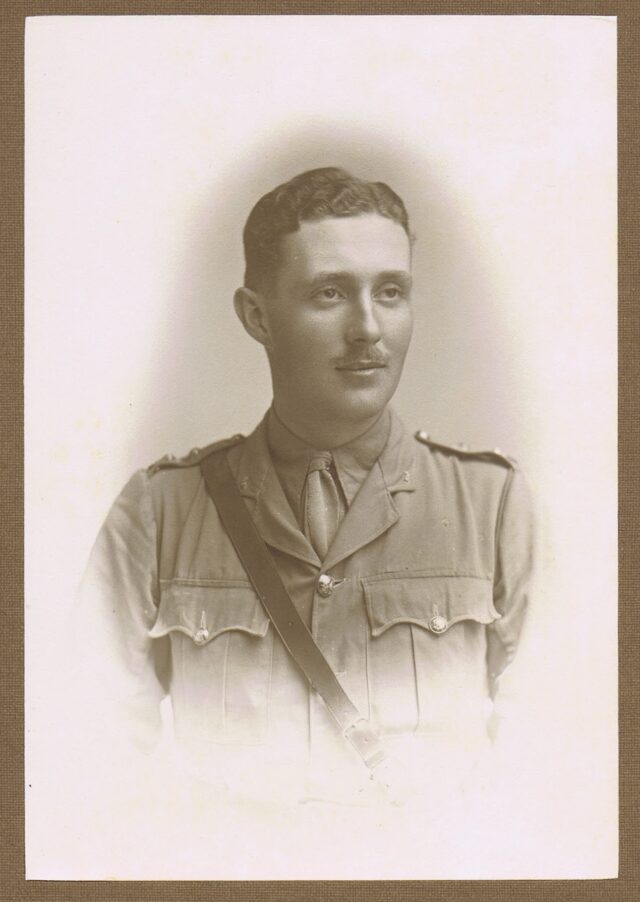
Charles Mackenzie Macrae (1893-1915)
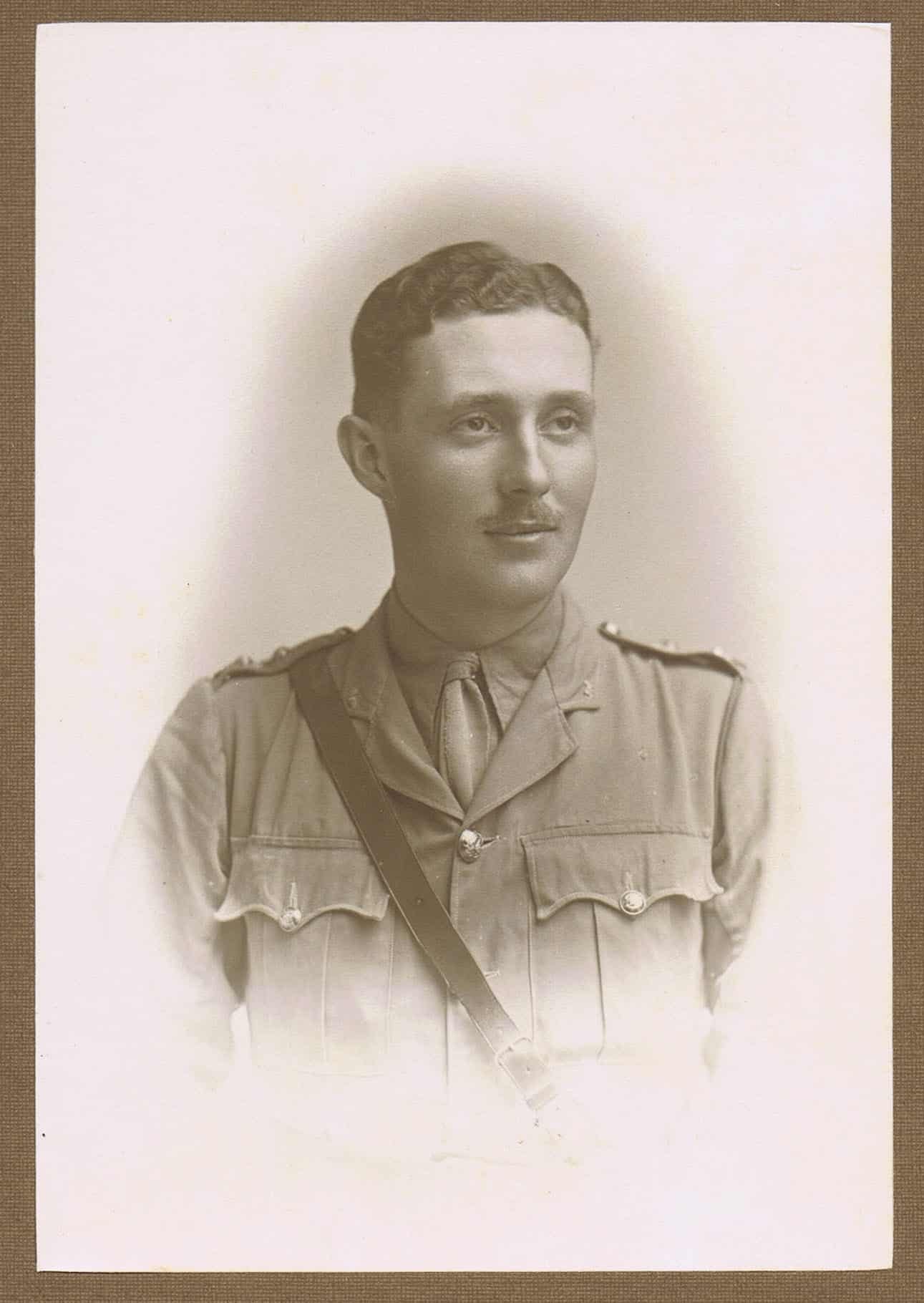
Charles Mackenzie Macrae (1893-1915)
Charles Macrae matriculated in 1913 and represented the College in shot put. On the outbreak of war he obtained a commission in the 4th Battalion, Hampshire Regiment, and sailed in October 1914 to join the Indian Expeditionary Force in the Persian Gulf. Lieutenant Charles Macrae was killed in action at a place then known as ‘Gurma Sapha’ on the banks of the Euphrates on 5 July 1915.
Photograph chosen by his parents for the remembrance volume.
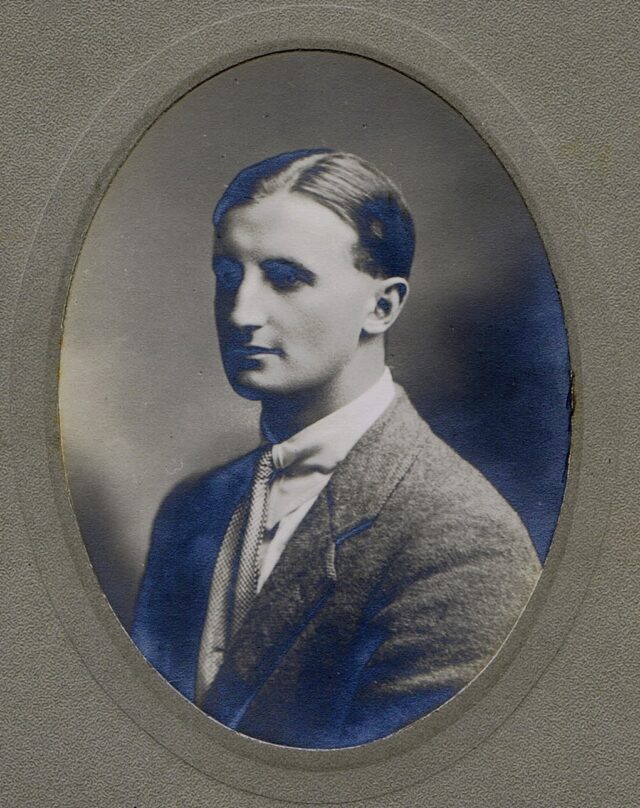
Nowell Oxland (1890-1915)
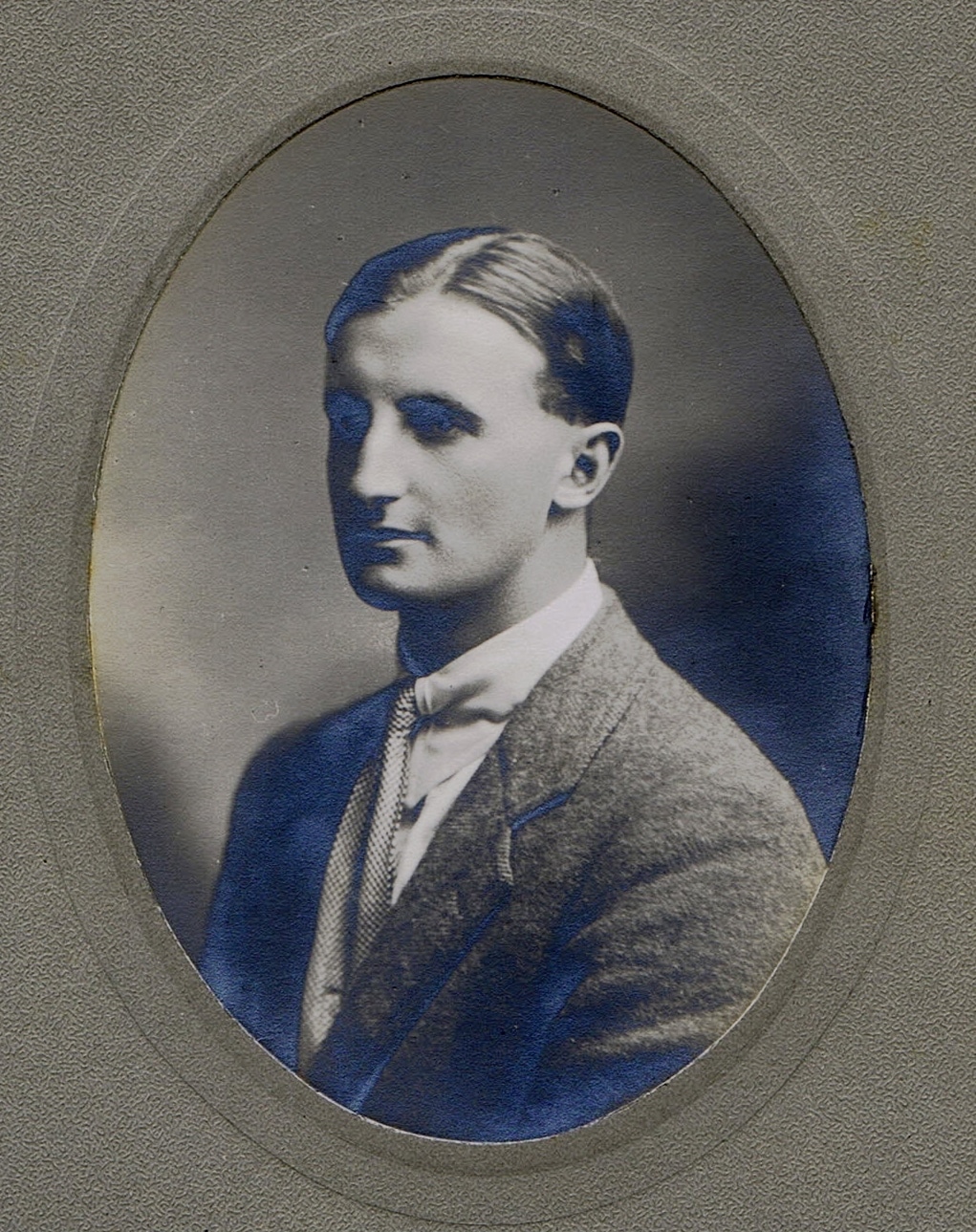
Nowell Oxland (1890-1915)
Nowell Oxland was born in Cumberland on 24 December 1890. He matriculated in 1911 and took a prominent part in the life of the College; he was captain of the College Rugby Football Team and had just been elected secretary of the Lovelace Club in Trinity Term 1914. In September 1914 he obtained a commission in the 6th Border Regiment and sailed for the Dardanelles in June 1915. Lieutenant Nowell Oxland was killed at Suvla Bay on 9 August 1915. A poem he wrote on the journey to the Dardanelles was published in The Times shortly after his death.
Photograph chosen for the remembrance volume by his mother.
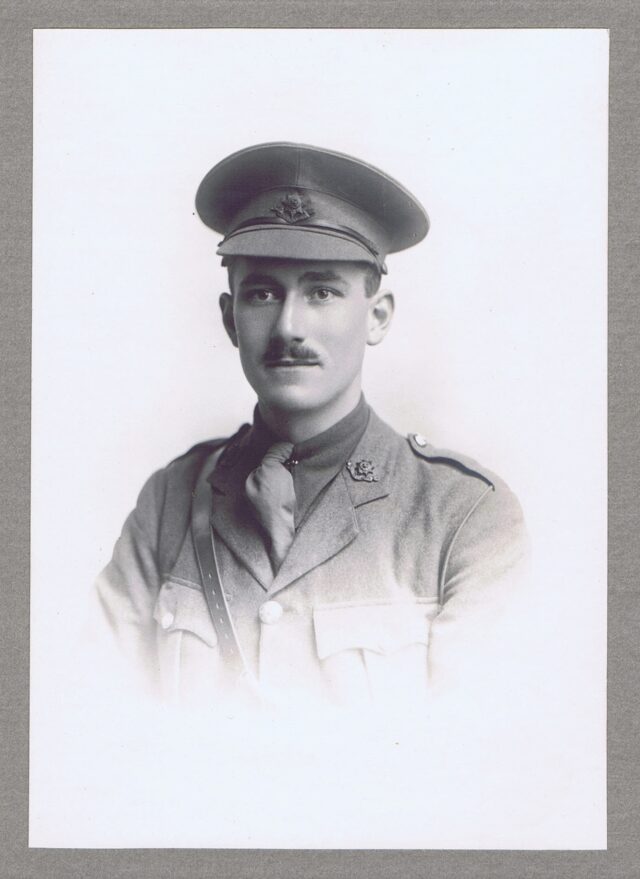
George Turney Pearson (1892-1915)
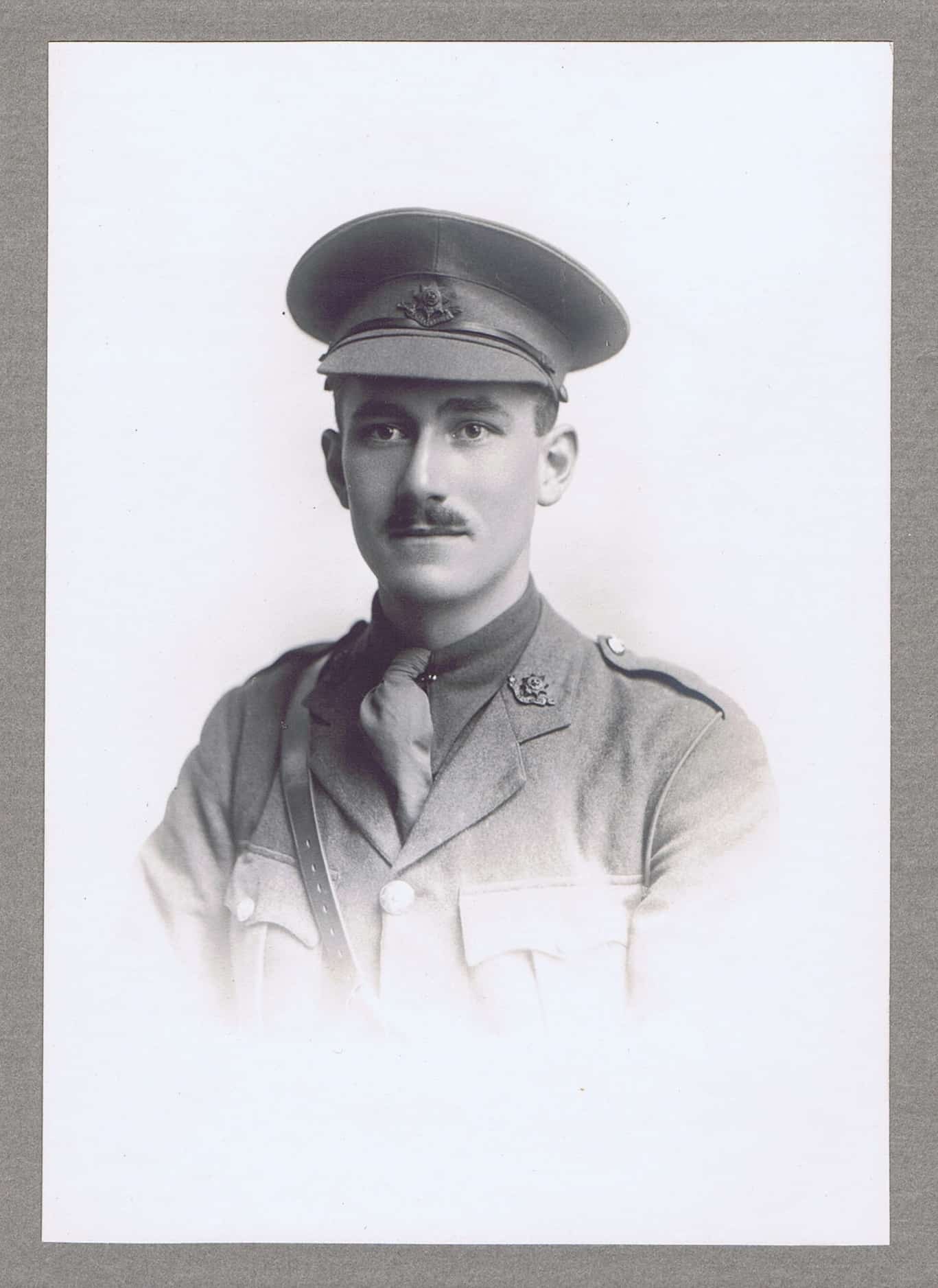
George Turney Pearson (1892-1915)
George Pearson was born at Stourbridge and educated at Repton. He matriculated in 1910 and while at Worcester was a member of the Officer Training Corps, secretary of the Oxford University Drama Society, and a member of the College Eight in 1912 and 1913. He obtained a second class in Modern Languages and after graduation entered the service of the Chartered Company of British South Africa. He returned to England on the outbreak of war and obtained a commission in the 9th (service) Battalion of the Worcestershire Regiment. Lieutenant George Pearson served in Gallipoli and was killed in action at Kabak Koyu on 12 August 1915.
Photograph chosen for the remembrance volume by his father.

Dudley Ryder Townshend (1877-1915)

Dudley Ryder Townshend (1877-1915)
Dudley Ryder Townshend was born in Lancashire in 1877 and attended Kings School Westminster. He came up to Worcester in 1896 and achieved third class honours in Mathematics in 1900. Following his graduation he was appointed Mathematical Master at Rossall School, Fleetwood in Lancashire but joined the army on the outbreak of war in 1914. Captain Dudley Townshend served in Gallipoli and was killed in action at Suvla Bay on 21 August 1915.
Unfortunately the College has no photographs of Dudley Townshend.
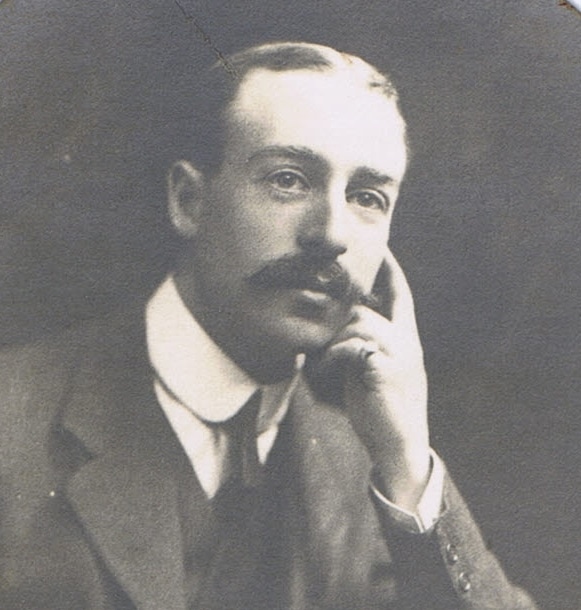
Gerald Edward Cririe Clayton (1879-1915)

Gerald Edward Cririe Clayton (1879-1915)
Gerald Clayton matriculated in 1899 and achieved first class honours in Mathematics in 1902, and second class honours in Jurisprudence in 1904, after which he was called to the Bar. On the outbreak of the war he obtained a commission as Second Lieutenant in the Royal Marines and went through the bombardment of and retreat from Antwerp (September-October 1914). Second Lieutenant Gerald Clayton died on 2 September 1915 from the effects of meningitis contracted while on duty.
Photograph chosen for the remembrance volume by his wife, Ione Clayton
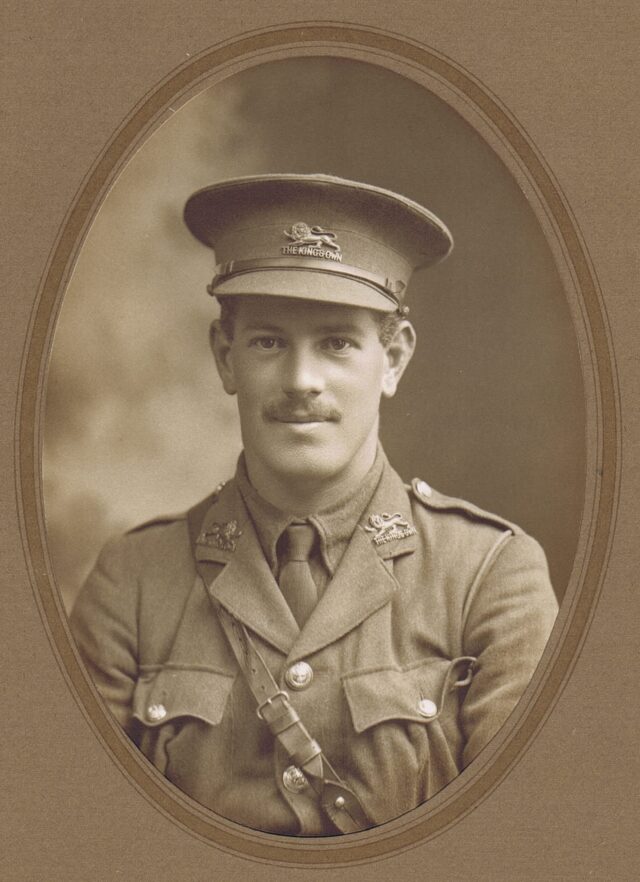
Leslie Eastwood (1885-1915)
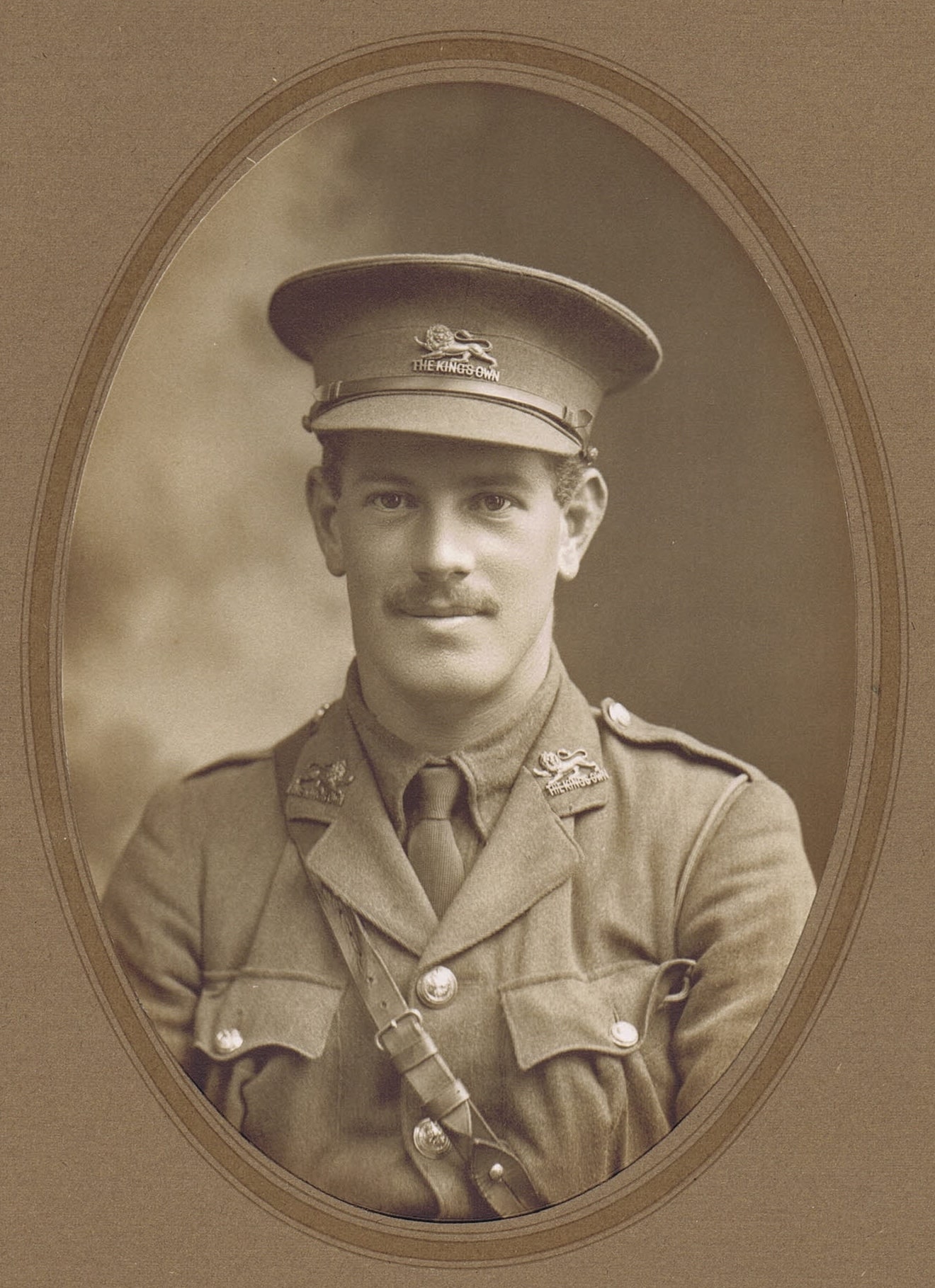
Leslie Eastwood (1885-1915)
Leslie Eastwood joined the College from King William’s College, Isle of Man, in 1904. After taking his degree he became an Assistant Master at Oxford Preparatory School but on the outbreak of war he obtained a commission in the 6th Battalion of the Royal Lancaster Regiment. He went out to Gallipoli where he was wounded by shrapnel on 29 July 1915. Second Lieutenant Leslie Eastwood was then taken to hospital in Alexandria where he died on 19 September 1915 from dysentery from which he had suffered since his arrival on the Peninsula.
Photograph chosen for the remembrance volume by his father, T Eastwood.
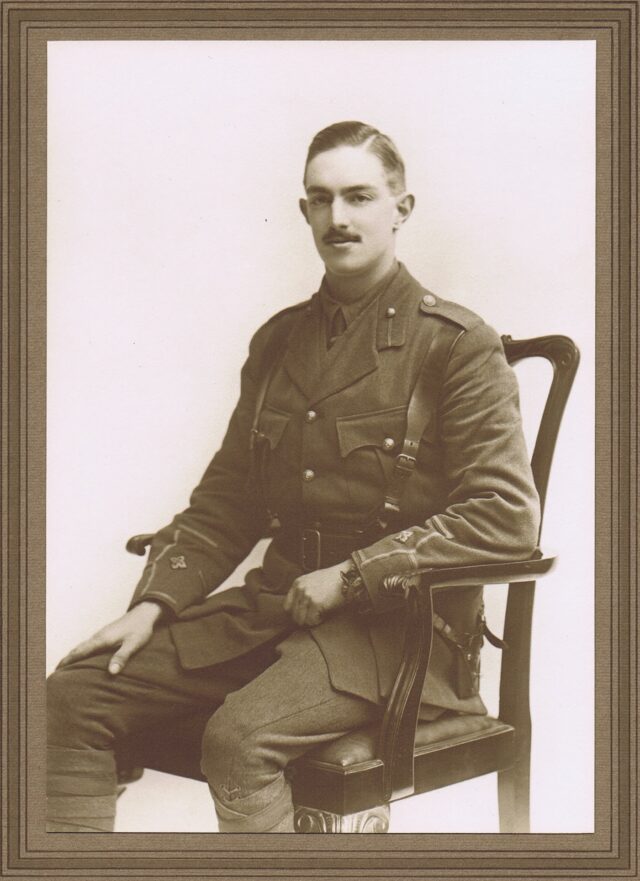
Leslie Wingfield Sweet-Escott (1893-1915)
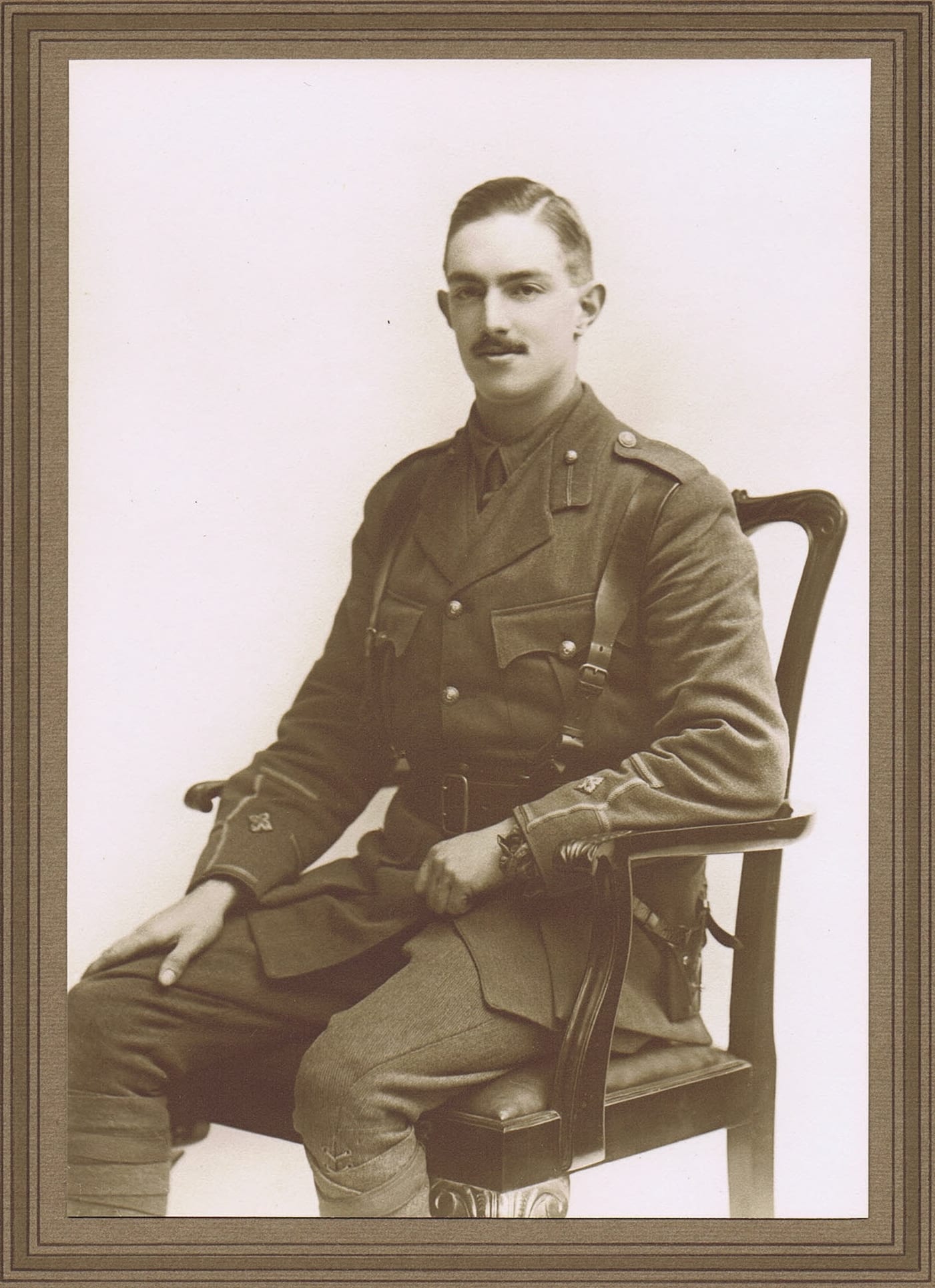
Leslie Wingfield Sweet-Escott (1893-1915)
Leslie Sweet-Escott was the youngest son of Sir Bickham Escott, Governor of Fiji and High Commissioner and Consul-General for the Western Pacific. Leslie Sweet-Escott came up to Worcester in 1913 and obtained a commission as soon as the war broke out, in the 5th Battalion Oxford and Buckinghamshire Light Infantry. He served in France and Belgium and was wounded on 11 July 1915 but remained at the front until ordered to hospital. Lieutenant Leslie Sweet-Escott was killed in action at Bellewaerde Farm, near Ypres, on 25 September 1915.
Photograph chosen for the remembrance volume by his father.
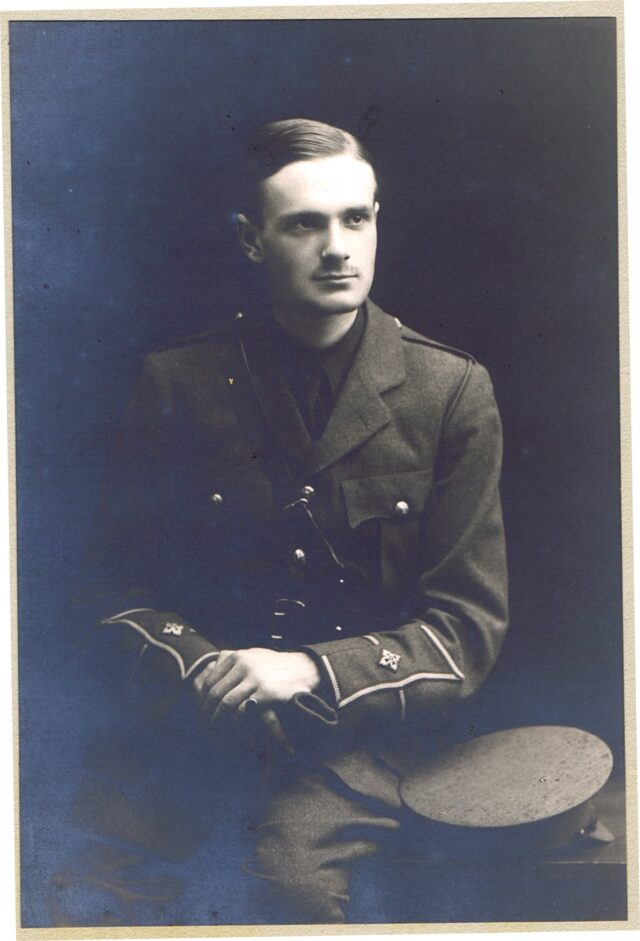
Arthur Herbert Raynes (1894-1915)
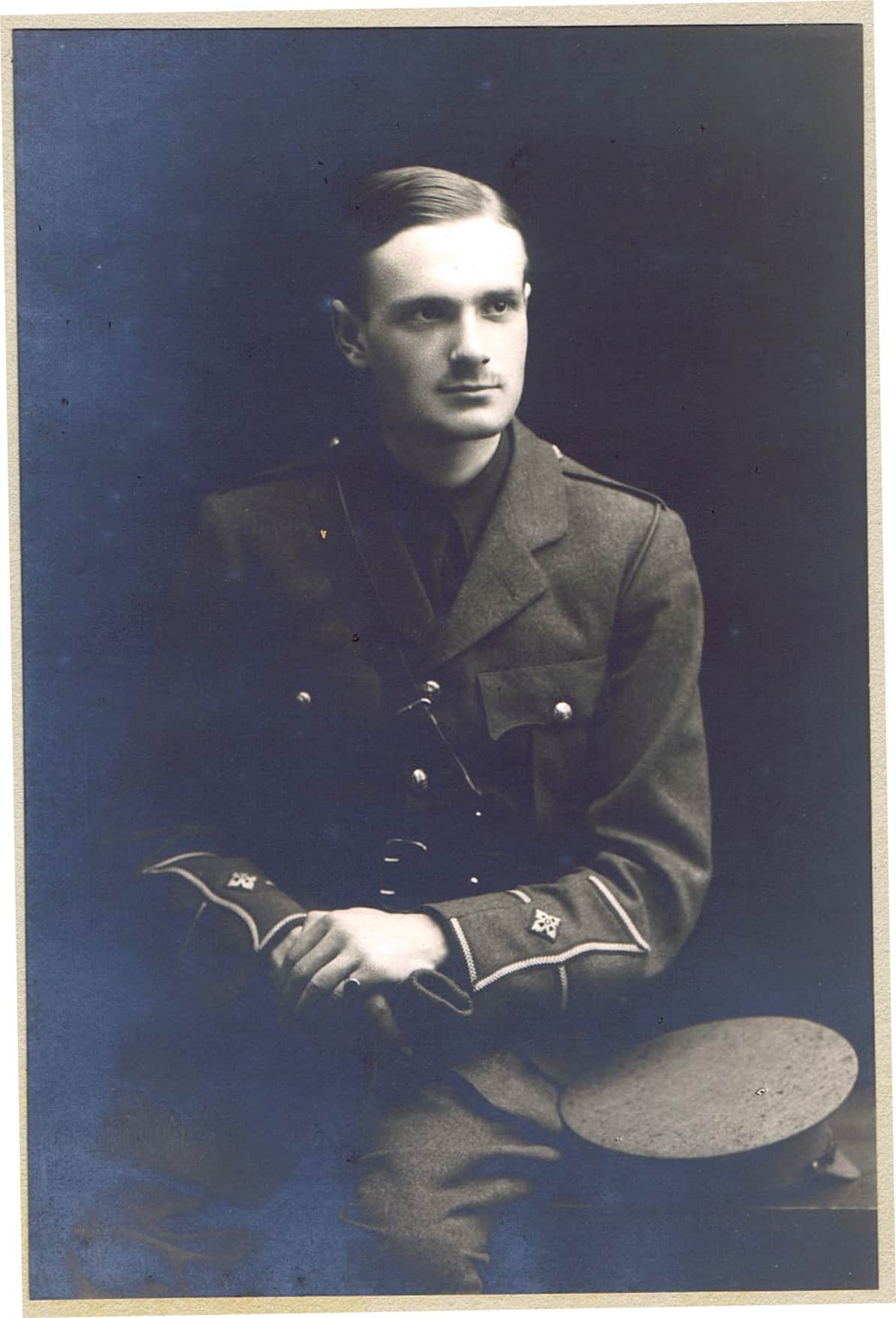
Arthur Herbert Raynes (1894-1915)
Arthur Raynes matriculated in 1913 as an open Classical Exhibitioner and won the Squire Ordination Scholarship. He joined the Oxford University Officer Training Corps in October 1914 and received his commission in November. He was gazetted Lieutenant of the 11th Essex Regiment in July 1915 and went to the front in August. Like his friend Arthur Bedells (below) Lieutenant Arthur Raynes was reported wounded and missing on 26 September 1915, the second day of the Battle of Loos. In August 1916 his family was informed that his death from wounds received in action had now been presumed.
Photograph chosen for the remembrance volume by his father.
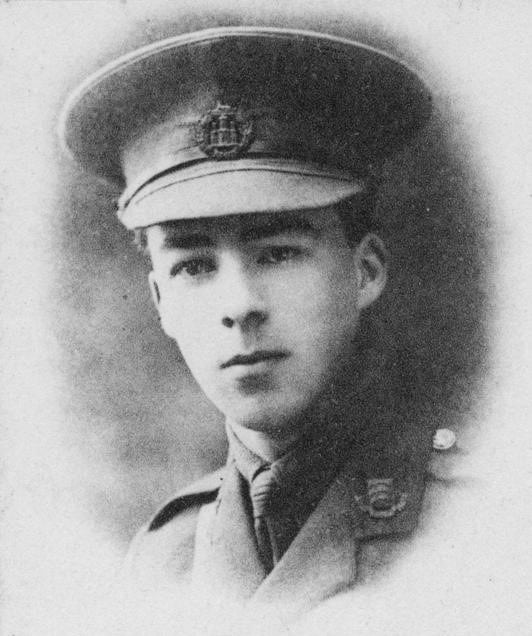
Cecil Arthur Bedells (1895-1915)

Cecil Arthur Bedells (1895-1915)
Arthur Bedells matriculated in 1914 but left the College the following term to take up a commission the 11th Essex Regiment. He served in France with his friend and contemporary Arthur Herbert Raynes (see above), also of the 11th Essex Regiment. Both Bedells and Raynes were reported missing on 26 September 1915, the second day of the Battle of Loos, and it was not until November 1917 that Second Lieutenant Arthur Bedells’ family had confirmation that he had in fact died on 26 September 1915 of wounds received in action.
Photograph from the collections of the Imperial War Museum, available online. © IWM HU 113591
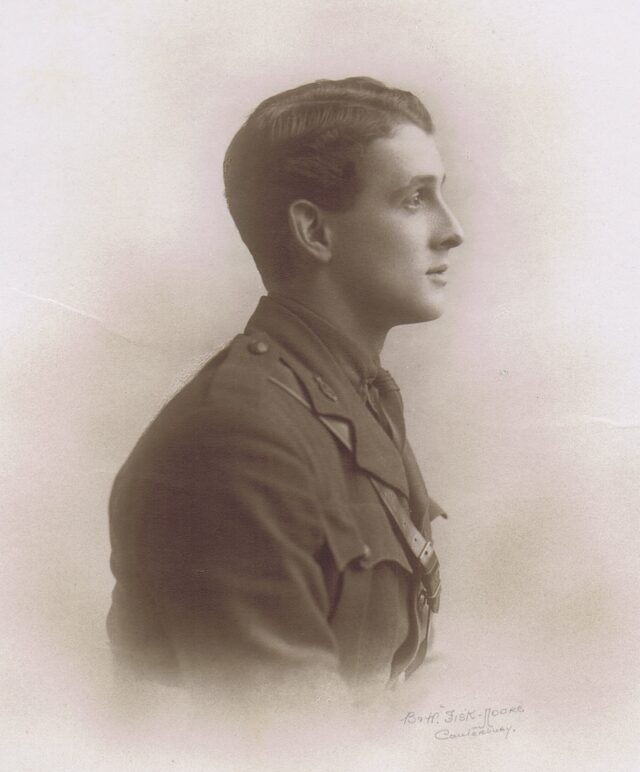
Alan Herbert Hardy (1889-1915)
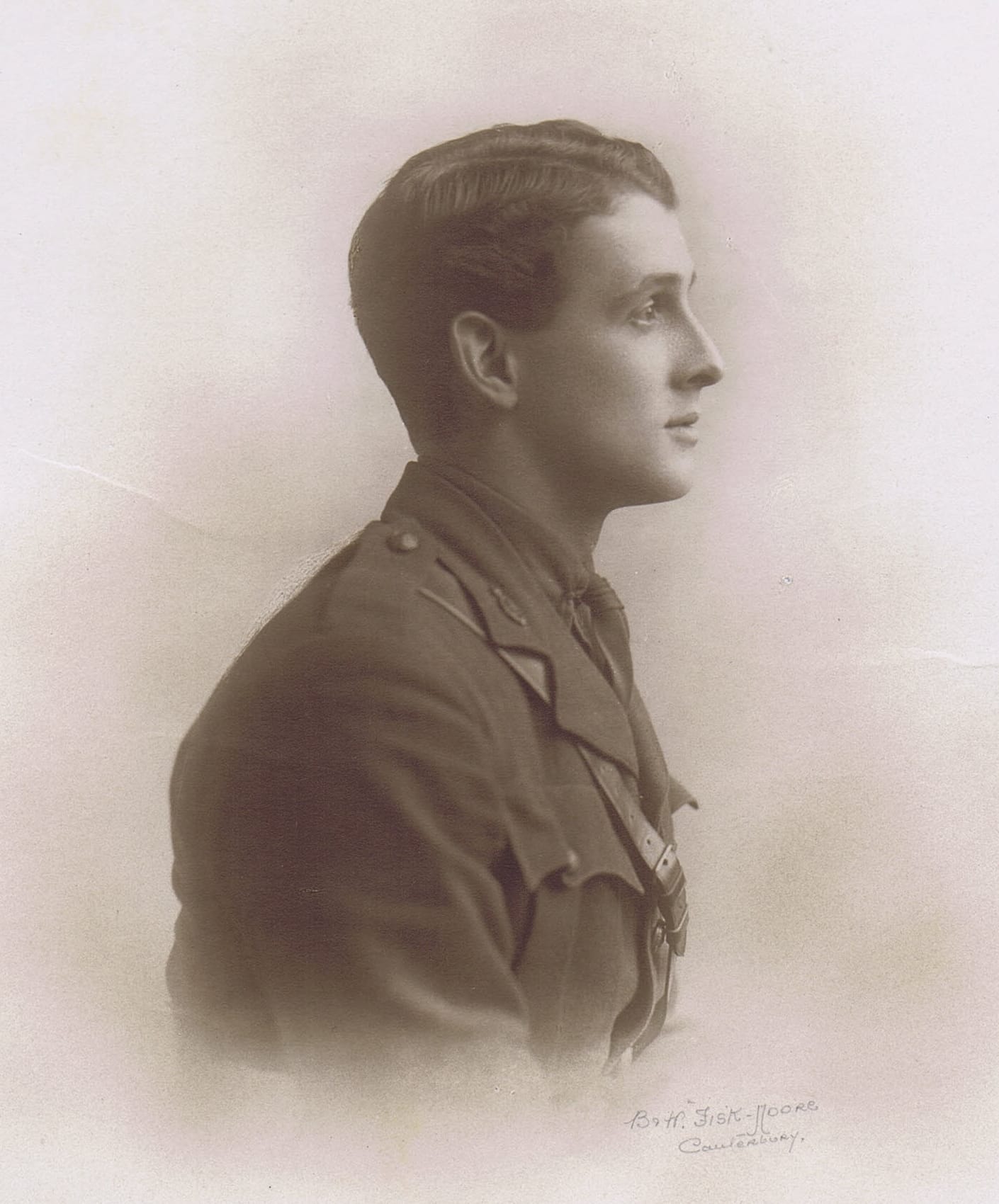
Alan Herbert Hardy (1889-1915)
Alan Hardy matriculated in 1908 and while up at Worcester represented the University in Lawn Tennis in 1910. He obtained a commission in the Royal East Kent Mounted Rifles on 19 September 1914 but in 1915 was attached to the Royal Flying Corps. Second Lieutenant Alan Hardy was killed in an aeroplane accident near Glamis, Forfarshire on 14 October 1915.
Photograph chosen for the remembrance volume by his mother, Fanny Hardy.
Members who died in 1916

Stephen Frederick Green (?-1916)

Stephen Frederick Green (?-1916)
Stephen Frederick Green was a member of staff at Worcester College in the early twentieth century, however there are very few records relating to staff in the College Archives and we do not hold any information on his time with the College. Private Stephen Green was drowned at sea on 8 January 1916 when the troopship he was sailing on, the SS Citta di Palermo, was sunk by a mine off the coast of Brindisi.
Unfortunately the College has no photographs of Stephen Frederick Green.
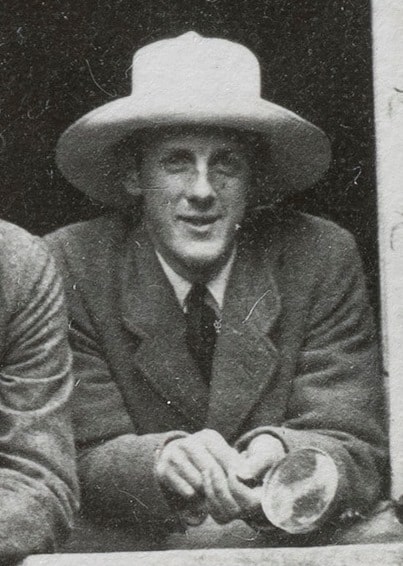
Henry Umfreville Wilkinson (1890-1916)

Henry Umfreville Wilkinson (1890-1916)
Harry Wilkinson matriculated in 1908; he was the younger brother of Cyril Wilkinson (Fellow and Dean 1919-1958) and Rothes Wilkinson (killed in action in 1914). Following his graduation Harry Wilkinson became an Assistant District Commissioner in Mlanje, Nyasaland (Malawi) and joined the King’s African Rifles in 1914. He died suddenly of typhoid fever at Mlanje on 17 March 1916.
Photograph from the papers of Sir John Masterman.
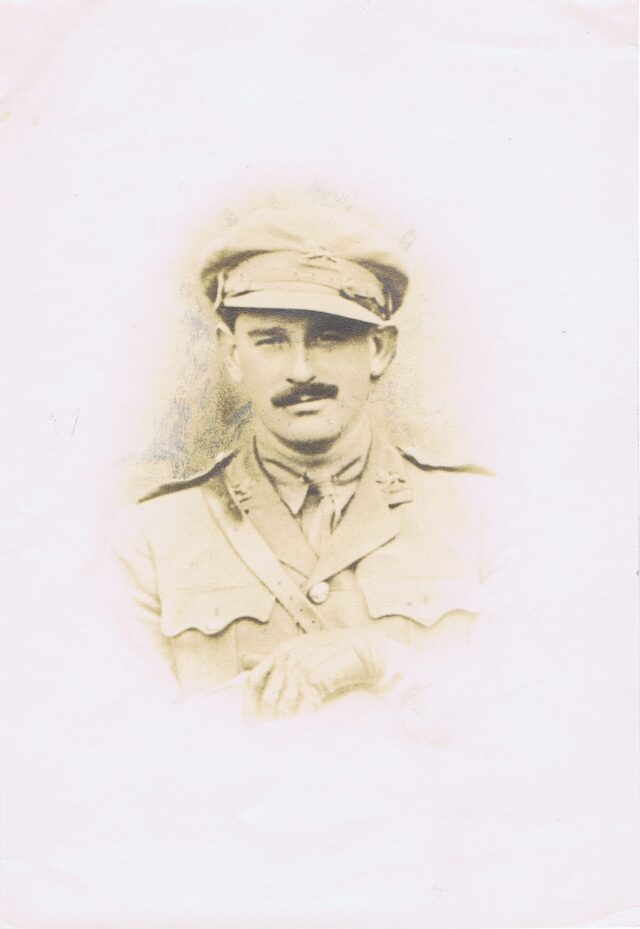
Thomas Storey Inglis Hall (c1885-1916)
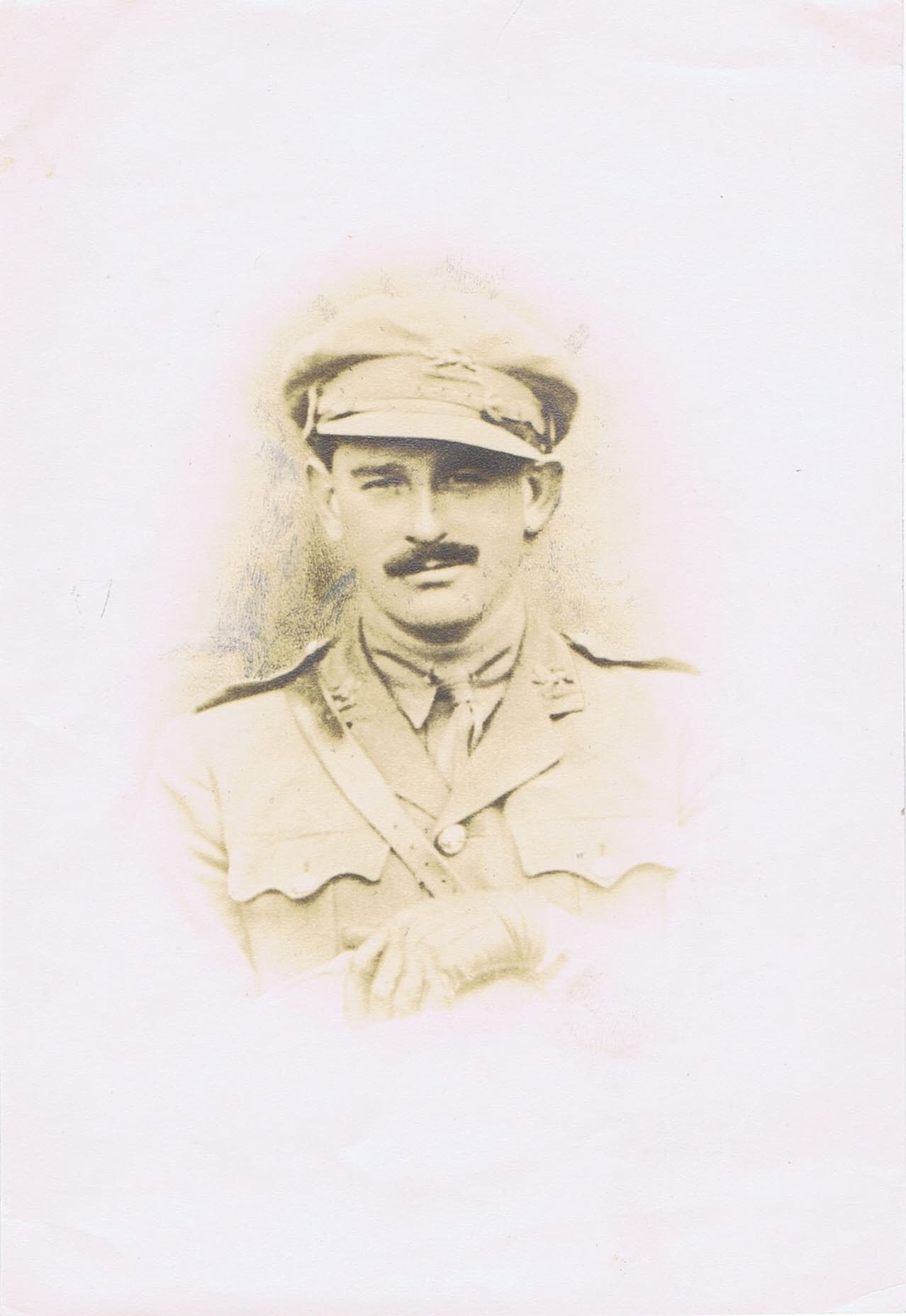
Thomas Storey Inglis Hall (c1885-1916)
Thomas Hall matriculated in 1903. After enlisting in November 1914, Thomas Hall served with the King’s Own Royal Regiment (Lancaster) in Mesopotamia. Second Lieutenant Thomas Hall was killed in action at the Battle of Sannaiyat on 9 April 1916.
Photograph chosen for the remembrance volume by his wife.

John Gurth Morgan-Owen (1884-1916)

John Gurth Morgan-Owen (1884-1916)
Gurth Morgan-Owen came to Worcester College as an Exhibitioner from Bromsgrove School in 1902 and graduated in 1904. After graduation he was a school master at St George’s College, Quilmes, Buenos Aires, until his return to Britain to take a commission in February 1915. He served in Egypt and Mesopotamia, where he was mentioned in dispatches. Second Lieutenant Gurth Morgan-Owen was killed in action at the Battle of Sannaiyat on 9 April 1916.
Unfortunately the College has no photographs of Gurth Morgan-Owen.
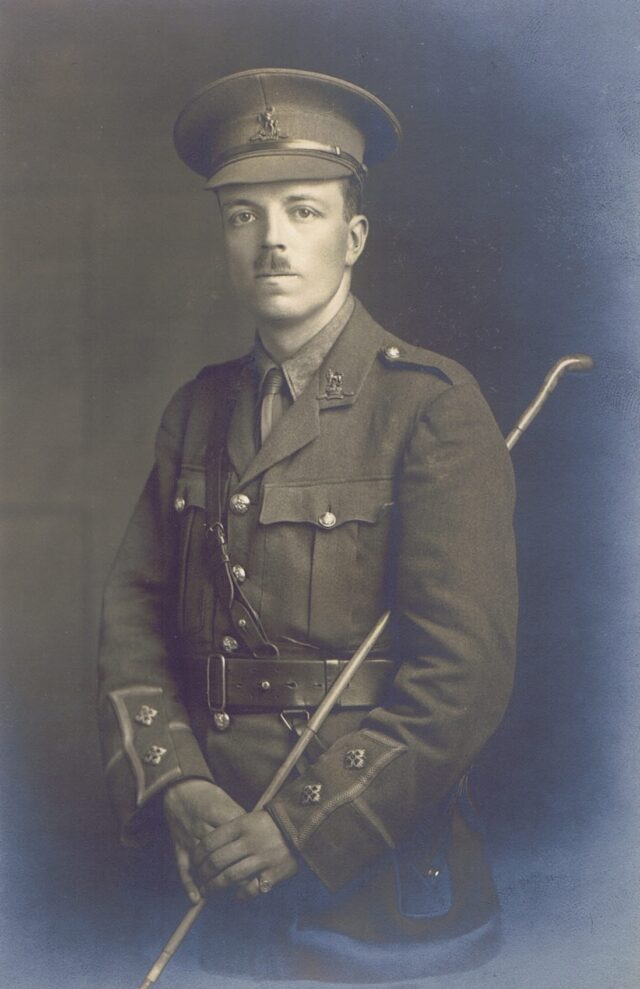
Oliffe Richmond Nicholas (1882-1916)
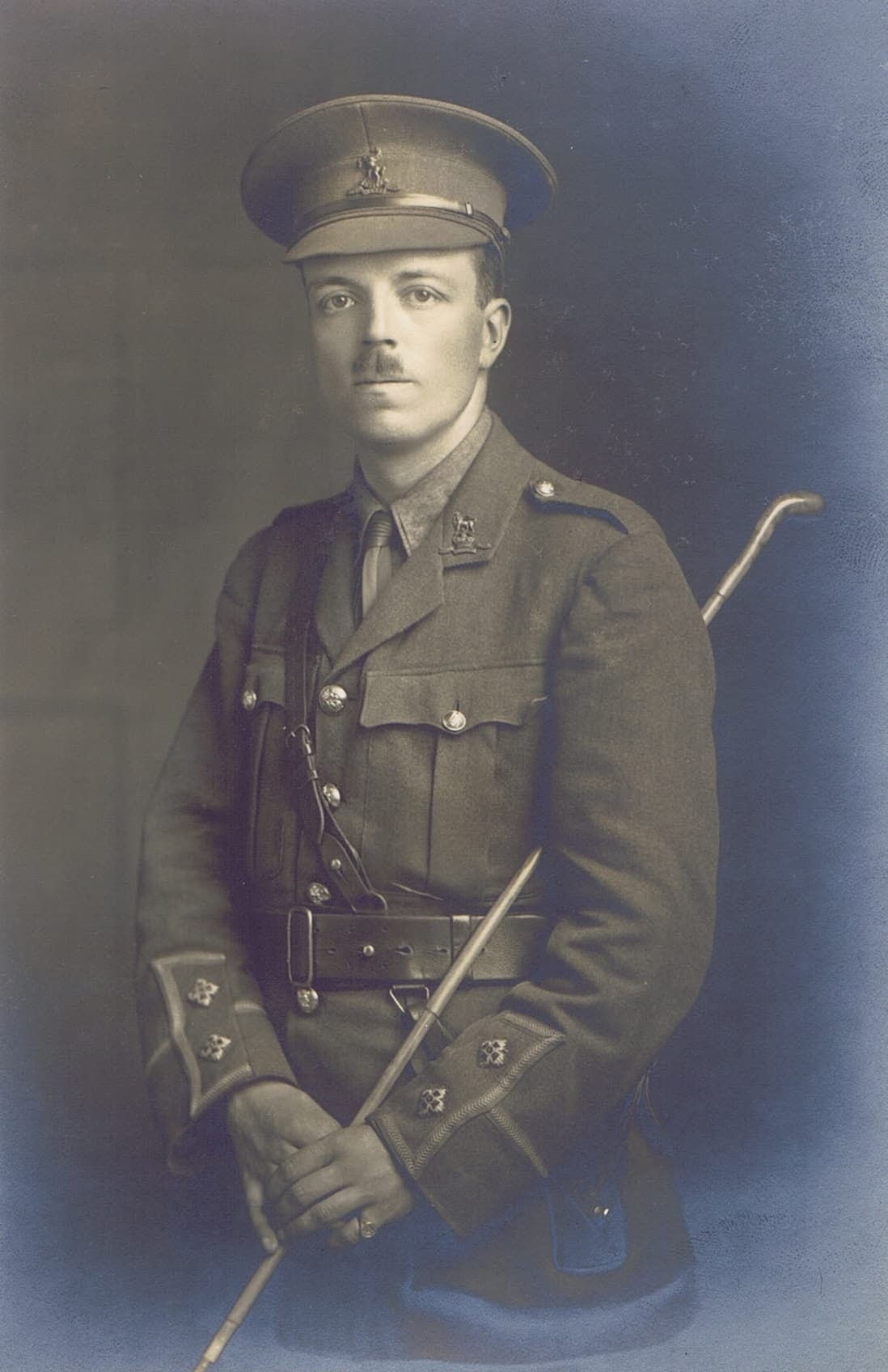
Oliffe Richmond Nicholas (1882-1916)
Oliffe Nicholas entered Worcester College in 1902 and achieved second class honours in Jurisprudence in 1906. He attended Lincoln’s Inn and was called to the Bar, taking the BCL degree in 1910. After practising for some time he returned to Oxford and was occupied with teaching law until the outbreak of war. He received his commission in August 1914 and was promoted to Lieutenant in April 1915. Lieutenant Oliffe Nicholas was killed in action on 18 April 1916 in Mesopotamia.
Photograph chosen for the remembrance volume by his family.
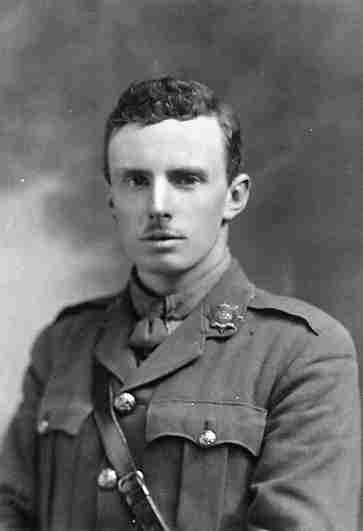
Yvo Lempriere Ellis (1894-1916)

Yvo Lempriere Ellis (1894-1916)
Yvo Ellis was born in Southampton and attended Rossall School in Lancashire where he won a scholarship in 1908. He entered Worcester College in October 1913 as a classical scholar, but the following year he applied for a commission on the outbreak of the First World War. Yvo Ellis’ service commenced in October 1914 and he joined the 13th Battalion of the Hampshire Regiment which in 1915 was stationed on the Isle of Wight. In April 1916 the regiment was sent to France and Lieutenant Yvo Ellis was subsequently killed in action near Bethune on 29 May 1916.
I am grateful to Patrick Ellis, nephew of Yvo Lempriere Ellis, for providing further information and a photograph of his uncle.

Rev Cecil Wykeham Lydall (1873-1916)

Rev Cecil Wykeham Lydall (1873-1916)
Cecil Lydall matriculated in 1892 as a Classical Exhibitioner and achieved third class honours in Classics in 1896. At the outbreak of war in 1914 he was already serving as a Chaplain in the Royal Navy and at the time of his death was Chaplain on Sir David Beatty’s flagship, HMS Lion. The Reverend Cecil Lydall was killed in action in the Battle of Jutland on 31 May 1916, five days before he was to have been married.
Unfortunately the College has no photographs of Cecil Lydall.
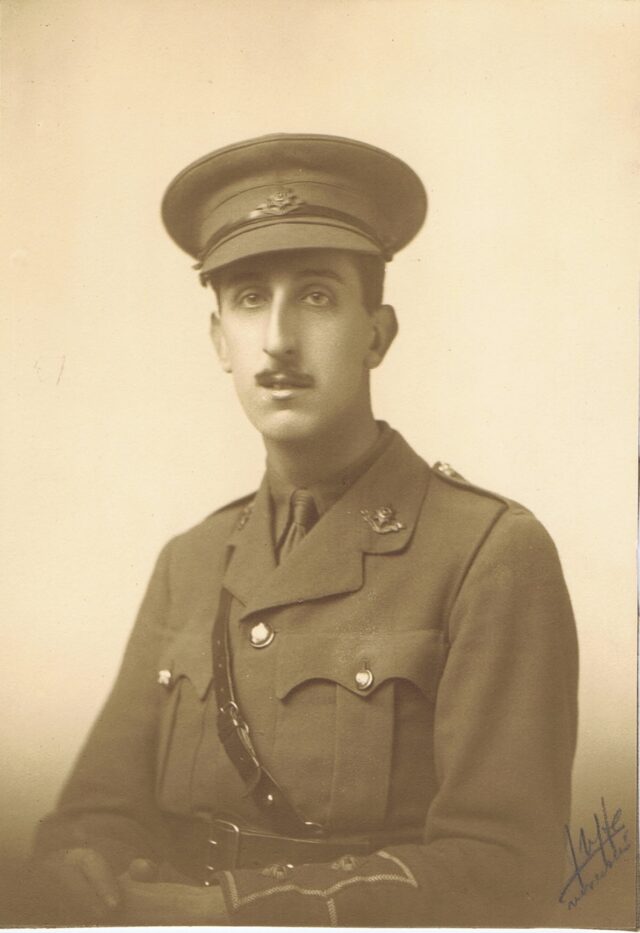
Richard Greaves Tasker (1888-1916)
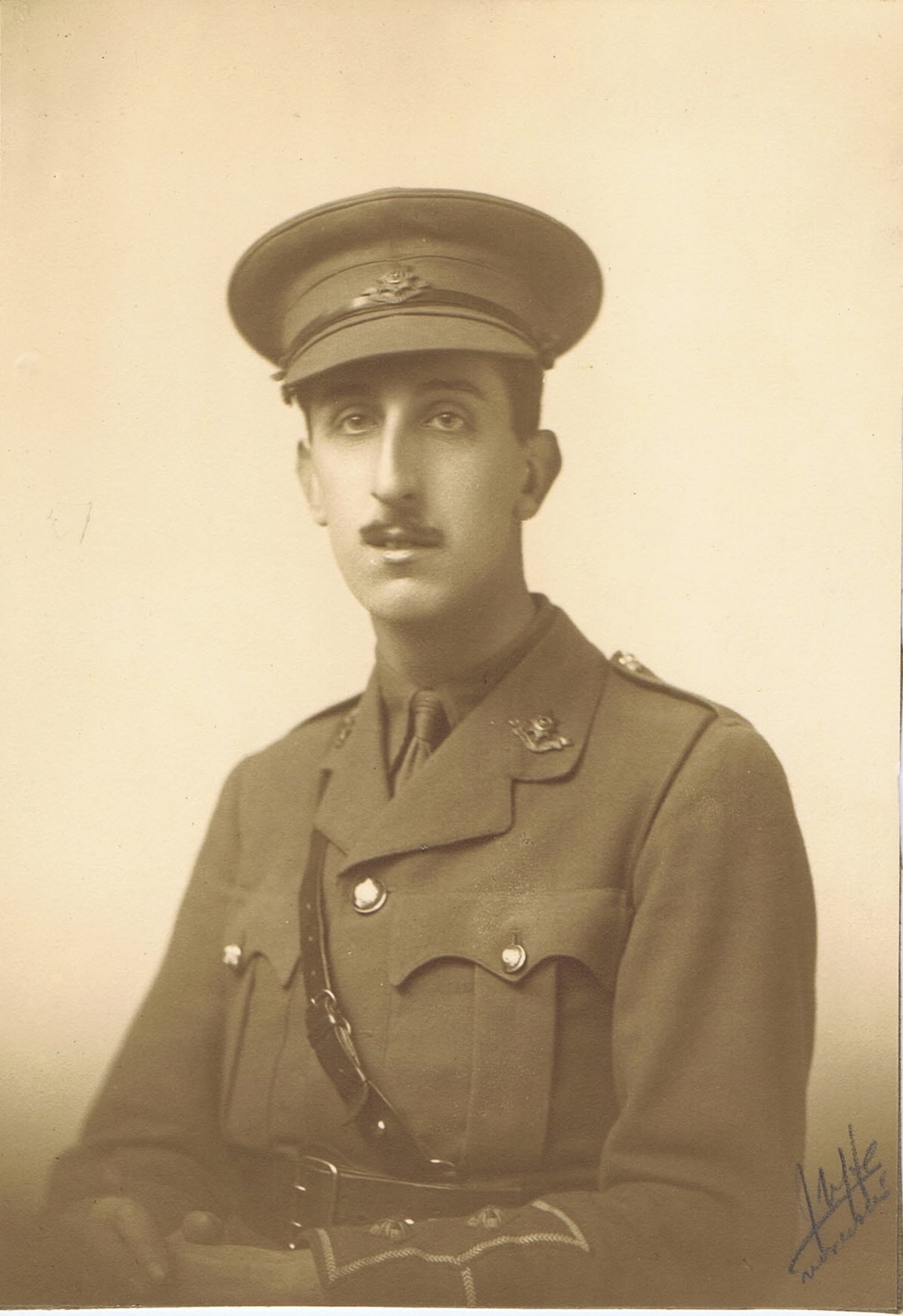
Richard Greaves Tasker (1888-1916)
Richard Tasker came to Worcester College from Bromsgrove School as a Cookes Scholar in 1908, and achieved third class honours in Classical Moderations in Jurisprudence in 1912. While up at Worcester he played in the College Rugby Football XV. In 1914 he was a student of the Inner Temple, and was about to be called to the Bar when war broke out. He applied for a commission and was gazetted to the Worcestershire Regiment. In January 1915 he married Vera Everett, and went to the front the following July. Captain Richard Tasker was killed in action at La Boisselle on 3 July 1916 during the Battle of the Somme.
Photograph chosen for the remembrance volume by his wife, Vera Tasker.

William Eddowes Green (1895-1916)
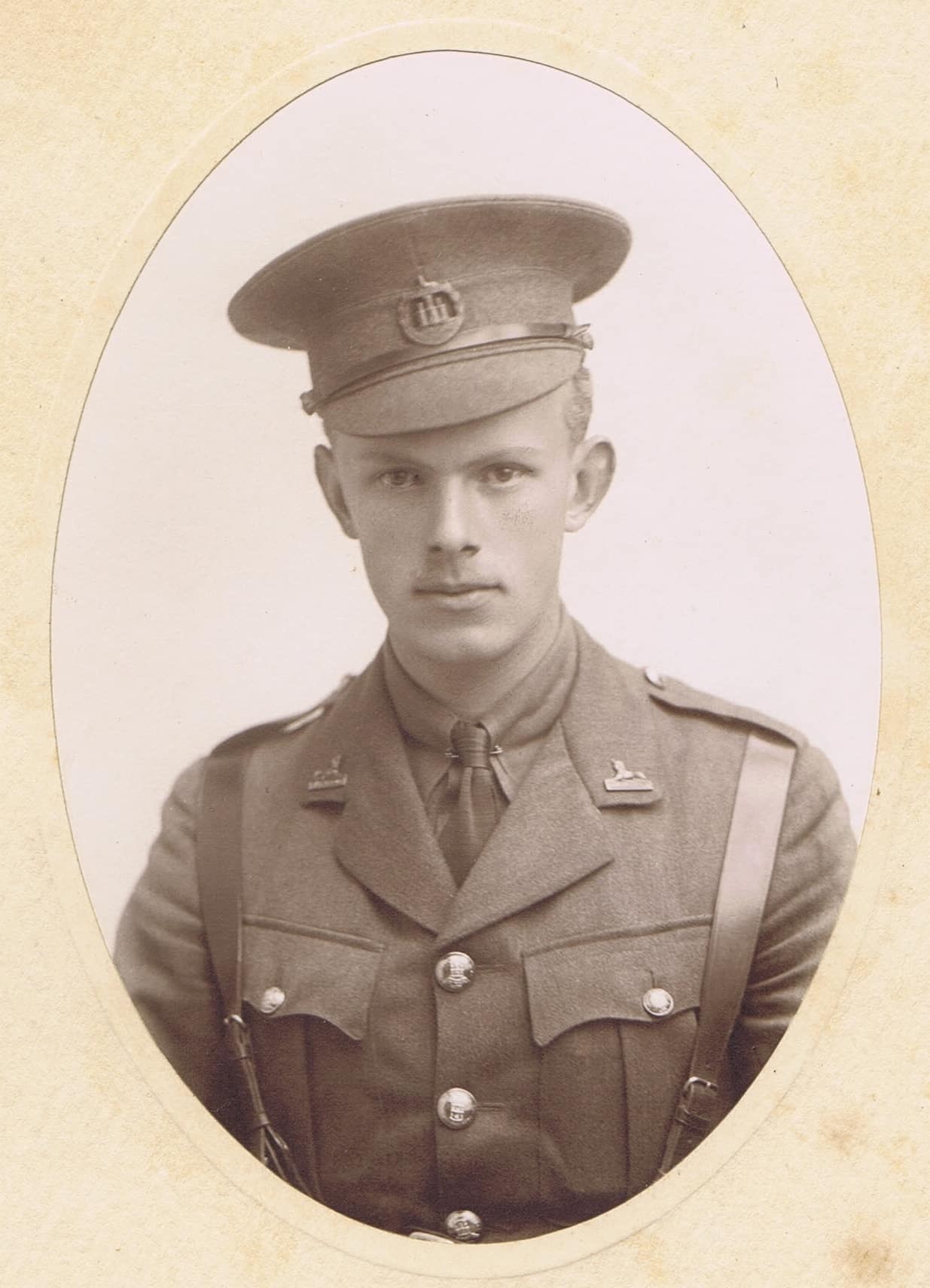
William Eddowes Green (1895-1916)
William Green was educated privately and passed the Worcester College entrance examination in June 1914, intending to matriculate in the following October. However on the outbreak of war he joined the Dorset Regiment, denying himself the opportunity to come into residence, and was sent to the front in July 1915. Captain William Green died on 6 July 1916 of wounds received 1 July 1916 in the Battle of the Somme.
Photograph chosen for the remembrance volume by his father, Herbert Green.

Guy Danvers Mainwaring Crossman (1885-1916)

Guy Danvers Mainwaring Crossman (1885-1916)
Guy Crossman was born in 1885, the younger son of the Reverend Charles Danvers Crossman who had been a Cookes Fellow of the College from 1874-1876. Guy Crossman matriculated in 1904 and achieved third class honours in Literae Humaniores in 1908. Following his graduation Crossman was a schoolmaster until October 1914 when he enlisted and obtained a commission in the Welsh Regiment. Second Lieutenant Guy Crossman was killed in action at Mametz Wood on 10 July 1916 during the Battle of the Somme.
Unfortunately the College has no photographs of Guy Crossman.
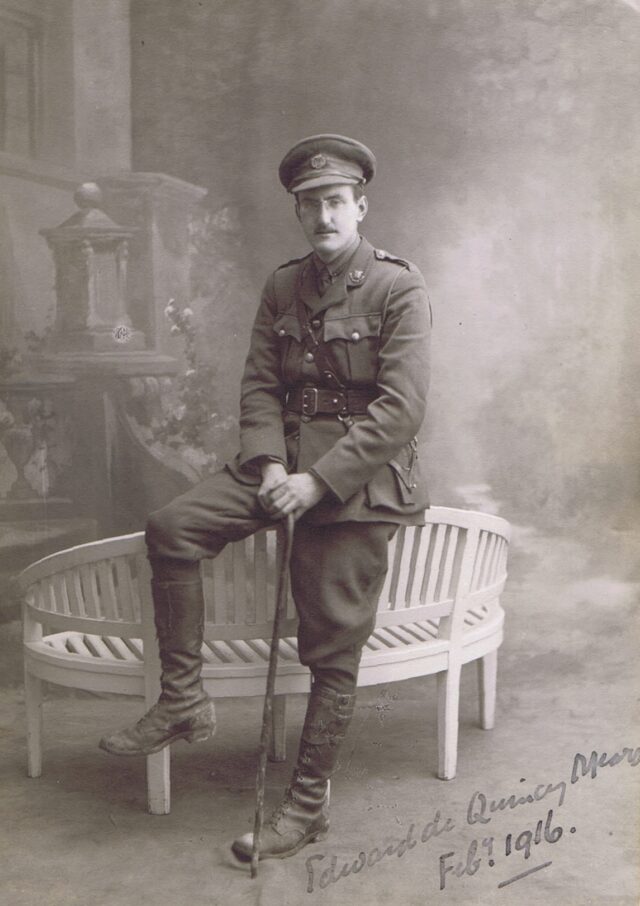
Edward de Quincey Mears (1892-1916)

Edward de Quincey Mears (1892-1916)
Edward Mears was educated at Milton Abbas Grammar School and at Llandovery College before he was awarded an Eaton Scholarship in Classics at Worcester College in 1911. He took second class honours in Classical Moderations in 1913 and was a member of the University Officer Training Corps during his time at Oxford. He enlisted in September 1914 and was given a commission in the 10th Battalion of the Essex Regiment in December of that year. After seven months at the front he took part in the first day of the Battle of the Somme (1 July 1916) when his platoon captured the German position allotted to them. Second Lieutenant Edward Mears was killed in action at Trônes Wood on 14 July 1916 during the Battle of the Somme.
Photograph chosen for the remembrance volume by his father, Edward Mears.
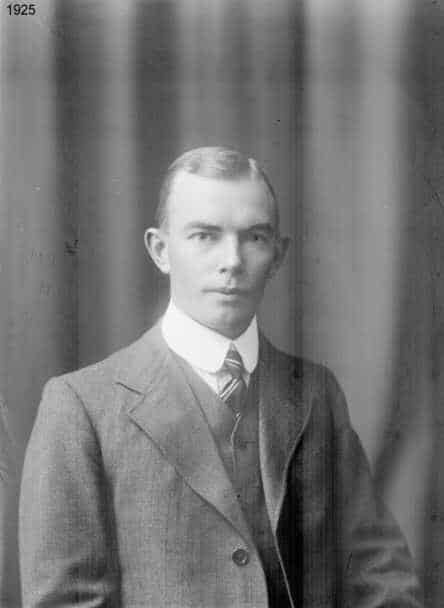
Frederick Walton Golightly (1890-1916)

Frederick Walton Golightly (1890-1916)
Frederick Golightly was born at Graaff-Reinet, South Africa in 1890 and took his first BA at Cape University in 1910. He entered Worcester College in 1911 as a Rhodes Scholar and achieved first class honours in Engineering in 1913. During his time at Oxford he played hockey for the College and was a keen boxer. Frederick Golightly was appointed a Lecturer in Applied Mathematics at Victoria College, Stellenbosch, but at the outbreak of war he resigned the post in order to enlist in the South African Heavy Artillery and sailed for England with their first contingent on 28 August 1915. Gunner Frederick Golightly was killed in action near Thiepval on 21 July 1916 during the Battle of the Somme.
Photograph reproduced by kind permission of Stellenbosch University.
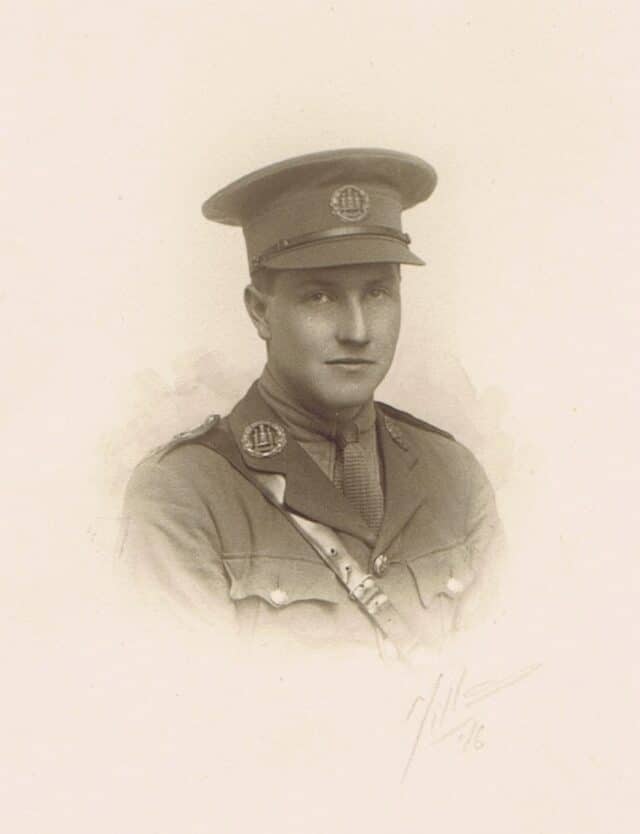
Edmund Downes Badcock (1893-1916)
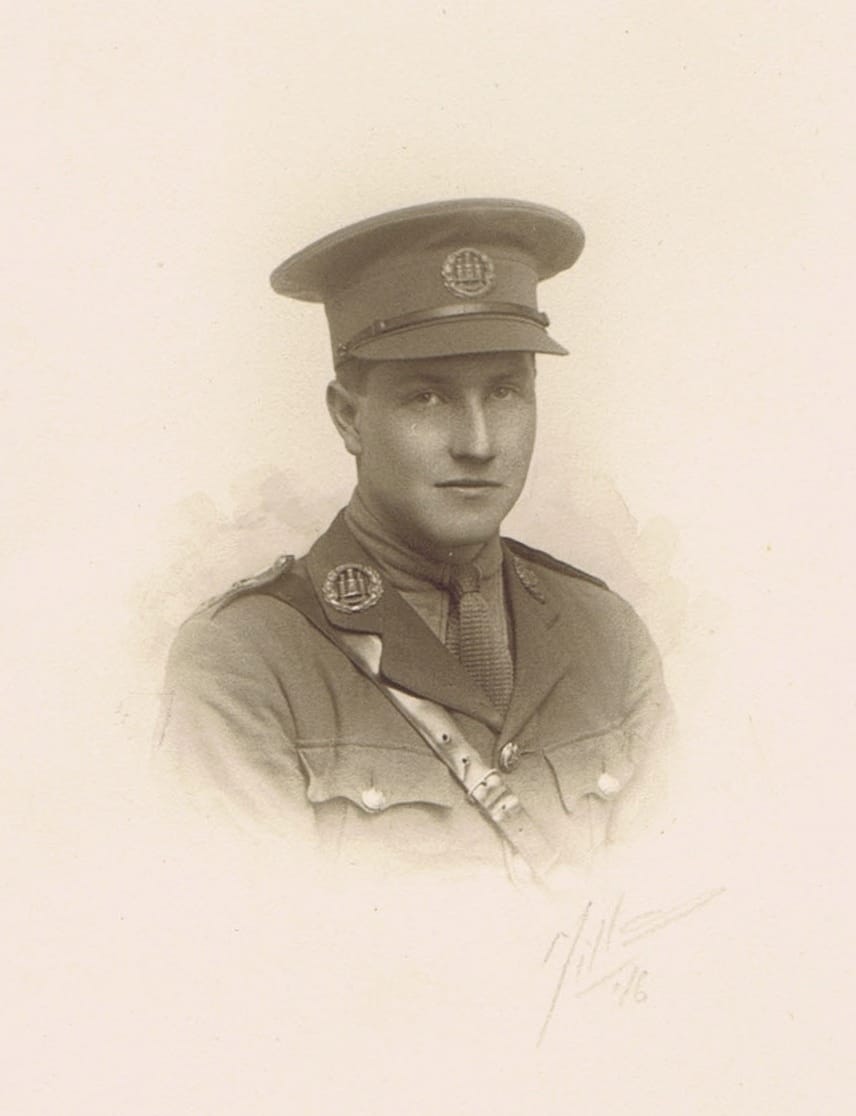
Edmund Downes Badcock (1893-1916)
Edmund Badcock was educated at Radley College before coming up to Worcester College in 1912, where he studied history and rowed in the College Eight in 1913 and 1914. His sister Lucy wrote after his death that “Edmund was interested in and enthusiastic for everything concerning Worcester College, where he was very happy for his two years of residence”. He was a member of the Oxford University Officer Training Corps and took a commission in August 1914, serving with the 1st Battalion of the Northamptonshire Regiment in France. Lieutenant Edmund Badcock was killed in action near Contalmaison on 22 July 1916 during the Battle of the Somme.
Photograph chosen for the remembrance volume by the family of Edmund Badcock.
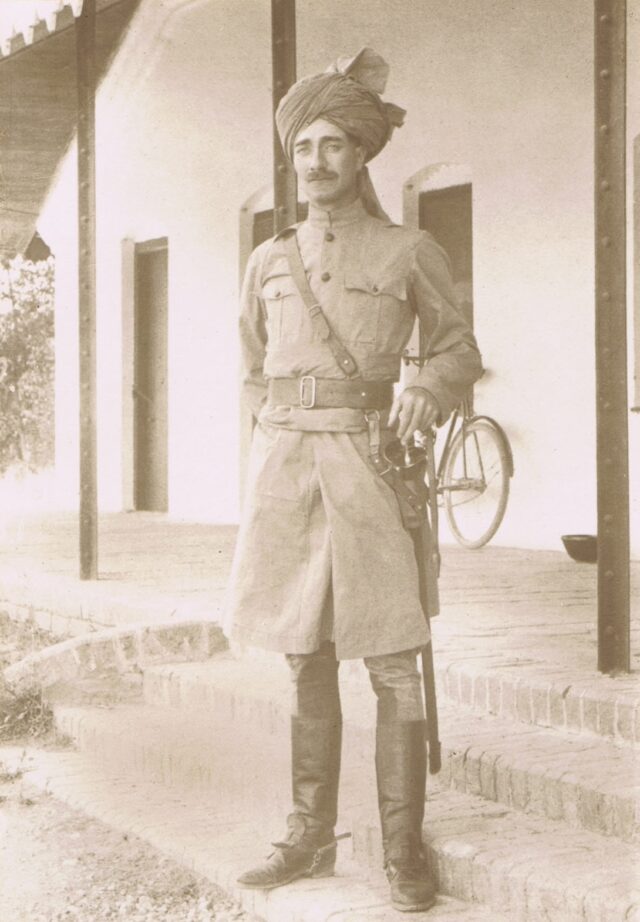
Alexander Bell Duncan (1885-1916)
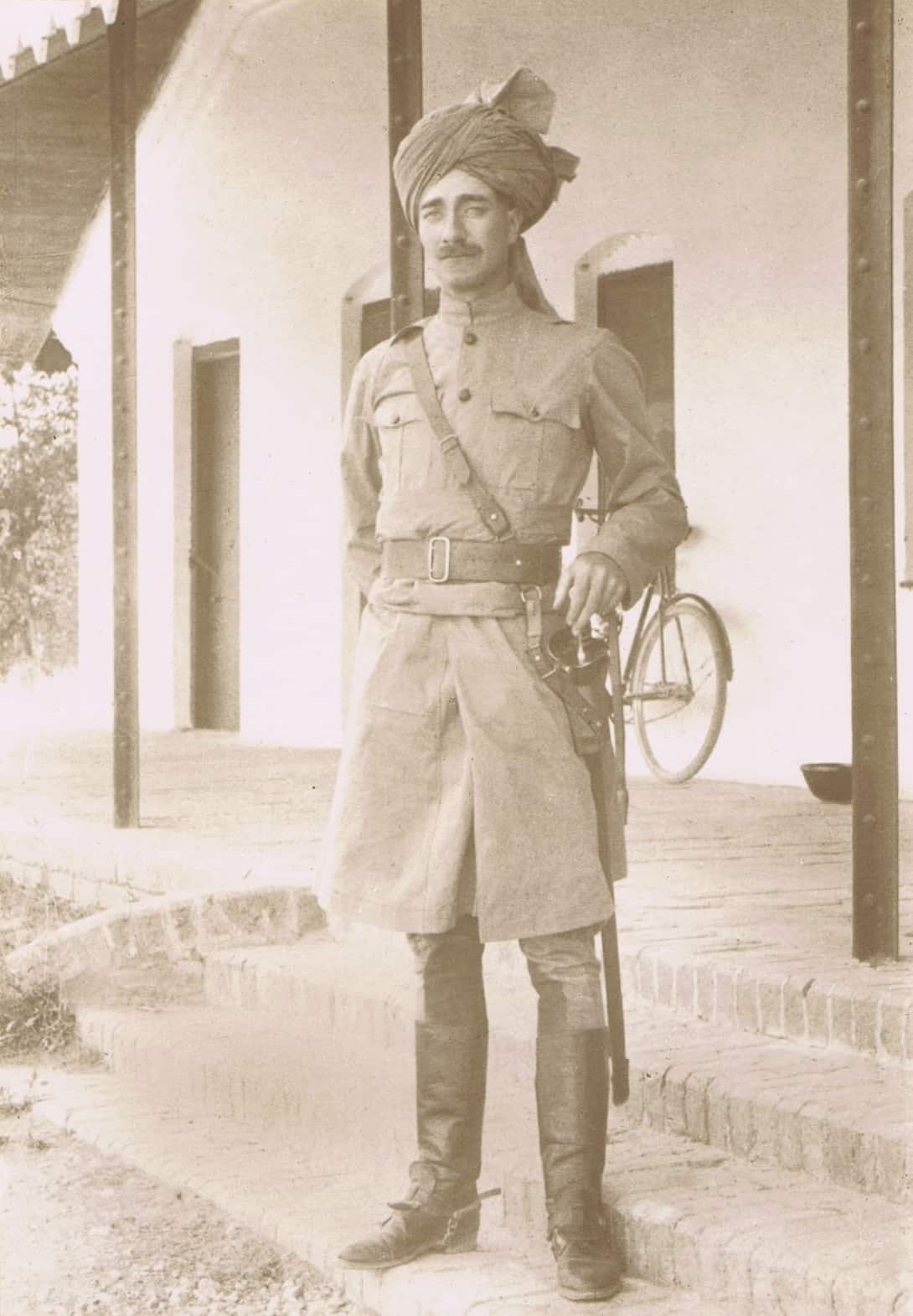
Alexander Bell Duncan (1885-1916)
Alexander Duncan came up to Worcester in 1903 as a Classical Exhibitioner and achieved third class honours in Literae Humaniores in 1907. Following his graduation he entered the Indian Civil Service and at an early stage of the First World War he obtained a commission in the Indian Cavalry. Second Lieutenant Alexander Duncan died on 5 August 1916 of wounds received on the border with Baluchistan.
Photograph chosen for the remembrance volume by his brother, W. O. Duncan.
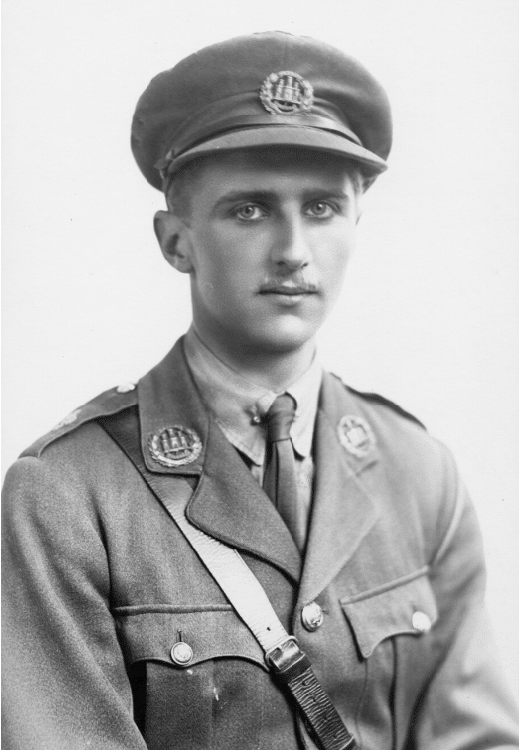
Charles Fabian Saunders (1895-1916)

Charles Fabian Saunders (1895-1916)
Charles Fabian Saunders matriculated in 1913 and joined the University Officer Training Corps during his time at the College. He enlisted at the outbreak of the war and obtained a commission with the Northamptonshire Regiment. During his time at the Officers’ Training School in Oxford he distinguished himself as a runner at two inter-regimental sports meetings. Second Lieutenant Charles Saunders served at Loos in 1915 where he was wounded by shrapnel, and had only returned to the Front on 13 July 1916 before he was killed in action at Guillemont on 18 August 1916 during the Battle of the Somme.
I am grateful to Max Garrety, great-nephew of Charles Saunders, for providing the photograph.
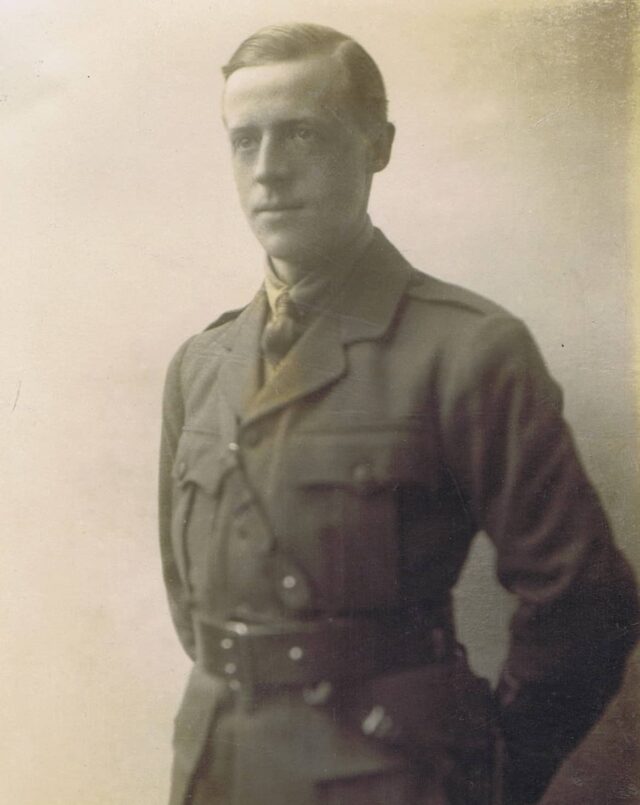
Charles Robert Crighton Maltby (1890-1916)
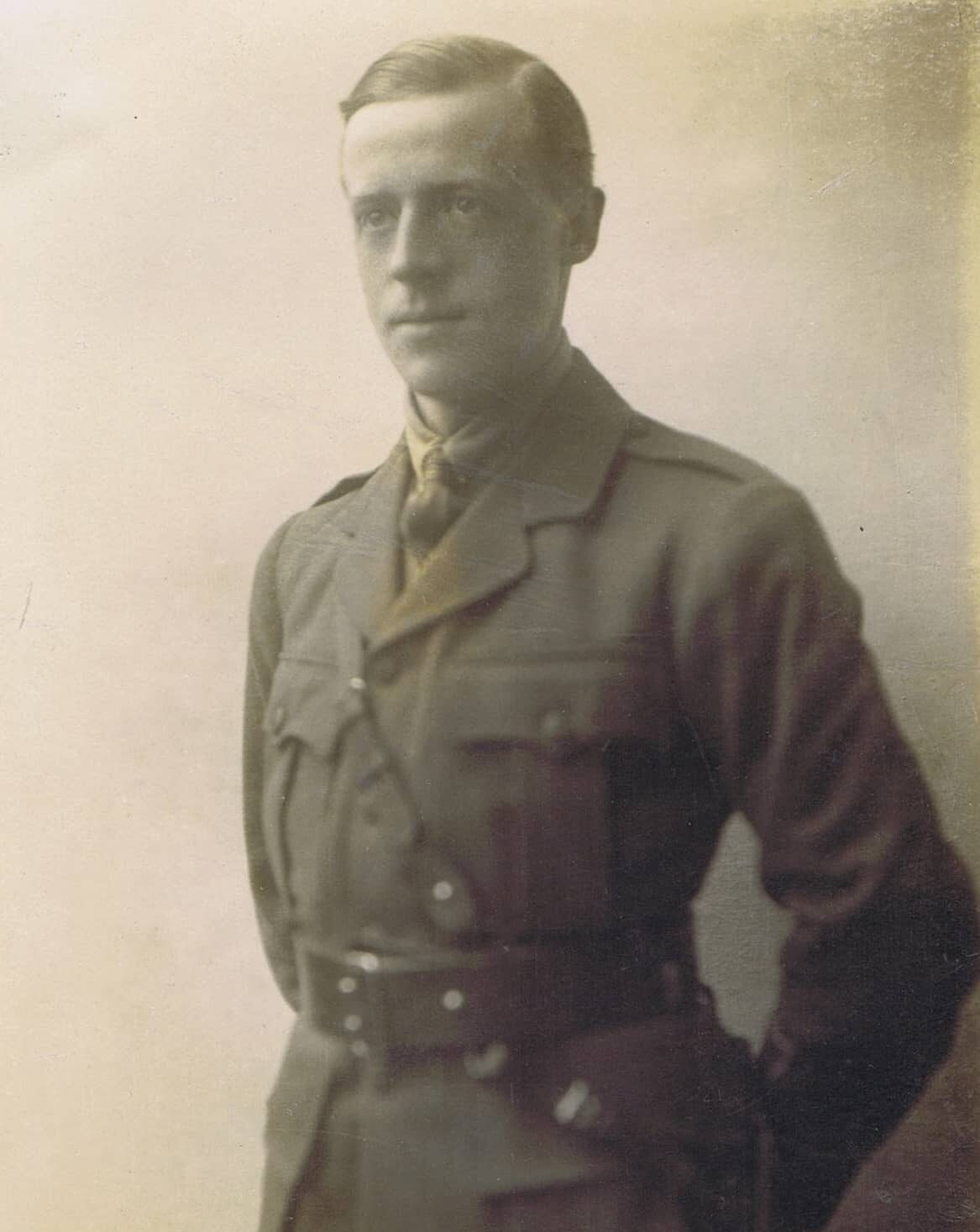
Charles Robert Crighton Maltby (1890-1916)
Charles Maltby was born in Nottingham is 1890 and was a Chorister at Magdalen College School in Oxford between 1901 and 1906. He was awarded a Minor Scholarship in Classics to Worcester College in 1909, where he rowed in the Torpid and Eight and was a member of the Buskins. Intent on a career as a professional actor, Charles Maltby was a member of OUDS and spent much of his time at Worcester focused on theatrical productions, as a consequence of which he was sent down in Hilary Term 1912. At the outbreak of the war he was working as an actor in London and enlisted as a private in one of the Public Schools Battalions in 1914. After an Officer Training Course in Oxford Lieutenant Charles Maltby served in France and Belgium from July 1915 until his death on 26 August 1916 from wounds received near Guillemont during the Battle of the Somme.
Photograph chosen for the remembrance volume by his father, Charles Maltby.
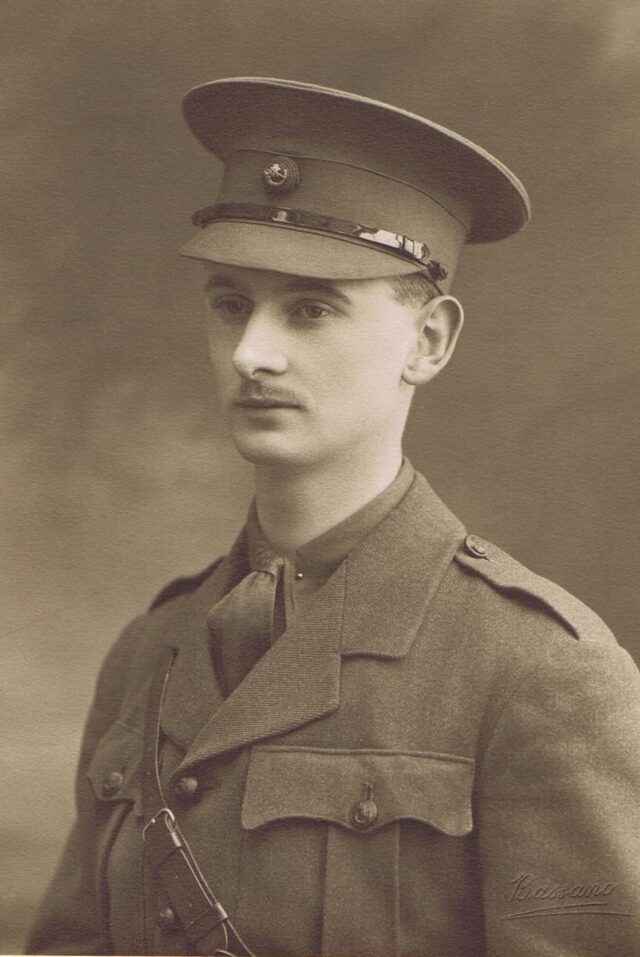
George Geoffrey Edgar (1893-1916)
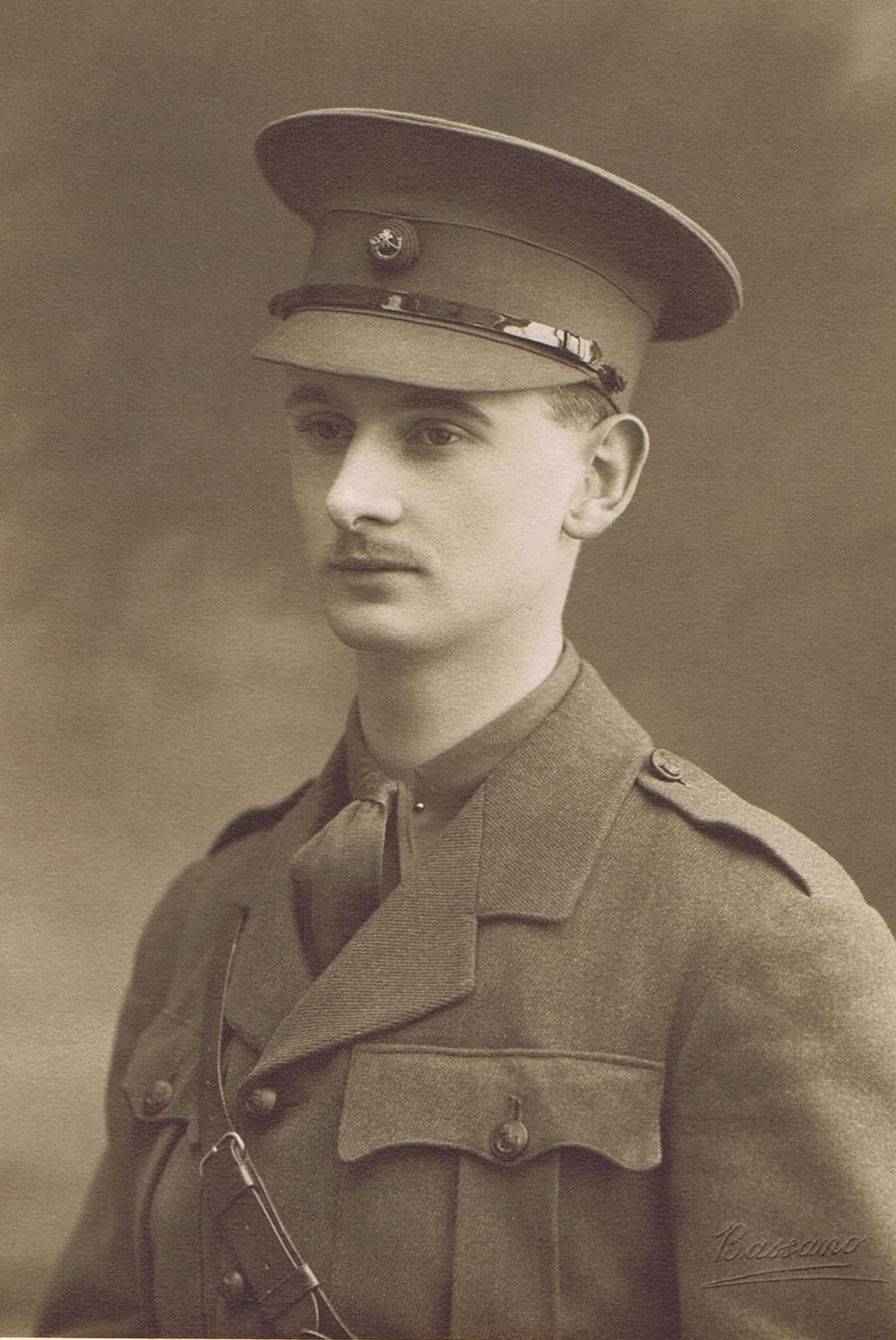
George Geoffrey Edgar (1893-1916)
George Edgar was educated at Charterhouse and came to Worcester College in 1912, where he was a member of the Oxford University Officer Training Corps. His service commenced on 24 November 1914 and he served with the King’s Royal Rifle Corps in France for over twelve months. Second Lieutenant George Edgar died on 28 August 1916 of wounds received in action at Delville Wood during the Battle of the Somme.
Photograph chosen for the remembrance volume by his mother, Jane Edgar.
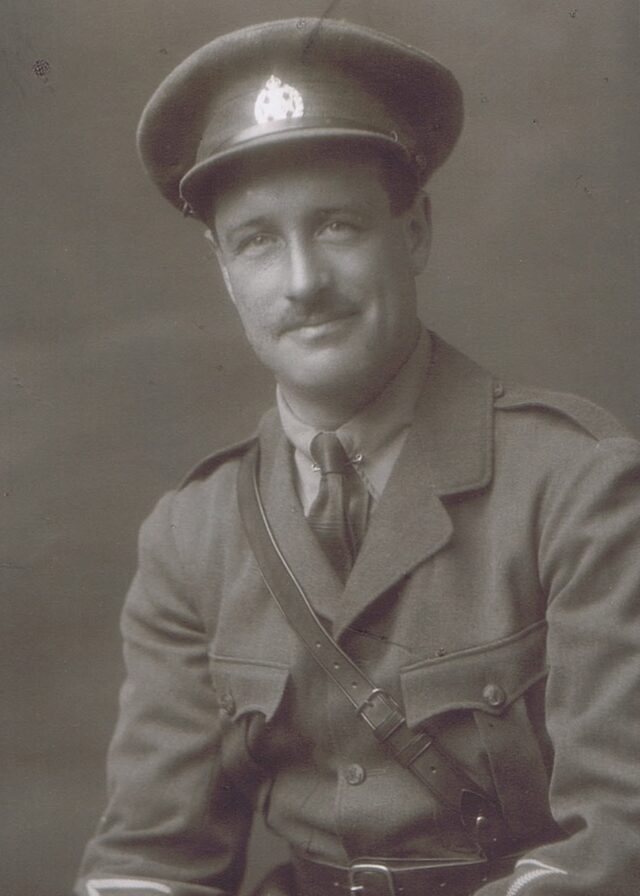
Reginald Rogers (1882-1916)
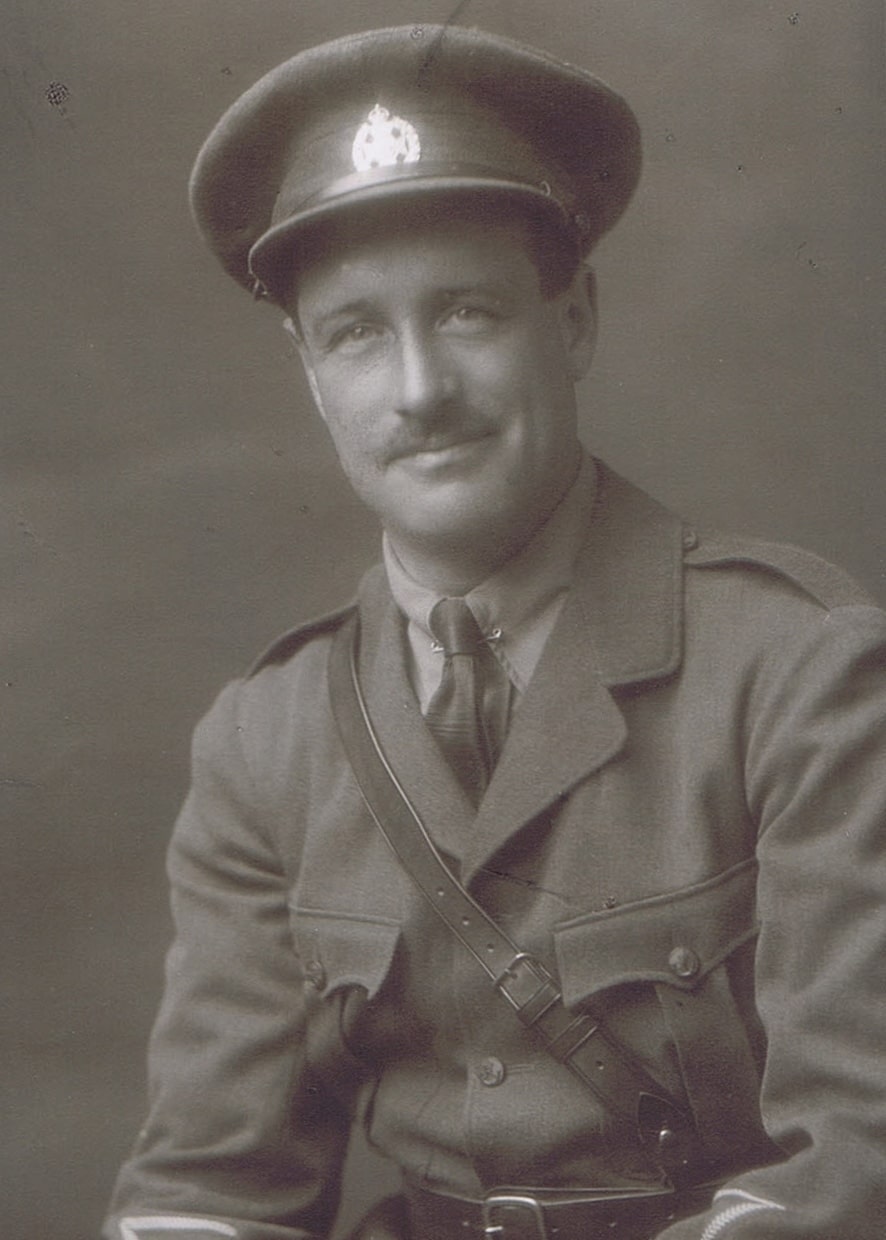
Reginald Rogers (1882-1916)
Reginald Rogers matriculated at Worcester College as an Exhibitioner and achieved third class honours in Literae Humaniores in 1905. While at Oxford he was goalkeeper for the University Association Football XI in 1904 and 1905. After graduation he became a schoolmaster, but volunteered for service in 1915. Second Lieutenant Reginald Rogers was killed in action at Flers on 15 September 1916 during the Battle of the Somme.
Photograph chosen for the remembrance volume by his family.
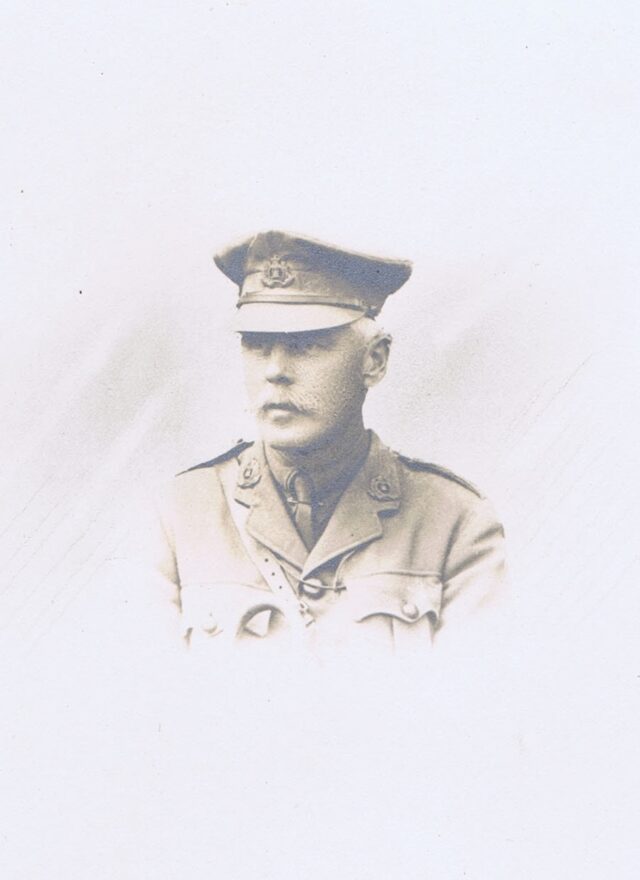
Arthur Paston Mack (1863-1916)
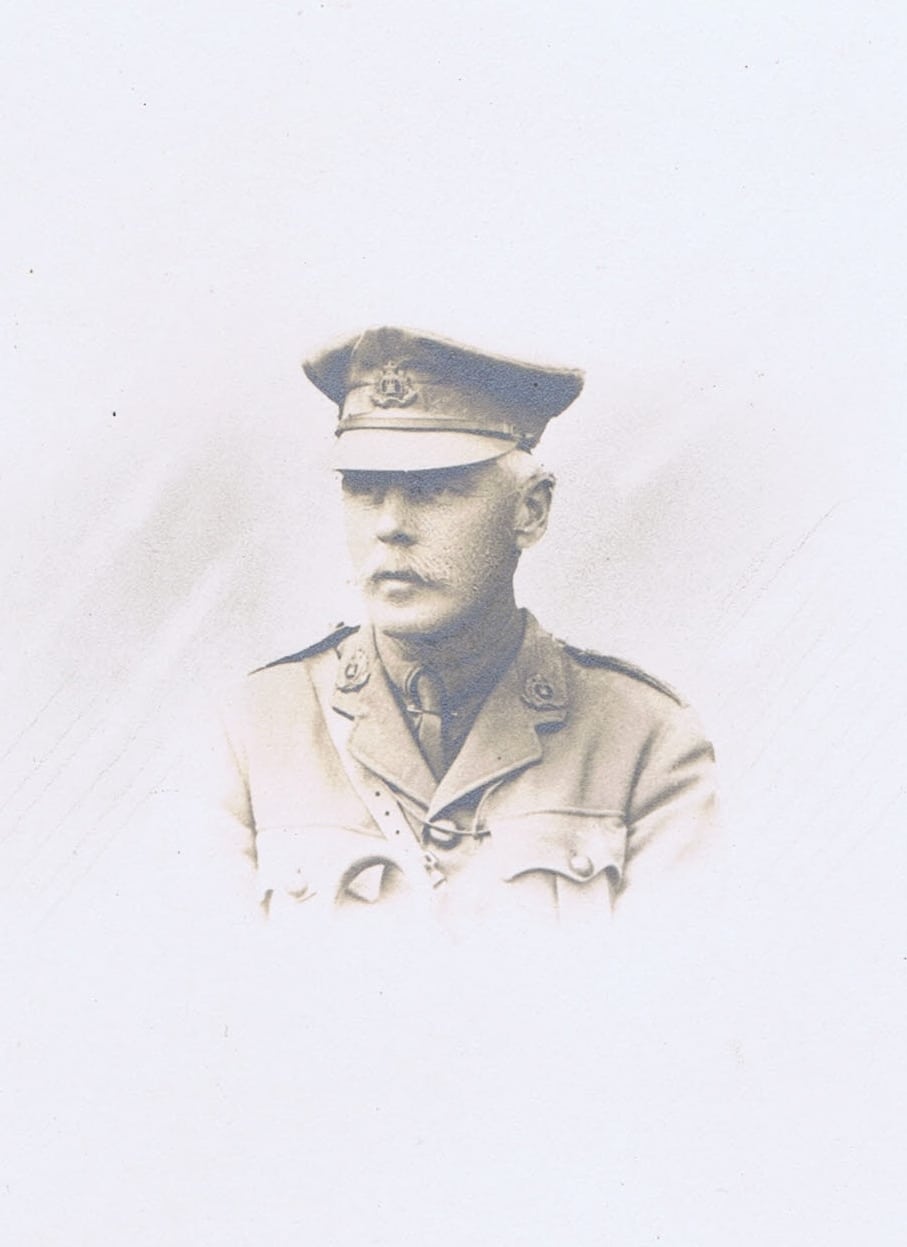
Arthur Paston Mack (1863-1916)
Arthur Mack was educated at Bradfield College before entering Worcester College in 1881. He served for some years in the Suffolk Militia, retiring as Captain in 1886. He subsequently became an explorer of the desert in Egypt. On the outbreak of war he volunteered for service and obtained a commission as Captain in the Suffolk Regiment in September 1914; he was twice mentioned in dispatches in 1916. Lieutenant-Colonel Arthur Mack was killed in action near Ginchy on 15 September 1916 during the Battle of the Somme.
Photograph chosen for the remembrance volume by his wife, Laura Mack.
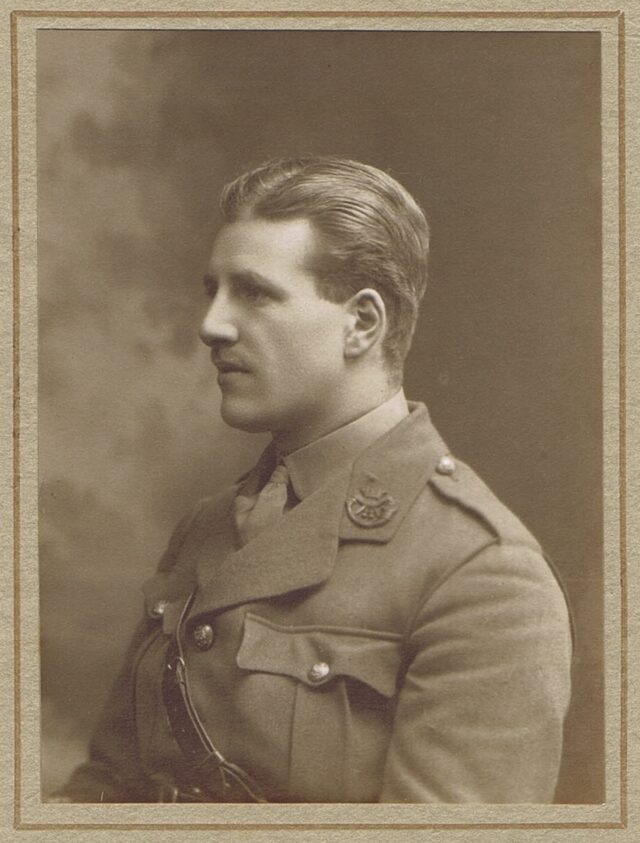
John Forbes Feild (1892-1916)
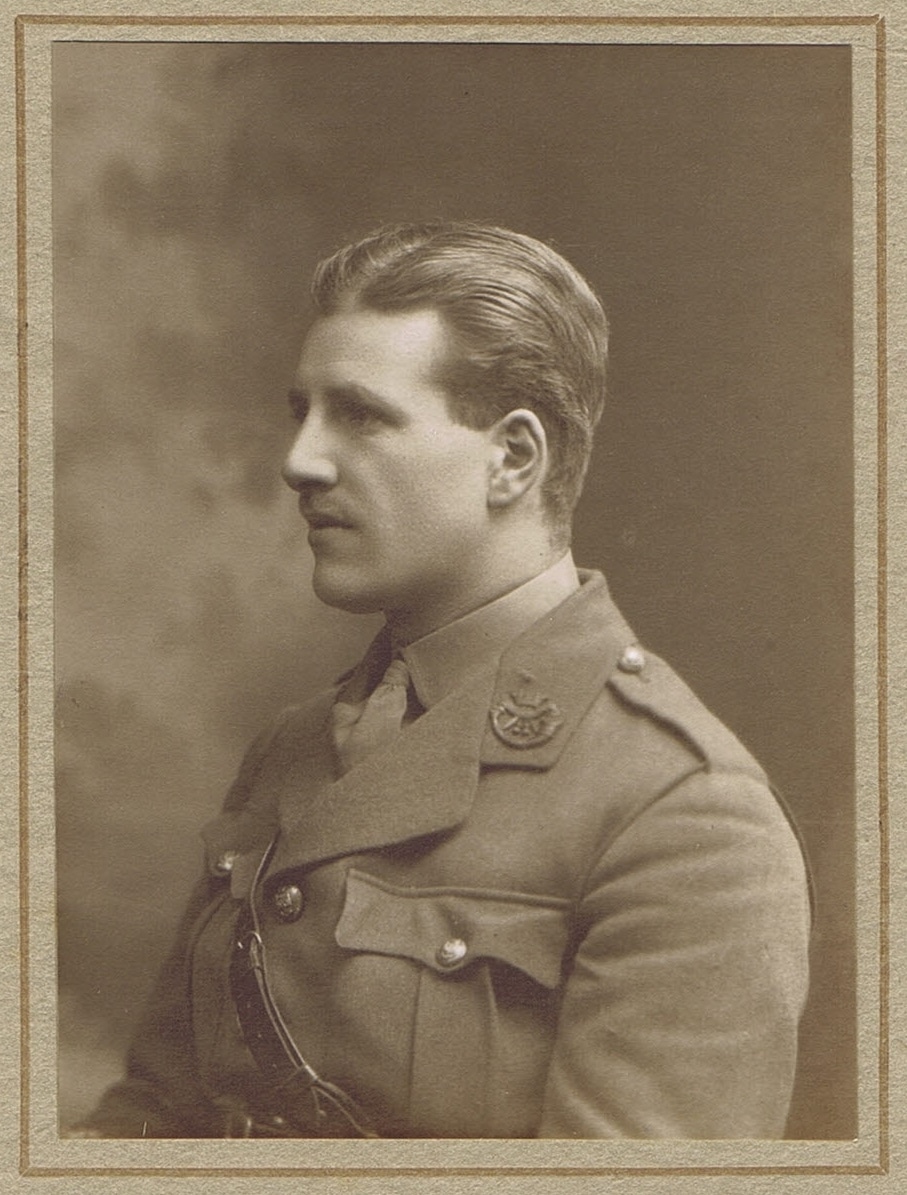
John Forbes Feild (1892-1916)
John Feild was born to British parents in Saint Petersburg in 1892, and was educated at Haileybury before entering Worcester College in 1911. He joined the Oxford University Officer Training Corps in October 1914 and later that year obtained a commission in the Duke of Cornwall’s Light Infantry. Second Lieutenant John Feild was killed in action near Gueudecourt on 16 September 1916 during the Battle of the Somme.
Photograph chosen for the remembrance volume by his family.
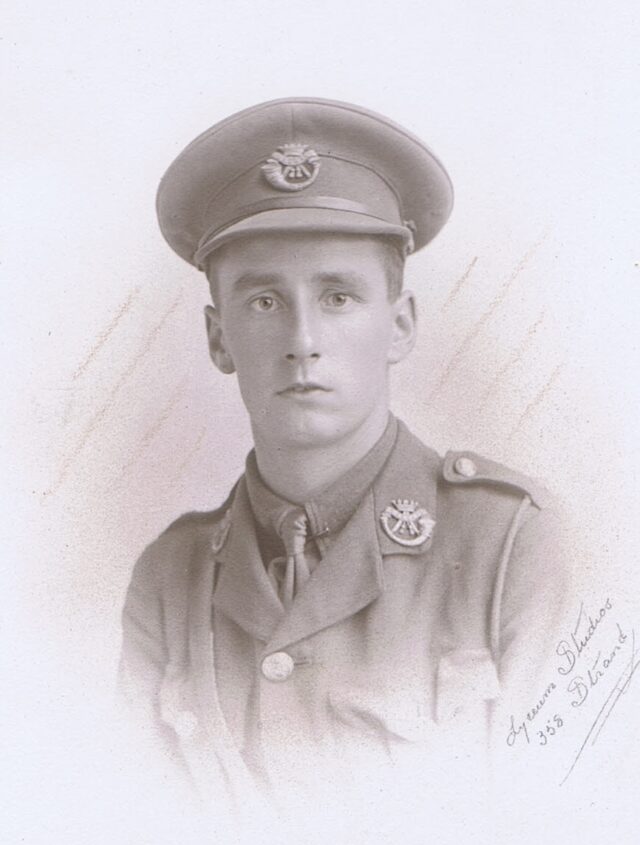
Jasper George Olivier (1896-1916)
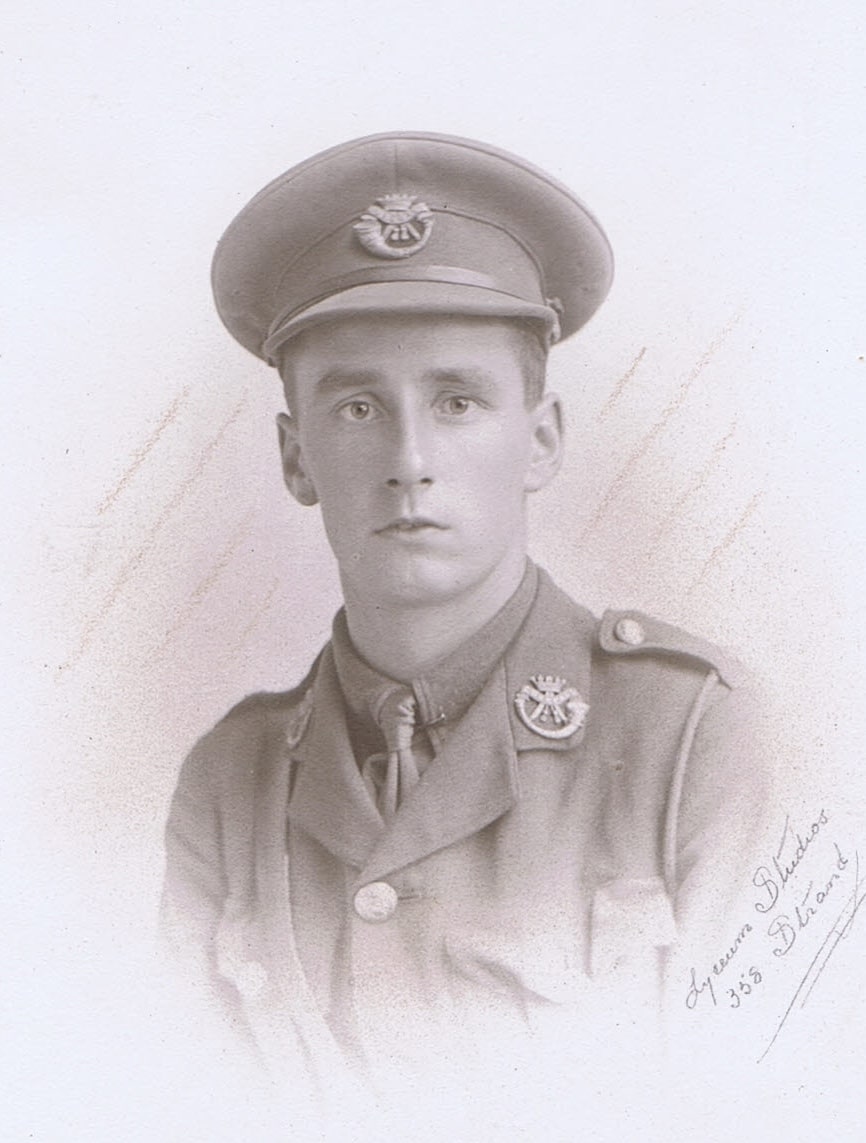
Jasper George Olivier (1896-1916)
Jasper Olivier was educated at Rossall School and elected to an Exhibition at Worcester College in December 1914. Before coming in to residence he obtained a commission in the East Lancashire Regiment and joined them in January 1915; he transferred into the Duke of Cornwall’s Light Infantry in February 1916. Second Lieutenant Jasper Olivier was sent to France on 8 September 1916 and killed in action near Albert on the 19 September 1916 during the Battle of the Somme.
Photograph chosen for the remembrance volume by his father, Henry Olivier.
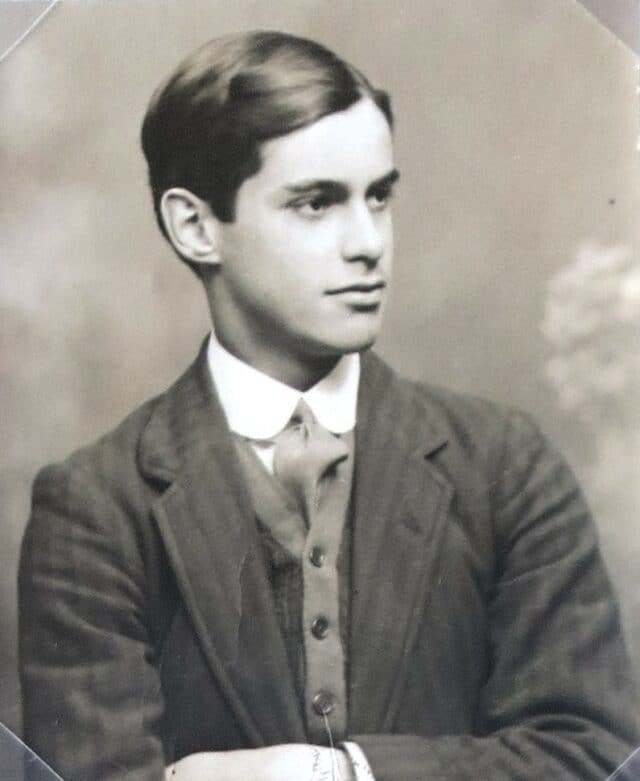
Maurice Leonard Pearce (1893-1916)
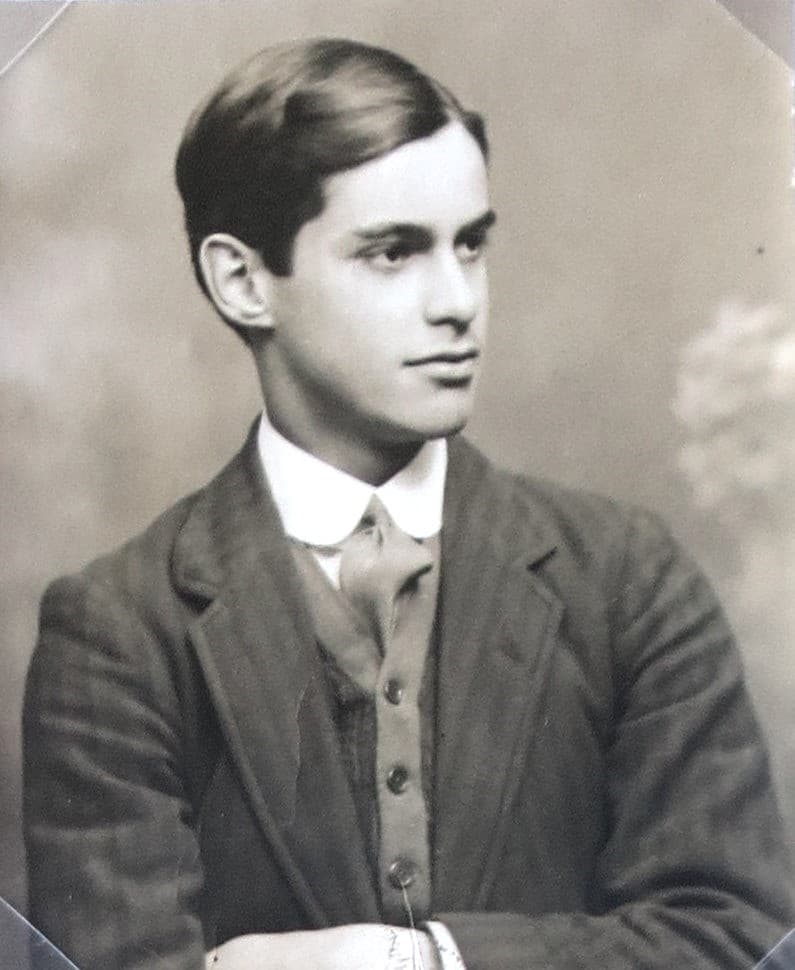
Maurice Leonard Pearce (1893-1916)
Maurice Pearce came up to Worcester College in 1911 and rowed in the College Torpid and Eight in 1913. His service commenced on 18 November 1914 and he served first in France and then in Salonika from 1915. Lieutenant and Adjutant Maurice Pearce was reported missing, presumed killed in action at Salonika on 24 September 1916; his family received confirmation of his death in November 1917.
Photograph (c.1912) chosen for the online memorial by his great nephew and great niece.
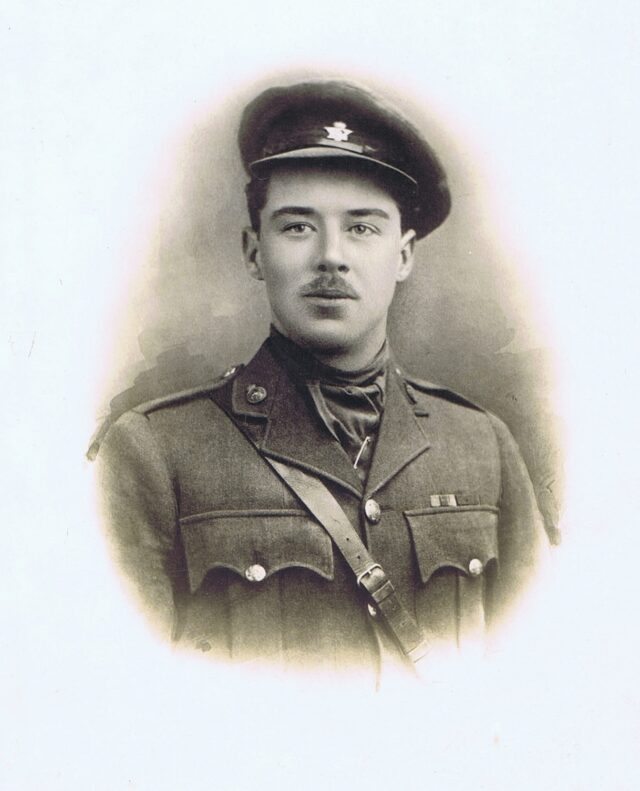
Nevil William Curran (1893-1916)
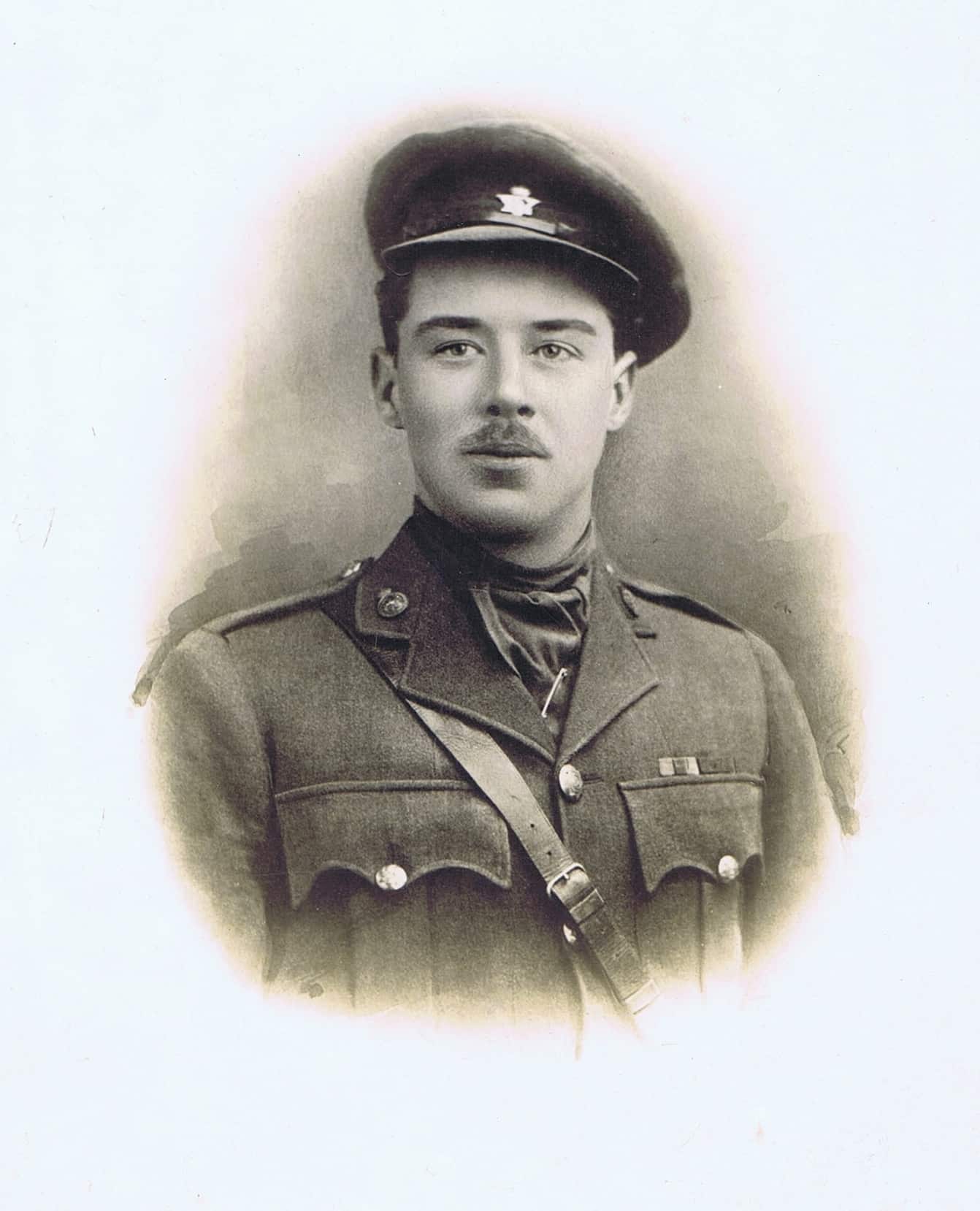
Nevil William Curran (1893-1916)
Nevil Curran was born in 1893 and entered Worcester College in 1911. He was gazetted to the 5th Dragoon Guards in August 1914 and served with that regiment at the front from October 1914 until May 1916 when he volunteered for the infantry and joined the Royal Irish Regiment. During his time at the front Nevil Curran was cited in the French Army Order of 3 March 1915 and awarded the Croix de Guerre; he received the Military Cross on 15 April 1915 for reconnaissance under fire, and was mentioned in dispatches. Lieutenant Nevil Curran was killed on reconnaissance patrol close to the enemy trenches near Ploegsteert on 4 October 1916.
Photograph chosen for the remembrance volume by his father, J. P. Curran.
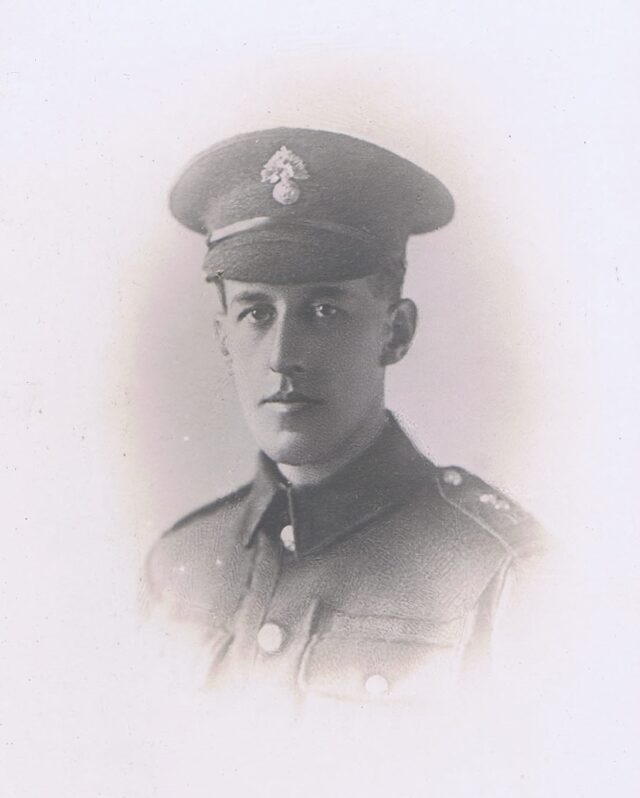
Ernest Gordon Maufe (1885-1916)
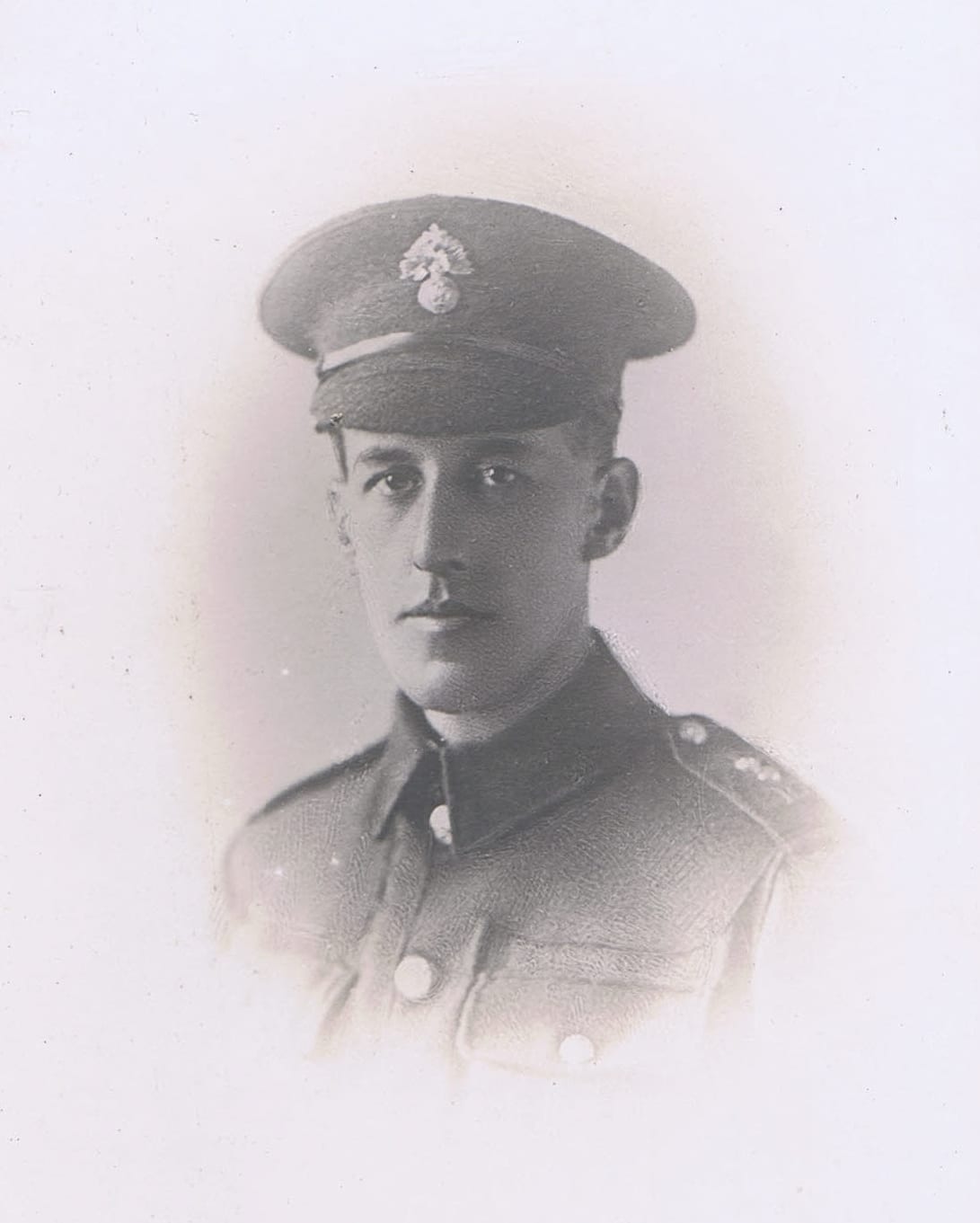
Ernest Gordon Maufe (1885-1916)
Ernest Maufe was educated at Bradford Grammar School and entered Worcester College in 1903. He enlisted in the Royal Fusiliers in May 1916 and was transferred to the Royal West Kent Regiment and sent to France in August that year. Private Ernest Maufe was killed in action at Le Sars on 6 October 1916 during the Battle of the Somme.
Photograph chosen for the remembrance volume by his family.
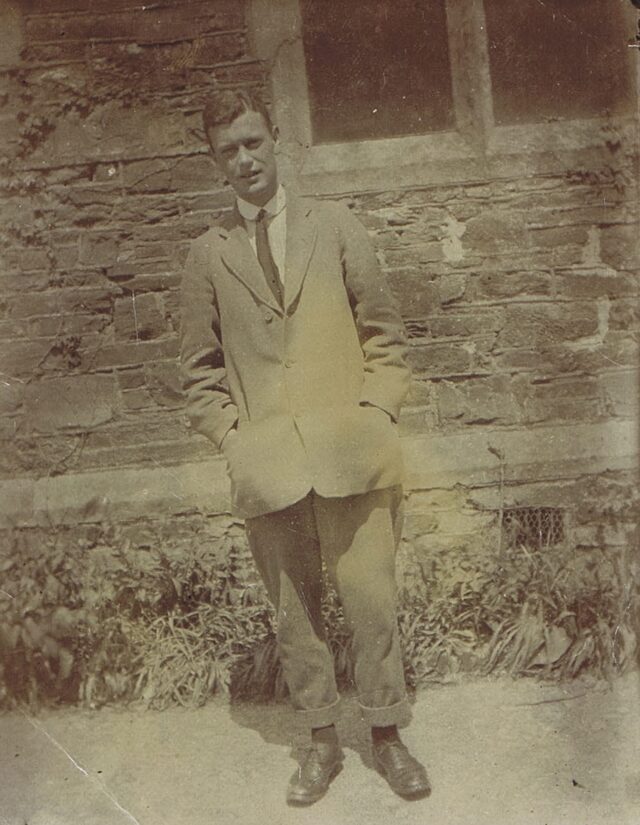
Eric Smith (c1888-1916)
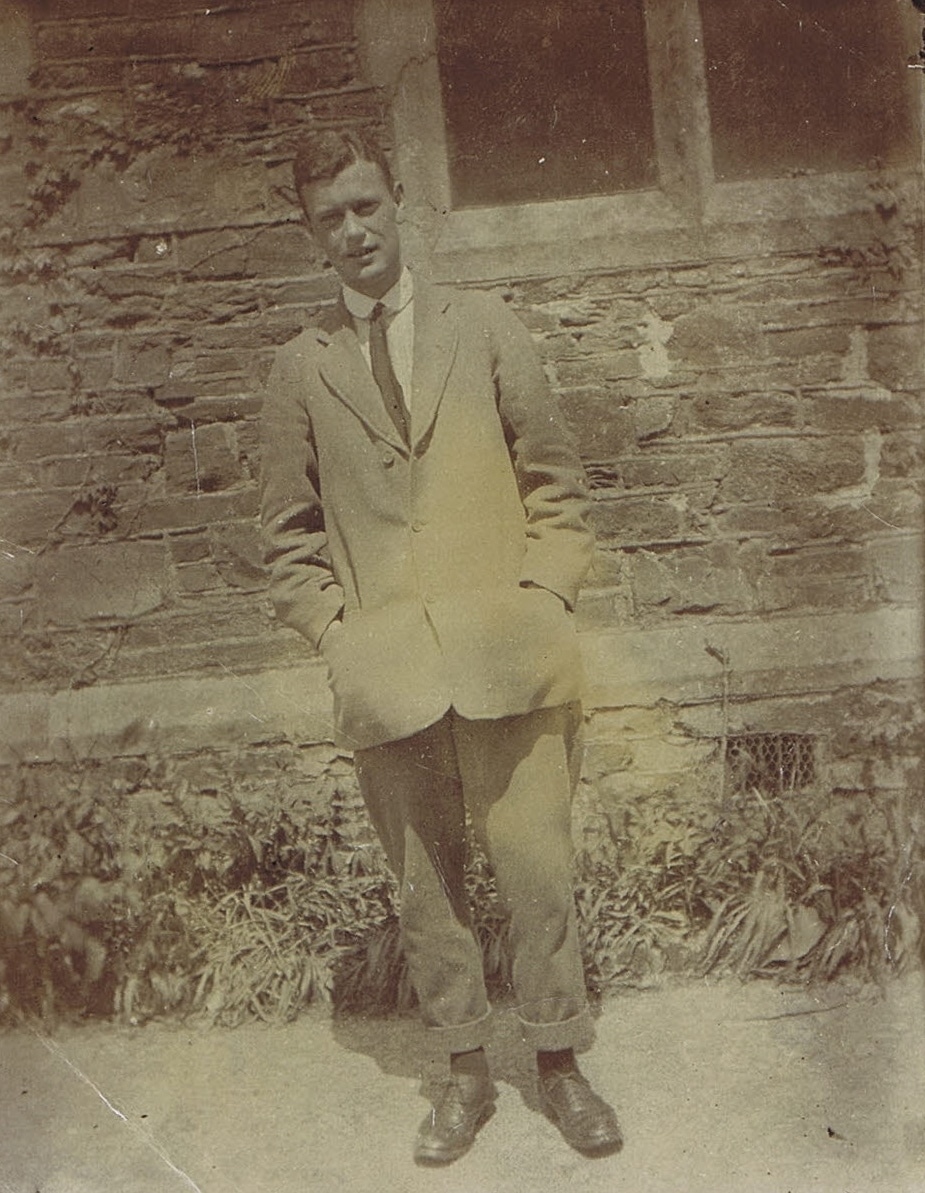
Eric Smith (c1888-1916)
Eric Smith entered the College in 1906 and, following his graduation, became Sports Master at West Buckland School in North Devon. On the outbreak of war he enlisted in the Public Schools Battalion attached to the Royal Fusiliers and served in France. In April 1916 he was recommended for a commission and was gazetted to the Royal West Kent Regiment, returning to the front on 18 September 1916. Second Lieutenant Eric Smith died from heart failure following an attack of acute jaundice on 15 October 1916, while on active duty in France.
Photograph of Eric Smith chosen for the remembrance volume by his sister, H. Smith.
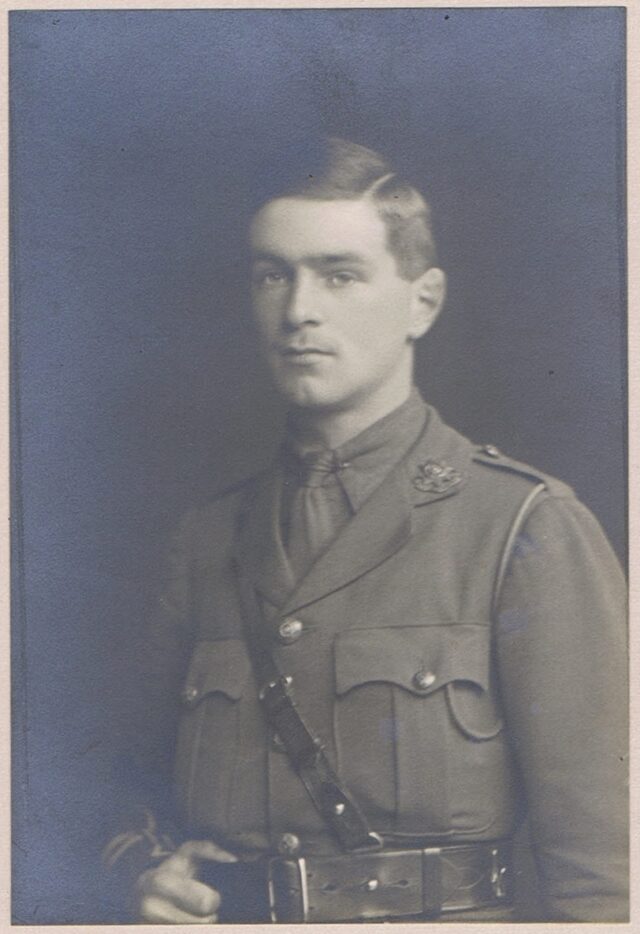
William Elmhirst (1892-1916)
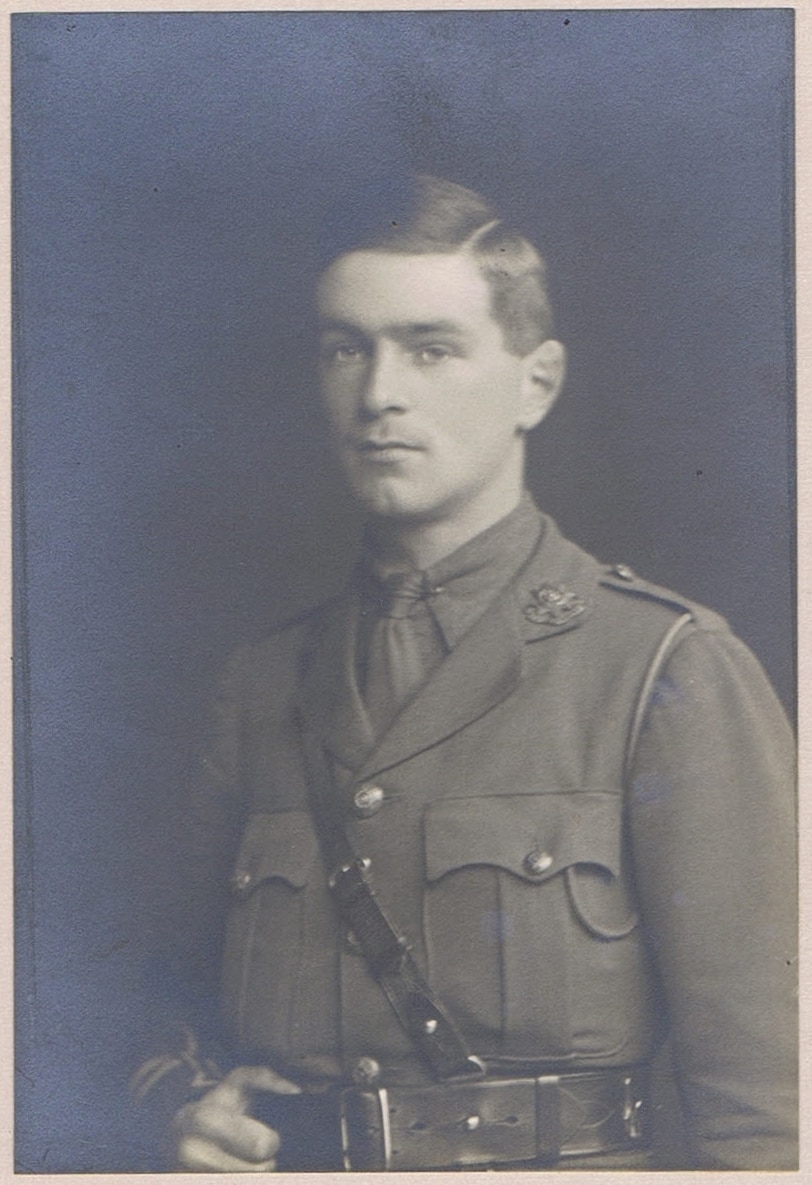
William Elmhirst (1892-1916)
William Elmhirst matriculated in 1911 and achieved third class honours in Jurisprudence in 1914. The diary he kept of his freshman year (published in 1969) indicates how he threw himself into college life, joining a large number of clubs, rowing in the College Eight, and joining the Oxford University Officer Training Corps. Captain William Elmhirst served with the East Yorkshire Regiment from December 1914 until he was killed in action at Serres on 13 November 1916 during the Battle of the Somme.
Photograph chosen for the remembrance volume by his father, W. H. Elmhirst.
Members who died in 1917
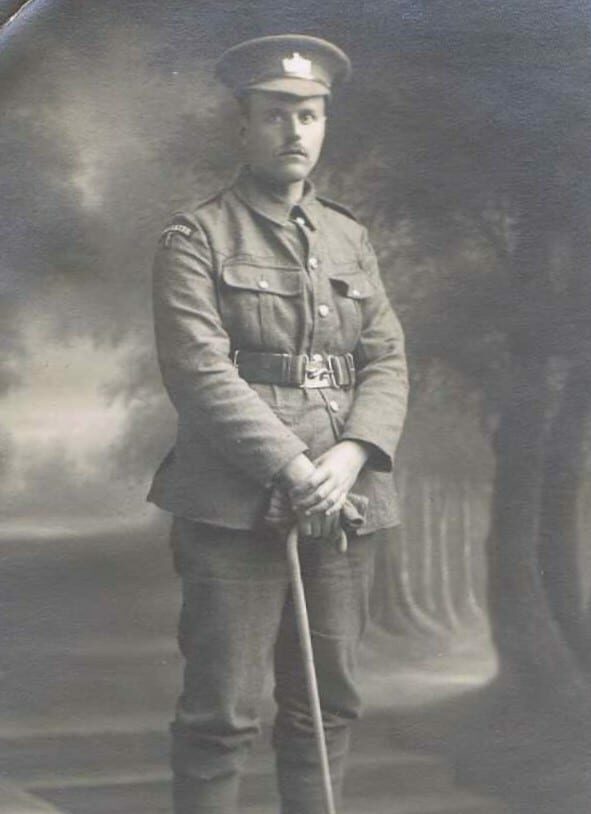
Forester Mills (1887?-1917)

Forester Mills (1887?-1917)
Forester Mills matriculated in 1904 and graduated with third class honours in Modern History in 1907. His service commenced on 1 March 1916 and he worked as an interpreter attached to the Royal Engineers in France. Sapper Forester Mills was killed in action when a shell fell on the wireless station where he was working at Sailly-Saillisel, on 15 March 1917.
Photograph chosen for the memorial volume by his parents.

Barnard Aubrey Clapham (1878-1917)

Barnard Aubrey Clapham (1878-1917)
Barnard Clapham matriculated in 1897 and graduated BA in 1900, afterwards becoming a solicitor. He joined the Public Schools Battalion, Middlesex Regiment on the outbreak of war and received a commission in the Essex Regiment in October 1914. Lieutenant Barnard Clapham served in Egypt and Palestine and died on 27 March 1917 from wounds received in action at the first Battle of Gaza on the previous day.
Unfortunately the College has no photographs of Barnard Clapham.
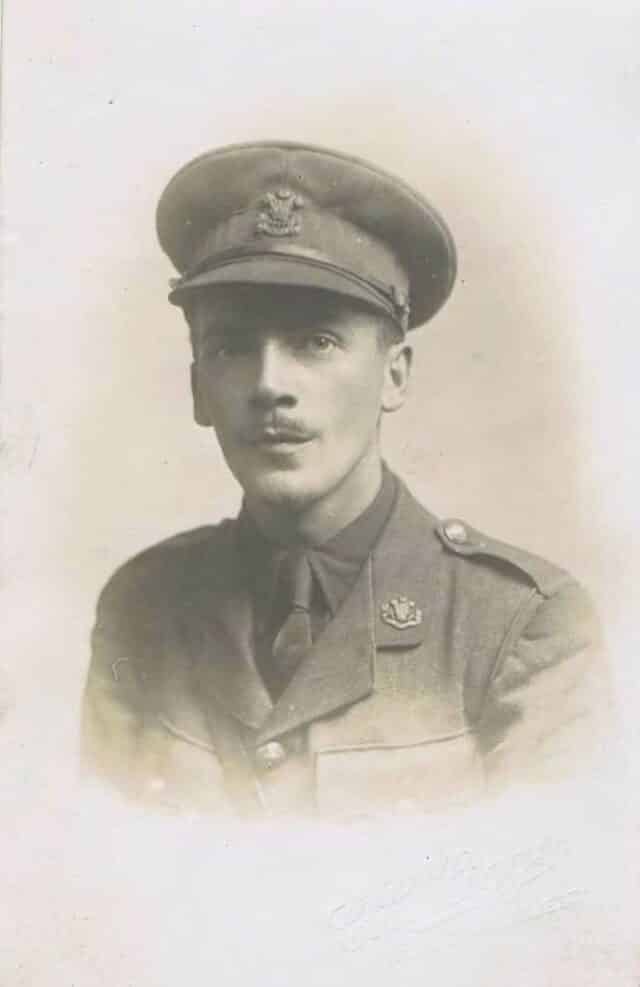
Frederick Spriggs Thomas (1891?-1917)
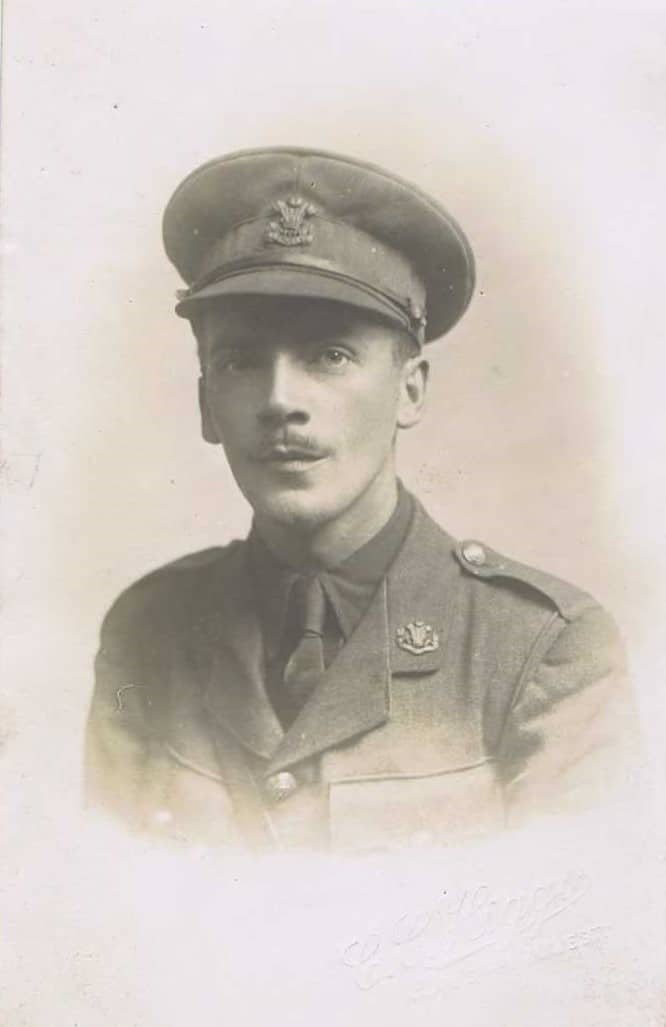
Frederick Spriggs Thomas (1891?-1917)
Fred Thomas matriculated in 1909. He achieved first class honours in mathematical moderations in 1911, and graduated with second class honours in Mathematics in 1913. He subsequently became mathematics master at King Charles I Grammar School, Kidderminster. On the outbreak of war he obtained a commission in the 4th Battalion of the Welsh Regiment and, after a year of training, was sent to Suvla Bay where he was in the trenches for four months. In 1916 he was drafted to Egypt and then to Palestine where he was shot in the neck during the second attack on Gaza on 19 April 1917. Captain Frederick Thomas died on 21 April 1917.
Photograph chosen for the memorial volume by his aunt, Ellinor Thomas.
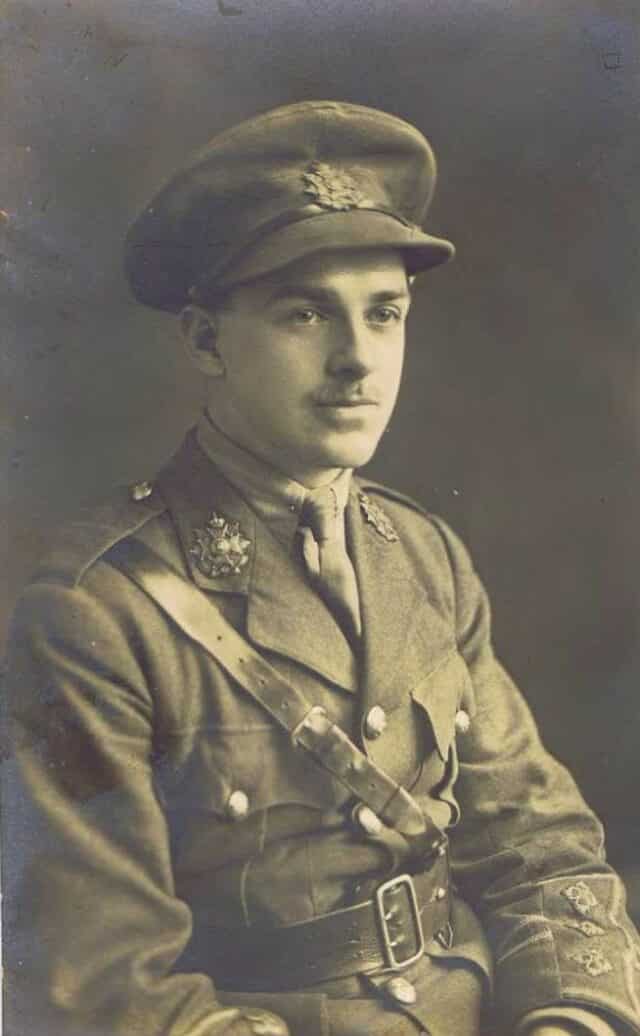
Leonard Birch (1893-1917)
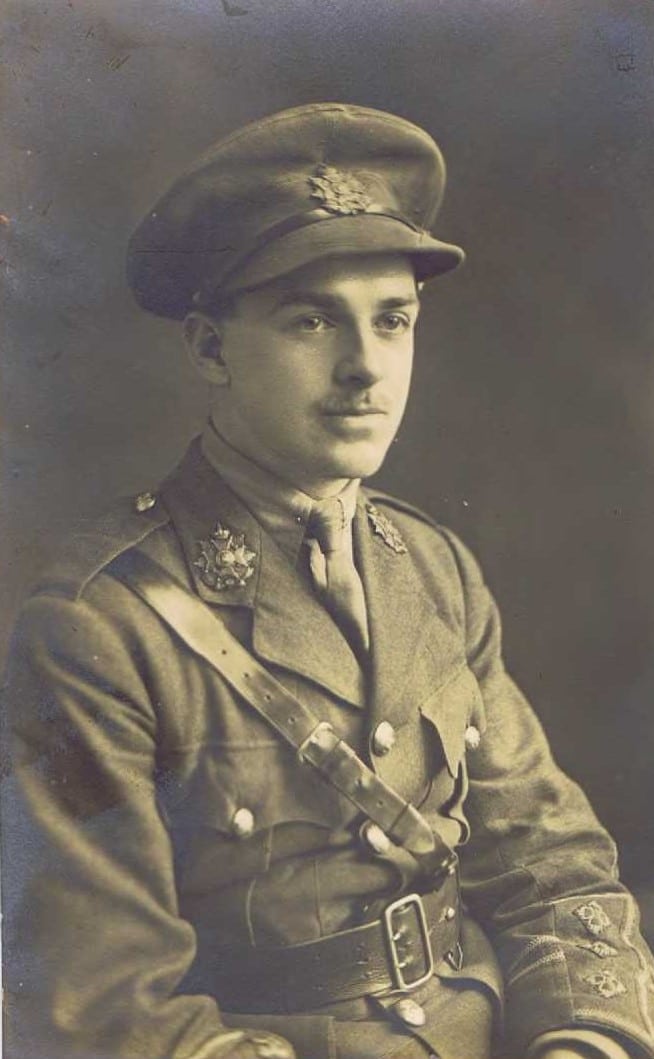
Leonard Birch (1893-1917)
Leonard Birch matriculated in 1912 and was a Cookes scholar, achieving second class honours in classical moderations in 1914. He was a keen rugby player. Leonard Birch received a commission in the Border Regiment in November 1914 and was sent to France the following year. He was wounded in October 1915 and again during the Battle of the Somme in July 1916. Captain Leonard Birch was killed in action at Monchy-le-Preux on 23 April 1917.
Photograph chosen for the memorial volume by his father, J Birch.

David Philip Hirsch (1896-1917)

David Philip Hirsch (1896-1917)
D. Philip Hirsch was born in 1896 and attended Willaston School, Nantwich where he was head of the school in his last year. He was elected to a History Exhibition at Worcester College in 1915, but wrote in July of that year to request that it was suspended as he had joined the Yorkshire Regiment; he never came into residence. Captain D. Phillip Hirsch was killed in action on 23 April 1917 during the Battle of Arras. He was posthumously awarded the Victoria Cross “for most conspicuous bravery and devotion to duty in attack”.
Unfortunately the College has no photographs of D. Philip Hirsch.

Charles Arthur Stirling Mathias (1890-1917)

Charles Arthur Stirling Mathias (1890-1917)
Charles Mathias matriculated in 1909 and graduated with third class honours in Modern History in 1913. He was a member of the Worcester College Torpid in 1911 and 1912, and the Eight in 1912. Charles Mathias was a member of his school cadet corps and the University of Oxford Officer Training Corps and enlisted in the 18th Battalion (1st Public Schools) Royal Fusiliers in September 1914. After 14 months’ service Charles Mathias received his commission and was gazetted to The Buffs (East Kent Regiment) with whom he saw much active service in France. He was awarded the Military Cross in the Somme in February 1917. Second Lieutenant Charles Mathias was killed in action near Chérisy, a village to the south-east of Arras, on 3 May 1917.
Unfortunately the College has no photographs of Charles Mathias.
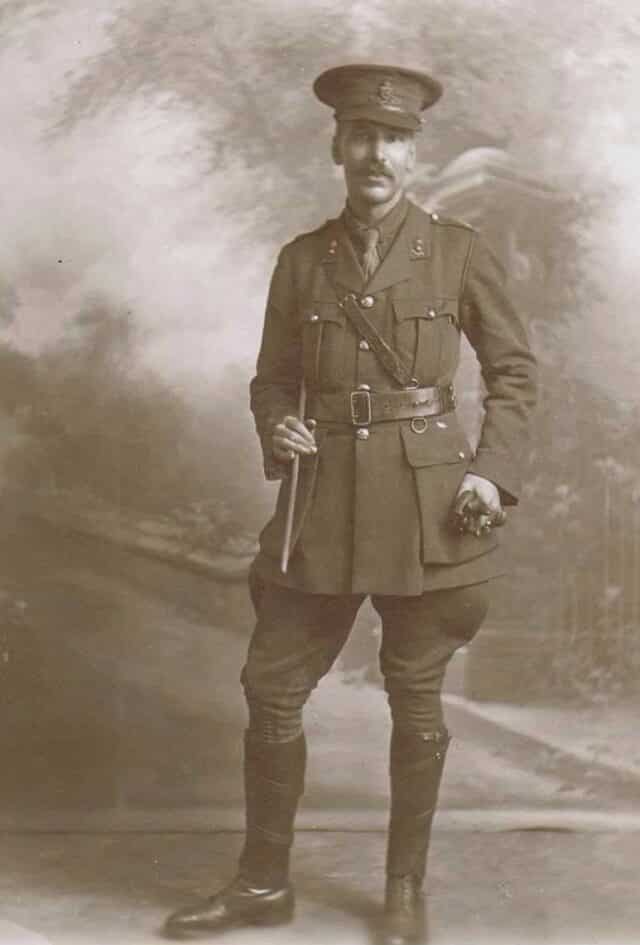
Rupert Edward Everitt (1875-1917)
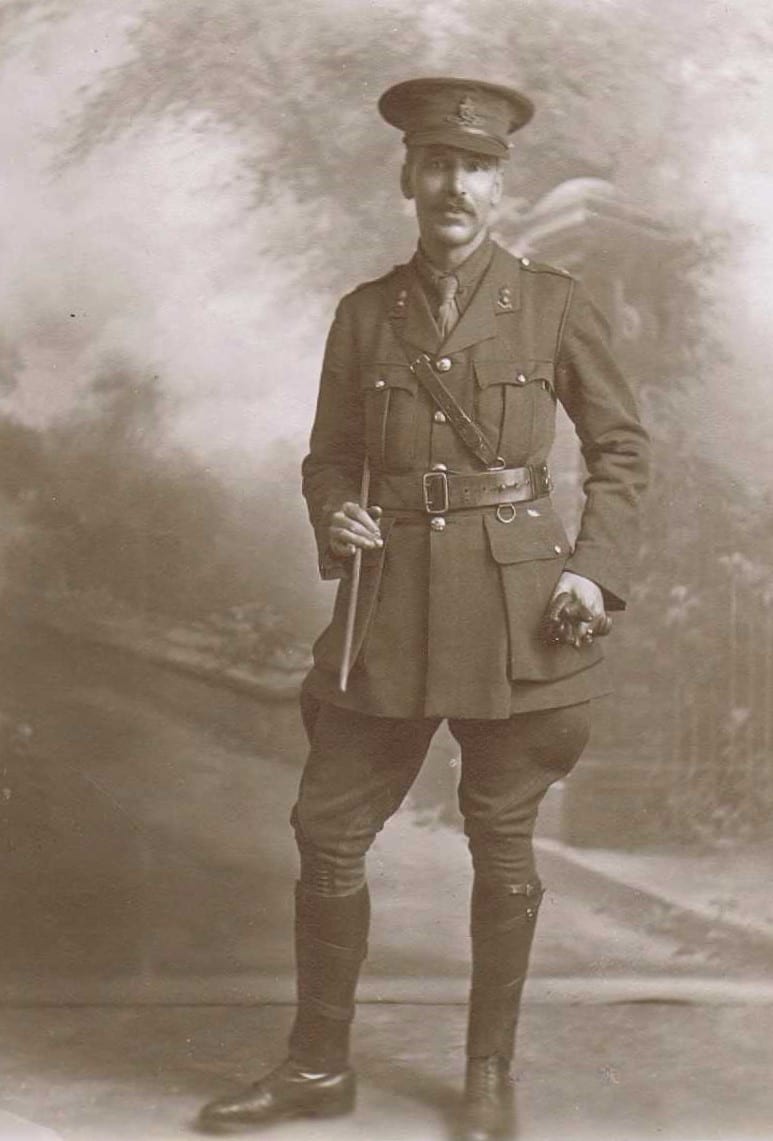
Rupert Edward Everitt (1875-1917)
Rupert Everitt matriculated in 1894 and graduated with third class honours in Literae Humaniores in 1898. Following his graduation he became a schoolmaster at Clifton College and then King’s School, Canterbury. He served as a gunner and bombardier with the Royal Garrison Artillery in France in 1915 and obtained his commission in 1916. Second Lieutenant Rupert Everitt was killed by a fragment of shell near Poperinge, Belgium, on 24 June 1917.
Photograph chosen for the memorial volume by his father, Lieutenant Colonel Herbert Everitt.
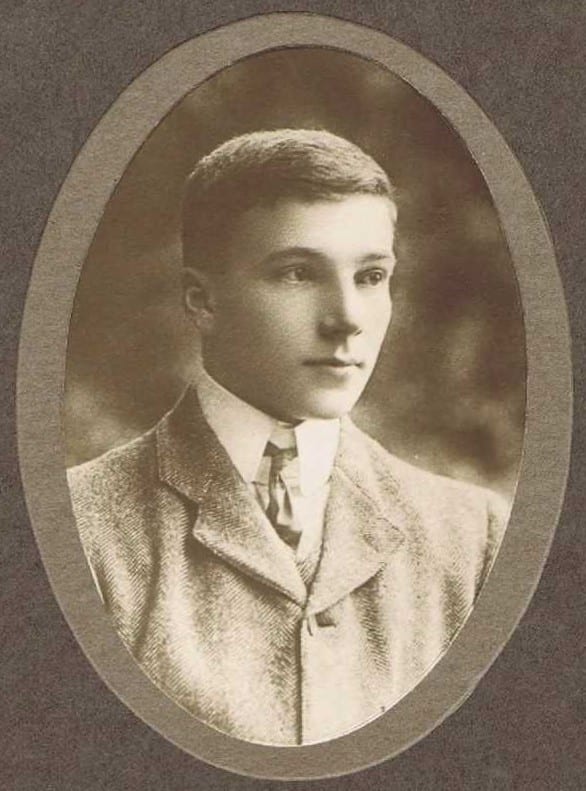
John Lewis Moilliet (1882-1917)

John Lewis Moilliet (1882-1917)
John Moilliet matriculated in 1901 and graduated in 1906; his work was affected by asthma and he took a post-graduate course with the Geography School after which he went into education. He volunteered as a private with the Canadian Infantry in 1915. Private John Moilliet was killed in action near Vimy Ridge on 28 June 1917.
Photograph chosen for the memorial volume by his mother, Mrs J. Keir Moilliet, as one “like him as he was when at Worcester College”.

Edward Winter Channer (1887-1917)

Edward Winter Channer (1887-1917)
Edward Channer matriculated in 1906 and was a College exhibitioner. He graduated in 1909 with second class honours in Modern History and, after obtaining a Teacher’s Diploma, he worked in several different schools. At the outbreak of the war Edward Channer attempted to enlist but was rejected on medical grounds. He was subsequently taken under subscription and finished top of a class of snipers despite having weak eyesight. Private Edward Channer was sent to France in early 1917 and was killed in action near Vermelles on 7 July 1917.
Unfortunately the College has no photographs of Edward Channer.

Charles Arthur Green (1897-1917)

Charles Arthur Green (1897-1917)
Charles Green was due to matriculate as a classics scholar in Michaelmas Term 1916 but joined the Royal Horse Guards Officer Training Corps in February of that year and consequently never came into residence. He was with the Royal Garrison Artillery in France by January 1917, and was awarded the Military Cross on 23 April 1917. Second Lieutenant Charles Green was killed in action at Arras on 13 July 1917.
Unfortunately the College has no photographs of Charles Green.
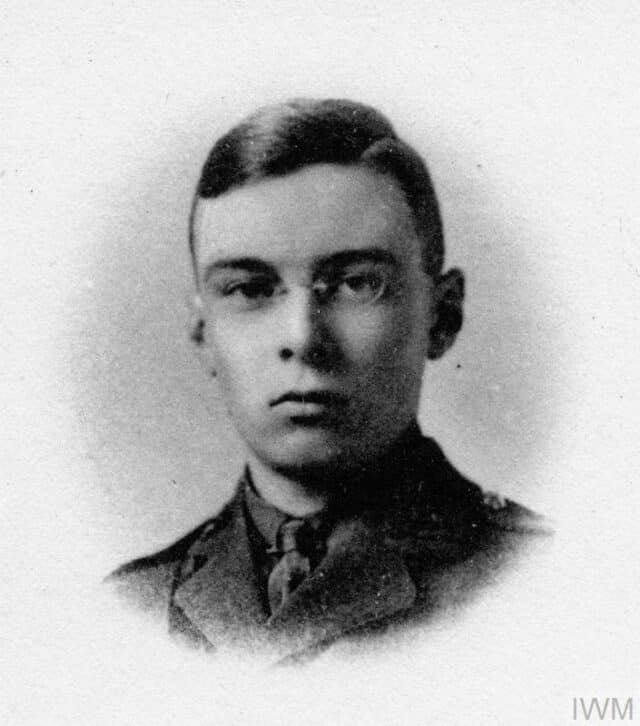
Raymond Ernest Wilson (1898-1917)
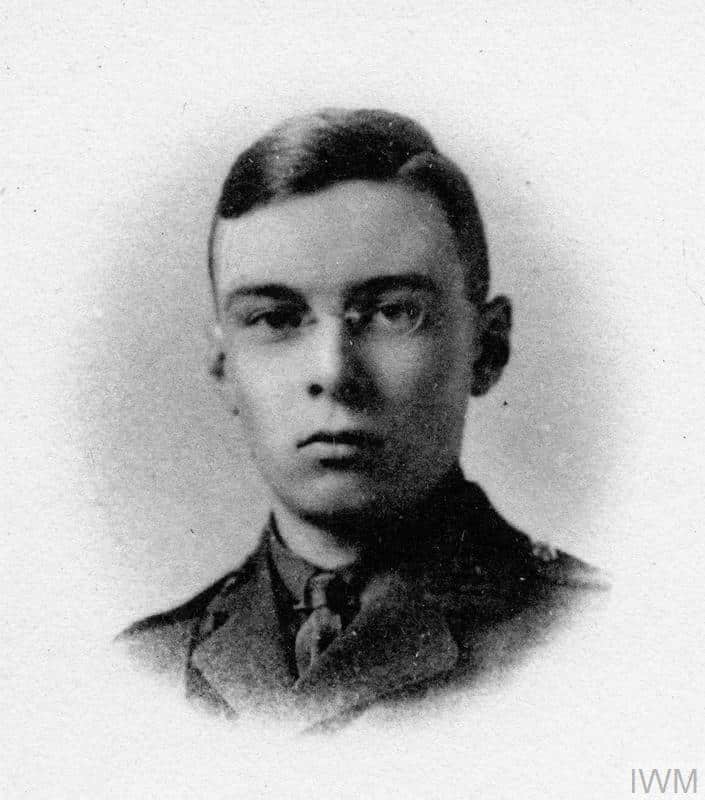
Raymond Ernest Wilson (1898-1917)
Raymond Wilson was accepted for a place at the College in Michaelmas Term 1916, but did not come into residence before his service commenced on 25 January 1917. He served in France and Belgium with the 7th Battalion, The Queens (Royal West Surrey Regiment). Second Lieutenant Raymond Wilson was reported missing, presumed killed in action at Inverness Copse on 10 August 1917.
Photograph from the collections of the Imperial War Museum, available online. © IWM (HU 127685).

Harold Cecil Round (1897-1917)

Harold Cecil Round (1897-1917)
Harold Round gained an open mathematical exhibition at Worcester College and was due to matriculate in Michaelmas Term 1915. However, having been previously rejected on account of his eyesight, he was passed by a special medical board and given a commission in the Rifle Brigade. Harold Round joined his battalion at the front in August 1916 and won the Military Cross in his first month’s service; he was awarded the Distinguished Service Order in May 1917. Captain Harold Round was killed in action near Passchendaele on 24 August 1917.
Unfortunately the College has no photographs of Harold Round.
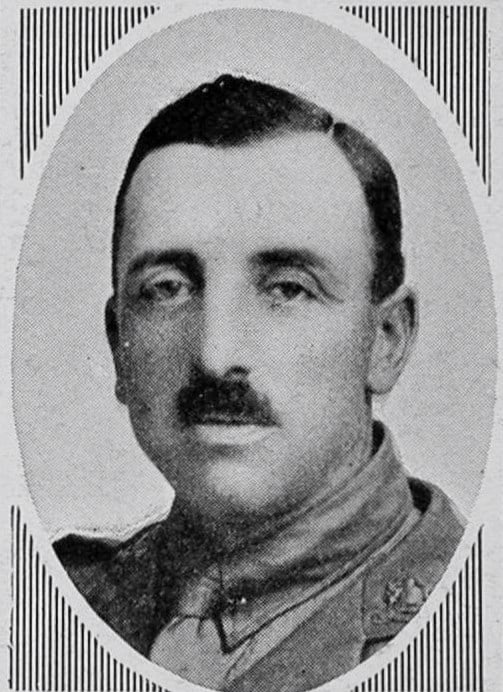
Englebert Lutyens Rothwell Horley (1876-1917)

Englebert Lutyens Rothwell Horley (1876-1917)
Englebert Horley was educated at Charterhouse School before entering Worcester College in 1894; he graduated BA in 1899. He joined up in May 1915 and served with the 2nd Battalion of the Manchester Regiment in France and Belgium. Second Lieutenant E L R Horley was killed in action at Coxyde, Belgium on 4 September 1917.
Photograph from The Sphere kindly provided by John Hamblin who created the Roll of Honour for The King’s School, Canterbury.
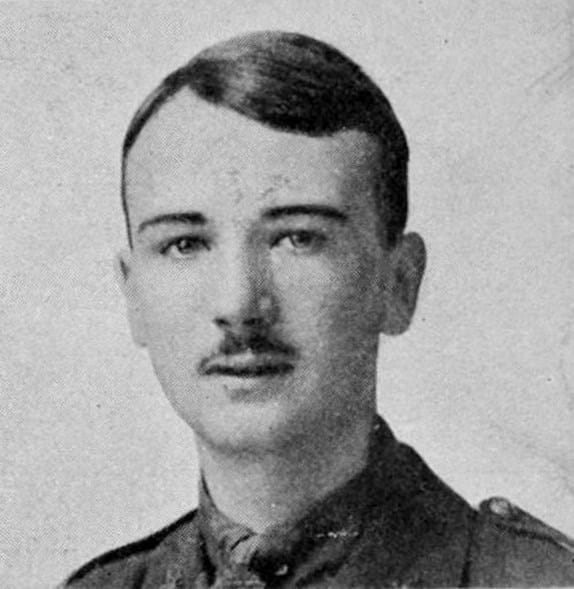
Ralph Edward Culverhouse Mead (1898-1917)

Ralph Edward Culverhouse Mead (1898-1917)
Ralph Mead won an open classical exhibition to Worcester College and was looking forward to a medical career. He was due to matriculate in Michaelmas Term 1916 but instead joined the Oxford University Officer Training Corps until he was old enough to enter a cadet battalion. He received a commission in The Buffs (East Kent Regiment) in August 1917 and embarked for Belgium on 1 September that year. Second Lieutenant Ralph Mead was killed in action near Poperinge, Belgium, on 29 September 1917.
Photograph kindly provided by John Hamblin who created the Roll of Honour for The King’s School, Canterbury.

Hans Gerald Hodgkinson (1895-1917)

Hans Gerald Hodgkinson (1895-1917)
Gerald Hodgkinson matriculated in 1914, but left the College in March 1915 when he received his commission. He served first in France, where he was wounded, and then accepted a position in the King’s African Rifles, intending to return to Oxford to complete his studies once his required period of service was over. Lieutenant Gerald Hodgkinson was killed in action at Mtua [now in Tanzania] on 17 October 1917.
Unfortunately the College has no photographs of Gerald Hodgkinson.

Gerald Aubrey Pilcher (1896-1917)

Gerald Aubrey Pilcher (1896-1917)
Gerald Pilcher was accepted for a place at the College in Michaelmas Term 1915, but did not come into residence. His service commenced on 26 January 1915 and he served in France and Belgium with the Royal Field Artillery. Lieutenant Gerald Pilcher died on 26 October 1917, of wounds received in action at Langemark, Belgium.
Unfortunately the College has no photographs of Gerald Pilcher.
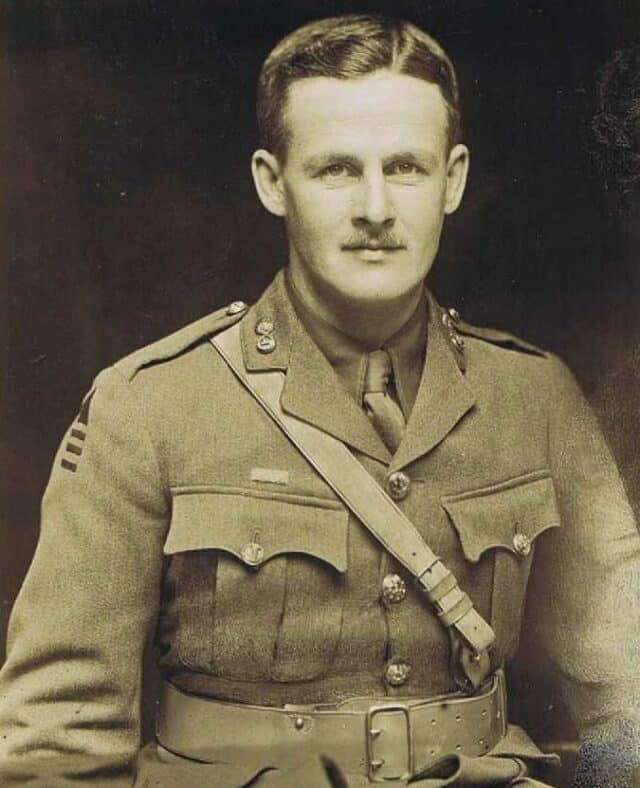
Herbert Ward Milligan (1884-1917)
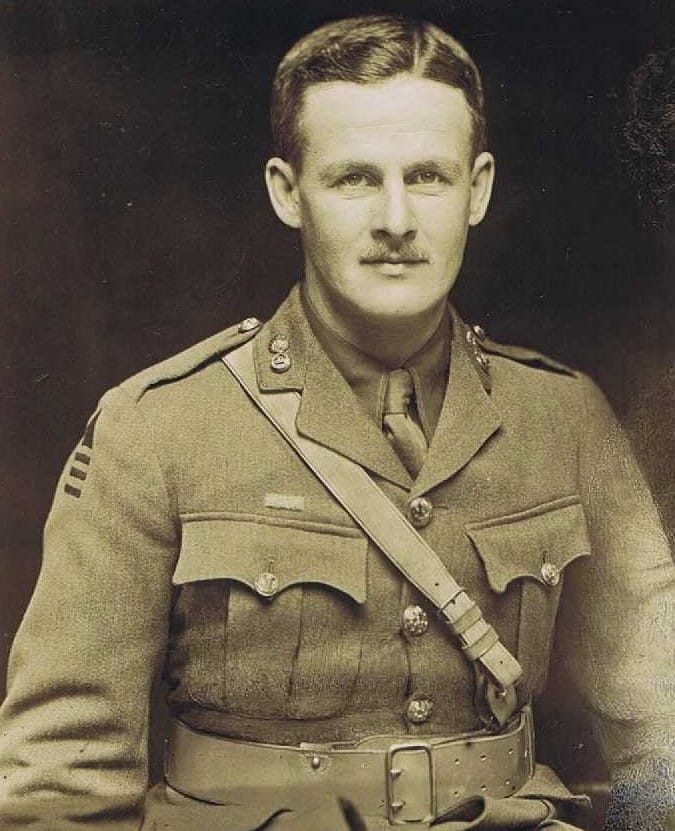
Herbert Ward Milligan (1884-1917)
Herbert Milligan was born in 1884 and matriculated in 1903. While at Worcester College he was a member of the Rugby Football XV from 1904 to 1906. He graduated BA in 1907 and subsequently worked for the civil service in Ceylon [Sri Lanka]. On the outbreak of war he joined the Ceylon Planters Rifle Corps and sailed for Egypt where he was involved in fighting on the Suez Canal. In July 1915, Herbert Milligan was given a commission in the 1st Battalion Lancashire Fusiliers and he was wounded with them at Gallipoli. Following recovery in England he fought at the Battle of the Somme and was again wounded. Lieutenant Herbert Milligan was killed in action at Noyelles, near Cambrai, on 21 November 1917.
Photograph chosen for the memorial volume by his wife, Bertha Milligan.
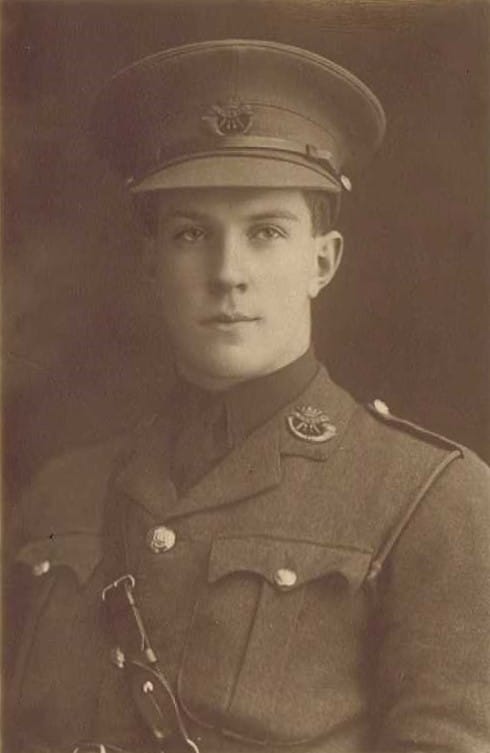
James Edmond Pringle Rae (1892-1917)

James Edmond Pringle Rae (1892-1917)
Pringle Rae was born in South Africa in 1892 and entered Worcester College in 1911 with a classics scholarship. While at the College he was a member of the Philistines Club (an undergraduate literary society). Pringle Rae had completed his third year at Oxford and was preparing for the Indian Civil Service examinations when, upon the outbreak of war, he joined the Officer Training Corps at Pembroke College, Cambridge. Pringle Rae obtained his commission in the Duke of Cornwall’s Light Infantry in September 1914 and went to the Front in July 1915, serving with the same battalion until his death. Major J. E. Pringle Rae was killed in action at Les Rues Vertes, Cambrai, on 30 November 1917.
Photograph chosen for the memorial volume by his mother, Eileen Rae.
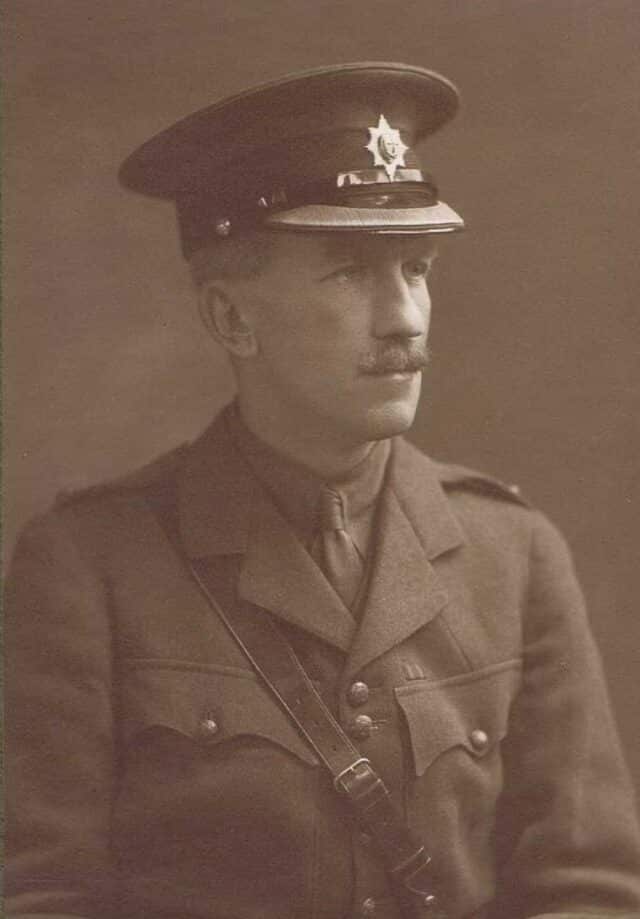
Claude Martin (1877-1917)
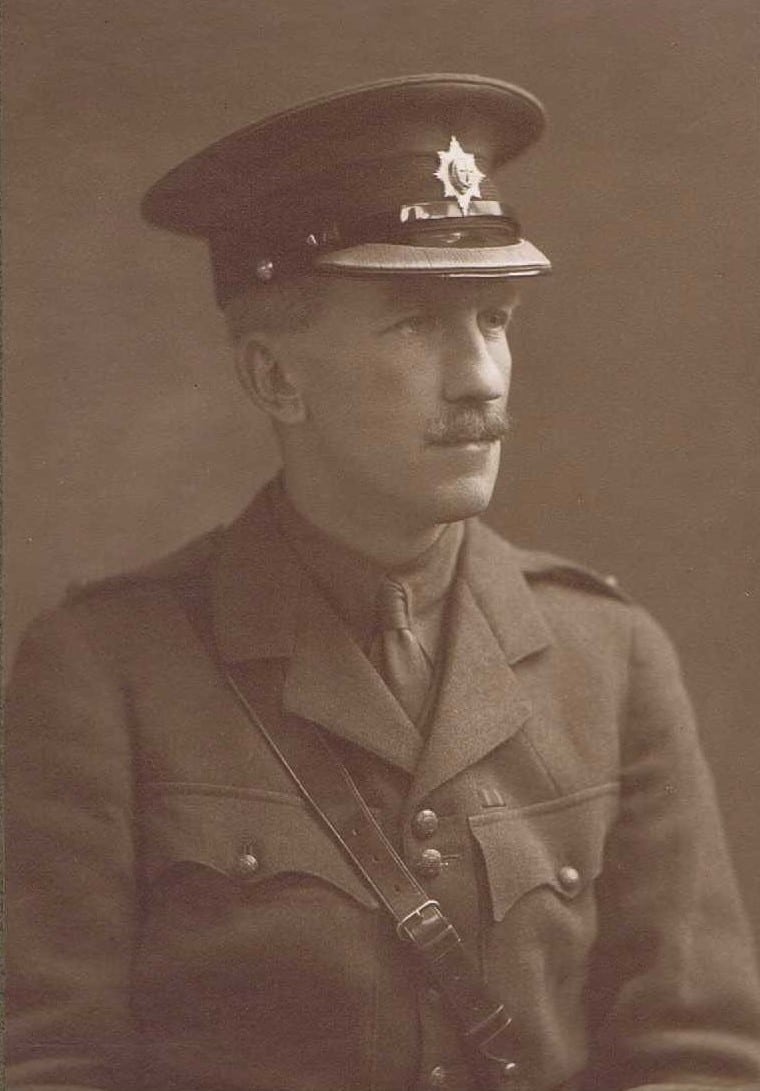
Claude Martin (1877-1917)
Claude Martin was educated at Sherborne School and gained an exhibition to Worcester College, matriculating in 1896. He fought in the South African War, receiving a commission in the Manchester Regiment in May 1900, and in 1902 went into business. In February 1916 he volunteered for service and received a commission in the Coldstream Guards, with whom he went to France in July 1917. Second Lieutenant Claude Martin was killed in action at St Quentin Ridge, near Masnières, on 1 December 1917.
Photograph chosen for the memorial volume by his parents.

Thomas Henry Spiers Townsend (1877-1917)

Thomas Henry Spiers Townsend (1877-1917)
Thomas Townsend was a member of staff at Worcester College from c 1900, working as an underporter and servant to Henry Cunningham, fellow and tutor in history. He enlisted in the autumn of 1915 and joined the 59th Division of the Royal Horse Artillery and Royal Field Artillery in Dublin, where he witnessed the Easter Rising in 1916. Gunner Thomas Townsend was then sent to Flanders, where he died of wounds on 10 December 1917.
The College Archives holds very little information on former members of staff. The information in this biography is reproduced from the website of the 66 Men of Grandpont project by kind permission of Liz Woolley.
Members who died in 1918

Norman Curtis Hartley (1898-1918)

Norman Curtis Hartley (1898-1918)
Norman Hartley was educated at Bromsgrove School and won a scholarship to Worcester College in 1917, however his service commenced in February of that year before he could matriculate. He served in France with the Royal Field Artillery. Second Lieutenant Norman Hartley was killed in action near Marcoing on 20 January 1918.
Unfortunately the College has no photographs of Norman Hartley.

Ronald Morley Hooper (1878-1918)

Ronald Morley Hooper (1878-1918)
Ronald Hooper entered the College in 1896 with a mathematics scholarship, and achieved first class honours in mathematical moderations in 1898 and graduated with second class honours in mathematics in 1900. His service commenced on 21 December 1915. Lieutenant Ronald Hooper was killed in action near Lebucquière, France, on 21 March 1918.
Unfortunately the College has no photographs of Ronald Hooper.
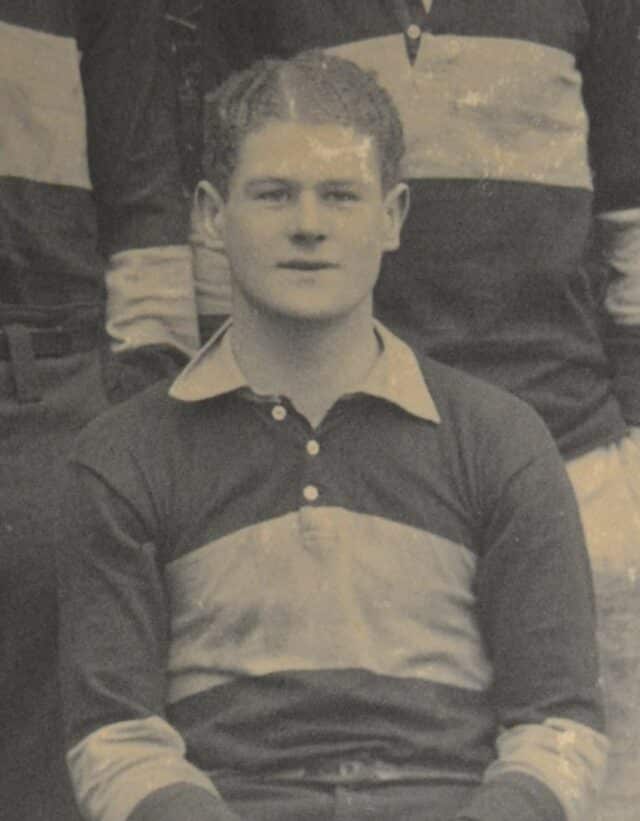
(John) Philip Higgs (c1891-1918)
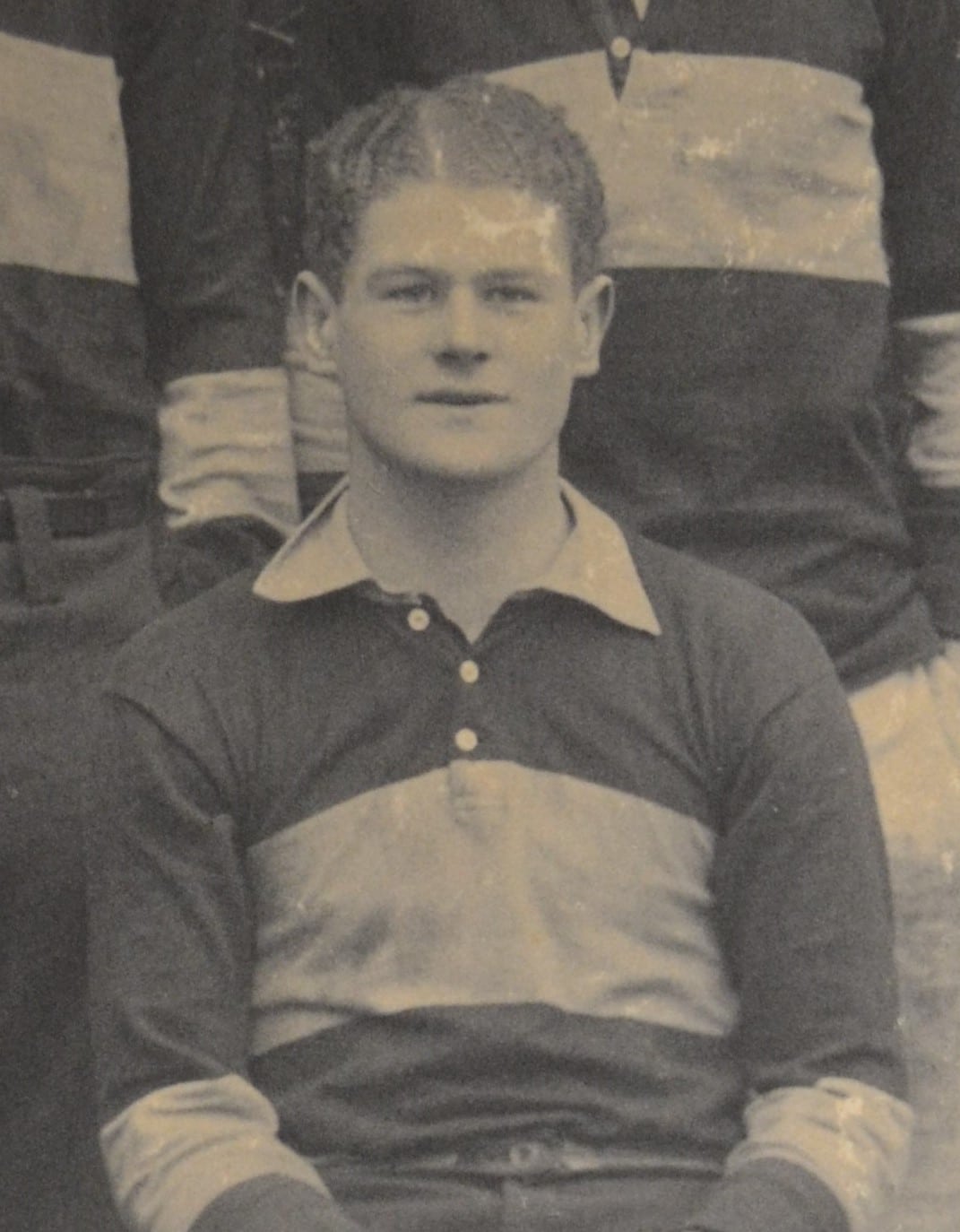
(John) Philip Higgs (c1891-1918)
Philip Higgs matriculated in 1909 and graduated with honours in Classics in 1913. During his time at Worcester College he was a member of the Lovelace Club (a literary society), played for the College Rugby team and rowed for the College Eight in 1910, 1911 and 1913, when they achieved 6 bumps. After his death his sister wrote to the Bursar that “he always said the happiest time of his life was at Oxford”. He entered the army in June 1915 and served in France. Lieutenant Philip Higgs died on 14 April 1918 of wounds received in action on 1 April at Rifleman Wood near Domart.
Image taken from a photograph of the College Rugby XV in 1911.
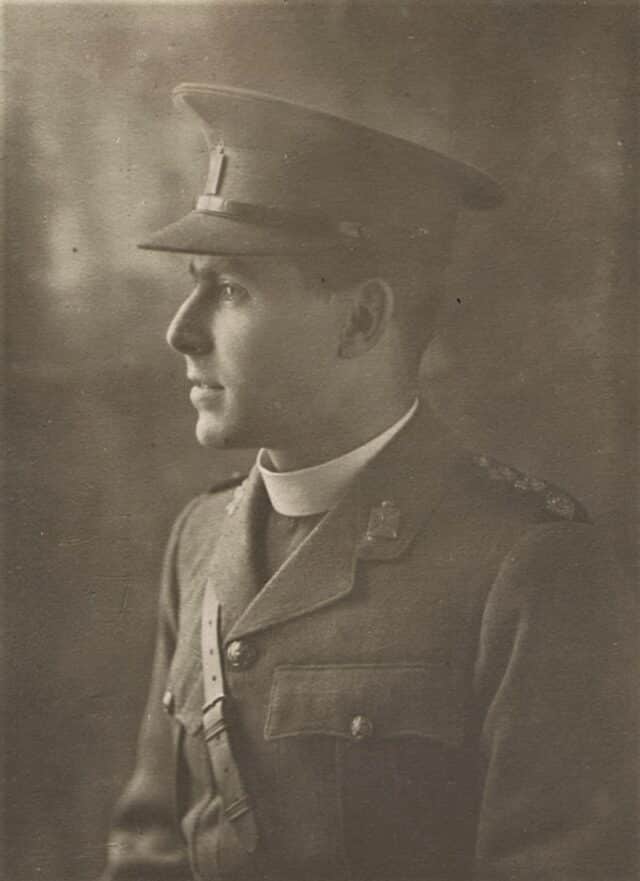
Richard Arthur Pell Colborne (1886-1918)
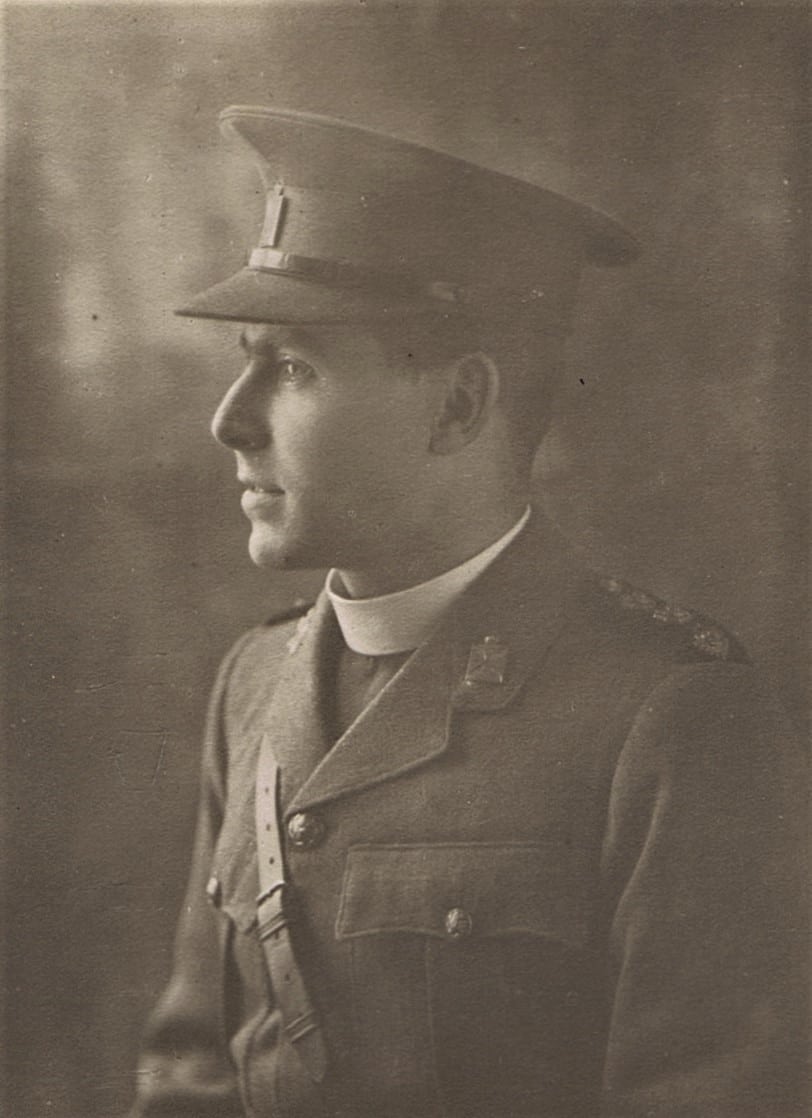
Richard Arthur Pell Colborne (1886-1918)
Dick Colborne was born in Suffolk in 1886 and entered Worcester College in 1905. During his time in Oxford he was a member of the College Association Football team. He achieved second class honours in Theology in 1909 and, following a short time as a school master, was ordained and served in several parishes up to 1917. His service commenced in March 1917, when he was sent to France as Chaplain to the London Regiment. Dick Colborne was badly gassed in December 1917 but recovered and returned to France, cutting short his leave, when he heard of the German Spring Offensive in March 1918. The Reverend Richard Colborne was killed in action near Arras on 28 May 1918 while bringing wounded soldiers back to the British lines.
Photograph chosen for the memorial volume by his parents.
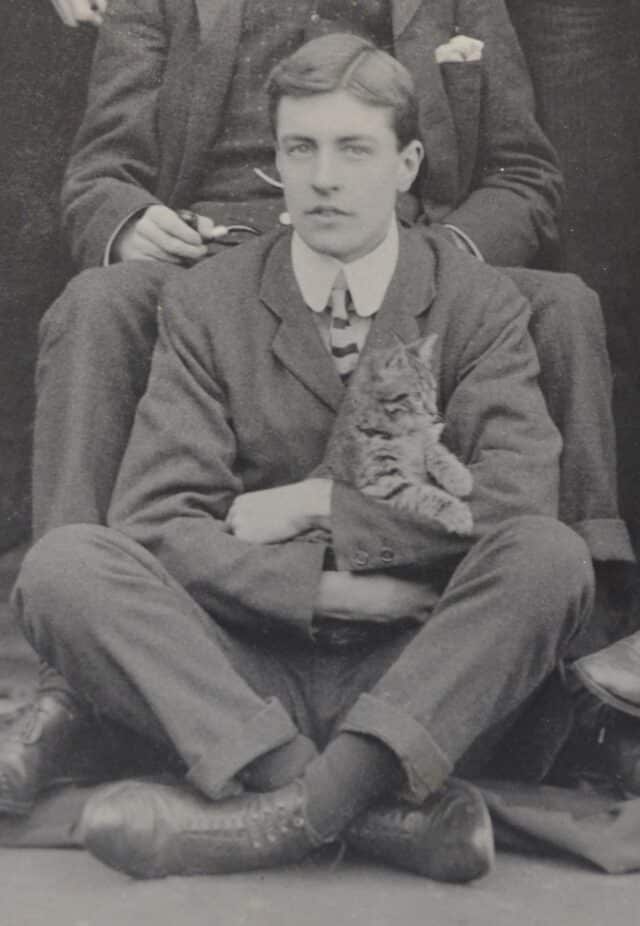
Napier Guy Sheppey-Greene (1883-1918)
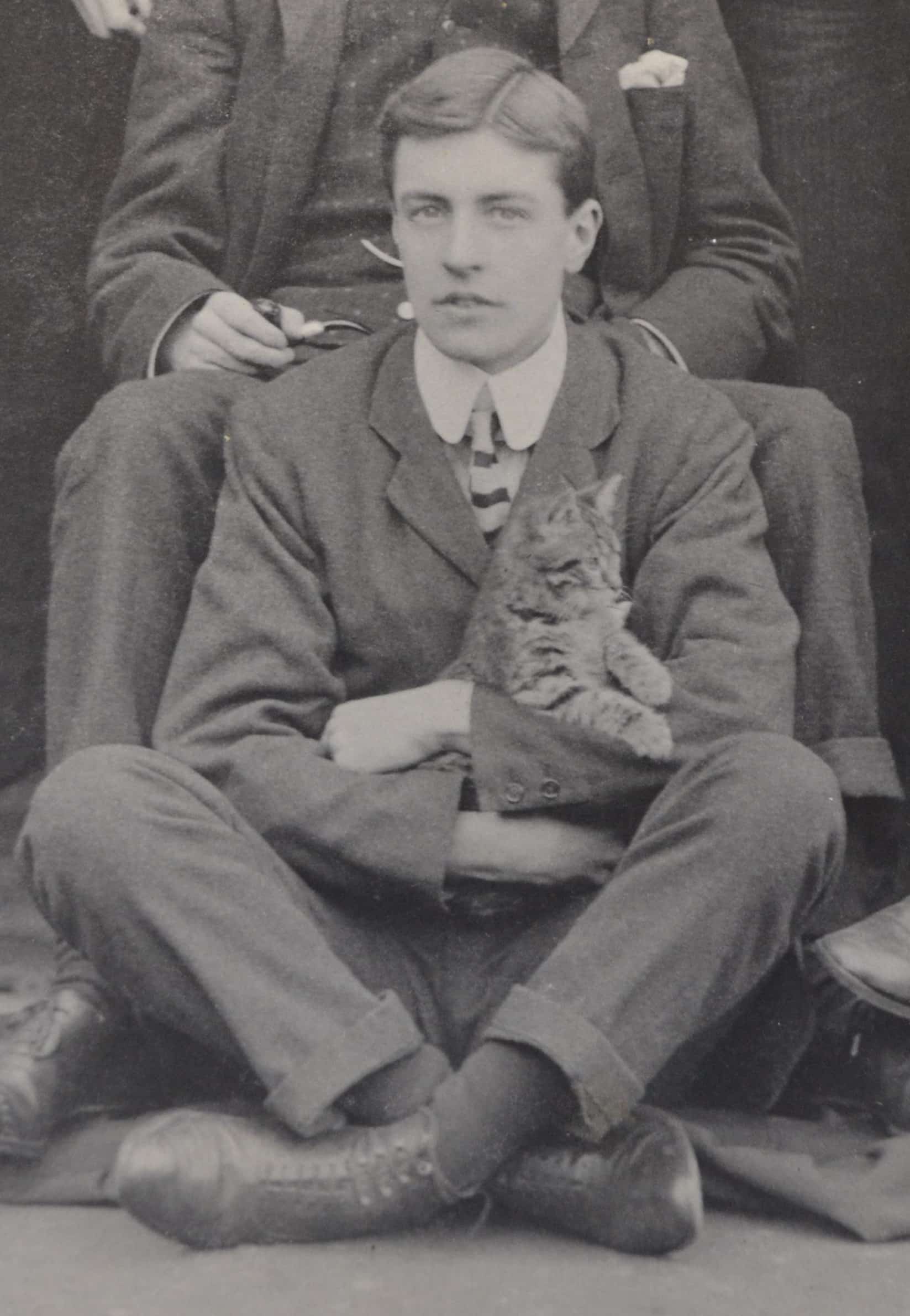
Napier Guy Sheppey-Greene (1883-1918)
Napier Sheppey-Green entered Worcester College in 1902 with an exhibition in history and achieved third class honours in Modern History in 1906. He was the cox of the College Torpid in 1903 and 1904, and cox of the Eight from 1904 to 1906. He was ordained in 1907. The Reverend Napier Sheppey-Green served as a temporary chaplain to the forces from September 1914 to June 1915 when his appointment ended, after which he applied for a commission in the army. His service with the Royal West Kent Regiment commenced on the 15 September 1915. Second Lieutenant Napier Sheppey-Greene died on 14 June 1918 of wounds received in action in France.
Image taken from a photograph of the College Torpid in 1903.
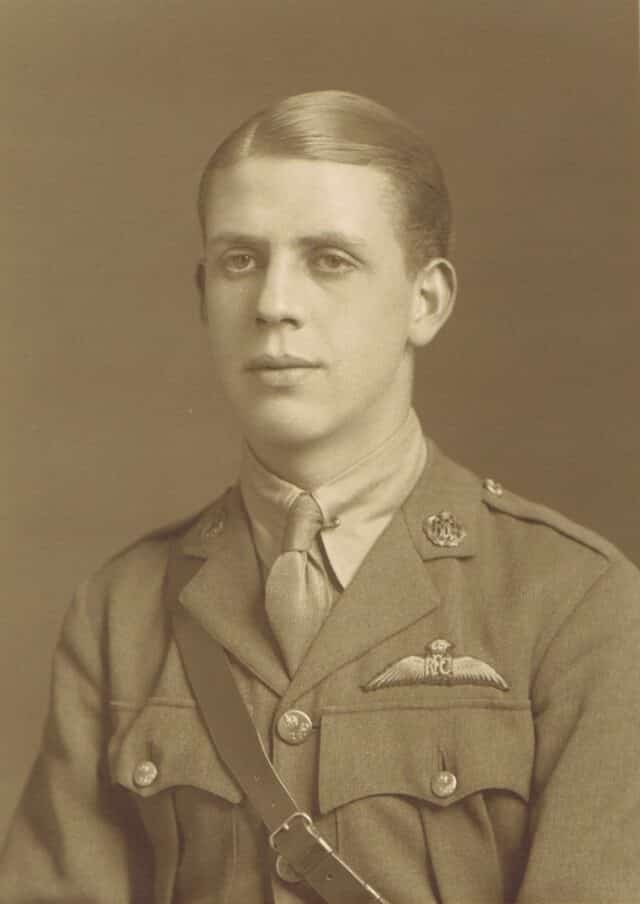
Charles Railton Whitelock (1898-1918)
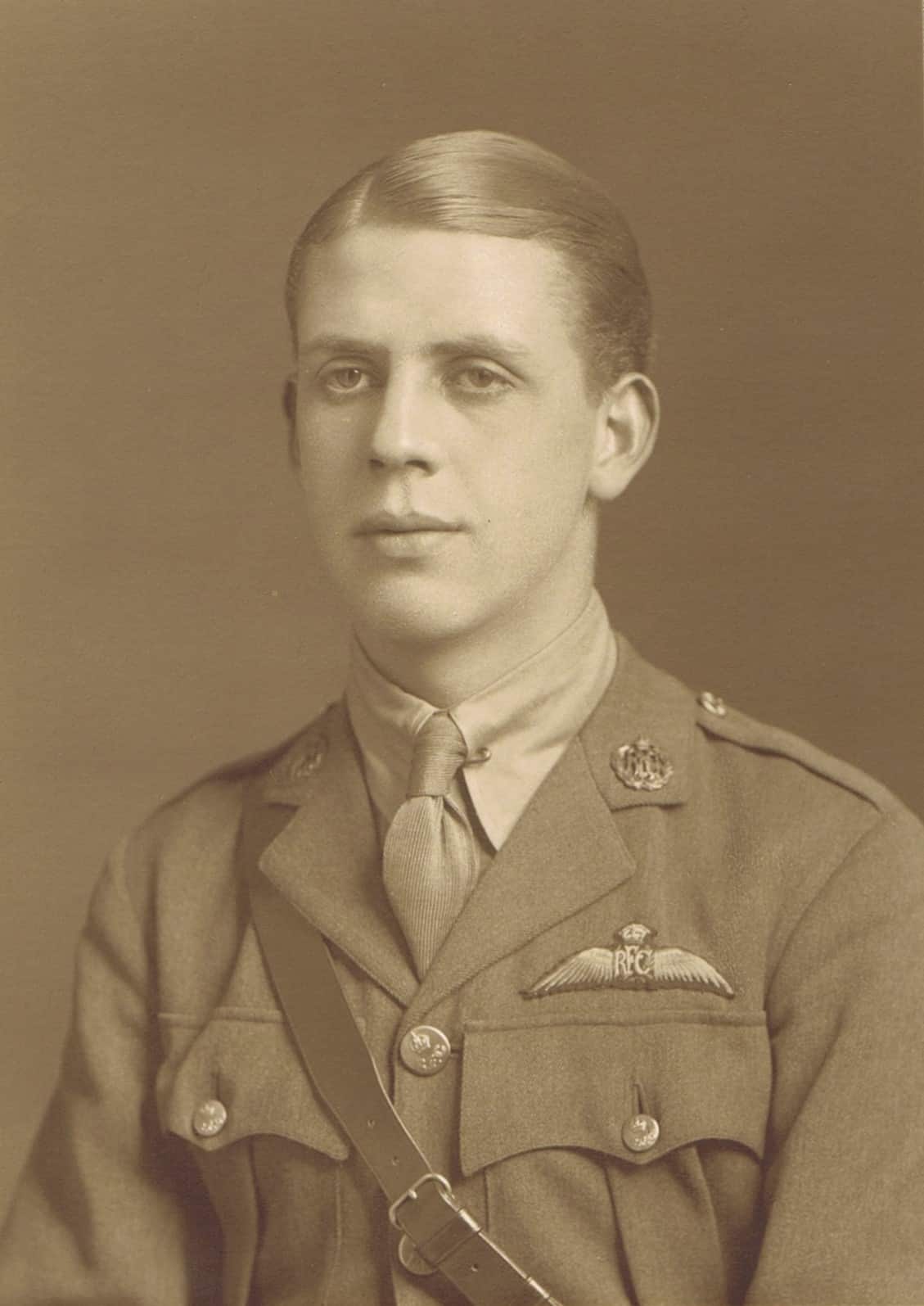
Charles Railton Whitelock (1898-1918)
Charlie Whitelock was born in 1898 and attended Barnsley Grammar School. He entered Worcester College in October 1916 but obtained a commission in the Royal Flying Corps in August 1917; his parents later wrote to the Bursar that “his thoughts were much occupied with military matters” during his time in Oxford. After a period of training he was sent to Eastern France to join the Independent Air Force in February 1918, where he conducted bombing raids on munitions factories in Germany. Lieutenant Charles Whitelock was killed in action near Charmes on 16 July 1918.
Photograph chosen for the memorial volume by his parents.

John Kenneth Samuel Page (1896-1918)

John Kenneth Samuel Page (1896-1918)
John Page was offered a place at Worcester College from Michaelmas Term 1914, but chose to enter the army at the outbreak of war in August before he could matriculate. He served for four years and saw action in Gallipoli, Egypt and France. Captain John Page died on 22 August 1918 of wounds received in action in France; he was posthumously awarded the Military Cross on 16 September 1918 for holding up German advances and enabling his battalion to safely withdraw.
Unfortunately the College has no photographs of John Page.
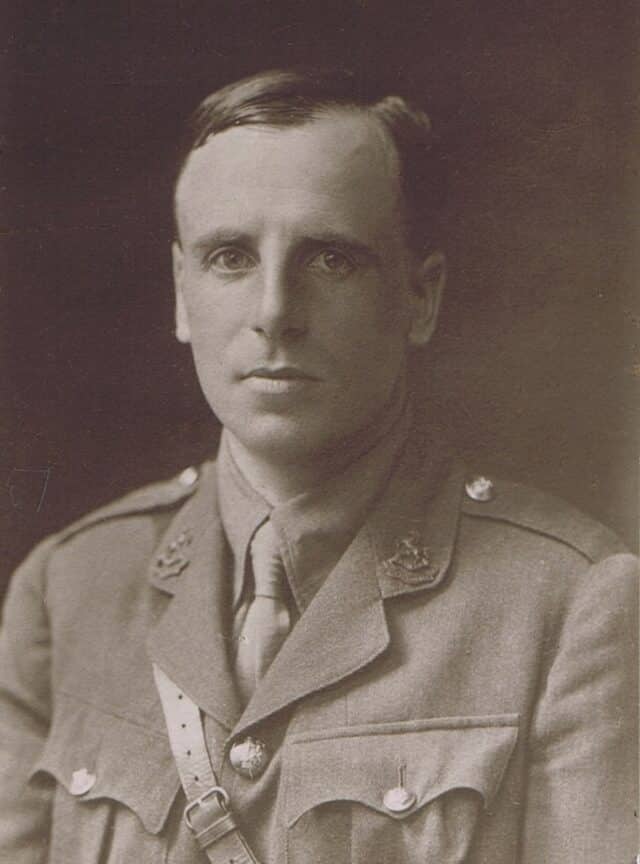
Herbert Wood (1887-1918)
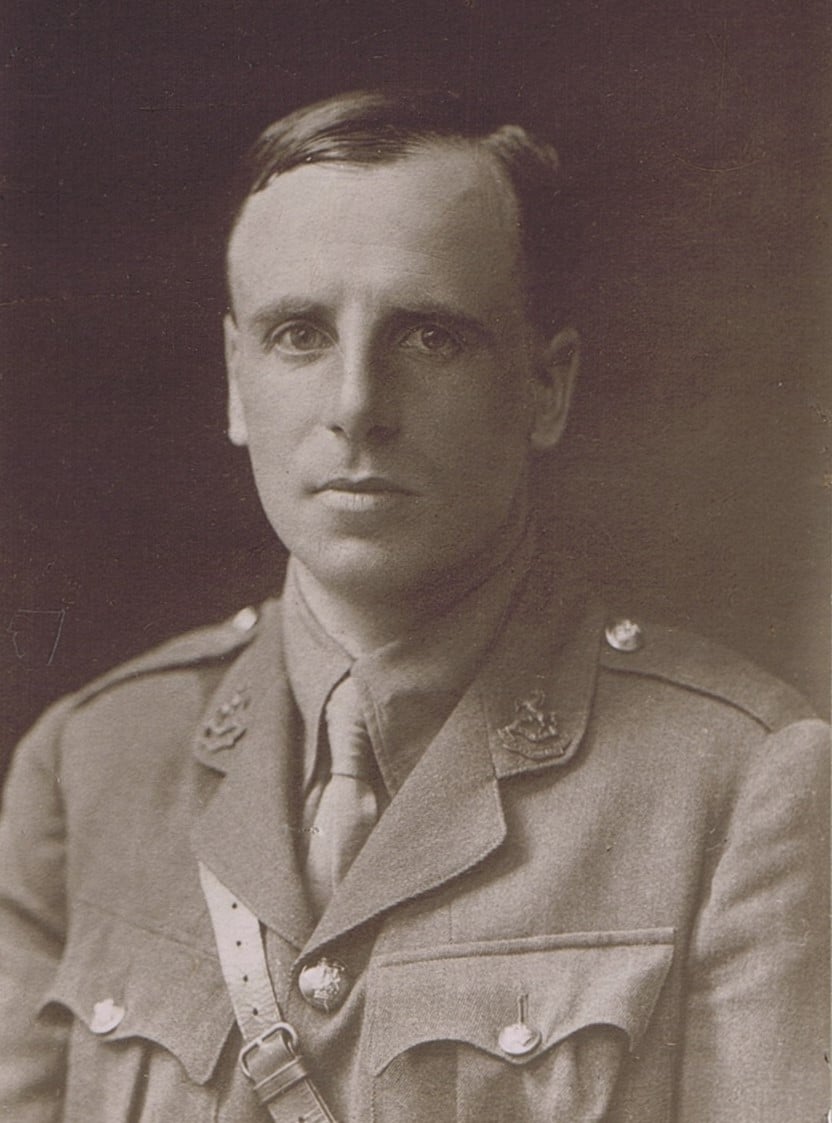
Herbert Wood (1887-1918)
Herbert Wood entered Worcester College in 1906 and graduated in 1909 with honours in Modern History. After graduation he became a school master teaching history and Latin. He married Constance Webb in July 1915 and three days later joined the Army as a cadet in the Inns of Court Officer Training Corps. Herbert Wood received a commission in the 20th London Regiment in November 1915 and was sent to France in the spring of 1916. He was severely wounded at the Battle of the Somme in September 1916 and after a lengthy stay in hospital was confined to Home Service for 1917. He returned to France in July 1918 and was acting as the intelligence officer of his battalion at the time of his death. Lieutenant Herbert Wood was killed in action at St Pierre Vaast Wood on 1 September 1918.
Photograph chosen for the memorial volume by his wife, Constance Wood.

John Hammond Fisher (1898-1918)

John Hammond Fisher (1898-1918)
John Fisher was offered a place at Worcester College for Michaelmas Term 1917, but his service commenced on 1 August that year before he could matriculate. He served in France with the 6th West Yorkshire Regiment and the King’s Own Yorkshire Light Infantry. Second Lieutenant John Fisher died on 7 September 1918 of wounds received in action. He was posthumously awarded the Military Cross and the Croix de Guerre with Gold Star.
Unfortunately the College has no photographs of John Fisher.
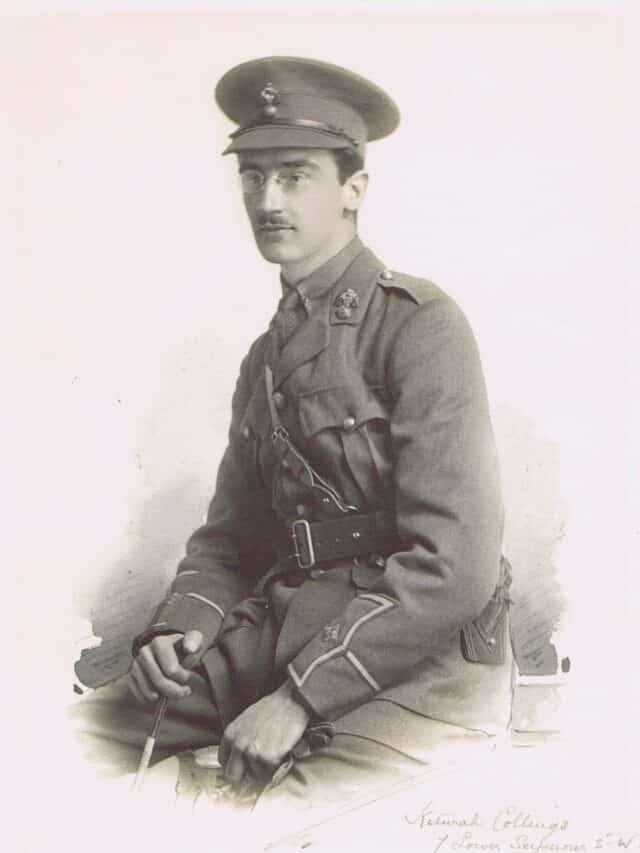
Percy Baglietto Cottrell (1893-1918)
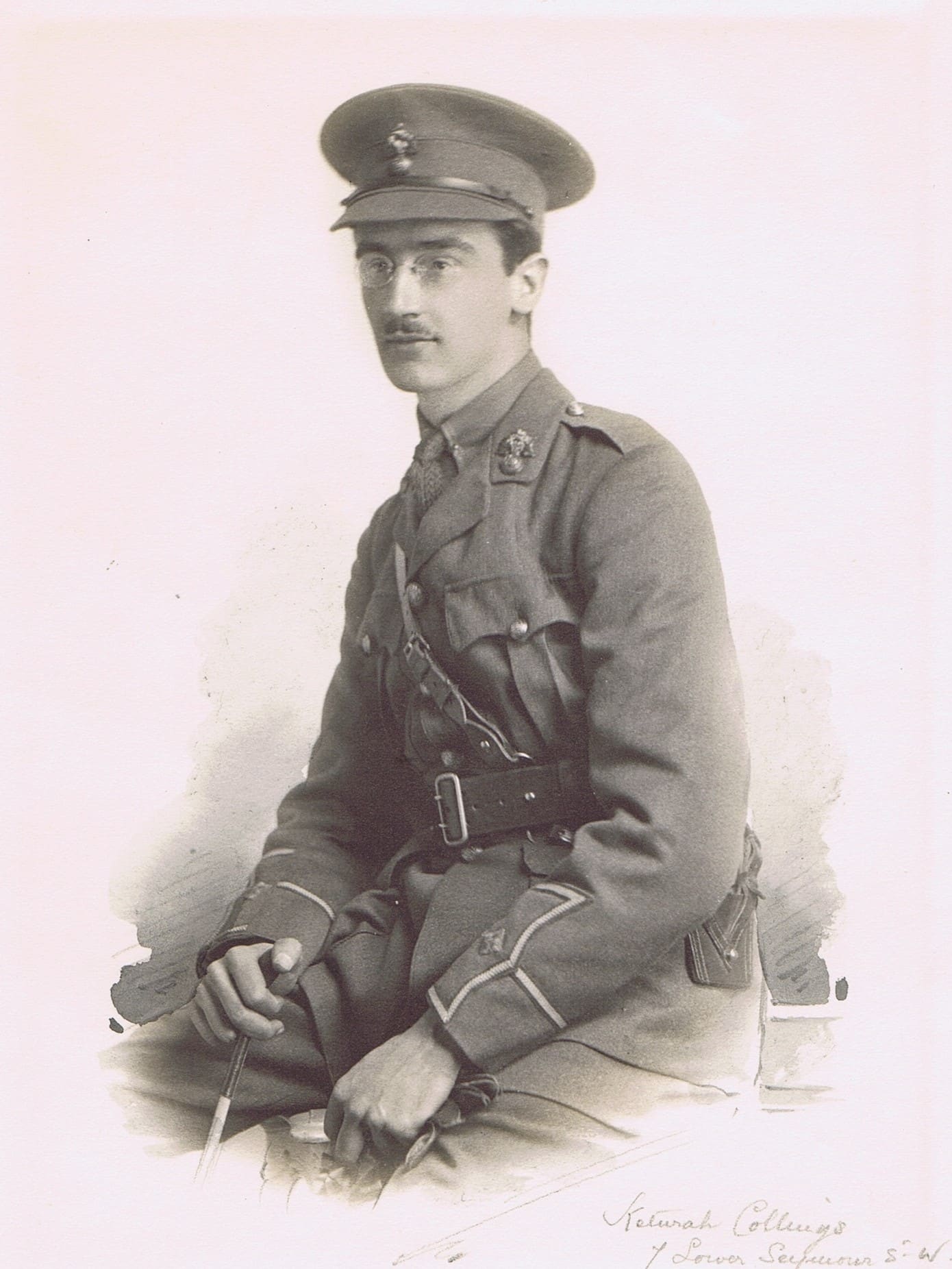
Percy Baglietto Cottrell (1893-1918)
Percy Cottrell was educated at The King’s School, Canterbury and entered Worcester College in 1912 with a Classics Exhibition. During his time at the College he was a member of the Philistines Club (a literary society) and the Boat Club, and rowed in the Eight in 1913 which achieved 6 bumps. He joined the army at the outbreak of the war in August 1914 and did not return to complete his degree. He served first in France in 1915, and then on the Macedonian Front where he worked in the Intelligence Corps as a Greek interpreter. Lieutenant Percy Cottrell died on 27 September 1918 of wounds received 9 days earlier in action at Snevce. He was posthumously awarded the Military Cross, the Greek Order of the Redeemer and the Greek Military Cross in early 1919.
Photograph chosen for the memorial volume by his father, W. H. Cottrell.

Archibald Hugh O’Farrell (1899-1918)

Archibald Hugh O’Farrell (1899-1918)
Archibald O’Farrell was due to enter the College in Michaelmas Term 1917, but chose to enter the army first and his service commenced on 3 January 1918. Second Lieutenant Archibald O’Farrell served with the Irish Guards in France and was killed in action at Flesquières on 27 September 1918.
Unfortunately the College has no photographs of Archibald O’Farrell.
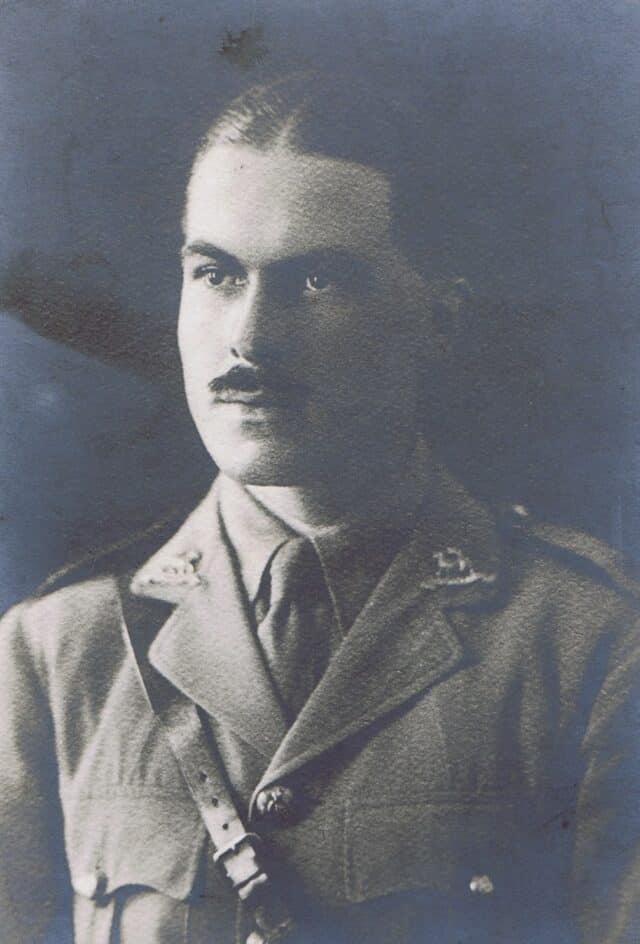
Lionel Fletcher Hadwen Beach (1892-1918)

Lionel Fletcher Hadwen Beach (1892-1918)
Lionel Beach matriculated in 1910, and while at Oxford was a prominent member of the College Boat Club; he rowed in the 1914 Torpid crew which achieved 6 bumps. He also joined the Oxford University Officer Training Corps and in 1914 was promoted to Lance-Corporal. Lionel Beach joined the army at the outbreak of war and served in Gallipoli in 1915 and then in Egypt and Palestine from 1916 to 1918. His BA was conferred in absence in October 1916, after he had joined the army. He was awarded the Distinguished Service award in August 1917 and also mentioned in dispatches that year. He was severely wounded in action near Jerusalem in December 1917 and invalided back to England in March 1918, where he remained in hospital until the 9th of November. Captain Lionel Beach died of influenza on 28 November 1918.
Photograph chosen for the memorial volume by his father.
Members who died in 1919

Thomas Wright Rankin (c1881-1919)

Thomas Wright Rankin (c1881-1919)
Thomas Rankin matriculated in 1899 and graduated in 1902. The College Archives contains very little information on his time at the College or his further career, and the Roll of Service simply records that he was a private with the Royal Fusiliers. Thomas Rankin died on 21 January 1919 while on active service.
Unfortunately the College has no photographs of T W Rankin.
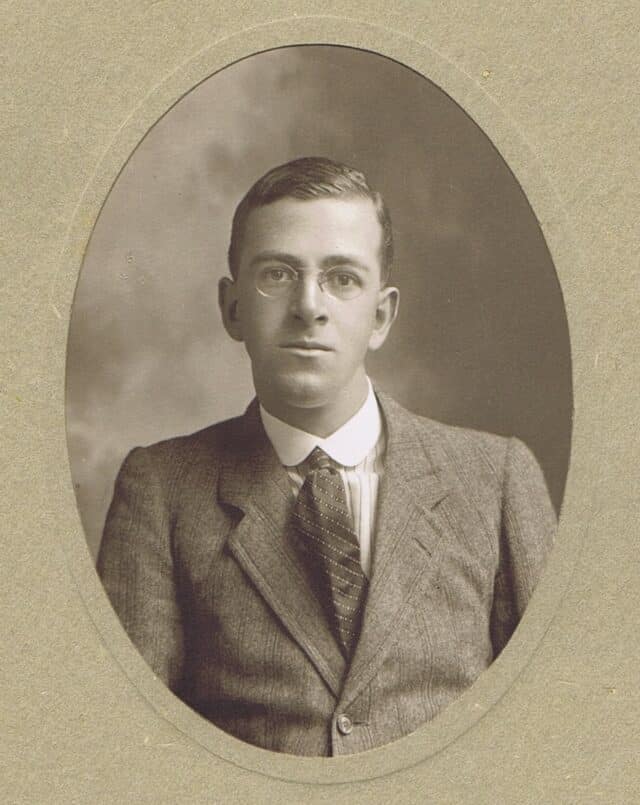
Gerald Lisle Alexander de Rougemont (1888-1919)
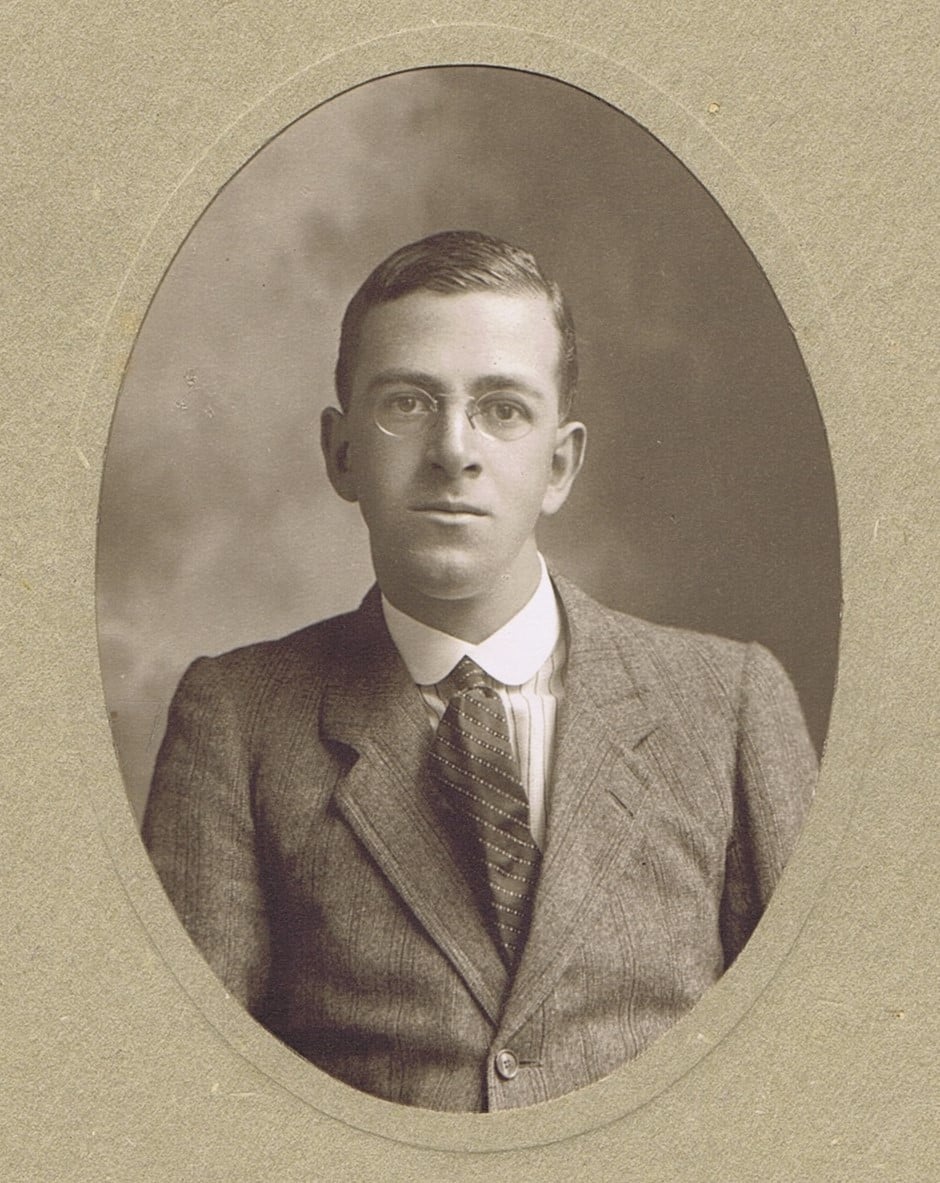
Gerald Lisle Alexander de Rougemont (1888-1919)
Gerald de Rougemont was educated at Newton College in Devon before obtaining a Classical Scholarship at Worcester College. He matriculated in 1907 and graduated in 1910. Gerald de Rougemont joined up in December 1915 and in 1916 was sent to the Macedonian Front where he contracted malaria. He survived the war and was invalided home in January 1919 where he resumed work as a solicitor’s clerk, but suffered an attack of malaria and blackwater fever in late May 1919 from which he never recovered. Gerald de Rougemont died on 10 August 1919 of illness contracted while on active service.
Photograph chosen for the memorial volume by his mother, Matilda de Rougemont.
SECOND World War
Members who died in 1940
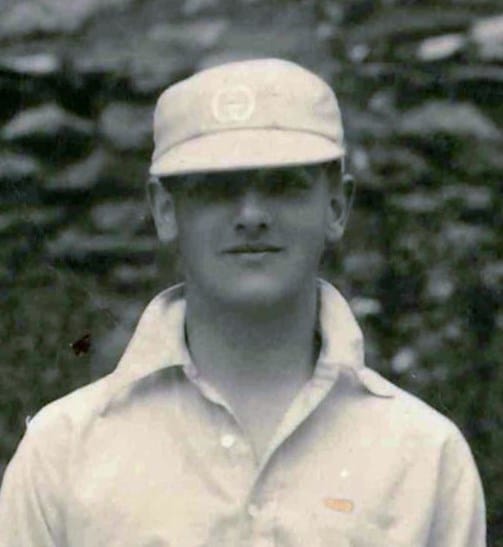
Geoffrey Walter Hewett (1910-1940)

Geoffrey Walter Hewett (1910-1940)
Geoffrey Walter Hewett was born at Hampstead in London on 19 July 1910, the son of Rose (née Alderton) and Walter Hewett, a solicitor. He was educated at Mr A. North’s School at Warren Hill, Eastbourne, and then at Clifton College from 1924 to 1928 where he played for his house and the school 2nd cricket XI.Geoffrey Hewett entered Worcester College on 11 October 1929, and was a member of the College Cricket XI, and the Oxford University Officer Training Corps. He achieved 3rd class honours in Modern History in 1932 and subsequently became a solicitor with his father’s firm of Devonshire, Wreford, Brown, Hewett, Baggallay & Co. On the 30 May 1932 he was commissioned as a 2nd Lieutenant in the 63rd (6th London) Field Brigade, Royal Artillery (TA) and he was promoted to Captain on 19 March 1938. That year he married Frances Lodge.
Geoffrey Hewett was mobilised on the outbreak of war and went with his unit to France in November 1939. Major Geoffrey Hewett was killed by artillery fire on 27 May 1940 at Ploegsteert Wood in Belgium during the retreat to the coast. He was 29 years old.
Geoffrey Hewett is buried in Bedford House Cemetery in Belgium and commemorated on the war memorials at Clifton College and Worcester College, Oxford.
Photograph and school information courtesy of Clifton College; further information from TNA – 52nd Anti Tank Regiment war diaries, WO 166/1625.
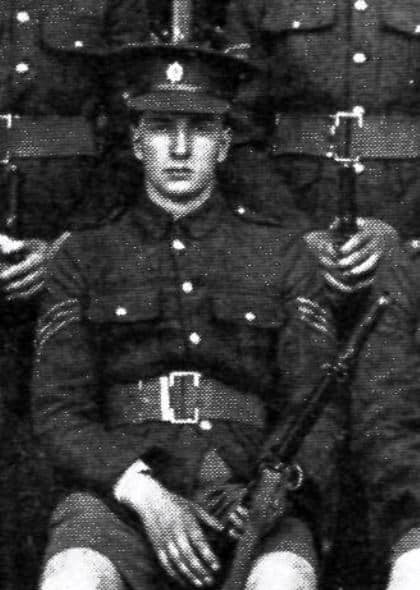
John Ker Cross (1911-1940)

John Ker Cross (1911-1940)
John Ker Cross was born in Shropshire on 24 August 1911, the son of Lily (née Pinckney) and James Hamish Cross, a civil engineer and managing director of a quarry. He was educated at Bromsgrove School from 1925 to 1930 where he was a member of the Officer Training Corps and the Shooting VIII; he represented the school at Bisley in July 1930. He was also a member of the School Debating Society.John Cross entered Worcester College, Oxford, on 10 October 1930, but left without taking a degree. He worked as a chartered accountant before his commission as a 2nd Lieutenant in the Highland Light Infantry on 9 March 1940. His battalion was posted to France, where they were based when the German attack on France and the Low Countries began on 10 May 1940, and formed part of the rear-guard for the British retreat to the coast. On 29 May 1940 they came under attack from enemy tanks and mortar fire at the village of Rexpoëde, to the south-west of Dunkirk, and Second Lieutenant John Cross was killed in action, aged 28.
John Cross is buried at Rexpoëde Communal Cemetery and commemorated on the war memorials at Bromsgrove School and St John’s Church, Ditton Priors. He does not appear on the Worcester College memorial as the College did not learn of his death until 1952.
Photograph and school information courtesy of Bromsgrove School Archives; further information from TNA – 1st Battalion HLI war diaries, WO 166/4288, 1st Battalion HLI missing men, WO 361/75.
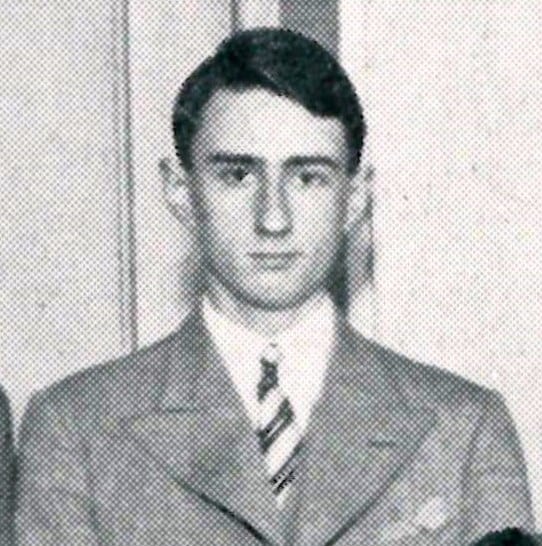
Alfred Highfield Warren (1917-1940)

Alfred Highfield Warren (1917-1940)
Alfred Highfield Warren was born on 22 May 1917, the son of Agnes (née Highfield) and Alfred Warren, a master grocer. He was educated at Nottingham High School from 1929 to 1936, where he was a prize winner for modern languages and history. He entered Worcester College, Oxford, on 9 October 1936 and achieved 3rd class honours in Modern History in 1939.Alfred Warren was commissioned as a 2nd Lieutenant in the East Yorkshire Regiment on 15 October 1939 and was posted to the 2nd Battalion of his regiment. He joined the Battalion in France. On 30 May 1940 Lieutenant Alfred Warren was killed in a defensive action at the Yser Canal near the village of Dixmunde in Belgium, aged 23.
Alfred Warren is buried at Wulpen Churchyard in West-Vlaanderen, Belgium. He is commemorated on the war memorials at Nottingham High School and Worcester College, Oxford.
Photograph and school information courtesy of Nottingham High School Archives; further information from TNA – 2nd Battalion East Yorkshire Regiment war diaries, WO 167/850; and P. R. Nightingale, A History of the East Yorkshire Regiment (Duke of York’s Own) in the War of 1939-1945, (1998).
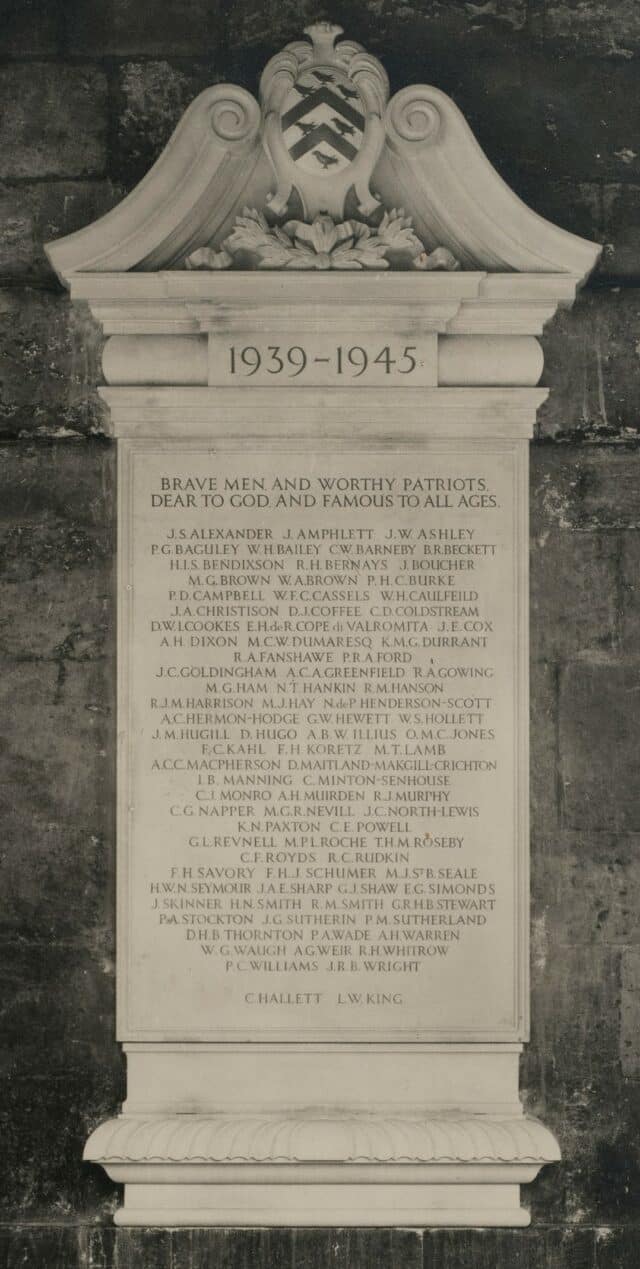
Richard Melville Smith (1917-1940)
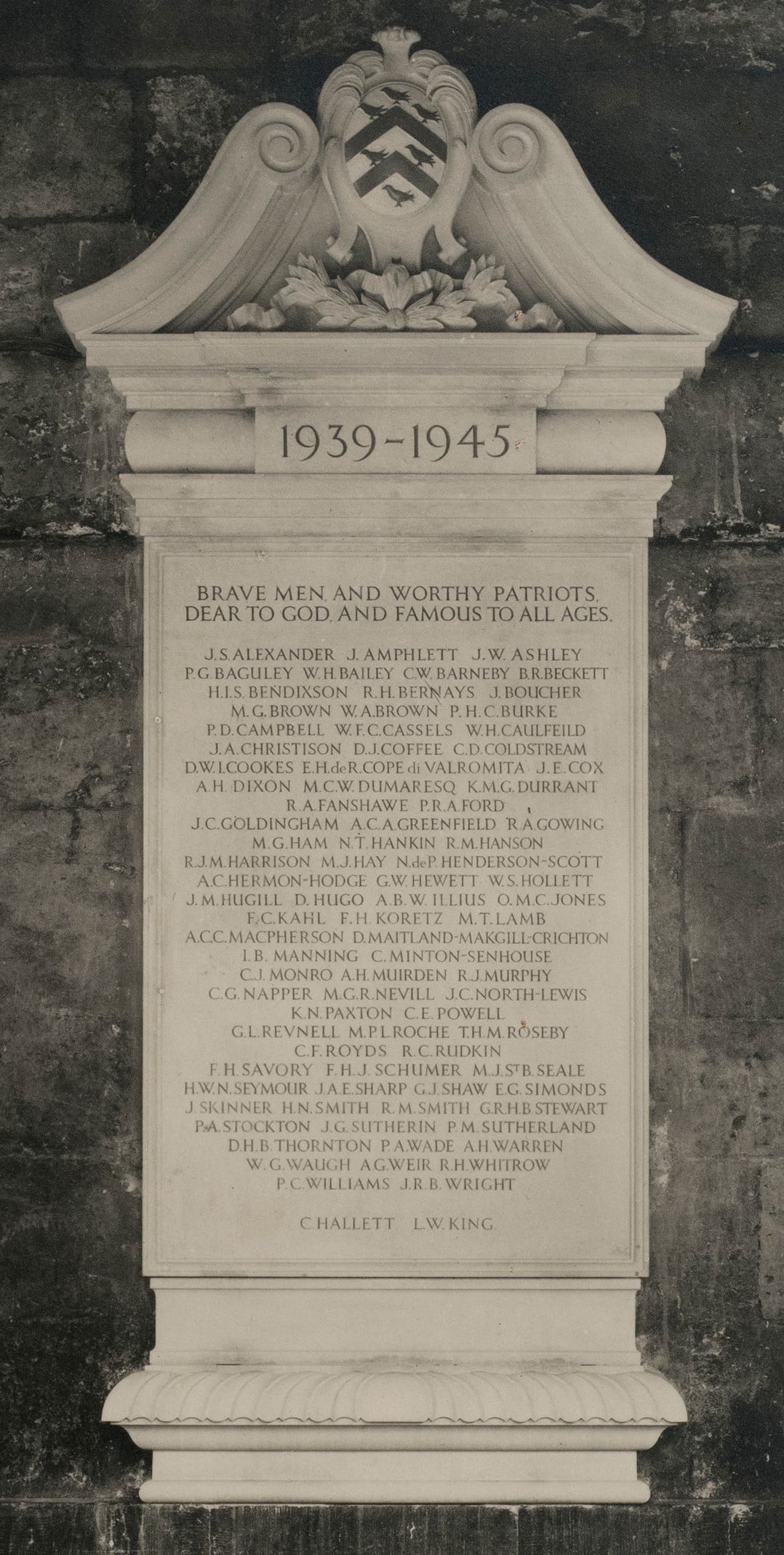
Richard Melville Smith (1917-1940)
Richard Melville Smith was born on 23 September 1917, the elder son of Elizabeth (née Morrisson) and Robert Smith MBE, an electrical engineer. During the early part of his life his family lived in Hong Kong. Richard Smith was educated at Bromsgrove School from 1931 to 1936, where he was awarded his sports colours in July 1935, and served in the School’s Officer Training Corps. He entered Worcester College, Oxford, on 9 October 1936, and achieved 3rd class honours in Jurisprudence in 1939.
Richard Smith joined the army in 1939 as a Sapper in the 225th Field Company Royal Engineers, who embarked for overseas service on 14 January 1940, arriving at Le Havre in France that evening. On 10 May 1940, when the Germans invaded France and the Low Countries, the unit was at La Madeline on the Belgian border. They joined the retreat to the coast a few days later, and were subsequently evacuated from Dunkirk, but Richard Smith was among the missing. Sapper Richard Smith was later determined to have been killed in action between 31 May and 2 June 1940, aged 22.
Richard Smith is commemorated on the Dunkirk Memorial, and on the war memorials at Bromsgrove School and Worcester College, Oxford. In 1942 his family donated his law books to the College Law Library.
School information courtesy of Bromsgrove School Archives.
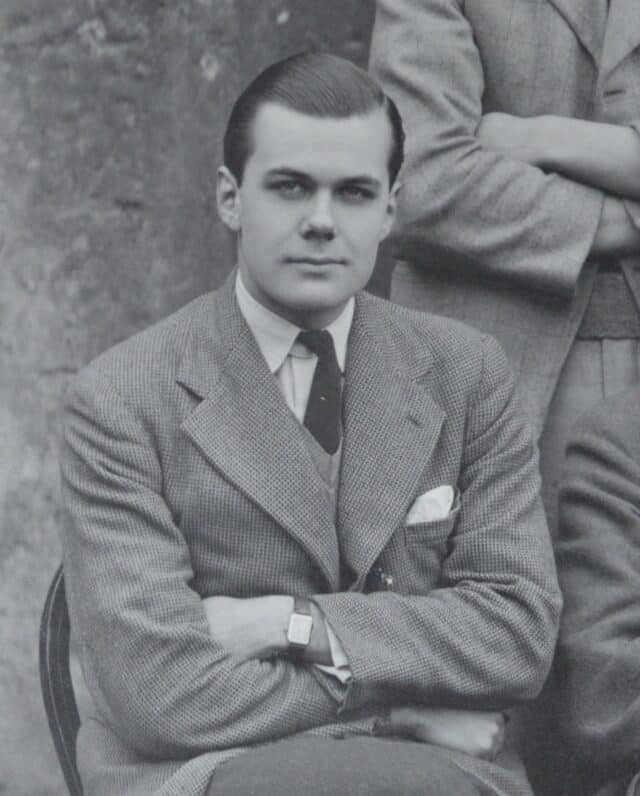
Patrick Armigel Wade (1918-1940)
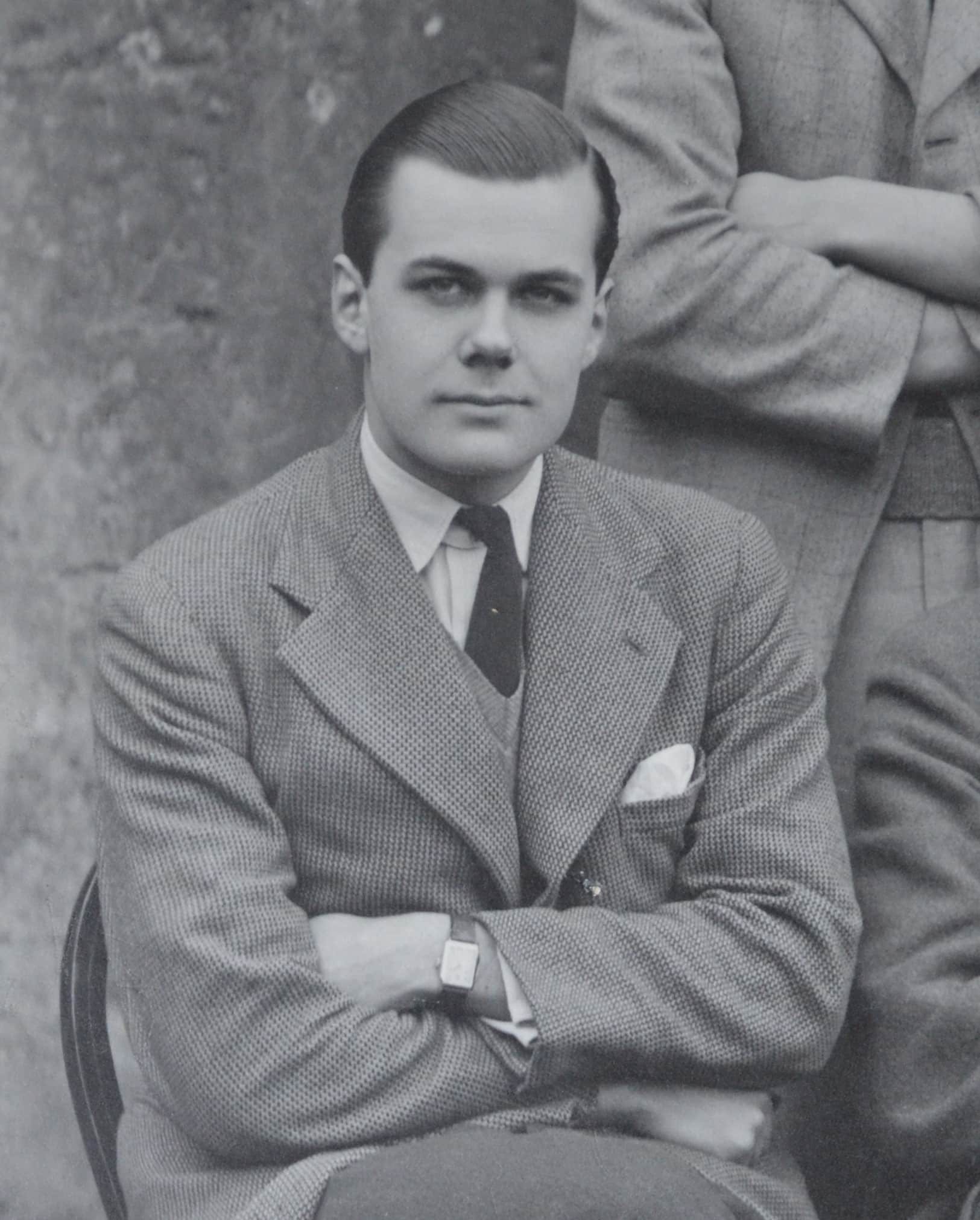
Patrick Armigel Wade (1918-1940)
Patrick Armigel Wade was born in Alton, Hampshire on 24 November 1918, the elder son of Dr Richard Wade MD and Constance (née Lord). He was educated at Charterhouse School from 1932 to 1937 and entered Worcester College, Oxford on 8 October 1937. While at Worcester he was a member of the College Boat Club and rowed in the 2nd Torpid in 1938. He did not return to the College for his third year as he was expecting to be called up.Officer Cadet Patrick Wade died on 29 July 1940 at Lulworth Camp in Dorset while undergoing officer training with the Royal Armoured Corps. He was 21 years old.
Patrick Wade is buried at Holy Rood Church, Wool, in Dorset. He is commemorated on the war memorials at Charterhouse School and Worcester College, Oxford.
Photograph of Patrick Armigel in the Worcester College 2nd Torpid, 1938, Worcester College Archives; school information courtesy of Charterhouse School Archives.
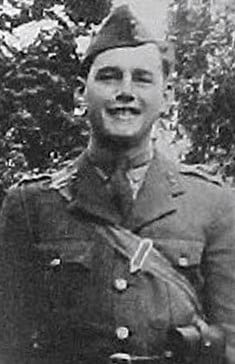
Alexander Henry Muirden (1919-1940)

Alexander Henry Muirden (1919-1940)
Alexander Henry Muirden, known as Sandy, was born in India on 22 August 1919, the only son of Constance and Alexander Muirden, a civil engineer with the Indian Railways. He was educated at Loretto School from 1932 to 1937, where he was a house prefect and served as a Corporal in the School Officer Training Corps.Sandy Muirden entered Worcester College on 8 October 1937 to study Forestry, and won the Coopers Hill War Memorial Prize as “the most meritorious student completing his course of training … during the years 1939-41”.
Sandy Muirden was commissioned as a 2nd Lieutenant in the Royal Engineers on 13 December 1939 and was posted to Folkestone. On 21 October 1940 2nd Lieutenant Alexander Muirden was killed at Greenwich in London while defusing a bomb in an air raid. He was 21 years old.
Sandy Muirden is buried at Fowey Cemetery in Cornwall and is commemorated on the war memorial there, as well as on the war memorials at Loretto School and Worcester College, Oxford.
Photograph and school information courtesy of Loretto School Archives.
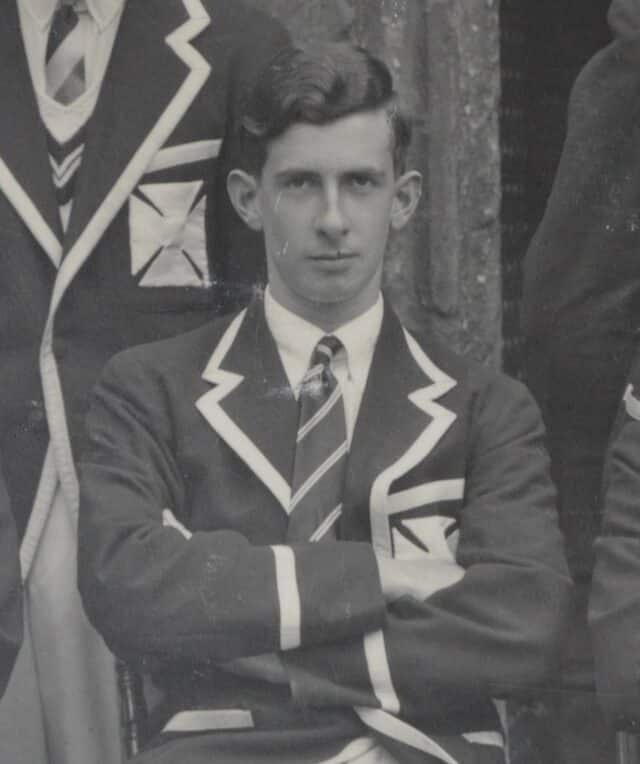
Michael Gervase Ham (1917-1940)
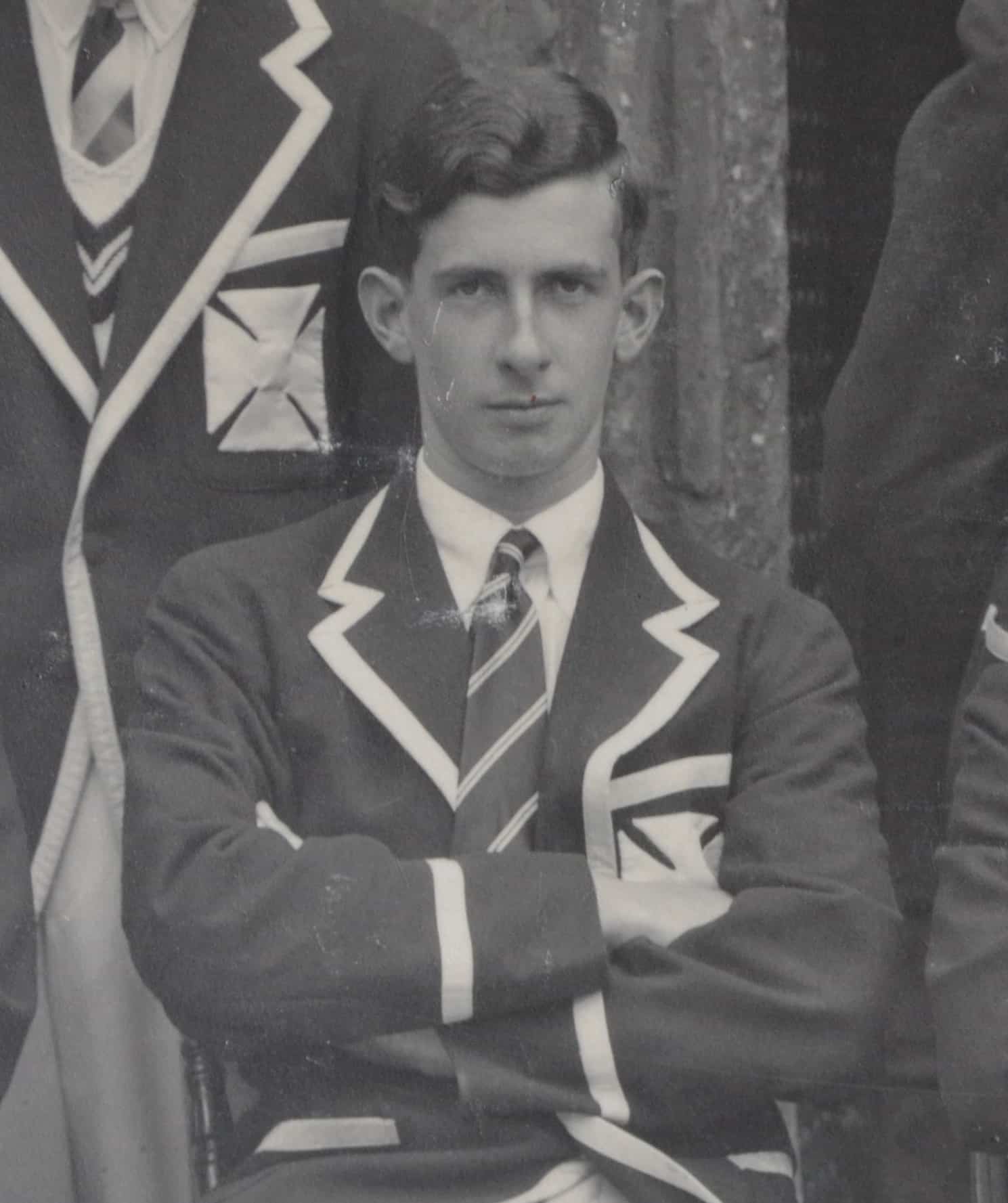
Michael Gervase Ham (1917-1940)
Michael Gervase Ham was born on 8 November 1917, the son of Hilda (née Haslam) and the Reverend Herbert Ham, later the first Provost of Derby Cathedral. He was educated at Bramcote School and then at Winchester College from 1931 to 1936, where he was Captain of the College Fencing Team, with whom he won the Kirby Cup in 1934 and 1936. He was also an accomplished draughtsman, winning the Headmaster’s Prize for Art, and had intended to make his career in the art world.Michael Ham entered Worcester College on 9 October 1936, and was a member of the College Boat Club, rowing with the 1st Torpid and 2nd Eight in 1937. He achieved 3rd class honours in English in 1939. After leaving Oxford Michael Ham enlisted in the Royal Air Force Volunteer Reserve where he trained as a pilot and rose to the rank of sergeant.
On 29 November 1940 Michael Ham and his crew took off from RAF Bicester for a formation flying exercise. Shortly after take off the aircraft’s port engine failed and it crashed, killing the Observer and Sergeant Michael Ham, who was 23 years old.
Michael Ham is buried at Dethick Lea and Holloway Cemetery, Derbyshire, and is commemorated on the war memorials at Winchester College, and Worcester College, Oxford.
Photograph of Michael Ham in the Worcester College 2nd Eight, 1937, Worcester College Archives; school information courtesy of Winchester College Archives; further information from TNA – RAF Casualty reports, AIR 81/4395.
Members who died in 1941

Patrick Hubert Charles Burke (1918-1941)

Patrick Hubert Charles Burke (1918-1941)
Patrick Hubert Charles Burke, known as Pat, was born in London on 2 June 1918, the only son of Colonel Hubert Burke DSO and Edith (née Denton). He was educated at Wellington College from 1932 and 1935. He entered Worcester College, Oxford on 9 October 1936 and achieved 3rd class honours in Modern History in 1939.
Pat Burke was commissioned as a 2nd Lieutenant in the Royal Artillery on 2 March 1940 and sailed for India later that year. He fought in the first Libyan campaign before moving to Eritrea in January 1941. 2nd Lieutenant Pat Burke was killed in action in Eritrea on 26 January 1941, aged 22.
Pat Burke is buried at Keren War Cemetery. He is commemorated on the war memorials at Wellington College, and at Worcester College, Oxford.
Photograph from George Edinger (ed.), Wellington College Roll of Honour 1939-1945 (1949).

David Maitland-Makgill-Crichton (1914-1941)

David Maitland-Makgill-Crichton (1914-1941)
David Maitland-Makgill-Crichton was born at Poona [Pune] in India on 12 July 1914, the son of Phyllis (née Cuthbert) and David Edward Maitland-Makgill-Crichton. He was educated at Bedford School, where he was a member of the School Officer Training Corps.
David Maitland-Makgill-Crichton entered Worcester College on 6 October 1933 on an open exhibition. He achieved 3rd class honours in Modern History in 1936. During his time at the University he was editor of the student magazine Isis, and spoke at the Oxford Union. After leaving Oxford he became a freelance journalist and spent a year in Albania where he became friendly with King Zog I, about whom he was writing a biography. He also travelled in north Greece and Turkey.
Following the outbreak of war, David Maitland-Makgill-Crichton was commissioned as a 2nd Lieutenant in the Royal Northumberland Fusiliers on 11 February 1940, but in 1941 he was recruited by the Special Operations Executive because of his experiences in Albania, Greece and Turkey. He left Liverpool on the cargo ship, SS Jonathan Holt, on 18 February 1941 but was killed when the ship was sunk by U Boat U-97 on 24 February 1941. Lieutenant David Maitland-Makgill-Crichton was 33 years old.
David Maitland-Makgill-Crichton is commemorated on the Brookwood Memorial, and on the war memorial of Worcester College, Oxford.
School information courtesy of Bedford School Archives; further information from TNA – Special Operations Executive Personnel file, HS 9/372/7.

Martin Charles William Dumaresq (1915-1941)

Martin Charles William Dumaresq (1915-1941)
Martin Charles William Dumaresq was born in Hampshire on 10 June 1915, the son of Rear Admiral John Saumarez Dumaresq CB MVO RN, and Christian Elizabeth Louisa (née Dalrymple). He was educated at Radley College from 1929 to 1934, where he was a member of the Hockey XI and President of the Musical Society as well as a School Prefect.
Martin Dumaresq entered Worcester College on 12 October 1934, and achieved 4th class honours in Literae Humaniores (Classics) in 1938. He was commissioned as a 2nd Lieutenant as a University Candidate on the General List for the Territorial Army on 2 August 1938. He transferred as a 2nd Lieutenant in the Royal Artillery on 21 September 1938.
In 1941 Captain Martin Dumaresq was stationed in Greece, and was killed defending the bridge over the Corinth Canal when it was attacked by German parachutists on 26 April 1941. He was 26 years old.
Martin Dumaresq is buried at Phaleron War Cemetery, and is commemorated on the war memorials at Radley College, and at Worcester College, Oxford.
Photograph and school information courtesy of Radley School Archives.
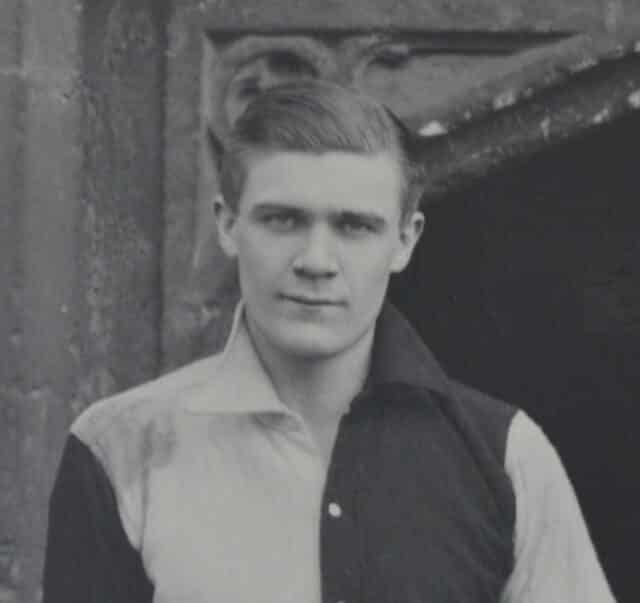
James Ernest Cox (1908-1941)
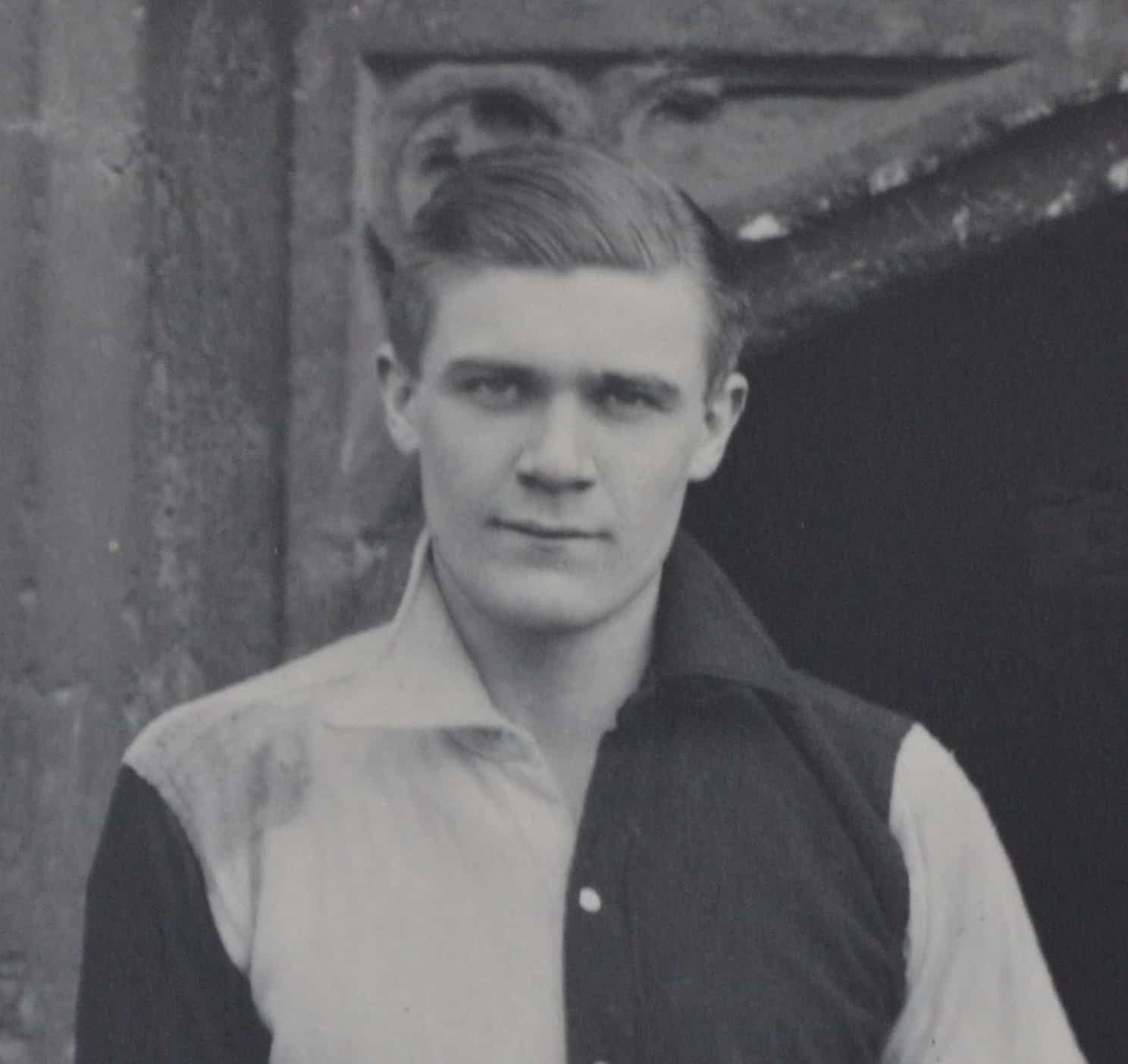
James Ernest Cox (1908-1941)
James Ernest Cox was born at Croydon on 29 April 1908, the second son of Minnie (née Mason) and Samuel Cox, a draper’s buyer. He attended Whitgift Grammar School in Croydon from 1917 to 1926 and entered Worcester College on 12 October 1928. While at Worcester, James Cox played hockey and rugby for the College. His BA was conferred on the 6 June 1931, and some time after graduation he was ordained.
James Cox was commissioned as a Squadron Leader in the Chaplains Department of the Royal Air Force Volunteer Reserve on 11 September 1939. On the morning of 28 April 1941 he was a passenger on an aircraft travelling from Bir El Gubbi to Fuka in northern Egypt. The aircraft was attacked by five Messerschmitts and shot down by the fighter ace Hans Joachim Marseille with the loss of all the passengers and crew, including the Reverend Chaplain Squadron Leader James Cox, aged 32.
James Cox is commemorated on the Alamein Memorial, and the war memorials at Sandown, Whitgift School and at Worcester College, Oxford.
Photograph of James Cox in the Worcester College Hockey Team, 1929-30, Worcester College Archives; school information courtesy of Whitgift School Archives; and further information from TNA – RAF Casualties, AIR 81/6157.

Archibald Graham Weir (1885-1941)

Archibald Graham Weir (1885-1941)
Archibald Graham Weir was born in Enfield, Middlesex on 11 July 1885, the son of Anna (née Ritter) and Archibald Weir, a barrister at law. He was educated at Marlborough College from 1899 to 1902 and entered Worcester College, Oxford on 16 October 1903 where he achieved 2nd class honours in French in 1907.
Archibald Weir was commissioned as a 2nd Lieutenant on the Unattached List for the Auxiliary Forces on 1 August 1907 and was attached to the 1st Battalion Duke of Cornwall’s Light Infantry on 9 October 1907. On 8 October 1910 Archibald Weir married Mary Bartlett; they had two daughters, Ellinor and Diana, and two sons, Adrian and Archibald.
Following the outbreak of the First World War, Archibald Weir landed in France in June 1915 where he joined No 4 Squadron, Royal Flying Corps, based at Doullens. On 26 July 1915 he was forced to land behind enemy lines while on a reconnaissance flight and was taken prisoner. He was repatriated to England on 17 November 1918.
On 21 April 1941 Archibald Weir was on board the auxiliary transport ship SS Narissa when she set sail from Halifax, Nova Scotia, bound for Liverpool. On 30 April 1941 the ship was hit by torpedoes fired from U-Boat U-552, which caused a massive explosion. Wing Commander Archibald Weir was among those killed, aged 55. His son Flying Officer Archibald Weir DFC had been killed in action on 7 November 1940, and his elder son, Major Adrian Weir MC was killed in action on 28 February 1944.
Archibald Weir is buried at Kilcommon Erris Church of Ireland Churchyard in County Mayo, Ireland. He is commemorated on the war memorials at Marlborough College and Worcester College, Oxford.
School information courtesy of Marlborough College Archives; further information from: TNA – Officer File 1914-19, WO 339/7111; Cox & Co, List of British Officers Taken Prisoner in the Various Theatres of War Between August 1914 and November 1918, (1919); Trevor Henshaw, The Sky Their Battlefield, (1995); and uboat.net.
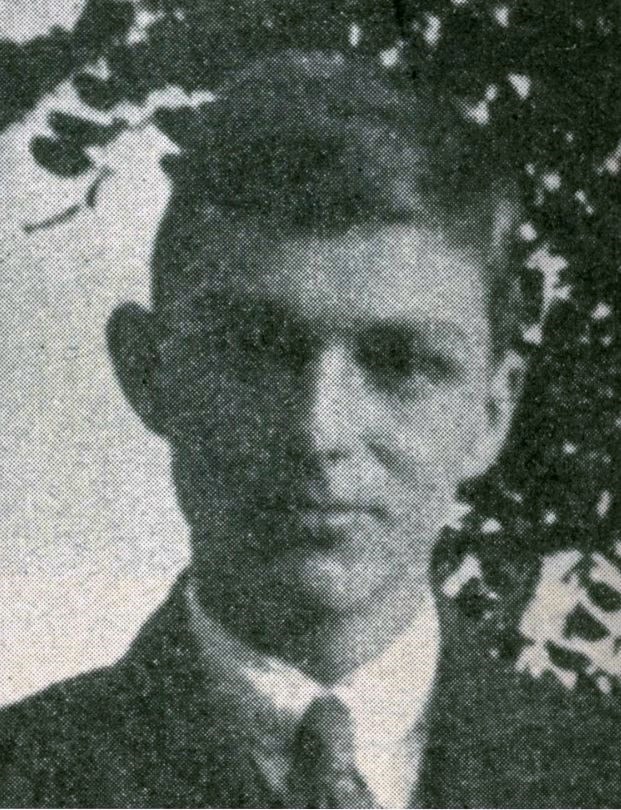
Richard Arthur Fanshawe (1906-1941)

Richard Arthur Fanshawe (1906-1941)
Richard Arthur Fanshawe was born at Salcombe in Devon on 18 February 1906, the son of Captain Arthur Fanshawe RN and Agnes (née Hustler-Tuck). He was educated at Brighton College, where he was in Hampden House from 1920 to 1924. He entered Worcester College, Oxford on 10 October 1925 as an exhibitioner, and achieved 2nd class honours in Modern History in 1929.
During the Second World War, Richard Fanshawe was an ARP (air raid precautions) warden in London. On the night of 10/11 May 1941, the Luftwaffe despatched 505 bombers in the largest attack on London of the entire war. Some 700 acres of the city were damaged or destroyed, 1,436 people were killed and more than 2,000 were injured. At around 12.30am on 11 May a bomb landed on the basement of 22 Elvaston Place, Kensington, and Richard Fanshawe was among the team who responded. The bomb was subsequently ignited by fire, killing nineteen people, including Warden Richard Fanshawe. He was 35 years old.
Richard Fanshawe is commemorated on the war memorials at Brighton College, and at Worcester College, Oxford.
Photograph and school information courtesy of Brighton College Archives.

Francis Herbert Schumer (1919-1941)

Francis Herbert Schumer (1919-1941)
Francis Herbert Schumer was born in Middlesex on 13 April 1919, the youngest son of Dr Jacob Schumer MD and Matilda (née Myers). He was educated at Giggleswick School where he was in the Rugby 1st XV and was head of the School Officer Training Corps.
Francis Schumer entered Worcester College on 7 October 1938 but did not return to the College for his second year as he joined the Royal Air Force Volunteer Reserve in June 1939 and was called up on 1 September 1939. While at the College he played a guitar, which was returned to his mother after his death.
Francis Schumer was commissioned as a Pilot Officer on probation on 7 September 1940. On the same day he arrived at No. 5 Operational Training Unit based at RAF Aston Down in Gloucestershire to complete his training. He was involved in accidents on 12 September 1940 and 24 February 1941. He was posted to 600 Squadron on 24 September 1940.
On 12 July 1941 Francis Schumer took off from RAF Preddanack in Cornwall with his Observer, Allan Ralph Smither, for a night flying test in a Beaufighter aircraft . While flying between 8,000 and 9,000 feet Francis Schumer attempted to carry out a loop. It is thought that he pulled out too sharply from the recovery dive and went into a spin. Rather than bale out, he either tried to right the aircraft or wanted to help his Observer, but the aircraft span into the ground and both men were killed. Pilot Officer Francis Schumer was killed on active service aged 22.
Francis Schumer is commemorated at Golders Green Crematorium, and on the war memorials at Giggleswick School and Worcester College, Oxford.
Further information from TNA – RAF Casualty reports, AIR 81/5218 and AIR 81/8183.

John Michael Hugill (1917-1941)

John Michael Hugill (1917-1941)
John Michael Hugill was born in Surrey on 6 November 1917, the son of Gwendoline (née Thomas) and Harold Hugill, a chartered accountant. He was educated at Stowe School where he passed his Higher Certificate in June 1933.
John Hugill entered Worcester College on 8 October 1937 but was unable to return for the start of his third year in October 1939 as he was working as an attaché for the British Legation in Copenhagen, Denmark. He was commissioned as a 2nd Lieutenant in the Intelligence Corps on 14 September 1940. Lieutenant John Hugill was killed in an accident while on active service on 30 July 1941, aged 23.
John Hugill was buried at All Saints Church, Sanderstead, Croydon. He is commemorated on the war memorials at Stowe School and at Worcester College, Oxford.
School information courtesy of Stowe School Archives.
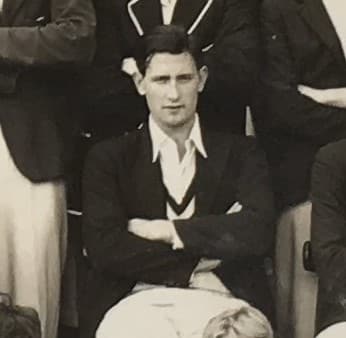
Cullen Eric Powell (1920-1941)

Cullen Eric Powell (1920-1941)
Cullen Eric Powell was born on 13 March 1920, the only child of Sheila (née O’Grady) and Harold Powell of India. Following the death of his father in Australia in 1925, Cullen Powell and his mother returned to England from Calcutta in June 1926. She married Edwin Valentine Manners-Smith in 1931.
Cullen Powell was educated at Charterhouse School where he was a member of the Cricket 2nd XI and won his colours in athletics for pole vaulting. He entered Worcester College, Oxford on 13 October 1939 but left in 1940 to join the Royal Air Force Volunteer Reserve. He rose to the rank of Sergeant and was posted to 107 Squadron.
On 1 August 1941 Cullen Powell and his crew took off with two other aircraft from RAF Great Massingham in Norfolk in a Blenheim aircraft for an anti-shipping operation in the Nieuport and Ostend area of the Belgian coast. They successfully bombed two enemy ships, but during the attack Cullen Powell’s aircraft was shot down and crashed in the Scheldt Estuary. Sergeant Cullen Powell was killed in the crash, aged 22.
Cullen Powell is commemorated on the Runnymede Memorial, and on the war memorials at Charterhouse School and Worcester College, Oxford.
Photograph and school information courtesy of Charterhouse School Archives; further information from TNA – POW statement of Sergeant Henry Emmanuel Hunt WO 344/155/1, 107 Squadron RAF records of events AIR 27/842/16, 107 Squadron RAF summary of events AIR 27/842/15, and RAF Casualty file AIR 81/8007.

Rupert Henry Grattan-Doyle (1910-1941)

Rupert Henry Grattan-Doyle (1910-1941)
Rupert Henry Grattan-Doyle was born at Hexham in Northumberland on 2 December 1910, the second son of Gwendoline (née Mackusick) and Sir Nicholas Grattan-Doyle, later Conservative MP for Newcastle upon Tyne North. He was educated at Ampleforth College.
Rupert Grattan-Doyle entered Worcester College on 10 October 1930 but left Oxford in October 1931 without taking a degree. He went to work as a travelling salesman for an engineering manufacturer. He obtained his flying licence on 13 March 1939 and became a member of the Civil Air Guard at Hatfield before joining the Royal Air Force Volunteer Reserve where he was posted as a pilot to No. 9 Air Observers Navigation School.
Sergeant Rupert Grattan-Doyle was killed along with his crew when his Avro Anson aircraft crashed into the sea off Morf Nefyn in Caernarvonshire during a training exercise on 21 August 1941.
Rupert Grattan-Doyle is buried in Pwllheli Borough Cemetery in Wales. He is commemorated on the war memorial at Worcester College, Oxford.
Further information from TNA – RAF Casualties, AIR 81/8493, and No. 9 Air Observer School operations diary, AIR 29/547/2; and from RAFCommands.com.

Martin John Hay (1919-1941)

Martin John Hay (1919-1941)
Martin John Hay was born in London on 3 June 1919, the son of Lieutenant Colonel Sir Bache McEvers Athole Hay, 11th Baronet Hay of Smithfield, and Judith (née Poole). He was educated at Eton College until 1937, and entered Worcester College on 7 October 1938 but left before taking a degree to enlist in the army.
Martin Hay attended the 110th Officer Cadet Training Unit (Cavalry) before being commissioned as a 2nd Lieutenant in the Life Guards on 27 July 1940. He served as a signals officer. 2nd Lieutenant Martin Hay died on active duty on 9 October 1941, aged 22.
Martin Hay is buried at Cross Kirk (Haystone) Private Burial Ground, and commemorated on the war memorials at Eton College and Worcester College, Oxford.
School information from ‘List of Etonians who fought in the World War 1939-1945’; further information from TNA – 2nd Household Cavalry war diaries, WO 166/6885.

William Allen Brown (1920-1941)

William Allen Brown (1920-1941)
William Allen Brown was born at Ashton in Lancashire on 20 February 1920, the son of Evelyn (née Allen) and William Brown, a hat manufacturer. He was educated at Sedbergh School from 1934 to 1939. He entered Worcester College on 13 October 1939, with a scholarship in Classics and achieved 2nd class honours in Classical Moderations (first year exams) in 1940.
William Brown did not return to Oxford in the autumn of 1940. He attended an Officer Cadet Training Unit before being commissioned as a 2nd Lieutenant in the Royal Signals on the 28 June 1941. 2nd Lieutenant William Brown was killed in an accident at Watling Street, Kensworth, on 15 October 1941, while on active service.
William Brown is buried at Denton Cemetery, and is commemorated on the war memorials at Sedbergh School and Worcester College, Oxford.
School information from the Sedbergh School Register.
Members who died in 1942

Peter Duncan Campbell (1923-1942)

Peter Duncan Campbell (1923-1942)
Peter Duncan Campbell was born in Plymouth on 26 June 1923, the elder son of Commander John Campbell and Maude (née Lobb). He was educated at Imperial Service College, Windsor (now part of Haileybury) from 1937 to 1941, and entered Worcester College on 24 April 1941 as a cadet on an RAF short course.
While training with the RAF at No. 4 Flying training School at Mesa Arizona, Leading Aircraftsman Peter Campbell was severely injured in a plane crash on 6 January 1942, and died in hospital the following day, aged 18.
Peter Campbell is buried at Mesa City Cemetery, Arizona, USA, and is commemorated on the war memorials at Imperial Service College and at Worcester College, Oxford.
School information courtesy of the Haileybury School Archives; further information from TNA – No. 4 British Flying Training School Operations book, AIR 29/627/1.

Harry Noël Smith (1911-1942)

Harry Noël Smith (1911-1942)
Harry Noël Smith, known as Noël, was born on 25 December 1911, the only son of Agnes (née Peden) and Henry Edward Smith, an insurance manager. He was educated at Edinburgh Academy from 1919 to 1921, where he was a member of the History Club and won the Mill Prize for English. Noël Smith entered Worcester College, Oxford, on 9 October 1931 with an exhibition, and achieved 2nd class honours in Modern History in 1934. After leaving university he was articled to Peacock & Goddard, solicitors, and was admitted as a member of the English Law Society in 1937. Correspondence in his student file reveals that he enjoyed playing golf and rugby.
Following the outbreak of war Noël Smith enlisted in the Royal Air Force Volunteer Reserve, where he trained as a navigator with No. 5 Operational Training Unit and rose to the rank of Sergeant. In the early hours of 14 January 1942 Noël Smith and his crew took off from RAF Chivenor in Devon in a Beaufort aircraft for a navigational exercise. The aircraft crashed at Marwood killing all on board, including Sergeant Noël Smith, who was 30 years old.
Noël Smith is buried at St Augustine’s Church, Heaton Pumchardon in Devon. He is commemorated on the war memorials at Edinburgh Academy, Murrayfield Golf Club, Aviva PLC and Worcester College, Oxford.
School information courtesy of Edinburgh Academy Archives; further information from RAFCommands.com. We are grateful to Graham Moore for providing corrections.
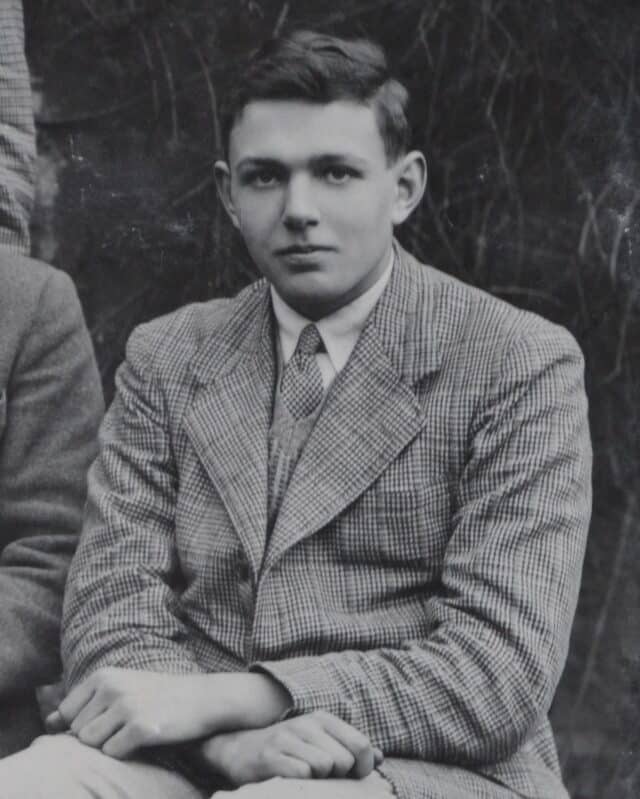
John Amphlett (1917-1942)
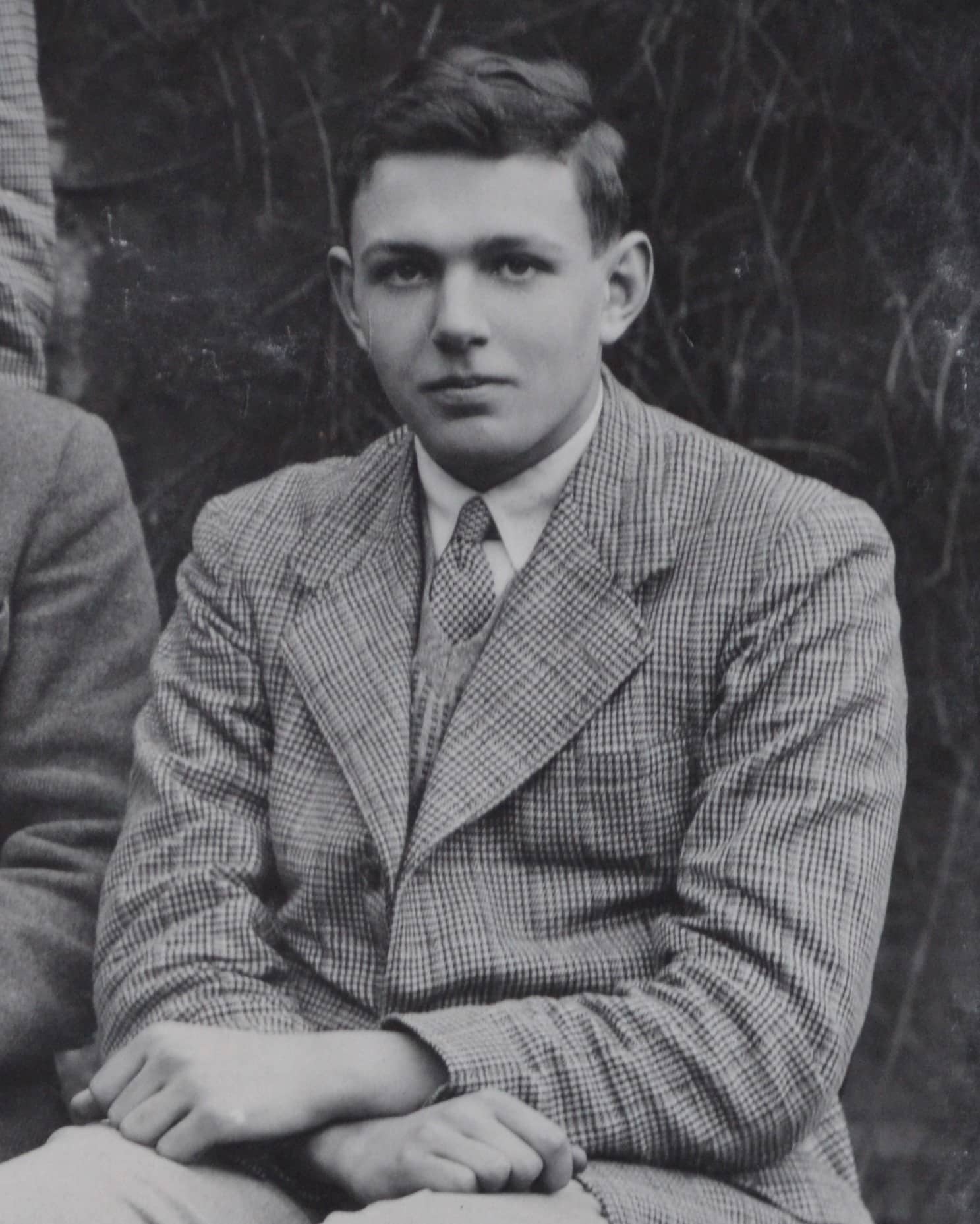
John Amphlett (1917-1942)
John Amphlett was born in Berkshire on 17 March 1917, the son of John, an iron merchant, and Florence (née Yorke). He was educated at Cothill Preparatory School, and at Radley College from 1930 to 1934, where he was a member of the boat club and achieved his School Certificate in 1932.John Amphlett matriculated on 12 October 1934, the tenth member of his family to attend Worcester College in a tradition stretching back to 1735. His uncle, Eddie Amphlett (1894), the most recent member of the family to study at the College, was killed in action at Gallipoli in 1915. While up at Worcester John Amphlett was a member of the College Boat Club and rowed in the Torpid and the Eight in 1935 and 1936. He achieved 3rd class honours in Jurisprudence in 1937. On leaving Oxford he was articled to a firm of London solicitors, and had taken all but his final exam when he enlisted in the Royal Air Force Volunteer Reserve where he trained as an Observer and rose to the rank of Sergeant.
On 19 January 1942, John Amphlett was part of a crew of a Wellington bomber from 9 Squadron who took off from RAF Honington in Suffolk, for a navigational training exercise. The aircraft suffered a structural failure in the outer part of the starboard wing shortly after take-off, and crashed just to the north of Thetford, Norfolk, where it burst into flames. Sergeant John Amphlett and the other crew members were all killed.
John Amphlett is buried at All Saints Church, Honington, Suffolk, and is commemorated on the war memorials at St Leonard’s Church, Clent, Radley College, and at Worcester College, Oxford. His father, who did not attend Oxford, left a considerable benefaction to the College to endow scholarships in his son’s name.
Photograph of John Amphlett in the Worcester College 2nd Torpid, 1935, Worcester College Archives; school information courtesy of Radley College Archives; further information from TNA – air crash investigation, AVIA 5/20/W1170, and W. R. Chorley, Bomber Command Losses of the Second World War, (2005).
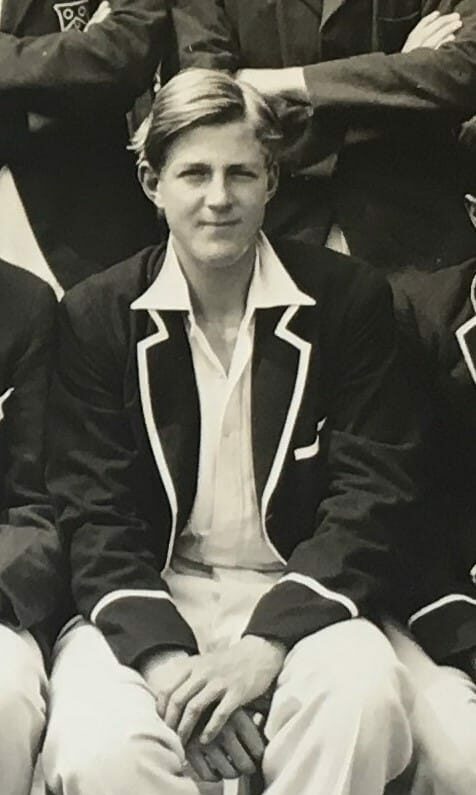
James Ashely Everard Sharp (1919-1942)

James Ashely Everard Sharp (1919-1942)
James Ashley Everard Sharp was born in Hampshire on 21 December 1919, the elder son of Dr Everard Sharp MD and Amy (née Ashley-Cooper). He was educated at Charterhouse School, where he was a member of the football XI and was awarded his colours for fives. James Sharp entered Worcester College, Oxford, on 13 October 1939 but left in 1940 without taking a degree, to join to the Royal Air Force Volunteer Reserve, where he trained as a pilot at No. 55 Operational Training Unit.On 28 March 1942 Sergeant James Sharp took off in a Miles Master two-seater monoplane, with Sergeant Alan Dodd as the pilot. During the flight they decided to fly over Sergeant Dodd’s home Twizell House in Warrenford, Northumberland. While they were flying at low level over the house the aircraft struck some trees and crashed, killing both men. James Sharp was 22 years old.
James Sharp is buried at St Margaret’s Church, Burnham Norton in Norfolk. He is commemorated on the war memorials at Burnham Market and Brancaster in Norfolk, and on the war memorials at Charterhouse School and Worcester College, Oxford.
Photograph and school information courtesy of Charterhouse School Archives; further information from TNA – No. 55 Operational Training Unit operations book, AIR 29/682/2; and from RAFCommands.com.

Anthony Claude Hermon-Hodge (1920-1942)

Anthony Claude Hermon-Hodge (1920-1942)
Anthony Claude Hermon-Hodge was born at Plymouth on 1 August 1920, the only son of Rear Admiral the Hon. Claude Preston Hermon-Hodge DSC RN and Gwendoline (née Davis). He was educated at Radley College from 1934 to 1939, where he was a Junior Scholar, a Heathcote Scholar and a member of the Natural History Society, as well as a member of the fencing team.
Anthony Hermon-Hodge entered Worcester College on 13 October 1939 and achieved 2nd class honours in classical moderations [first-year exams] in 1940. He was unable to return for his second year having been conscripted into the Royal Navy. Sub Lieutenant Anthony Hermon-Hodge was killed on 12 June 1942, when his ship HMS Grove was sunk off the coast of Egypt by two torpedoes fired by the U-Boat U-77. He was 21 years old.
Anthony Hermon-Hodge is commemorated on the Chatham Naval Memorial Panel and on the war memorials of Radley College and Worcester College, Oxford.
School information courtesy of Radley College Archives; further information from TNA – Royal Navy Casualties HMS Grove, ADM 358/756; Bruce Taylor and Daniel Morgan, U-Boat Attack Logs 1939-1945 (2011); and uboat.net.
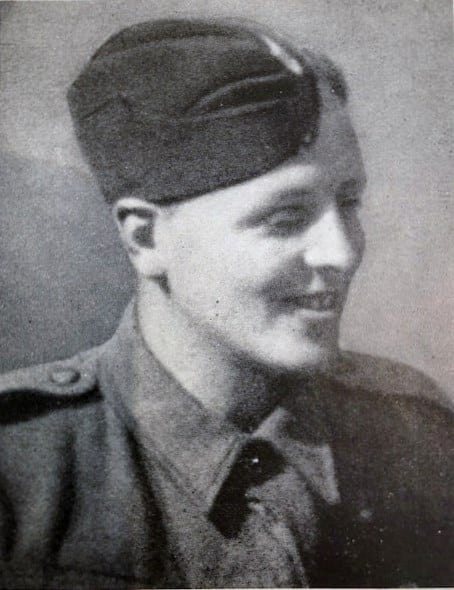
Hugh Wilfred Napier Seymour (1917-1942)

Hugh Wilfred Napier Seymour (1917-1942)
Hugh Wilfred Napier Seymour was born in Brighton on 1 October 1917, the only son of Brigadier General William Seymour of the Rifle Brigade, and Muriel (née Campbell). He was educated at Charterhouse School from 1931 to 1935 and entered Worcester College, Oxford on 9 October 1936. He was a member of the College Boat Club, rowing with the 2nd Torpid in 1937, and achieved 3rd class honours in PPE in 1939.Hugh Seymour attended an Officer Cadet Training Unit before being commissioned as a 2nd Lieutenant in the Rifle Brigade (Prince Consort’s Own) on 4 July 1940. On 14 June 1942 the 1st Battalion Rifle Brigade was holding positions near the town of Acroma in Libya. At 4pm, the strategically important position of Point 187 came under a heavy attack led by some forty German tanks. The garrison there blew up its guns and fled under heavy machine gun fire which caused many casualties. This exposed the flank of B Battery, 11th Royal Horse Artillery, which was protected by infantry support from the Rifle Brigade, led by Lieutenant C.T.G. Hunter and Hugh Seymour. When the Germans attacked, they quickly overran the positions with both Hunter and Seymour’s Platoons being wiped out. Lieutenant Hugh Seymour was killed in action, aged 24.
Hugh Seymour is commemorated on the Alamein Memorial, and on the war memorials at Charterhouse School and Worcester College, Oxford.
Photograph and further information from R. H. W. S. Hastings, Rifle Brigade 1939-1945 (1950); school information courtesy of Charterhouse School Archives; further information from TNA – 1st Battalion Rifle Brigade war diaries, WO 169/5054; G. G. Parkyn, Rifle Brigade Chronicles 1942 (1943).

John Wenlock Ashley (1914-1942)

John Wenlock Ashley (1914-1942)
John Wenlock Ashley was born at Tenbury in Worcestershire on 27 September 1914, the elder son of Leonard, a solicitor, and Lillian (née Du Rocher). He was educated at Bromsgrove School from 1928 to 1933 and represented the School at the National Schools Imperial Meeting at Bisley in 1933.
John Ashley entered Worcester College on 6 October 1933, where he was awarded the Theodore Williams Scholarship for Anatomy in 1935. He achieved 2nd class honours in Physiology in 1936 and won an open scholarship to Middlesex Hospital.
At the outbreak of war John Ashley was Resident Medical Officer at Hove General Hospital in Sussex and volunteered immediately for service with the Royal Navy. He was commissioned as a Surgeon Lieutenant in the RNVR on 10 November 1939 and posted to the destroyer HMS Imogen where he saw action during the Norwegian campaign in early 1940, including the sinking of the German U-Boat U-63. HMS Imogen was sunk in an accident in July 1940, during which John Ashley was badly injured.
In June 1942 John Ashley was part of the crew of the light cruiser HMS Hermione, escorting convoy MW-11 on its journey from Alexandria to Malta. During the voyage the group was spotted by the German U-Boat U205, which fired three torpedoes at HMS Hermione, hitting her amidships on the starboard side. She turned over on her side and floated for 21 minutes before sinking. Surgeon Lieutenant John Ashley remained at his medical station for some time after the ship was hit, and was later seen helping others to abandon ship, but was not seen again, and was reported missing, presumed killed on active service. He was 27 years old.
John Ashley is commemorated on the Plymouth Naval Memorial, and on the war memorials at St Mary’s Church, Tenbury, at Bromsgrove School, and at Worcester College, Oxford.
School information from Bromsgrove School Archives; further information from TNA – Naval Casualty File HMS Hermione, ADM 358/767; Bruce Taylor and Daniel Morgan, U-Boat Attack Logs 1939-1945 (2011); and uboat.net.

Eric Lindow Hall (1912-1942)

Eric Lindow Hall (1912-1942)
Eric Lindow Hall was born in King’s Norton in Worcestershire on 25 August 1912, the son of Florence (née Brockbank) and Austin Hall, a machinist. He was educated at Banbury County School, and entered Worcester College on 9 October 1931. He achieved 1st class honours in Modern History in 1934.
Eric Hall married Elizabeth O’Neill in 1936, and worked as a secondary school master at Wayland in Norfolk. He enlisted in the RAFVR where he rose to the rank of Sergeant before being commissioned as a Pilot Officer on 29 November 1941. Eric Hall was an observer in training on an aircraft which took off from RAF Pamanzi in Madagascar on 8 September 1942, for an anti-submarine patrol to protect a naval convoy. The plane took off normally but crashed into the sea shortly afterwards, killing its crew including Flying Officer Eric Hall. He was 30 years old.
Eric Hall is buried at Diego Suarez War Cemetery on Madagascar. He is commemorated on the war memorials at Wykham Park Academy (formerly Banbury County School), and Worcester College, Oxford.
Further information from RAFCommands.com.
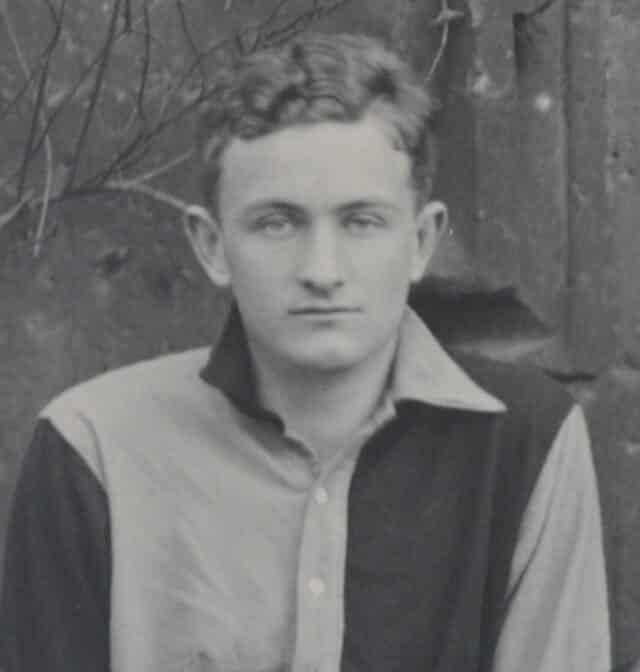
Frederick George Kahl (1911-1942)
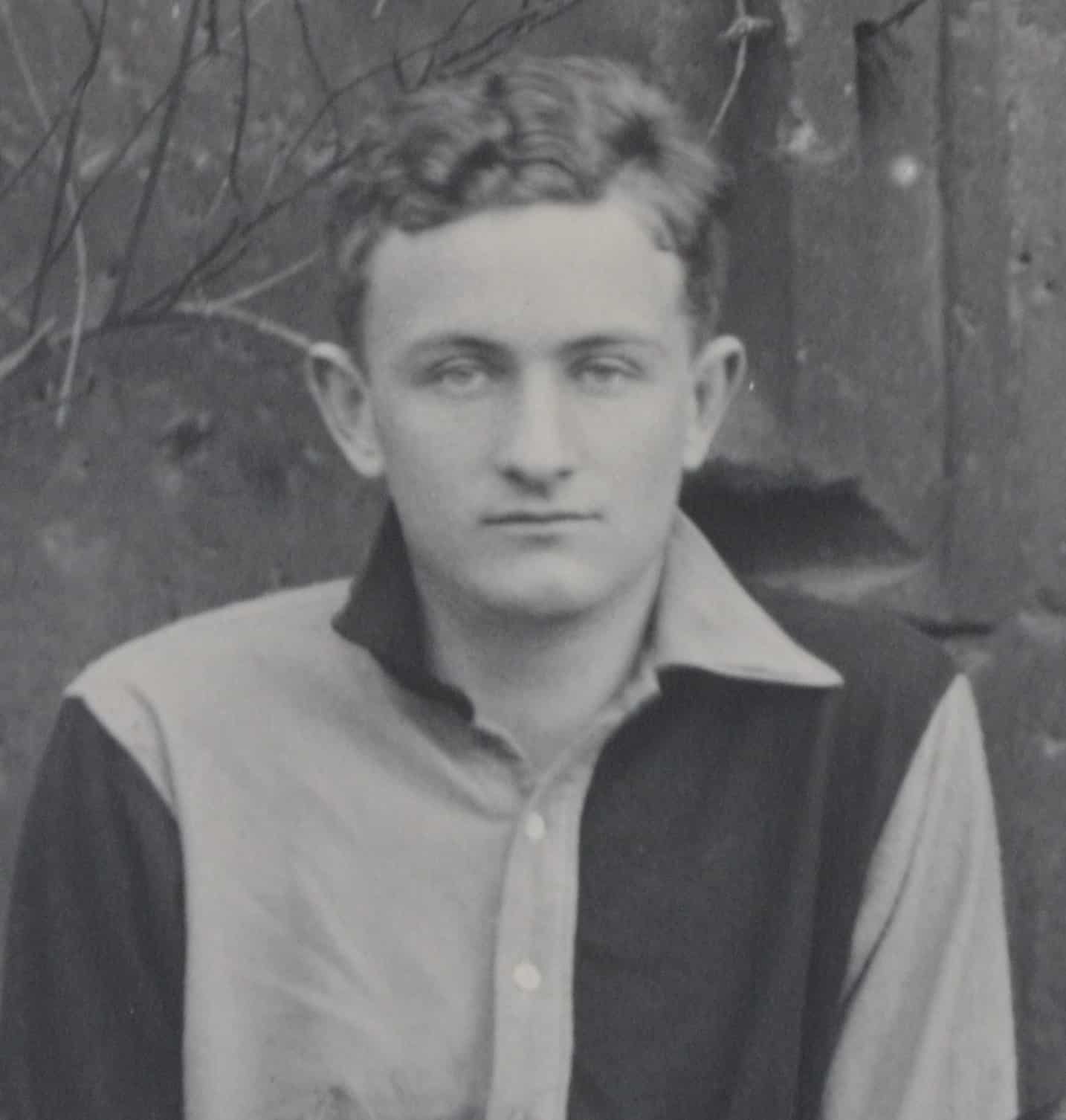
Frederick George Kahl (1911-1942)
Frederick George Kahl was born at Streatham on 22 February 1911, the only son of Charlotte (née Piggott) and Frederick Kahl, a grain importer. He was educated at Canford School from 1925 to 1929, where he played rugby, cricket and hockey for the school and was also appointed prefect.Frederick Kahl entered Worcester College on 11 October 1929, and achieved 2nd class honours in Jurisprudence in 1932. While at Worcester he placed hockey and cricket for the College. He was also a member of the Oxford University Officer Cadet Corps, and after graduation he served in the Territorial Army as a member of the Honourable Artillery Company. Frederick Kahl married Esme Cobbett in 1941 and they had a son, Frederick, who was born in 1943, after his father had died.
Frederick Kahl was commissioned as a 2nd Lieutenant in the 9th Battalion Royal Fusiliers (City of London Regiment) on 5 July 1939. In 1942 he transferred to No. 6 Commando and given command of No. 3 Troop. In September 1942, he travelled to Bethesda in North Wales for climbing training. Captain Frederick Kahl died in a climbing accident on 9 September 1942, aged 31.
Frederick Kahl is commemorated on the Brookwood Memorial, and on the war memorials at Bramley in Surrey, Canford School, and at Worcester College, Oxford.
Photograph of Frederick Kahl in the Worcester College Hockey Team, 1929-30, Worcester College Archives; school information courtesy of Canford School Archives; further information from TNA – No. 6 Commando war diaries WO 218/37.
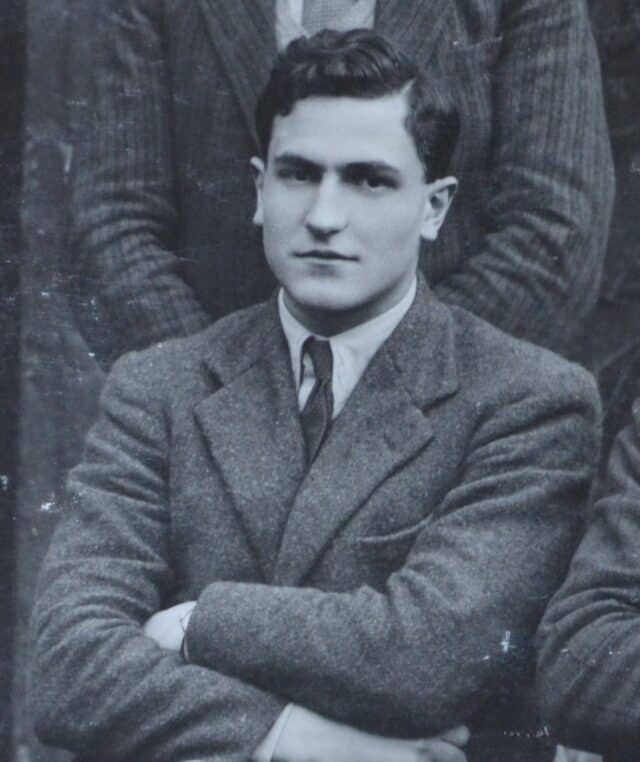
Ian Bickley Manning (1912-1942)
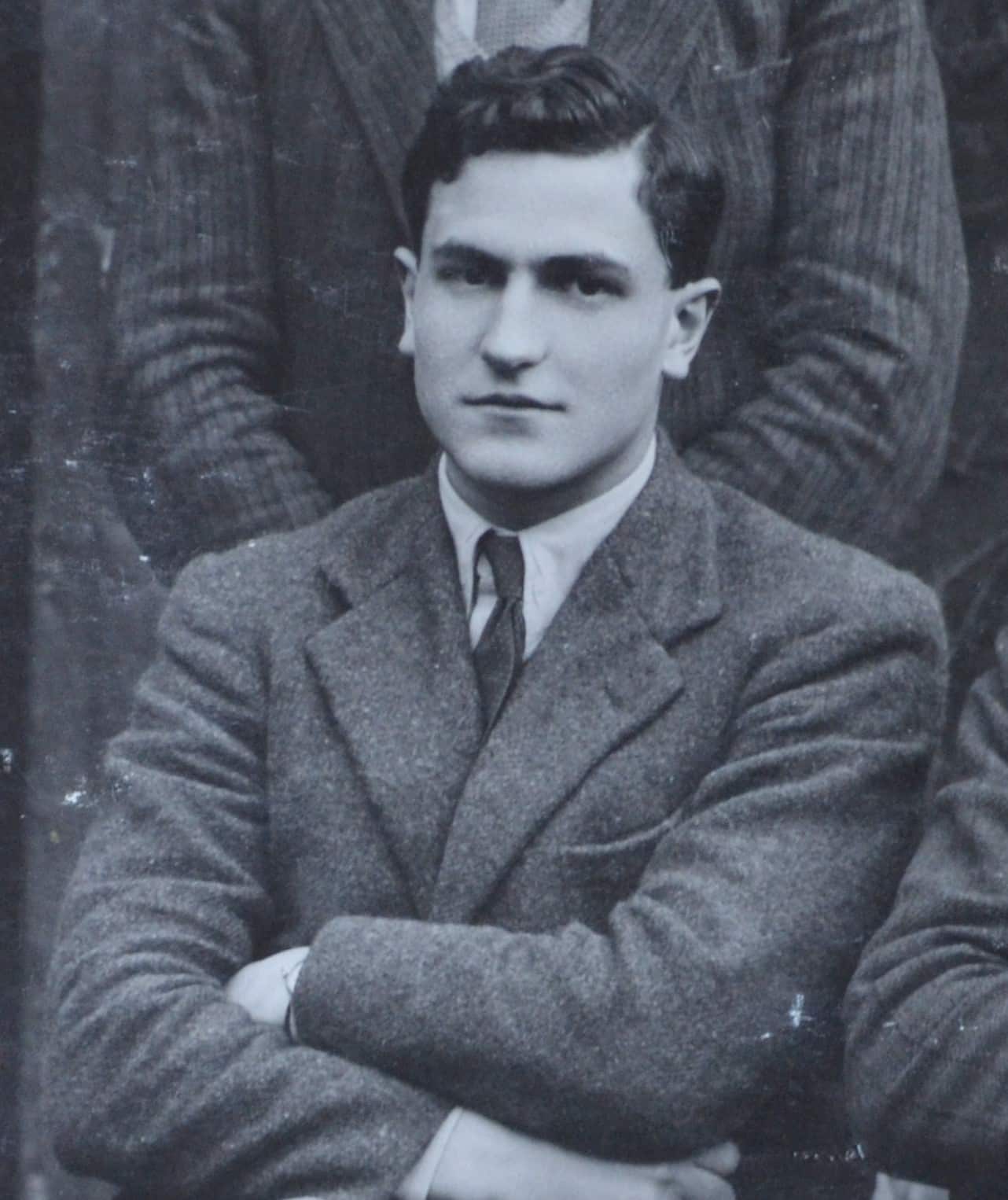
Ian Bickley Manning (1912-1942)
Ian Bickley Manning was born in Cottesloe in Western Australia on 24 October 1912, the younger son of Major Victor Manning MC, and Verna (née Johnston, later Gomme). He was educated at Bradfield College.Ian Manning entered Worcester College on 9 October 1931 and achieved 3rd class honours in Jurisprudence in 1935. While at the College he was a member of the College Boat Club, rowing in the 1st Eight and the Henley Eight between 1933 and 1935. On leaving the University he became a tea planter at Bareilly in India.
Serving with the 9th Jat Regiment, Indian Army, 2nd Lieutenant Ian Manning died on active service on 21 September 1942, aged 29.
Ian Manning is buried at Maynamati War Cemetery in Bangladesh, and commemorated on the war memorial at Worcester College, Oxford.
Photograph of Ian Manning in the Worcester College Long Distance Eight, 1934, Worcester College Archives.
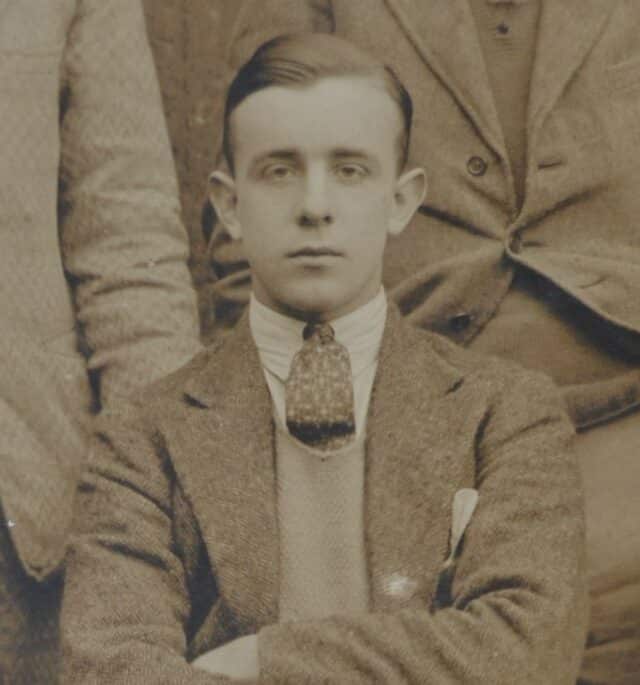
Ronald Joseph Murphy (1908-1942)

Ronald Joseph Murphy (1908-1942)
Ronald Joseph Murphy, known as Ronnie, was born in Dublin on 30 January 1908, the second son of Norah and Joseph Murphy. He was educated at Beaumont College, Windsor until 1926, and entered Worcester College, Oxford on 15 October 1926, graduating with a pass degree in 1931. While at Worcester he was a member of the College Boat Club and rowed in the 1st Torpid, 1st Eight and the Henley Four. Ronnie Murphy married Gwladys Lloyd in 1936 and they lived in Surrey.After leaving the University of Oxford Ronnie Murphy was commissioned as a 2nd Lieutenant in the East Kent Regiment in 1931 and served with the 1st battalion in India and Burma, before moving with them to Egypt in 1939. On the outbreak of war he was serving as a Captain and Adjutant with the 2nd Battalion East Kent Regiment (Buffs) and crossed with them to France, where he was wounded on 22 May 1940. His battalion was subsequently sent to North Africa where he later became Brigade Major to 132nd Brigade. He was awarded the Military Cross on 4 September 1942 and was appointed to the command of the 4th battalion Royal Sussex Regiment on 11 October 1942. Lieutenant Colonel Ronald Murphy was killed in action at El Alamein on 28 October 1942, aged 34.
Ronnie Murphy is buried in El Alamein War Cemetery in Egypt, and commemorated on the war memorials at Beaumont College and Worcester College, Oxford.
Photograph of Ronnie Murphy in the Worcester College 1st Torpid, 1927, Worcester College Archives; further information from TNA: 132 Infantry Brigade war diaries, WO 169/4279; 4th Battalion Royal Sussex Regiment war diaries, WO 169/5068; Recommendation for award of Military Cross WO 373/22/28; and 2nd Battalion East Kent Regiment war diaries May 1940, WO 167/716.
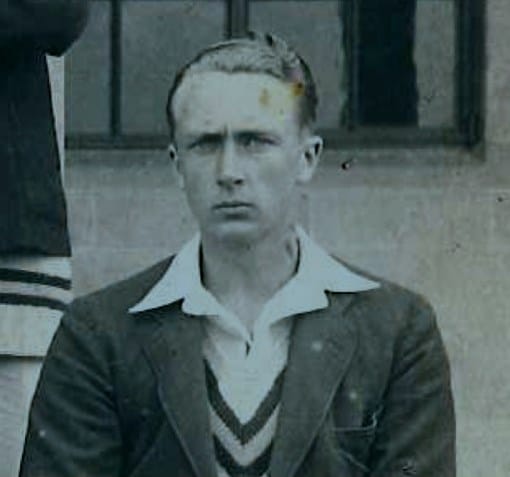
Cyril George Napper (1909-1942)

Cyril George Napper (1909-1942)
Cyril George Napper was born in Barnet on 26 December 1909, the second son of Elizabeth (née Matthews) and George Napper, director of a tailoring company. He was educated at the King’s School, Bruton until 1927, where he was a member of the Officer Training Corps and represented the school at hockey, cricket and rugby.Cyril Napper entered Worcester College on 12 October 1928, but left in 1929 without taking a degree. He subsequently worked on the Stock Exchange and then as a salesman for the family tailoring business. Following the outbreak of the Second World War he entered the army in September 1939 and was commissioned as a 2nd Lieutenant in the King’s (Liverpool) Regiment on 23 March 1940. He was attached to the 1/5th Battalion Queen’s Royal Regiment (West Surrey) and was posted to the Middle East in May 1942, serving in Egypt from June that year.
On 24 October 1942 the Battalion attacked enemy positions between Deir El Munassib and Himeimat, during the attack Cyril Napper was injured and captured. Captain Cyril Napper died of his wounds five days later, on 30 October 1942, aged 32.
Cyril Napper is commemorated on the Alamein Memorial, and on the war memorials at King’s School Bruton and Worcester College, Oxford.
Photograph and school information courtesy of the King’s School, Bruton, Archives; further information from TNA – 1/5th Battalion Queen’s Royal Regiment war diaries, WO 169/5048.
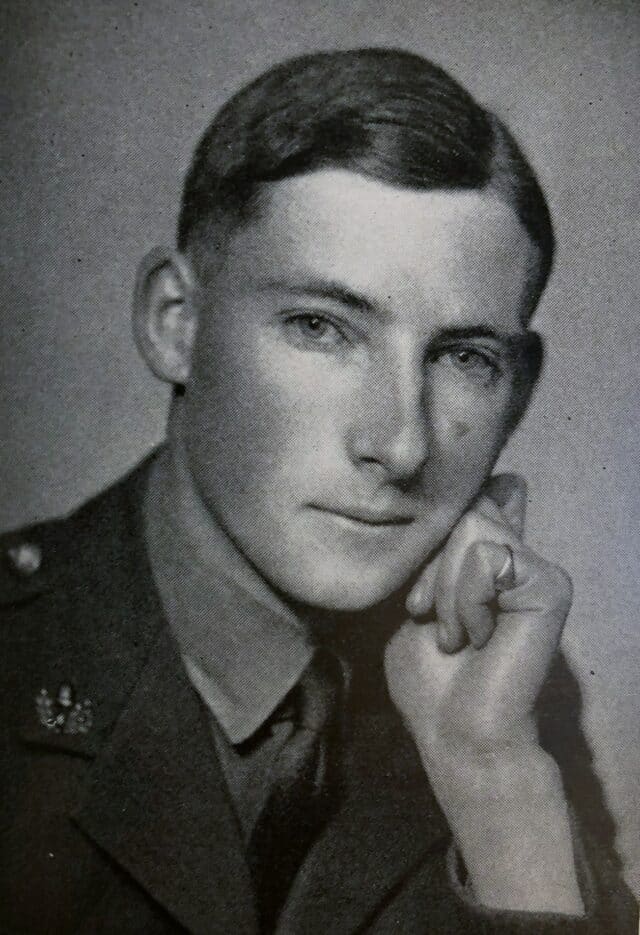
John Stuart Alexander (1920-1942)
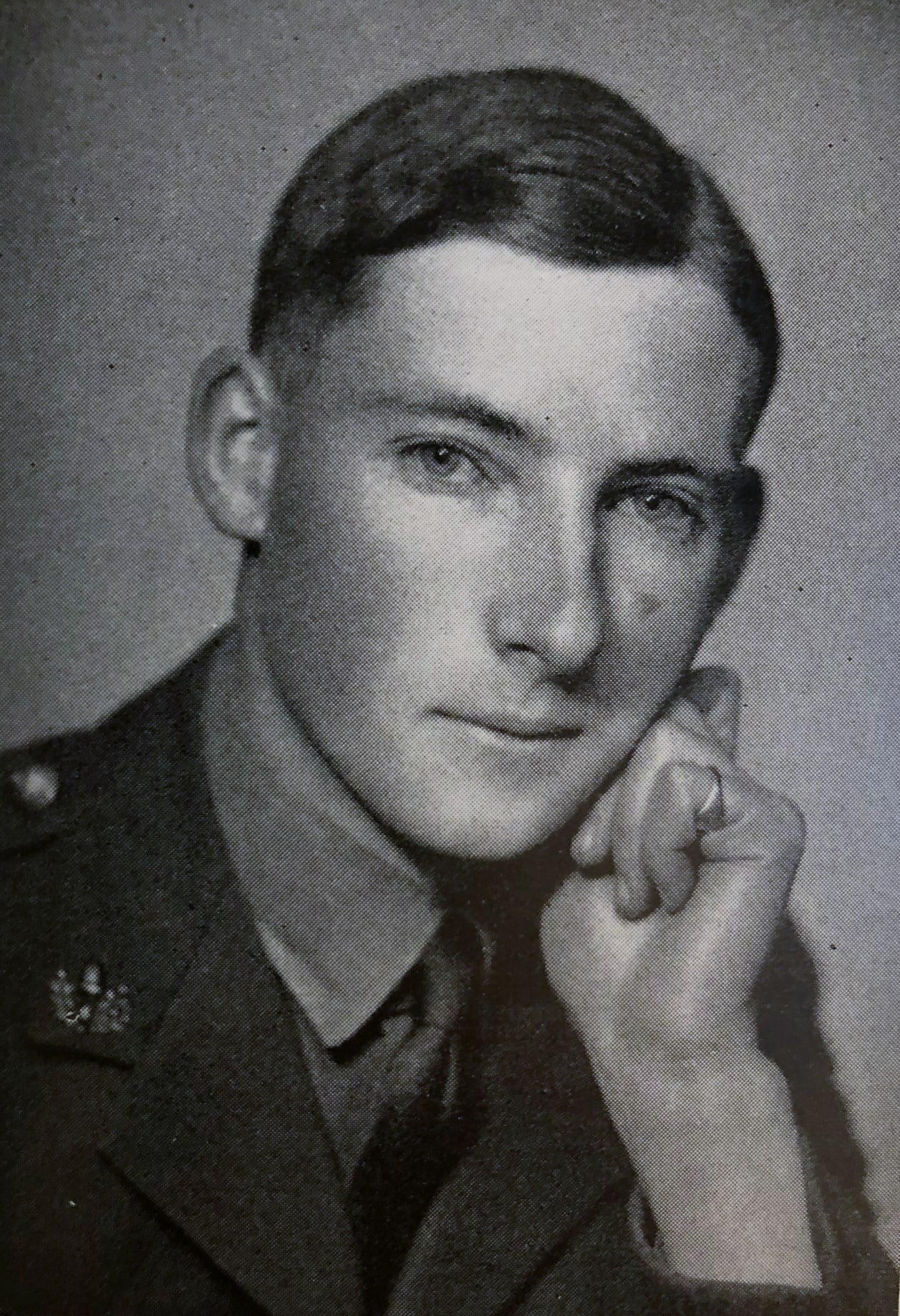
John Stuart Alexander (1920-1942)
John Stuart Alexander, known as Stuart, was born in the Wirral on 13 February 1920, the second son of Harold, a chartered accountant, and Winifred (née Scott). He was educated at Trearddur House School, Holyhead, and at Sedbergh School from 1933 to 1938. While still a junior he won the three and ten-mile steeplechases in 1937, and was later appointed Head of School.Stuart Alexander entered Worcester College on 7 October 1938 but enlisted in the army on the outbreak of the Second World War and left Oxford without taking a degree. He trained with the King’s (Liverpool) Regiment and was commissioned as a 2nd Lieutenant in the Cheshire Regiment in August 1940, joining the battalion in the Middle East in June 1942. He took part in the withdrawal from Gazala in July and saw action at El Alamein in October 1942.
On 13 November 1942, with the British advance from El Alamein well under way, Stuart Alexander was ordered to salvage abandoned ammunition and took a truck through what he took to be a gap in an enemy minefield. When they had gone some distance, the men on the back of the truck shouted that they could see mines. Alexander halted the truck and ordered his men to dismount and walk out of the minefield. While they were doing this, he guided the driver as he reversed the truck; however, during this manoeuvre the rear wheel hit a mine and Lieutenant Stuart Alexander was killed in the subsequent explosion. He was 22 years old.
Stuart Alexander is buried at El Alamein War Cemetary, and commemorated on the war memorials at Sedbergh School, at Heswell and Worcester College, Oxford.
Photograph from Arthur Crookenden, The History of the Cheshire Regiment in the Second World War 1939-1945 (1949); school information from the Sedbergh School Register.
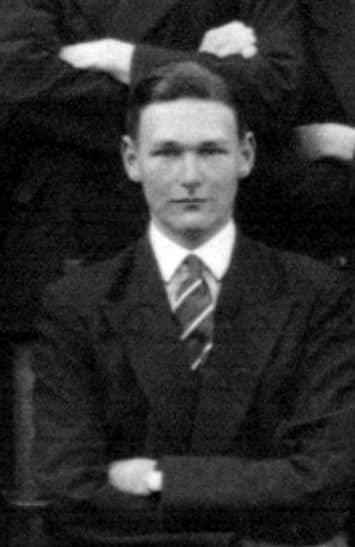
Michael Patrick Lyttleton Roche (1920-1942)

Michael Patrick Lyttleton Roche (1920-1942)
Michael Patrick Lyttleton Roche was born in Surry on 16 September 1920, the only child of Alice (née Stanier) and Captain Alfred Lyttleton Roche MBE of the Royal Scots Fusiliers. He was educated at Eastbourne College from 1934 to 1939, where he was captain of the Tennis VI. He entered Worcester College, Oxford, on 13 October 1939, but left in 1940 to join the army.Michael Roche attended an Officer Cadet Training Unit before being commissioned as a 2nd Lieutenant in the Hampshire Regiment on 15 March 1941. By November 1942 the 2nd Battalion Hampshire Regiment were in Tunisia where they relieved the 6th Battalion Northamptonshire Regiment at Teboura on 30 November. They were attacked by the Germans on 2 December and suffered heavy casualties, they were subsequently ordered to withdraw overnight. On 3 December 1942 the Hampshires came under further sustained attack from the German army while continuing to retreat. Lieutenant Michael Roche was drowned aged 22, while trying to save one of his men who had fallen into the River Medjerda during the retreat. He was mentioned in dispatches.
Michael Roche is buried in Beja War Cemetery in Tunisia and is commemorated on the war memorials at Eastbourne College and Worcester College, Oxford.
Photograph and school information courtesy of Eastbourne College Archives; further information from David Scott Daniell, Regimental History of the Royal Hampshire Regiment Volume Three 1918-1954 (1955).
Members who died in 1943

Roger Bainbrigge (1909-1943)

Roger Bainbrigge (1909-1943)
Roger Bainbrigge was born at West Linton in Scotland on 23 February 1909, the only child of the Reverend Prebendary Philip Bainbrigge, and his second wife Beatrice (née Borthwick). He was educated at St Edward’s School, Oxford from 1923 to 1926, where he was a member of the Rugby XV.
Roger Bainbrigge entered Worcester College on 14 October 1927, and achieved 3rd class honours in Modern History in 1930. On leaving Oxford he became a stockbroker at the London Stock Exchange. He married Elizabeth Baldwin on 3 April 1934, who died the following year, one day after the birth of their son Michael. Roger Bainbrigge subsequently married Kathleen Risley in 1937 and they had a son, Angus, the following year.
Following the outbreak of the Second World War, Roger Bainbrigge attended at Officer Training Unit before being commissioned as a 2nd Lieutenant in the Pioneer Corps on 30 June 1941. Lieutenant Roger Bainbrigge was killed in action in Egypt on 24 February 1943, aged 33.
Roger Bainbrigge is buried in Heliopolis War Cemetery, and commemorated on the war memorials of St Edward’s School Oxford, and Worcester College, Oxford.
School information courtesy of the Archives of St Edward’s School, Oxford.

Bryan Rupert Beckett (1922-1943)

Bryan Rupert Beckett (1922-1943)
The Hon. Bryan Rupert Beckett was born in London on 23 August 1922, the youngest son of the Rt. Hon. Ralph Beckett, 3rd Baron Grimthorpe, and his first wife, Lady Mary Alice Beckett (née Archdale). He was educated at Eton College until 1940 and came up to Worcester College, Oxford on 11 October 1940. He left Oxford in 1941 for officer training at the Royal Military College Sandhurst, without taking a degree. Officer Cadet Bryan Beckett was killed in a car accident on 11 March 1943, aged 20.
Bryan Beckett is buried at St Helen’s Church, Amotherby, Yorkshire. He is commemorated on the war memorial in the Royal Gallery at the Houses of Parliament, and on the memorials at Eton College and Worcester College, Oxford.
School information from ‘List of Etonians who fought in the World War 1939-1945’.

John Alistair Christison (1920-1943)

John Alistair Christison (1920-1943)
John Alistair Christison was born in Newcastle in 1920, the son of Lilie (née Allan) and Robert Christison. He was educated at Dame Allan’s School, Fenham from 1930 to 1938. He entered Worcester College on 7 October 1938 but left Oxford without taking a degree.
John Christison attended an Officer Cadet Training Unit before being commissioned as a 2nd Lieutenant in the 7th battalion Black Watch (Royal Highlanders) on 12 July 1941. Lieutenant John Christison was killed in action during the battle of Wadi Akarit, in Tunisia, on 6 April 1943, aged 23.
John Christison is buried at Sfax War Cemetery, Tunisia. He is commemorated on his grandfather’s grave at Abbey Church Cemetery, Coupar, Angus, and on the war memorials of Dame Allan’s School and Worcester College, Oxford.
School information courtesy of Dame Allan’s School Archives; further information from TNA – 7th Battalion Black Watch war diaries, WO 169/10181; and B. S. Barnes, Operation Scipio – the 8th Army at Wadi Akarit (2007).

Mervyn Theodore Lamb (1915-1943)

Mervyn Theodore Lamb (1915-1943)
Mervyn Theodore Lamb was born in Ireland on 22 May 1915, the son of Wing Commander the Reverend Percy Cecil Chalmers Lamb and Kate Avarina (née James). He entered Worcester College on 11 October 1935, and graduated with a pass degree in 1939.
Mervyn Lamb was commissioned as a 2nd Lieutenant in the Oxfordshire and Buckinghamshire Light Infantry on 8 August 1942 and later transferred to the East Surrey Regiment, joining the 1st Battalion in North Africa on 20 December 1942. 2nd Lieutenant Mervyn Lamb was killed during the Battle of Oued Zarga on 7 April 1943, aged 28.
Mervyn Lamb is buried at Beja War Cemetery in Tunisia and commemorated on the war memorial at Worcester College, Oxford.
Further information from TNA – 1st Battalion East Surrey Regiment war diaires, WO 175/519; and David Scott Daniell, History of the East Surrey Regiment Volume IV 1920-1955 (1957).
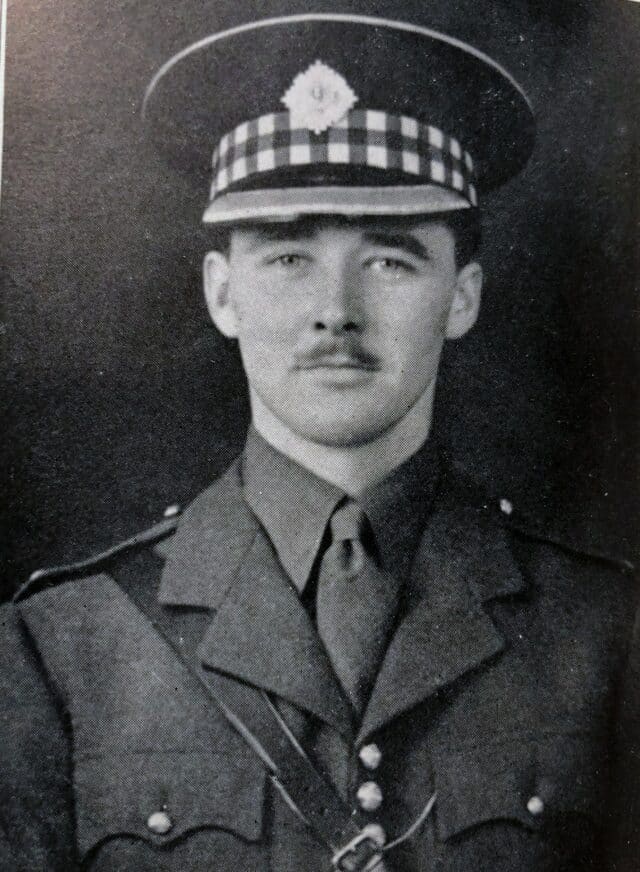
Nigel de Paiva Henderson-Scott (1920-1943)
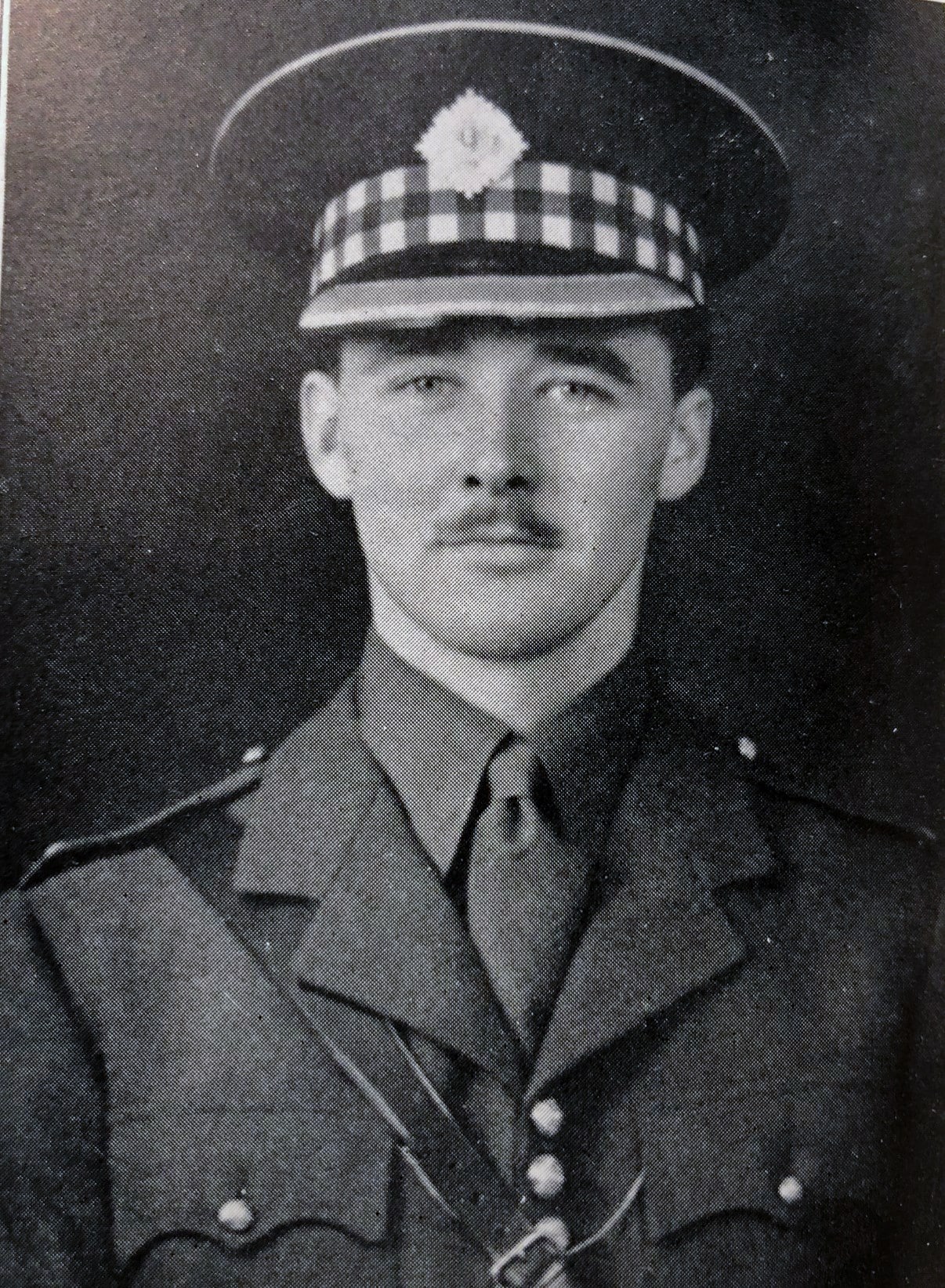
Nigel de Paiva Henderson-Scott (1920-1943)
Nigel de Paiva Henderson-Scott was born in London on 9 September 1920, the only son of Major Walter Maxwell Henderson-Scott and Marjorie (née de Paiva). He was educated at Wellington College from 1934 where he was a member of the Racquets Eight, and was considered to be a good cricketer.Nigel Henderson-Scott entered Worcester College on 7 October 1938 to read Modern History but left without taking a degree in order to enlist in the army. He was commissioned as a 2nd Lieutenant in the Scots Guards on 8 March 1941. In April 1943 the 2nd Battalion Scots Guards were advancing on Enfidaville in Tunisia in the final drive to push the German Afrika Corps from North Africa. On 20 April 1943 Lieutenant Nigel Henderson-Scott was leading his carrier patrol close to Enfidaville when he was killed, aged 22.
Nigel Henderson-Scott is buried at Enfidaville War Cemetery in Tunisia and commemorated on the war memorials at Burley, Wellington College, and Worcester College, Oxford.
Photograph from George Edinger (ed), Wellington College Roll of Honour 1939-1945 (1949); further information from David Erskine, The Scots Guards 1919-1955 (1956).

Michael George Ralph Nevill (1917-1943)

Michael George Ralph Nevill (1917-1943)
Michael George Ralph Nevill was born on 19 June 1917, the son of Marjorie (née Nevill) and Percy Llewelyn Nevill. He was educated at Eton College until 1935 before entering Worcester College Oxford on 11 October 1935. He left Oxford without taking a degree.
Following the outbreak of war Michael Nevill attended an Officer Cadet Training Unit before being commissioned as a 2nd Lieutenant in the Scots Guards on 25 May 1940. He was married at Westminster to Maureen Rhodes on 17 July 1940 and they had two sons, David in 1941, and Michael born after his father’s death in 1943.
In February 1943 Michael Nevill embarked with his battalion at the River Clyde on board HMT Samaria, for service in North Africa. Lieutenant Michael Nevill was killed by a German sniper at Crich el Oued in Tunisia, during an attack on the enemy position. He was 25 years old.
Michael Nevill is buried in Massicault War Cemetery in Tunisia, and is commemorated on the war memorials at All Saints Church, Birling, Eton College, and Worcester College, Oxford. In 1953, the Bull pub in Birling was renamed The Nevill Bull in his honour.
School information from ‘List of Etonians who fought in the World War 1939-1945’; further information from David Erskine, The Scots Guards 1919-1955 (1956).
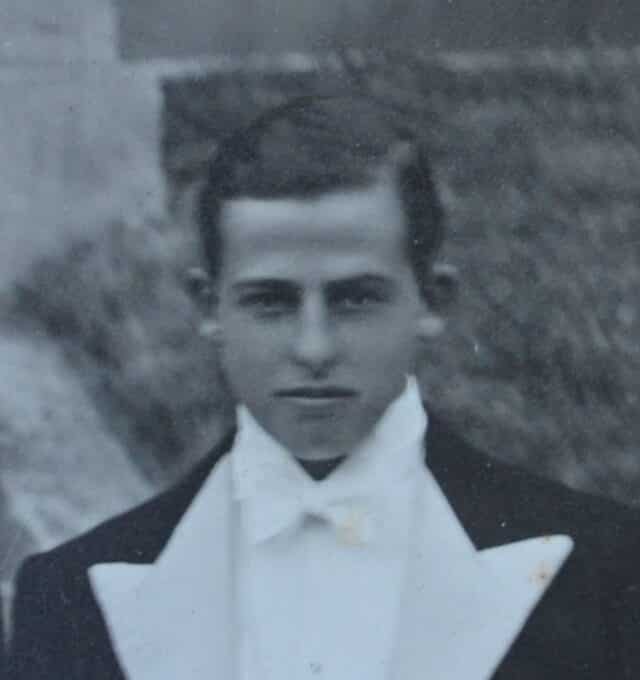
John Clifford North-Lewis (1913-1943)
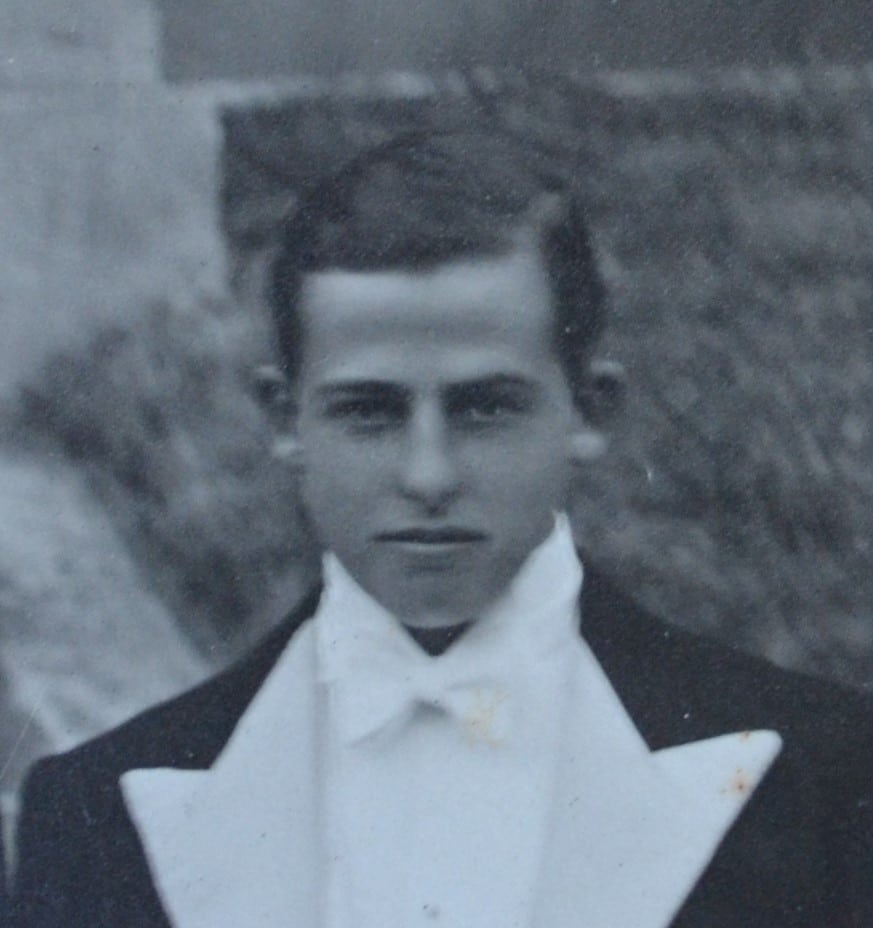
John Clifford North-Lewis (1913-1943)
John Clifford North-Lewis was born on 22 July 1913, the twin son of Henry North-Lewis, a solicitor, and Eleanor (née Bushell). His brother, William Esmond North-Lewis, also attended Worcester College. John North-Lewis was educated at Harrow School from 1927 to 1931, and entered Worcester College, Oxford on 7 October 1932. He achieved 3rd class honours in Jurisprudence in 1935 and was a member of the Kingsley dining club during his time at the College.After leaving the University of Oxford John North-Lewis became a solicitor, but was commissioned as a Pilot Officer in the Royal Air Force Volunteer Reserve on 15 October 1941. He was promoted to Flying Officer on 1 October 1942, and married to Margaret Taylor the same year.
On 2 May 1943 John North-Lewis and his crew took off from RAF Honeybourne in Worcestershire for a night navigational exercise. They set a course towards the Scottish borders but the air station received a distress message from the aircraft when it was over the sea, as it had suffered an engine failure. Flying Officer John North-Lewis was forced to crash land onto the sea and he and two other crew members were killed. He was 29 years old.
John North-Lewis is buried at St Martin’s Church, Brampton in Cumbria, and is commemorated on the war memorials at Harrow School, and Worcester College, Oxford.
Photograph of John North-Lewis in the Kingsley Club, 1935, Worcester College Archives; school information courtesy of the Harrow School Archives; further information from TNA – No. 24 Operational Training Unit Operations book, AIR 29/688/1.
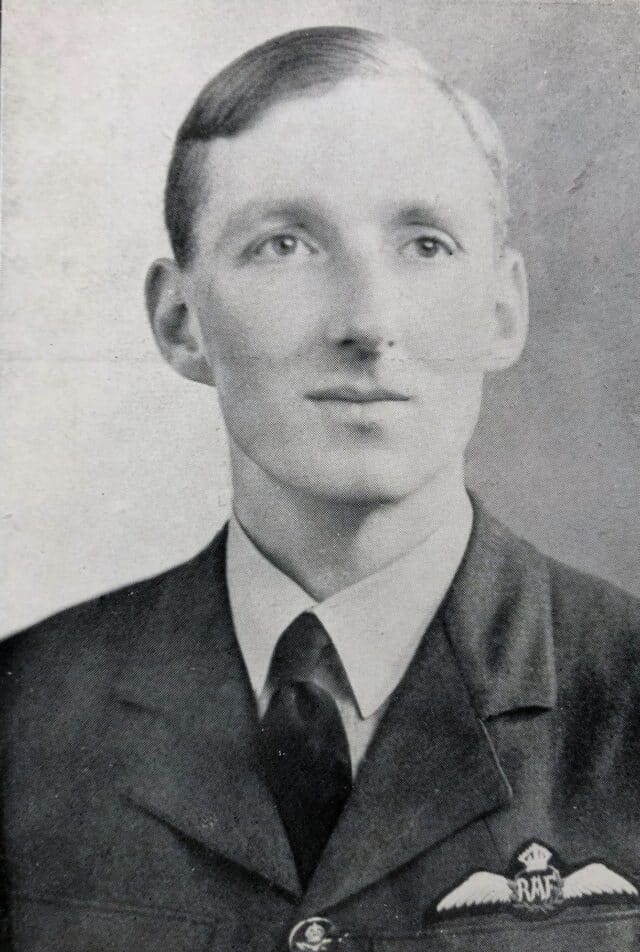
Edward Guy Simonds (1914-1943)
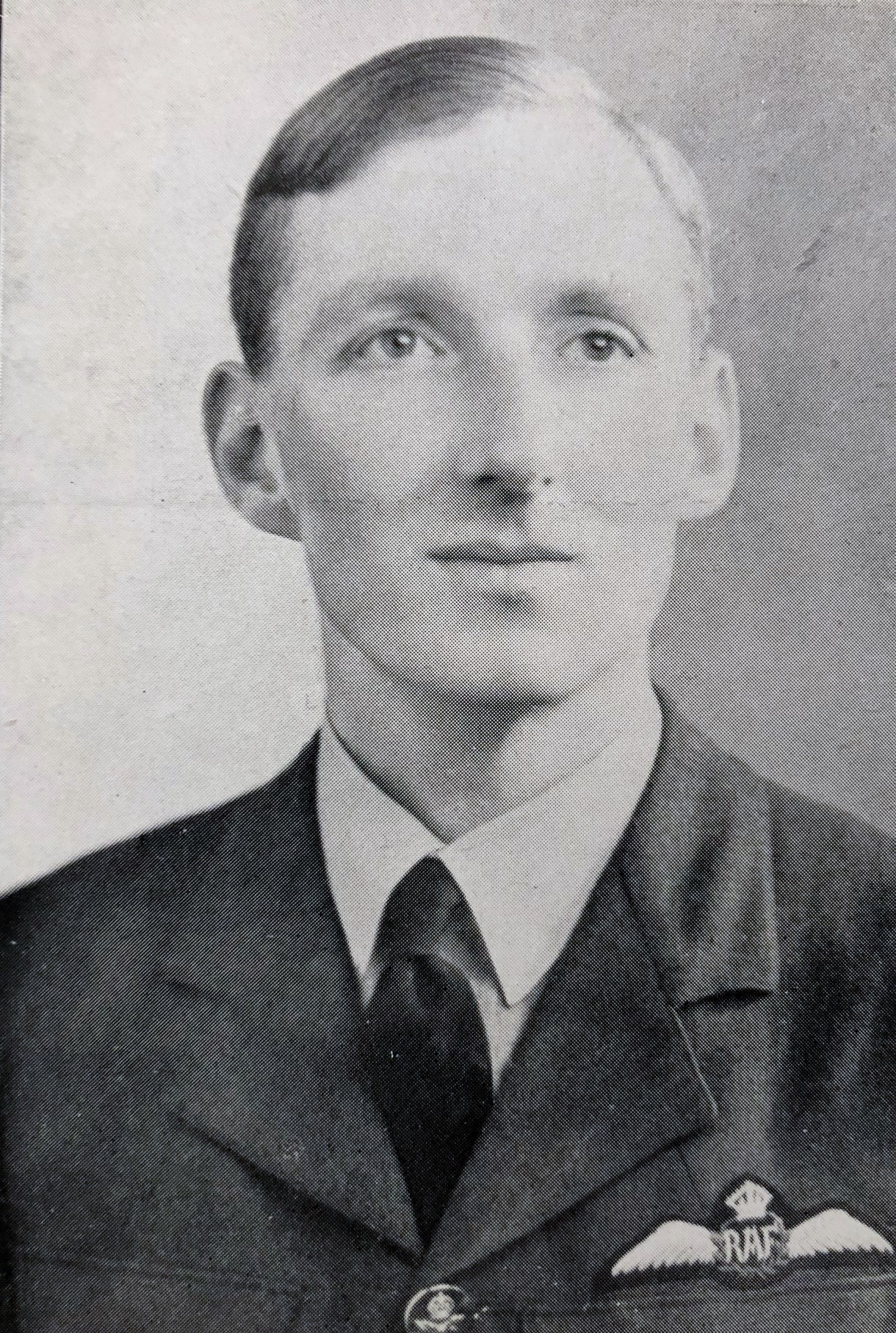
Edward Guy Simonds (1914-1943)
Edward Guy Simonds was born in Kensington in London on 19 March 1914, the eldest son of Major Maurice Simonds of the Berkshire Yeomanry, and Constance (née Seaton). He was educated at Wellington College, where he was a Dormitory Prefect. He entered Worcester College, Oxford on 7 October 1932 and graduated with a pass degree in 1936. During his time in Oxford he served as an officer cadet in the Oxford University Officer Training Corps. After leaving University he worked for Barclays Bank.Edward Simonds was commissioned as a 2nd Lieutenant in the 99th (Buckinghamshire and Berkshire Yeomanry) Field Brigade, Royal Artillery on 30 January 1937 and transferred to the Royal Air Force with the rank of Pilot Officer on 24 January 1942. On 20 May 1943 Edward Simonds and his crew from No. 1 Overseas Aircraft Delivery Unit took off from RAF Portreath in Cornwall in a Blenheim aircraft for a ferry flight to Gibraltar. During the flight they were incepted and shot down by a German fighter with the loss of the entire crew. Flying Officer Edward Simonds was aged 29.
His commemorated on the Runnymede Memorial and the war memorials at Wellington College and Worcester College, Oxford.
Photograph from George Edinger (ed), Wellington College Roll of Honour 1939-1945 (1949); further information from TNA – No.1 Overseas Aircraft Delivery Unit operations book, AIR 29/471/6.

Richard Maxwell Hanson (1920-1943)

Richard Maxwell Hanson (1920-1943)
Richard Maxwell Hanson was born in London on 21 May 1920, the only son of Beatrice (née Heald) and Lieutenant Colonel John Hanson OBE, a chartered accountant. He was educated at Imperial Service College, Windsor (now part of Haileybury) from 1933 to 1938, where he was a house captain, a school prefect, and captain of the 1st Cricket XI and the 1st Rugby XV. He entered Worcester College on 7 October 1938, but left without taking a degree.
Richard Hanson attended the 170th Officer Cadet Training Unit before being commissioned as a 2nd Lieutenant in the Gordon Highlanders on 1 February 1941. He transferred to the Royal Artillery with the same rank on 18 December 1941, and transferred to the Gilder Pilot Regiment on 4 March 1942. On 9 July 1943 the Allies began Operation Husky, the invasion of Sicily, with the dropping of paratroopers supported by glider borne infantry. Richard Hanson was one of the gilder pilots and took off with his crew member and three men of the 2nd (Airborne) Battalion South Staffordshire Regiment on board. After being released by the tug aircraft, the glider was forced to ditch in the sea. Lieutenant Richard Hanson insisted that the other men take the available life belts, and was drowned while attempting to swim to shore. He was 23 years old.
Richard Hanson is commemorated on the Cassino Memorial, and on the war memorials at Imperial Service College, and at Worcester College, Oxford.
School information courtesy of the Haileybury School Archives, further information from TNA – Glider Pilot Regiment Casualties Operation Husky, WO 361/943.
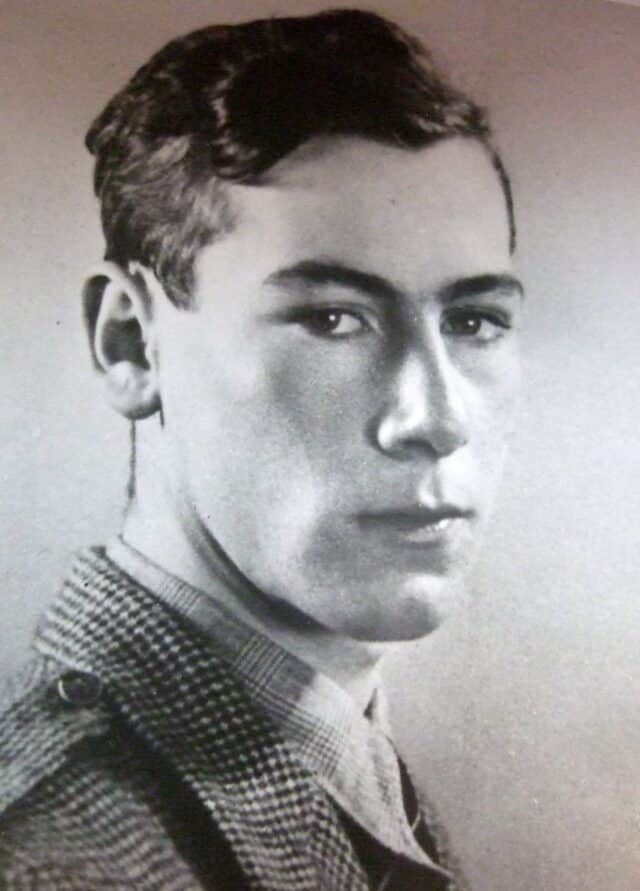
George Redvers Hudson Banks Stewart (1921-1943)
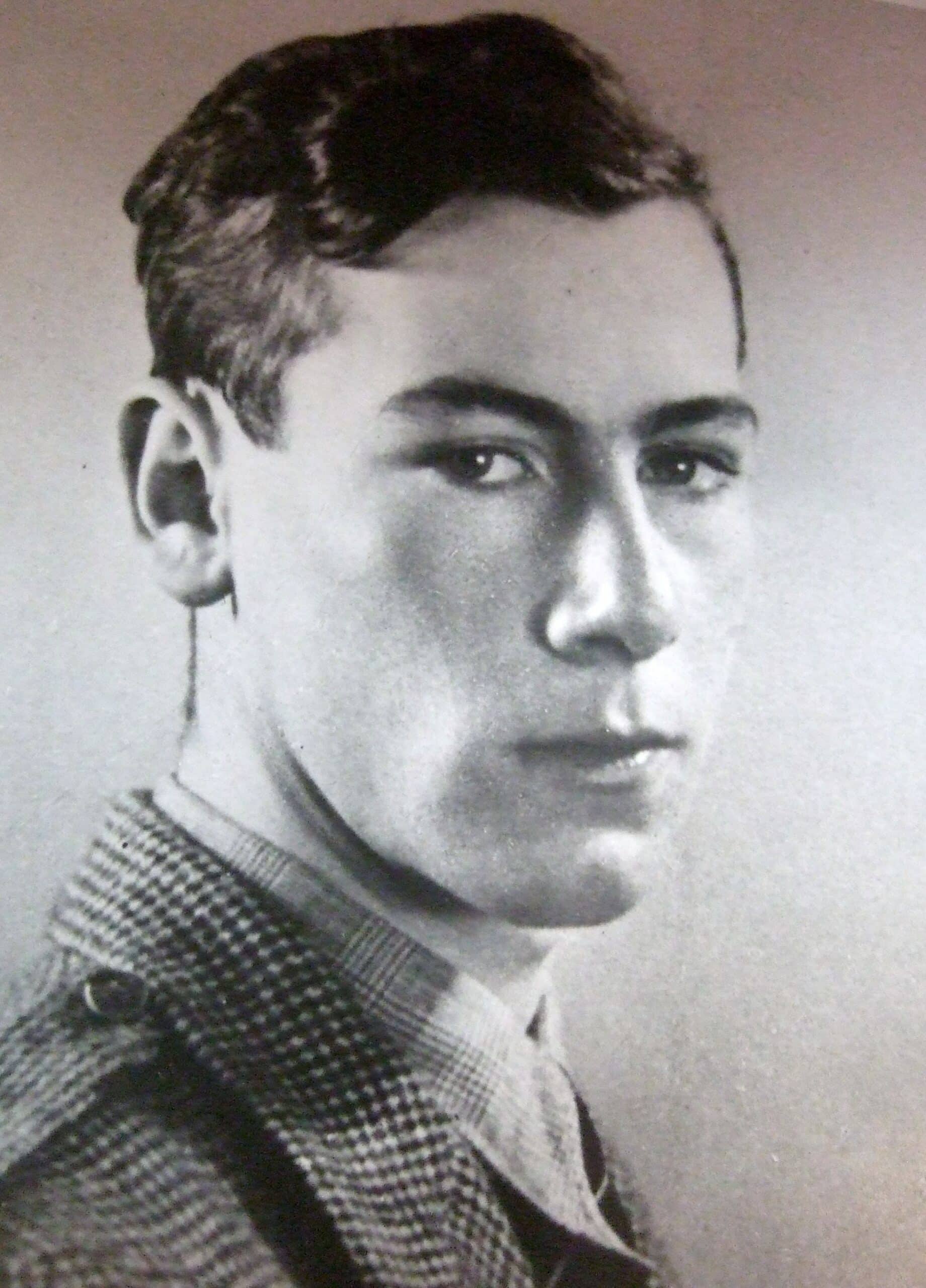
George Redvers Hudson Banks Stewart (1921-1943)
George Redvers Hudson Banks Stewart was born on 16 January 1921, the elder son of Mabel Banks (née Sparks) and Redvers Buller Stewart, a Calcutta jute merchant. His parents returned to India shortly after the birth of his younger brother, leaving the two boys in the care of his aunts at Kirriemuir in Scotland. George Stewart was educated at Trinity College Glenalmond from 1934 to 1939. George Stewart entered Worcester College, Oxford, on 13 October 1939 with an exhibition, but left to teach at Trinity College, Glenalmond in 1940. In 1941 he gave up his place at Worcester College, without taking a degree, and joined the armed forces. He was commissioned as a 2nd Lieutenant in the Black Watch (Royal Highlanders) on 14 March 1942, and was subsequently wounded at the Battle of El Alamein.
On 7 July 1943 the 5th Battalion Black Watch landed at Sicily and advanced inland. On 21 July 1943 they relieved the 5/7th Battalion Gordon Highlanders on the right of the village of Sferro. On 23 July 1943 they came under heavy shell fire, during which Lieutenant George Stewart was killed. He was 22 years old.
George Stewart is buried at Catania War Cemetery on Sicily and commemorated on the war memorial at Worcester College, Oxford.
Photograph, school and other information courtesy of Glenalmond College Archives; further information from TNA – 5th Battalion Black Watch war diaries, WO 169/10179.
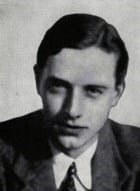
Andrew Bruce Warwick Illius (1922-1943)

Andrew Bruce Warwick Illius (1922-1943)
Andrew Bruce Warwick Illius was born in Tamil Nadu, India on 7 February 1922, the younger son of Lieutenant Colonel John Warwick Illius MRCS, Indian Medical Service, and Marion (née Gill). He was educated at Oundle School from 1936 to 1940, where he was awarded his house colours for football and was a noted actor.Andrew Illius entered Worcester College on 19 April 1940 to study law. During his time at the College he was a member of the Buskins, the College drama society, and served as its President for Michaelmas Term 1941. He did not return to the College after December 1941, instead joining the RAF. He trained as a pilot in the United States, passing out of his course with the Gold Medal.
Andrew Illius was commissioned as a Pilot Officer on 10 November 1942 and promoted to Flying Officer on 10 May 1943. On 23 August 1943 he and his crew from 156 Squadron took off from RAF Warboys for a raid on Berlin. Their Lancaster crashed in the Tegeler See in the northwest of Berlin and exploded on impact. Flying Officer Andrew Illius was killed instantly. He was 21 years old.
Andrew Illius is buried at Berlin War Cemetery in Germany. He is commemorated on the war memorial at the Holy Apostles Church, Cheltenham, and on the memorials at Oundle School and Worcester College, Oxford.
Photograph and school information courtesy of Oundle School Archives; further information from W. R. Chorley, Bomber Command Losses of the Second World War (2005); and Martin Middlebrook and Chris Everitt, The Bomber Command War Diaires 1939-1945 (1985).

Cyril Harry Hallett (1919-1943)

Cyril Harry Hallett (1919-1943)
Cyril Harry Hallett was born in Oxford on 7 October 1919, the son of Alice (née Brown) and Harry Hallett, a goods carman for a railway company. He was employed by Worcester College as the ‘Senior Common Room boy’.
Cyril Hallett married Vera Cox in Oxford in 1940. They had a daughter, Linda, born in 1941, and lived in Upper Wolvercote. He served as a Private in the 7th Battalion Oxfordshire and Buckinghamshire Light Infantry, and landed on the beaches of Salerno, Italy on 9 September 1943. By 11 September they were in the front line and were under shell and mortar fire throughout the day. Private Cyril Hallett was killed in action during the following day, 12 September 1943. He was 23 years old.
Cyril Hallett is buried at Salerno War Cemetery, Italy, and commemorated on the war memorial at Worcester College, Oxford.
Further information from TNA – 7th Battalion Oxfordshire and Buckinghamshire Regiment war diaries, WO 169/10278.
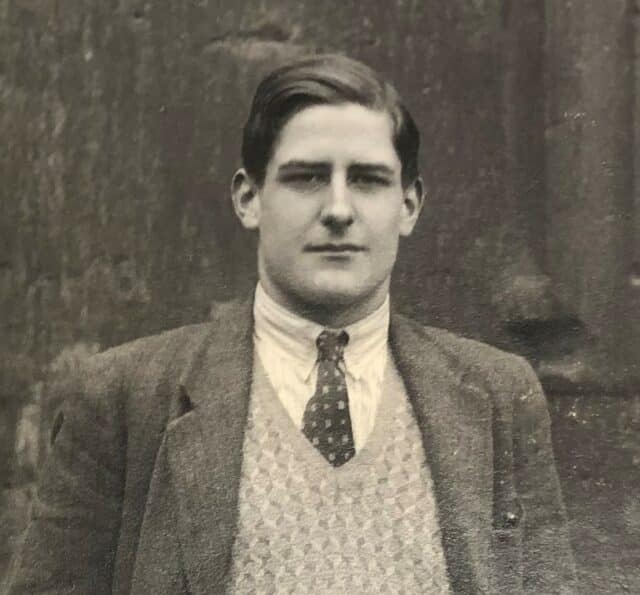
Andrew Herbert Dixon (1918-1943)
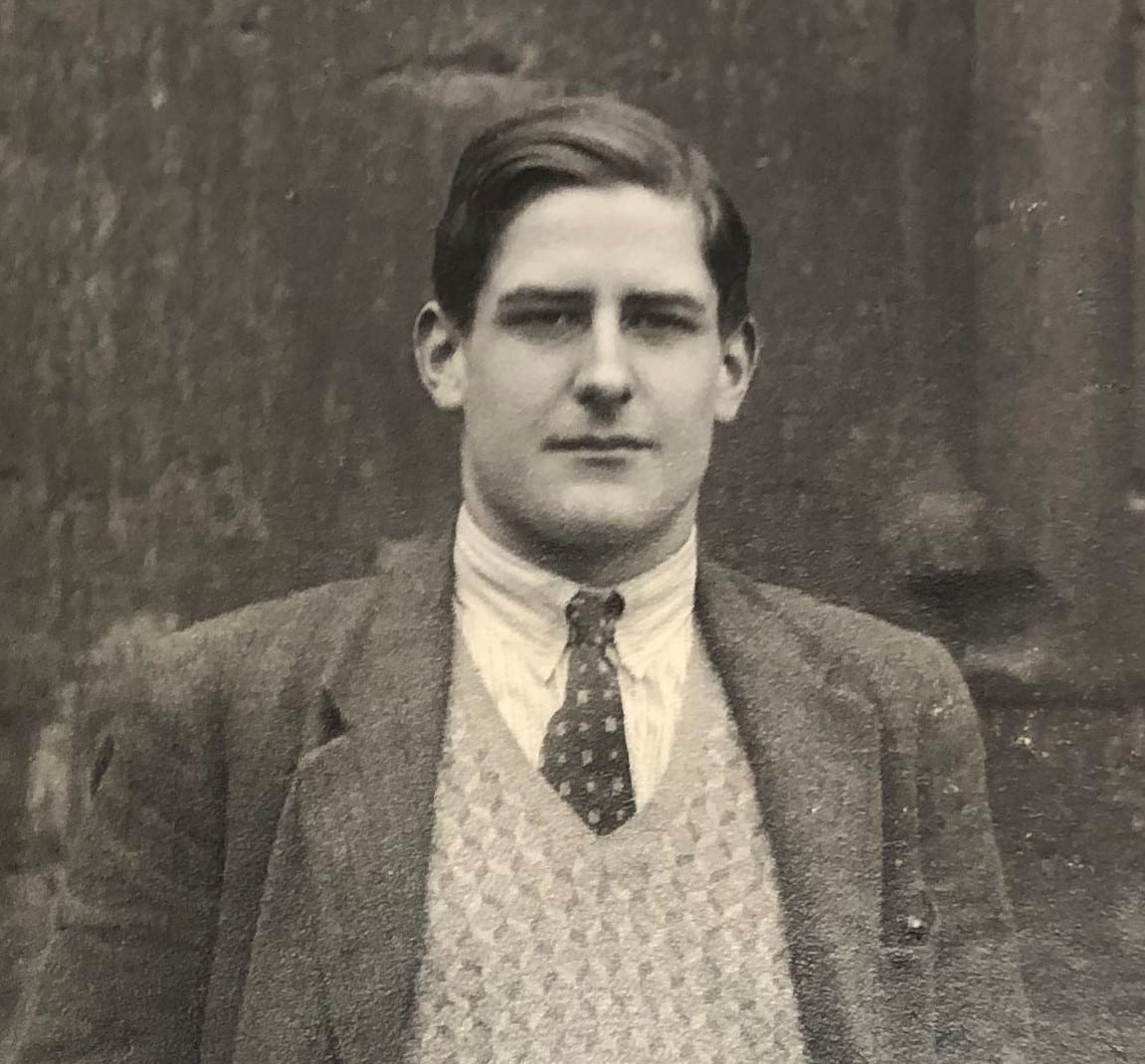
Andrew Herbert Dixon (1918-1943)
Andrew Herbert Dixon was born at Guildford in Surrey on 26 January 1918, the son of Elsie (née Simpson) and William Dixon, a barrister at law of Innerpeffray Lodge, Crieff, Perthshire. He was educated at Trinity College, Glenalmond from 1931 to 1935 and entered Worcester College, Oxford on 9 October 1936. He achieved third class honours in Jurisprudence in 1939. While at Worcester, Andrew Dixon was a member of the Worcester College Boat Club and rowed in the 2nd Torpid and 2nd Eight in 1937, and the 1st Torpid and 1st Eight in 1938.Andrew Dixon was commissioned as a 2nd Lieutenant in the Manchester Regiment, but was diagnosed with cancer in 1943 while serving in Malta. He underwent an operation there, and was treated with X-ray therapy but to no avail. He was evacuated to Edinburgh where he died on 5 October 1943, aged 25.
In his will he left the sum of £50 per annum for an Exhibition in either Classics or History to students at Worcester College, to be offered in the first instance to persons educated at Glenalmond College.
Andrew Dixon is commemorated on the war memorials at Glenalmond College, the Inner Temple and at Worcester College, Oxford.
Photograph of Andrew Dixon in the Worcester College 2nd Torpid, 1937, Worcester College Archives; school and other information courtesy of Glenalmond College Archives.
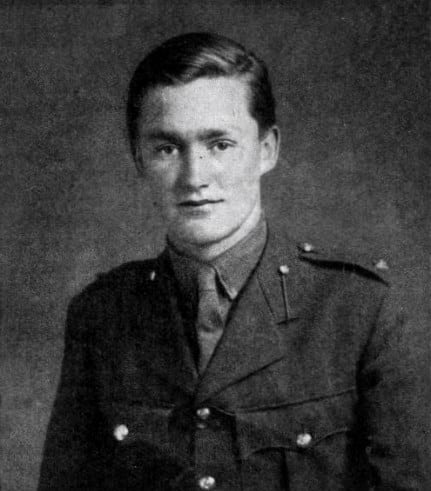
John Roger Bodley Wright (1919-1943)

John Roger Bodley Wright (1919-1943)
John Roger Bodley Wright, known as Roger, was born in Kent on 6 October 1919, the son of Dorothea (née Mahler) and Ralph Fletcher Wright. He was educated at the Dragon School, Oxford, from 1930 to 1933, where he played cricket, rugby and hockey, and went on to Bradfield College from 1933 to 1938 on an exhibition where he was a member of the school football, rugby and cricket teams. Roger Wright entered Worcester College, Oxford on 7 October 1938 but left without taking a degree following the outbreak of war.Roger Wright enlisted as a Private in the Royal Warwickshire Regiment in September 1939, before being commissioned as a 2nd Lieutenant in the Oxfordshire and Buckinghamshire Light Infantry in the summer of 1940. He joined the 7th Battalion of his regiment on 27 June 1940. After two years of training in England he embarked for overseas service in August 1942, the same month he became engaged to Daphne Dunkerley. Roger Wright served firstly in Iraq before deploying to Tunisia for the final stages of the North African campaign where they saw action at Enfidaville. He was appointed as A Company Commander on 25 January 1943. On the conclusion of the fighting in Tunisia a further period of training followed before the Battalion was posted to Italy where he saw action in heavy fighting in October and November 1943 and was awarded the Distinguished Service Order for his actions there.
Captain Roger Wright was severely wounded in action at San Clemente on 10 November 1943 while making a personal reconnaissance. He was evacuated to a dressing station where he was operated on, but he died on 13 November 1943 without regaining consciousness. He was 24 years old.
Roger Wright is buried at Naples War Cemetery in Italy and commemorated on the war memorials at the Dragon School, Bradfield College, and Worcester College, Oxford.
Photograph and school information from ‘Memorials of the Old Boys of the Dragon School’ (1948); further information from TNA: Recommendation for DSO, WO 373/4/16; 7th Battalion Oxfordshire and Buckinghamshire Regiment war diaries, WO 169/10278.

William Henry Caulfeild (1911-1930)

William Henry Caulfeild (1911-1930)
William Henry Caulfeild was born in County Limerick, Ireland on 7 October 1911, the youngest son of Mary (née Bacon) and George Blake Caulfeild. He was educated at Forest School, London from 1925 to 1929, where he was a House Monitor and played fives, cricket and football.
William Caulfeild entered Worcester College on 10 October 1930 and spent three years at the College, although he left without taking a degree. He married Lorna Wilkinson and during the 1930s he and his wife worked as hoteliers at Villefranche in the south of France. The family had returned to London by the outbreak of war and William Caulfeild attended the Officer Producing Centre for the Royal Army Service Corps before being commissioned as a 2nd Lieutenant in the RASC on 18 May 1940.
Major William Caulfeild died on 2 December 1943, aged 32, in India. He is buried at Chittagong War Cemetery (now in Bangladesh) and commemorated on the war memorials at Forest School and Worcester College, Oxford.
School information courtesy of Forest School Archives.

William Hugh Bailey (1911-1943)

William Hugh Bailey (1911-1943)
William Hugh Bailey was born on 16 May 1911 in Penrith, Cumberland, the third son of Jessie (née Purves) and Richard Bailey, a book keeper in an estate office. He attended Worksop College, and was then Assistant Master at King William’s College on the Isle of Man before entering Worcester College, Oxford on 9 October 1931, aged 20. William Bailey achieved 4th class honours in French and Spanish in 1934. After graduating he taught at Wolverhampton Grammar School.
William Bailey was commissioned as a Sub Lieutenant in the Royal Naval Volunteer Reserve on 26 June 1942 and was posted to HM Trawler Rysa. On 8 December 1943 HM Trawler Rysa was mine sweeping off the Sardinian coast near the Maddalena archipelago in order to keep sea lanes open for supply ships supporting the Allied campaign in Italy. During the operation the ship struck a mine, which exploded killing nineteen of the crew, including Lieutenant William Bailey. He was 32 years old.
William Bailey is commemorated on the Lowestoft Naval Memorial, and on the war memorial at Worcester College, Oxford.
Further information from TNA – Navael Casualties HM Trawler Rysa, ADM 358/1953.
Members who died in 1944

Walter Fairfax Cameron Cassels (1920-1944)

Walter Fairfax Cameron Cassels (1920-1944)
Walter Fairfax Cameron Cassels was born in London on 6 January 1920, the son of Georgina (née Eastwood) and George Cassels, a banker. He was educated at Eton College until 1937 and entered Worcester College, Oxford on 7 October 1938 to study history. He left the College for military service before taking his degree.
Walter Cassels was commissioned as a 2nd Lieutenant in the Oxfordshire and Buckinghamshire Light Infantry on the 27 September 1941. In 1944 he was attached to the 1st Battalion Somerset Light Infantry in Burma, where he took part in an attack on a Japanese position on Pyinshe Kala Ridge on 26 January 1944. The following day the Japanese launched a counterattack and the Somersets were forced to fall back, and to abandon their wounded, who were reportedly killed by the Japanese troops. Lieutenant Walter Cassels was among the wounded men known to have been left behind, and he was reported as killed in action on 27 January 1944. He was 24 years old.
Walter Cassels is commemorated on the Rangoon Memorial, and on the war memorials at Eton College and Worcester College, Oxford.
School information from ‘List of Etonians who fought in the World War 1939-1945; further information from TNA – 1st Battalion Somerset Light Infantry war diary, WO 172/4916.

Francis Howard Savory (1918-1944)

Francis Howard Savory (1918-1944)
Francis Howard Savory was born in Chelsea on 28 October 1918, the son of the Reverend Gerald Savory and Margaret (née Dickins). He was educated at Rugby School from 1932 to 1937 where he was a member of the School Rugby XV and excelled at singing and playing the cello.
Francis Savory entered Worcester College on 8 October 1937 on a choral exhibition, and achieved 2nd class honours in Jurisprudence in 1940. He enlisted as a Private in the Queen’s Royal Regiment, transferring to the East Surrey Regiment on 3 October 1940, before being commissioned as a 2nd Lieutenant in the Royal Artillery on 1 August 1942. He joined 22 Battery, 24th Field Regiment in the field on 18 August 1942.
On 8 February 1944 the 24th Field Regiment was in positions to the north of Anzio in Italy. During the morning they came under enemy artillery fire and Lieutenant Francis Savory was killed during the bombardment. He was 25 years old.
Francis Savory is buried in Anzio War Cemetery in Italy. He is commemorated on the war memorials at St John the Baptist’s Church, Cherington in Warwickshire, and at Rugby School and Worcester College, Oxford. After his death, his parents gave his books to the College Law Library.
School information courtesy of Rugby School Archives; further information from TNA – 24 Field Regiment RA war diaries, WO 170/934.

Harald Ivar Sylvester Bendixson (1902-1944)
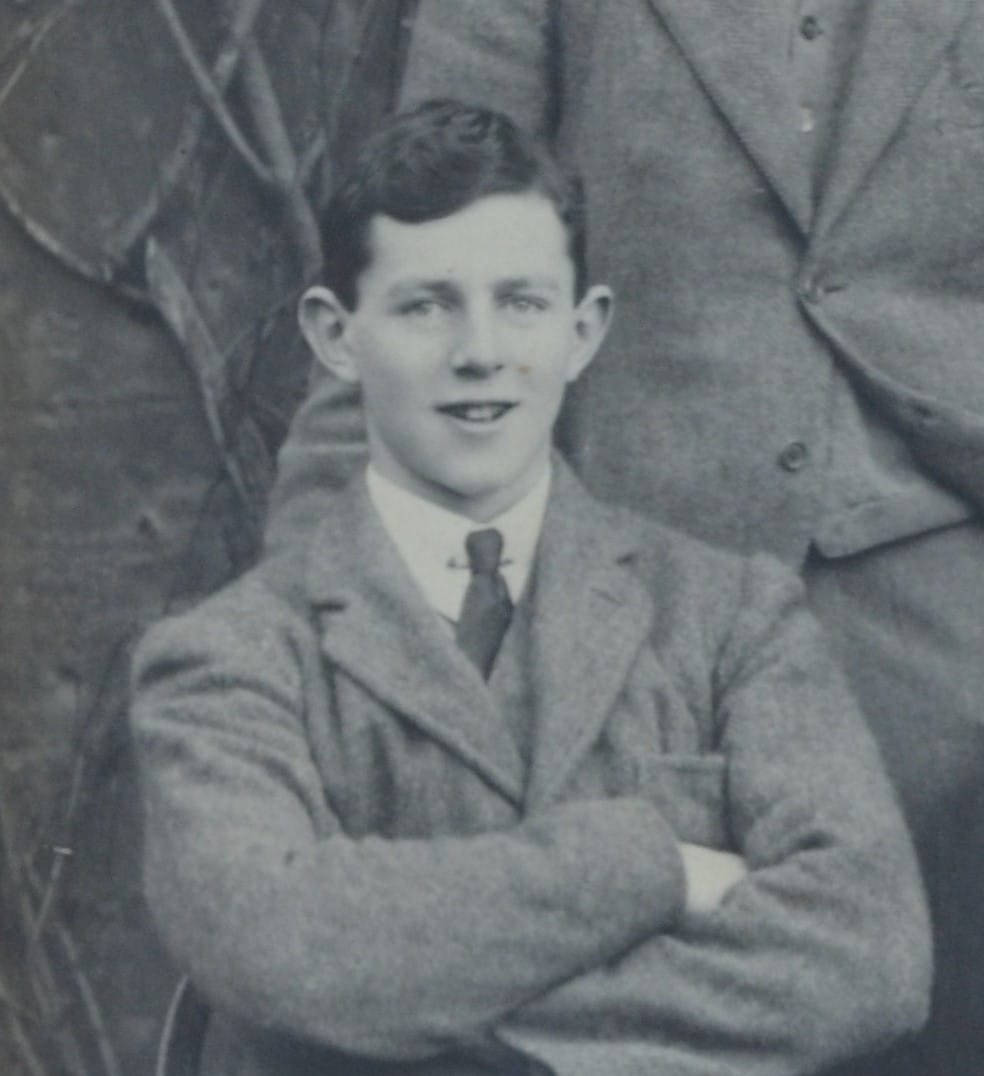
Harald Ivar Sylvester Bendixson (1902-1944)
Harald Ivar Sylvester Bendixson, known as Sylvester, was born in London on 8 May 1902, the younger son of Evelyn (née Johnson) and Harald Bendixson, a merchant. He was educated at Rugby School from 1915 to 1920.Sylvester Bendixson entered Worcester College on 8 October 1920. He was a successful member of the College Boat Club, rowing in both the Torpid and the Eight in 1921 and 1922. In 1922 the Worcester College Torpid went Head of the River. Bendixson left Oxford without taking a degree and became a stockbroker. He married Evelyn Palgrave in 1931.
In 1940, the firm of stockbrokers in which Sylvester Bendixson was a partner was dissolved by mutual consent, and he was commissioned as a probationary Pilot Officer in the Royal Air Force Volunteer Reserve. He was confirmed in his rank and promoted to Flying Officer on 27 December 1941.
Sylvester Bendixson was serving with Air Headquarters, Far East when he was captured by the Japanese on the 17 March 1942. Flight Lieutenant Sylvester Bendixson spent just under two years as a prisoner of war and died on 9 March 1944 of suppurative bronchitis at a camp at Medan on North Sumatra. He was 41 years old.
Sylvester Bendixson is buried at Jakarta War Cemetery and commemorated on the war memorials at Rugby School and Worcester College, Oxford.
Photograph of Sylvester Bendixson in the Worcester College 1st Torpid that went Head of the River in 1922, Worcester College Archives; further information from TNA – RAF Casualties Far East, WO 361/1328; and cofepow.org.uk.

Christopher William Barneby (1915-1944)

Christopher William Barneby (1915-1944)
Christopher William Barneby, known as Chris, was born in Herefordshire on 19 June 1915, the only son of Verena (née Turner) and William Barneby. He was educated at Harrow School from 1929 to 1934, where he was awarded the watercolour painting prize in 1933.
Chris Barneby entered Worcester College on 14 October 1934. While up at the College he was a member of the Boat Club, rowing with the 3rd Eight in 1935. He achieved 4th class honours in Physics in 1937. Following his graduation he attended the Slade School of Art.
In 1938 Chris Barneby joined the Royal Auxiliary Air Force but, following the outbreak of war, he joined an Officer Training Unit for the Royal Artillery and was commissioned as a 2nd Lieutenant on 21 September 1940. He served with the 96th (Royal Devon Yeomanry) Field Regiment in West Africa from 1942, and was attached to the 3rd Light Battery, West African Artillery, Royal West African Frontier Force from 1943 as commanding officer of A Troop; the regiment were posted to India for service in Burma [now Myanmar] that same year.
In March 1944 Chris Barneby’s A Troop moved to support the 4th Nigeria Regiment at the village of Sabaseck, near Wanbanhla, Burma. He led a party forward to establish a forward observation post, which was attacked by the Japanese on 18 March. Captain Chris Barneby was killed in the first assault. He was 28 years old.
Chris Barneby is commemorated on the Rangoon Memorial, and on the war memorials of St Mary’s Church, Edvin Leach, Herefordshire, Harrow School, and Worcester College, Oxford.
School information courtesy of Harrow School Archives; further information from TNA – 3rd Light Battery, West African Artillery war diaries, WO 172/6656; and John A. L. Hamilton, War Bush – 81 (West African) Division in Burma 1943-1945 (2001).

Thomas Henry Maurice Roseby (1921-1944)

Thomas Henry Maurice Roseby (1921-1944)
Thomas Henry Maurice Roseby was born in Mauritius on 16 September 1921, the only son of Alice (née Coles) and Thomas Roseby, a barrister-at-law and Judge of the Supreme Court of Mauritius. He was educated at Cheltenham College from 1932 to 1939, and entered Worcester College, Oxford on 13 October 1939, but left in 1940 to join the army.
Thomas Roseby was commissioned as a 2nd Lieutenant in the 16th Punjab Regiment before being attached to the 152nd Battalion Indian Parachute Regiment where he was appointed the second in command of C Company. In March 1944 the Japanese launched a major offensive into India with the main objective being the town of Kohima. On the afternoon of the 18th of March 1944 Naga villagers arrived from the village of Pushing to report that Japanese troops had occupied their village and were advancing west towards Sangshak. Directly in the path of the Japanese advance was C Company, under the command of Major John Fuller. By 2pm on 19 March they were completely surrounded. They beat off a number of continuous attacks throughout the day and night, during which Thomas Roseby was seriously wounded. Captain Thomas Roseby died of his injuries on 20 March 1944, aged 22.
Thomas Roseby is buried at Imphal War Cemetery in India. He is commemorated on the Cheltenham Borough war memorial, and on the war memorials at Cheltenham College and Worcester College, Oxford.
School information courtesy of Cheltenham College Archives; further information from Harry Seaman, The Battle at Shangshak (1989).
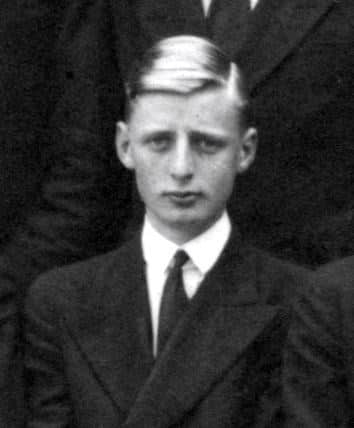
Michael Granville Brown (1921-1944)

Michael Granville Brown (1921-1944)
Michael Granville Brown was born in Wandsworth on 29 April 1921 to South African parents. He was adopted and raised by Ethel Pickersgill-Cunliffe and educated at Chelmsford Hall and Eastbourne College from 1935 to 1939, where he was appointed a House Captain. In October 1939 Michael Brown matriculated at Worcester College to study history, but left the College in early 1941 for military service. He attended an Officer Cadet Training Unit before being commissioned as a 2nd Lieutenant in the Rifle Brigade (Prince Consort’s Own) on 19 July 1941. He transferred to the Somerset Light Infantry with the rank of Lieutenant on 3 April 1943 and was subsequently attached to the 1st Battalion Gambia Regiment, joining them in the field in June 1943.
On the night of the 26/27 March 1944, Lieutenant Michael Brown was killed in action while on patrol in the area of Aungya, Burma [now Myanmar]. He was 22 years old.
Michael Brown is commemorated on the Rangoon Memorial, and on the war memorials of Eastbourne College, and Worcester College, Oxford.
Photograph courtesy of Eastbourne College Archives; further information from the ‘Eastbourne College War Service Record 1939-1946’; TNA – War Diary 1st Gambia Regt, WO 172/6699; and John A. L. Hamilton, War Bush – 81 (West African) Division in Burma 1943-1945 (2001).

Peter Astley Stockton (1920-1944)

Peter Astley Stockton (1920-1944)
Peter Astley Stockton was born in Lincolnshire on 23 November 1920, the younger son of the Reverend Samuel Stockton and Kathleen (née Summers). He was educated at Shrewsbury School from 1932 to 1939, and entered Worcester College, Oxford on 13 October 1939 to read law. He left Oxford to join the army without taking a degree.
Peter Stockton was commissioned as a 2nd Lieutenant in the King’s Regiment (Liverpool) on 12 April 1941 and was later attached to the 2nd Battalion Durham Light Infantry where he commanded No. 4 Platoon in A Company.
Lieutenant Peter Stockton was killed in action on 23 April 1944, leading his Platoon in a counterattack on a Japanese trench during the Battle of Kohima in India. He was 23 years old.
Peter Stockton is commemorated on the Rangoon Memorial, and on the war memorials at Shrewsbury School and Worcester College, Oxford.
School information courtesy of Shrewsbury School Archives; further information from TNA: 2nd Battalion Durham Light Infantry war diaries, WO 172/4877; Casualties 2nd Durham Light Infantry, WO 361/399; and from Leslie Edwards, Kohima – The Furthest Battle (2018).

Michael John St Brelade Seale (1920-1944)

Michael John St Brelade Seale (1920-1944)
Michael John St Brelade Seale was born in Berkshire on 13 August 1920, the only son of Flight Lieutenant Cedric Seale RAFVR and Dorothy (née Seanor). He was educated at Trent College, and entered Worcester College on 13 October 1939 as a scholar. He left the following year, without taking a degree, to join the army.
Michael Seale attended an Officer Cadet Training Unit before being commissioned as a 2nd Lieutenant in the East Kent Regiment (The Buffs) on 29 March 1941. He later transferred for service with the Indian Army. In late May 1944, the 4th Battalion 12th Frontier Force were involved in fighting along the Silchar Track near the village of Nungshai in Burma [now Myanmar] where they had been involved in a number of skirmishes with the Japanese. On 20 May 1944 Lieutenant Michael Seale was killed in a failed attack on an enemy position near the village. He was 23 years old.
Michael Seale is commemorated on the Rangoon Memorial, and on the war memorials at Bexley in Kent and at Worcester College, Oxford.
Further information from TNA – 4th/12th Frontier Force war diaries, WO 172/4979.

Alfred Charles Allwood Greenfield (1923-1944)

Alfred Charles Allwood Greenfield (1923-1944)
Alfred Charles Allwood Greenfield was born in Surrey on 30 July 1923, the only child of Beatrice (née Allwood) and Charles Greenfield, a civil servant in the Scottish Education Department. He was educated at Colet Court School and at St Paul’s School from 1937 to 1941, where he was Secretary of the Cycling Club and boxed as a heavyweight. He was promoted to pack leader in the Boy Scouts in 1940.
Alfred Greenfield entered Worcester College on 10 October 1941 as an RAF cadet, and completed a short course over two terms. He was commissioned as a Pilot Officer in the RAFVR on 12 February 1943 and was promoted to Flying Officer on 12 August the same year. On the night of 6/7 June 1944 Bomber Command despatched 1,065 aircraft to attack enemy communication lines in support of the Allied invasion. Alfred Greenfield and his crew from 44 Squadron took off from RAF Dunholme Lodge at 12.39am on 7 June 1944 bound for Caen. They were forced to attack at low level due to cloud over the area and came under heavy fire from German anti-aircraft guns. Their Lancaster failed to return from the mission and its wreckage was discovered by advancing Allied units on 27 August 1944. Flying Officer Alfred Greenfield was therefore reported killed in action on 7 June 1944, aged 20.
Alfred Greenfield is buried at La Deliverande War Cemetery in France. A stained glass window was given in his memory by his father to St Mary’s Church, Cuddington, and he is commemorated on the war memorials at St Paul’s School, and at Worcester College, Oxford.
School information courtesy of St Paul’s School Archives; further information from W. R. Chorley, Bomber Command Losses of the Second World War (2005); and Martin Middlebrook and Chris Everitt, The Bomber Command War Diaries 1939-1945 (1985).

Dick Henry Brewster Thornton (1907-1944)

Dick Henry Brewster Thornton (1907-1944)
Dick Henry Brewster Thornton was born on 21 July 1907, the elder son of Gwendoline and Thornton Benjamin Thornton, a jute merchant. He was educated at Eton College until 1926 and entered Worcester College, Oxford on 15 October 1926. He graduated with a pass degree in 1929.
Dick Thornton studied at the Inner Temple and was called to the bar in 1933. He practised as a barrister at law until 1940 and was a member of the Medico Legal Society. He married Joan Rosemary Cohen on 16 December 1937 and they honeymooned in New York. They had a son named Jeremy in December 1938.
Following the outbreak of war Dick Thornton enlisted a Special Constable with the Metropolitan Police before being commissioned as a 2nd Lieutenant in the Grenadier Guards on 4 September 1940. He suffered from an old injury to his left knee which caused some pain and caused him to walk with a limp. As a result, a medical board ruled that he should not serve on active duty. He transferred to the London District Legal Aid Section on 15 July 1942 and was promoted to Captain in October that year.
On Sunday 18 June 1944 Dick Thornton attended a service at the Guards Chapel in Whitehall to commemorate the Battle of Waterloo and the recent success in the Normandy landings. The service was in progress when the Chapel was hit by a V1 ‘Doodlebug’ rocket, the explosion completely destroying the roof and supporting walls. Major Dick Thornton was among those killed. He was 36 years old.
Dick Thornton is commemorated at Golders Green Crematorium, and on the war memorials at Lord’s Cricket Ground, Eton College, the Inner Temple and Worcester College, Oxford.
School information from ‘List of Etonians who fought in the World War 1939-1945’; further information from Jan Gore, Send More Shrouds (2017).

Ralph Henry Whitrow (1896-1944)

Ralph Henry Whitrow (1896-1944)
Ralph Henry Whitrow was born at Tunbridge Wells, Kent on 20 December 1896, the younger son of Mary (née Davey) and Benjamin Whitrow, a chemist and druggist. He was educated at Tonbridge School from 1910 to 1916, where he won the School Prize in 1916.
Ralph Whitrow enlisted in the Royal Artillery on 28 August 1916 and attended an Officer Training Unit before being commissioned as a 2nd Lieutenant in the Royal Field Artillery (Special Reserve of Officers) on 13 January 1917. He served in France. Ralph Whitrow was demobilised on 20 June 1919 and entered Worcester College, Oxford on 10 October that year, achieving 2nd class honours in Modern History in 1922. While at the College he was a member of the Boat Club, rowing in the 2nd Torpid in 1921. He went on Cuddesdon Theological College, Oxford, and was ordained in 1923. He relinquished the rank of Lieutenant when he transferred to the Royal Army Chaplains’ Department with the rank of Chaplain 4th Class on 13 October 1928.
Ralph Whitrow married Brenda Muriel Bent on 6 July 1932, and they had three children, William in 1933, and twins John and Lucy in 1936. Following the outbreak of the Second World War he was called up for war service, promoted to Chaplain 3rd Class, and appointed as Senior Chaplain to 45 Divisional Headquarter at Exeter. On 17 May 1944 he took up an appointment as Deputy Assistant Chaplain General London District and was appointed as Chaplain to the Brigade of Guards.
On 18 June 1944 Ralph Whitrow was the officiating Chaplain at a service at the Guards Chapel in Whitehall to commemorate the Battle of Waterloo and the recent success in the Normandy landings. The service was in progress when the Chapel was hit by a V1 ‘Doodlebug’ rocket, the explosion completely destroying the roof and supporting walls. The Reverend Ralph Whitrow, Chaplain 2nd Class, was among those killed. He was 47 years old.
Ralph Whitrow is buried at West Hill Old Cemetery in Winchester, and is commemorated on the war memorials at Tonbridge School and Worcester College, Oxford.
School information courtesy of Tonbridge School; further information from: David Walsh, A Duty to Serve, Tonbridge School and the 1939-1945 War (2011); and Jan Gore, Send More Shrouds (2017).
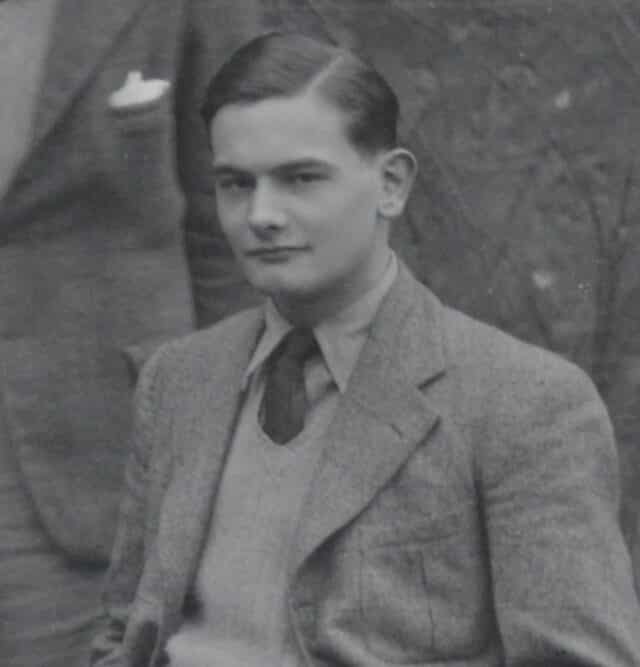
Peter Roger Anson Ford (1917-1944)
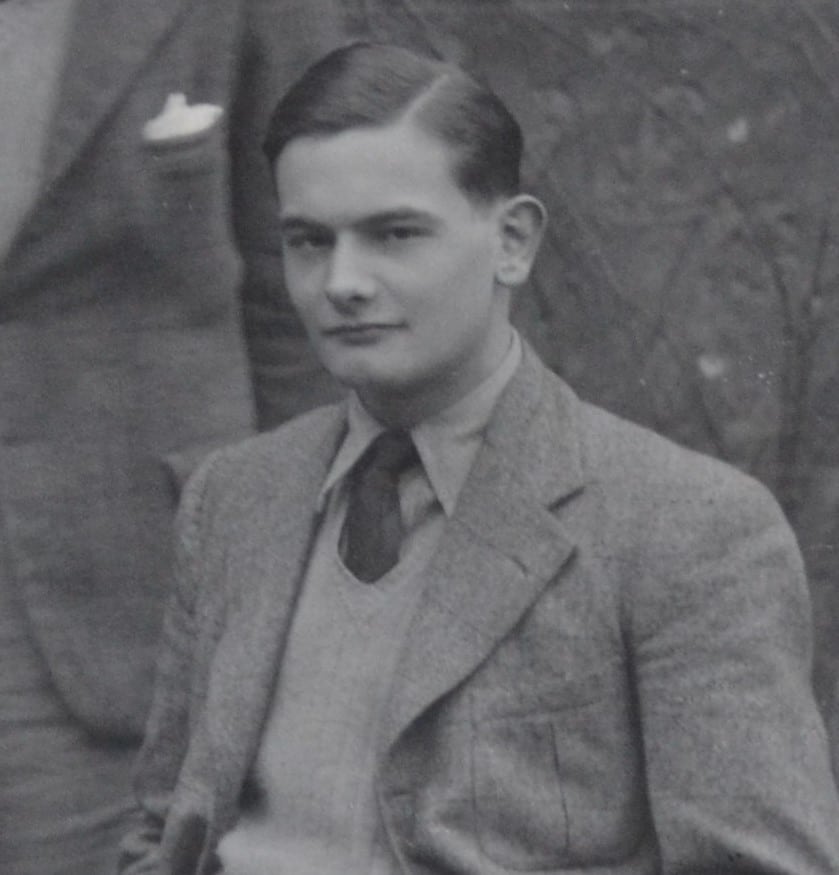
Peter Roger Anson Ford (1917-1944)
Peter Roger Anson Ford was born in Edinburgh on 8 May 1917, the eldest son of Kathleen (née Morris) and the Reverend Roger Anson Ford. He was educated first at George Watson’s College from 1925 to 1931, and then at Trinity College Glenalmond from 1931 to 1936 where he was a Lance Corporal in the Officer Training Corps.In 1936 Peter Ford was awarded scholarships to both Keble College and Worcester College in Oxford, and chose the more valuable one at Worcester. He entered the College on 9 October 1936, but left without taking a degree, and joined the RAF in 1938. While at Worcester he was a member of the College Boat Club, rowing in the 2nd Torpid and 2nd Eight in 1937.
Peter Ford was commissioned as an Acting Pilot Officer on a short service commission in the Royal Air Force on the 4th of June 1938 and was confirmed in his rank on the 4th of April 1939. He was promoted to Flying Officer on the 3rd of September 1940 and to Flight Lieutenant on the 3rd of September 1941. He saw service in Malta, Cairo, India and in Burma where he won the Distinguished Flying Cross, which was announced by the Air Ministry on the 24th of March 1942. He was serving with 113 Squadron when he was wounded during an attack on enemy shipping off Sicily. He was promoted to Squadron Leader on the 29th of December 1942 and returned to the UK in 1943.
On 20 June 1944, Peter Ford and his crew from 180 Squadron took off from RAF Dunsfold for a mission to bomb the V1 flying bomb site at Bois Coquerelle, near Abbeville. While over the target area the aircraft was hit in the nose by a burst of flak and exploded on the ground at Liercourt. The entire crew was killed, including Squadron Leader Peter Ford, who was 27 years old.
Peter Ford is buried at St Pierre Cemetery, Amiens, and commemorated on the war memorials at George Watson’s College and Worcester College, Oxford.
Photograph of Peter Ford in the Worcester College 2nd Torpid, 1937, Worcester College Archives; school and other information courtesy of George Watson’s College Archives and Glenalmond College Archives; further information from TNA – RAF Casualty Report 28.9.41, AIR/9399.
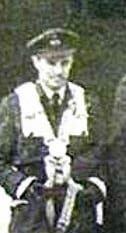
Leslie William John King (1913-1944)

Leslie William John King (1913-1944)
Leslie William John King, known as Bill, was born on 24 November 1913, the son of Emily and William King, a laboratory assistant. He was employed by Worcester College as a library clerk. Bill King enlisted in the Royal Air Force Volunteer Reserve at RAF Uxbridge in September 1939, and initially trained as an engine fitter on ground crew. By mid-1942 he had risen to the rank of Sergeant, qualified as a flight engineer, and was posted to 57 Squadron based at RAF Scampton in Lincolnshire. He was promoted to flight sergeant and took part in the low-level raid on the factory at Le Creusot on 17 October 1942, during which he was seriously wounded when a bird strike shattered the windscreen of his aircraft. He underwent treatment in hospital until his return to operations in January 1943.
Bill King was commissioned as a Pilot Officer on 9 May 1943 and by September that year had completed 29 missions with 57 Squadron. He was awarded the Distinguished Flying Cross on 22 October 1943. He was promoted to Flying Officer on 9 November 1943. On the 14 November 1943 he joined 617 (Dambusters) Squadron at RAF Coningsby in Lincolnshire, having been personally requested by Wing Commander Leonard Cheshire.
On 24 June 1944 Bill King and his crew took off from RAF Woodhall Spa in Lincolnshire for an attack on the V2 rocket launch site at Wizernes in France. During their bombing run the aircraft was hit by two flak bursts, killing Flight Lieutenant Bill King instantly. He was 30 years old.
Bill King is buried at Longuenesse Souvenir Cemetery in France, and commemorated on the war memorial at Worcester College, Oxford.
Photograph courtesy of the RAF Balderton Research Group; further information from: W. R. Chorley, Bomber Command Losses of the Second World War (2005); Martin Middlebrook and Chris Everitt, The Bomber Command War Diaries 1939-1945 (1985); and John Nichol, Return of the Dambusters (2013).

Derrick James Coffee (1924-1944)

Derrick James Coffee (1924-1944)
Derrick James Coffee was born at Beckenham in Kent on 28 May 1924, the son of Winifred (née Blackford) and Randall Coffee, senior charge engineer at an electric power station. He was educated at Beckenham County Boys School (now Langley Park School for Boys), and entered Worcester College as an RAF cadet on 24 April 1942.
After the conclusion of his RAF short course at Worcester, Derrick Coffee rose to the rank of Leading Aircraftsman before being commissioned as a Pilot Officer on 12 November 1943. He was further promoted to Flying Officer on the 12 May 1944. While training at No 4 Elementary Flying Training School based at RAF Brough Flying Officer Derrick Coffee crashed into a river during a solo flight on 30 June 1944. Although able to climb out of his aircraft, witnesses reported that he drowned before a rescue boat could reach him. He was 19 years old.
Derrick Coffee is buried at Beckenham Crematorium and Cemetery. He is commemorated on the war memorial at Worcester College, Oxford.
Further information from TNA – No.4 Elementary Flying Training School operations diary, AIR 29/617/1.

Cyril Minton-Senhouse (1909-1944)

Cyril Minton-Senhouse (1909-1944)
Cyril Minton-Senhouse was born in Wolstanton on 18 November 1909, the elder son of Emily (née Meakin) and Herbert Minton-Senhouse, the manager of a pottery works. He was educated at Sedbergh School from 1923 to1928, and entered Worcester College, Oxford on 12 October 1928. Cyril Minton-Senhouse graduated with a pass degree in 1932 and after leaving the University he was ordained in the Church of England.
In 1939, the Reverend Minton-Senhouse was vicar of Newtown, near Basingstoke in Hampshire. Following the outbreak of war he served as an ARP Warden in the village. He was commissioned as a Chaplain 4th Class in the Royal Army Chaplains Department on 17 June 1940. Cyril Minton-Senhouse married Rebe Kathleen Clarke of Haslemere in 1944.
Cyril Minton-Senhouse was posted as Padre to 151 (Ayrshire Yeomanry) Field Regiment, Royal Artillery on 31 January 1944; they arrived in Normandy on 13 June of that year. On 29 June 1944 the Regimental Headquarters came under attack from the German artillery and several enemy shells landed in the area, wounding two gunners and severely wounding Cyril Minton-Senhouse to the head. He was evacuated to a field hospital, but on 30 June 1944 the Reverend Chaplain Cyril Minton-Senhouse died of his wounds, he was 35.
Cyril Minton-Senhouse is buried at Ryes War Cemetery in France. He is commemorated on the war memorials at Newtown, Haslemere, Sedbergh School, and at Worcester College, Oxford.
School information from the Sedbergh School Register; further information from TNA -151 Field Regiment war diaries, WO 171/997.
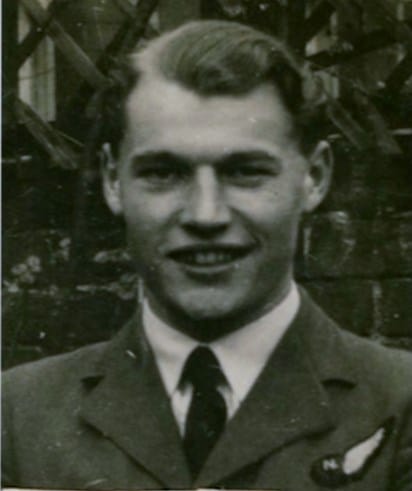
Ian David Henry Clarson (1924-1944)

Ian David Henry Clarson (1924-1944)
Ian David Henry Clarson was born in Shropshire on 6 December 1924, the son of Winifred (née Gradidge) and Major Joseph Henry Clarson. He was educated at Gosden House School near Guildford, and then at Lord Wandsworth College, Long Sutton from 1934 to 1941 where he was a member of the Football XI and the school swimming team, and Captain of the Cricket XI in 1941. On leaving school he went to work as a clerk at the offices of Messrs Heinz & Co at Bristol.Ian Clarson was called up for military service in 1942 and selected for a Royal Air Force University Short Course. He entered Worcester College, Oxford on 9 October 1942 to study modern history and geography. He was a member of the College Football XI and was selected for the University team against the RAF.
On leaving the College at the conclusion of his short course, Ian Clarson underwent further training in Northern Ireland. He rose to the rank of Leading Aircraftsman before being commissioned in the RAFVR on 1 February 1944, and trained as a navigator. In June 1944 he survived the crash of his aircraft during training. He and his crew joined 78 Squadron on 7 July 1944 and completed 3 bombing operations, but on the fourth were shot down by a German fighter on the night of the 18/19 July. The aircraft crashed in northern France killing the entire crew including Flying Officer Ian Clarson. He was 19 years old.
Ian Clarson is buried at Neufmoulin Communal Cemetery, France. He is commemorated on the war memorials at Lord Wandsworth College, and at Worcester College, Oxford.
Photograph courtesy of aircrewremembered.com; school information courtesy of Lord Wandsworth College Archives; further information from: yorkshire-aircraft.co.uk; W. R. Chorley, Bomber Command Losses of the Second World War (2005); and Martin Middlebrook and Chris Everitt, The Bomber Command War Diaries 1939-1945 (1985).
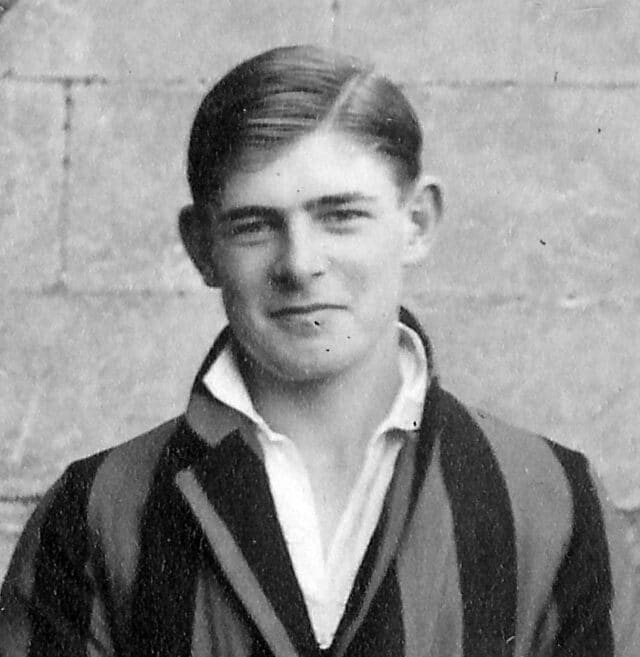
Gordon Lawrence Revnell (1916-1944)
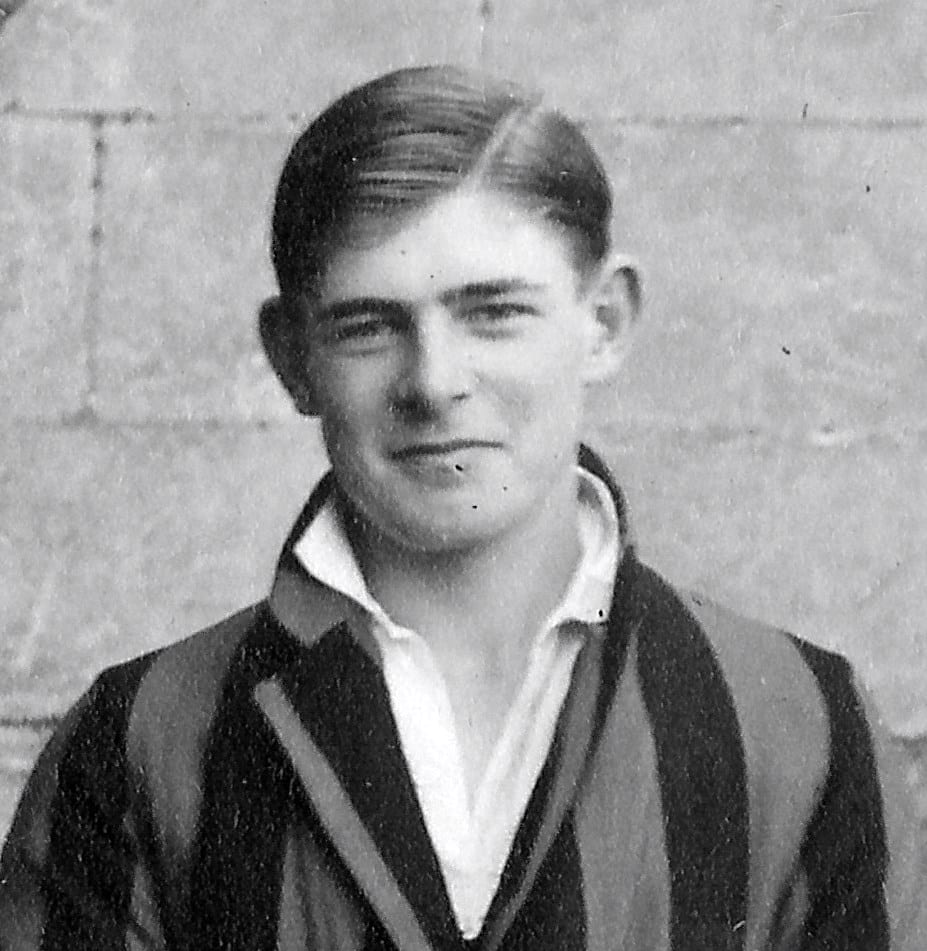
Gordon Lawrence Revnell (1916-1944)
Gordon Lawrence Revnell was born in Dover on 28 January 1916, the fourth and youngest son of the Reverend Arthur Revnell OBE and Lily (née Barker). He was educated at Kingswood School, Bath from 1929 to 1933, where he was a member of the Cricket XI and a keen actor in the school’s productions. After leaving school he was prevented from going to university by ill-health and initially worked as a school master.Gordon Revnell entered Worcester College on 13 October 1939, aged 23, but left in the summer of 1940 to join the army. He subsequently qualified for a pass degree (wartime) and his BA was conferred on 24 July 1943.
Gordon Revnell was commissioned as a 2nd Lieutenant in the Oxfordshire and Buckinghamshire Light Infantry on 31 May 1941. On 5 July 1944 he was attached to the 1st Battalion Worcestershire Regiment and joined them at Bas de Mouen in Normandy, where he was appointed as a platoon commander with A Company. Lieutenant Gordon Revnell was killed in action on the night of 23 July 1944 after A Company ran into an ambush of German Panzer Grenadiers. He was 28 years old.
Gordon Revnell is commemorated on the Bayeux Memorial and on the war memorials at Kingswood School and Worcester College, Oxford.
Photograph and school information courtesy of Kingsdown School archives; further information from TNA – 1st Battalion Worcestershire Regiment war diaries, WO 171/1396.

Peter Munro Sutherland (1924-1944)

Peter Munro Sutherland (1924-1944)
Peter Munro Sutherland was born in Northumberland on 17 August 1924, the only son of Nina (née Wimble) and Arthur Sutherland. He was educated at Loretto Junior School from 1934 to 1935 and then at Stowe School from 1936 to 1940. After a period of farm work he enlisted in the Royal Air Force Volunteer Reserve. He entered Worcester College, Oxford, on 24 April 1942, as an RAF Cadet on a short course. He was commissioned as a Pilot Officer and was promoted to Flying Officer on 17 March 1944 . He was posted to No. 14 (Pilot) Advanced Training Unit.On 29 July 1944 Peter Sutherland took off from RAF Fraserburgh in Scotland for a night navigational exercise in an Airspeed Oxford aircraft. The aircraft was descending in cloud when it struck high ground near Bucksburn in Aberdeenshire at 2am. Due to fog, the wreck was not discovered until 7am that morning, when Peter Sutherland was found alive and conscious hanging from the wreckage with his leg trapped. He was taken to the Royal Naval Hospital at Kingseat suffering from fractures of the skull and legs and was placed on the dangerously ill list. Flying Officer Peter Sutherland died of his wounds two days later, on 31 July 1944, aged 19.
Peter Sutherland is buried Newcastle-Upon-Tyne (West Road) Crematorium, and commemorated on the war memorials at Foulden in Berwickshire, Loretto School, Stowe School, and Worcester College, Oxford.
Photograph and school information courtesy of Loretto School Archives; school information courtesy of Stowe School Archives; Further information from TNA – No.14 Advanced Pilot Training Unit operations book, AIR 29/561/2; and RAFCommands.com.

Eduardo Henry de Renier Copé di Valromita (1906-1944)

Eduardo Henry de Renier Copé di Valromita (1906-1944)
Eduardo Henry de Renier Copé di Valromita was born at Paignton in Devon on 9 September 1906, the son of Baron James Biddle Copé di Valromita, an author, and Marie (née Saunders), of Rome. He was educated at Begbroke School, and entered Worcester College on 13 October 1923.
Eduardo Copé was unable to return to Worcester College for his second year due to a lack of funds, and completed his education in Italy, including a PhD on Samuel Johnson. In 1938 he had been working as a professor of Italian literature at University College Cork in Ireland for three months when he made an attempt to commit suicide, having become severely depressed. As a result he was asked to leave the country or face prosecution.
During the Second World War Eduardo Copé was living in Italy. As the German Army retreated from southern Italy in the summer of 1944 they came under an increasing number of attacks from local Italian partisans who ambushed their convoys. In retaliation the Germans routinely rounded up groups of local men and announced that they would be shot unless the perpetrators of the attack gave themselves up. According to a letter received by the College in 1945, Eduardo Copé offered himself in place of an older man with several children, and this offer was accepted. Eduardo Copé di Valromita was shot by German forces on 11 August 1944, at Viareggio in Tuscany. He was 37.
Eduardo Copé di Valromita is commemorated on the war memorial at Worcester College, Oxford.

Franz Herbert Koretz (1920-1944)

Franz Herbert Koretz (1920-1944)
Franz Herbert Koretz was born at Vienna on 9 October 1920, the only son of Andula (née Pollack) and Paul Koretz, a lawyer working for MGM. He was educated at Ellesmere College, in Shropshire, until 1938, where he was Captain of Tennis and a member of the ‘Seven Club’.
Franz Koretz entered Worcester College on 7 October 1938 and passed his first year examinations in Law in June 1939, followed by a special ‘war group’ examination in Law in March 1940. He was unable to return to the College for Trinity Term 1940 as he was interned in the UK for four months in 1940, and only released on the condition he would leave the country for the USA. Koretz tried to enlist in the British Army but his request was refused as an alien from an enemy country. On 28 October 1940 he boarded the SS Cameronia and travelled to New York. He enlisted as a Private in the United States Army on 10 December 1943 and served with the 60th Infantry Regiment .
Private Franz Koretz was killed in action in France on 11 August 1944, aged 23.
Franz Koretz is buried in Brittany American Cemetery in France, and commemorated on the war memorial at Worcester College, Oxford.
School information courtesy of Ellesmere College Archives.

John Garnet Sutherin (1923-1944)

John Garnet Sutherin (1923-1944)
John Garnet Sutherin was born in Brentford on 5 June 1924, the son of Ruby (née Greenop) and Vivian Sutherin, a printer. He was educated at Shrewsbury School from 1937 to 1941, where he played football for his House and ran cross country. He entered Worcester College, Oxford, on 24 April 1942 as an RAF Cadet on a short course.
John Sutherin rose to the rank of Leading Aircraftsman before being commissioned as a Pilot Officer on probation on 13 November 1943. He was confirmed in his rank and promoted to Flying Officer on 13 May 1944.
On 26 August 1944 John Sutherin and his crew from No. 83 Operational Training Unit took off from RAF Peplow in a Wellington aircraft for a “Bullseye” exercise, involving a cross country flight with other aircraft and a dummy bombing run. At 1.25am they were over the village of Prestwood in Buckinghamshire when they collided with another aircraft. Flying Officer John Sutherin was killed in the crash, aged 21.
John Sutherin is buried at St Dunstan’s Church, Cheam in Surrey. He is commemorated with the other members of both crews on a memorial plaque at Prestwood, and on the war memorials at Shrewsbury School and Worcester College, Oxford.
School information courtesy of Shrewsbury School Archives; further information from W. R. Chorley, Bomber Command Losses of the Second World War (2005).
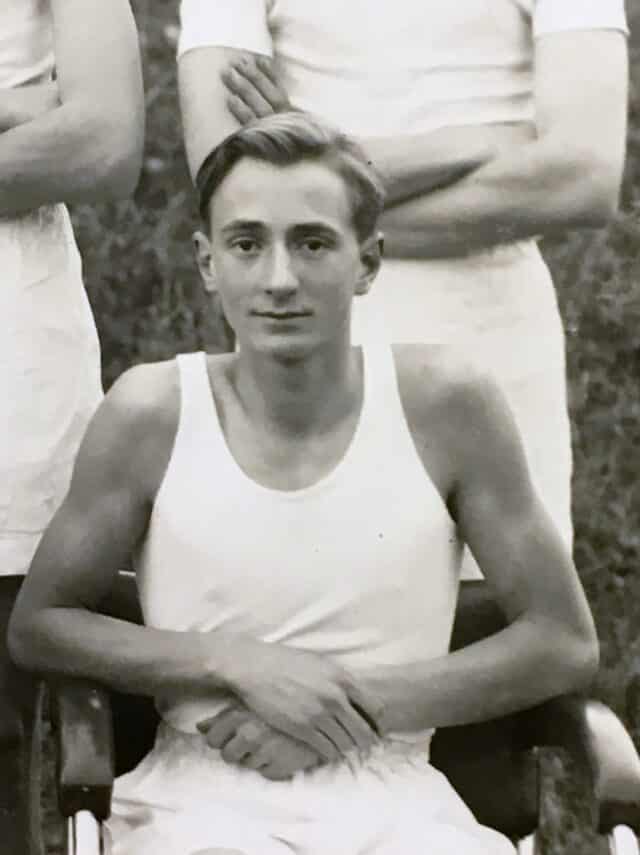
Kenneth Michael Garton Durrant (1923-1944)
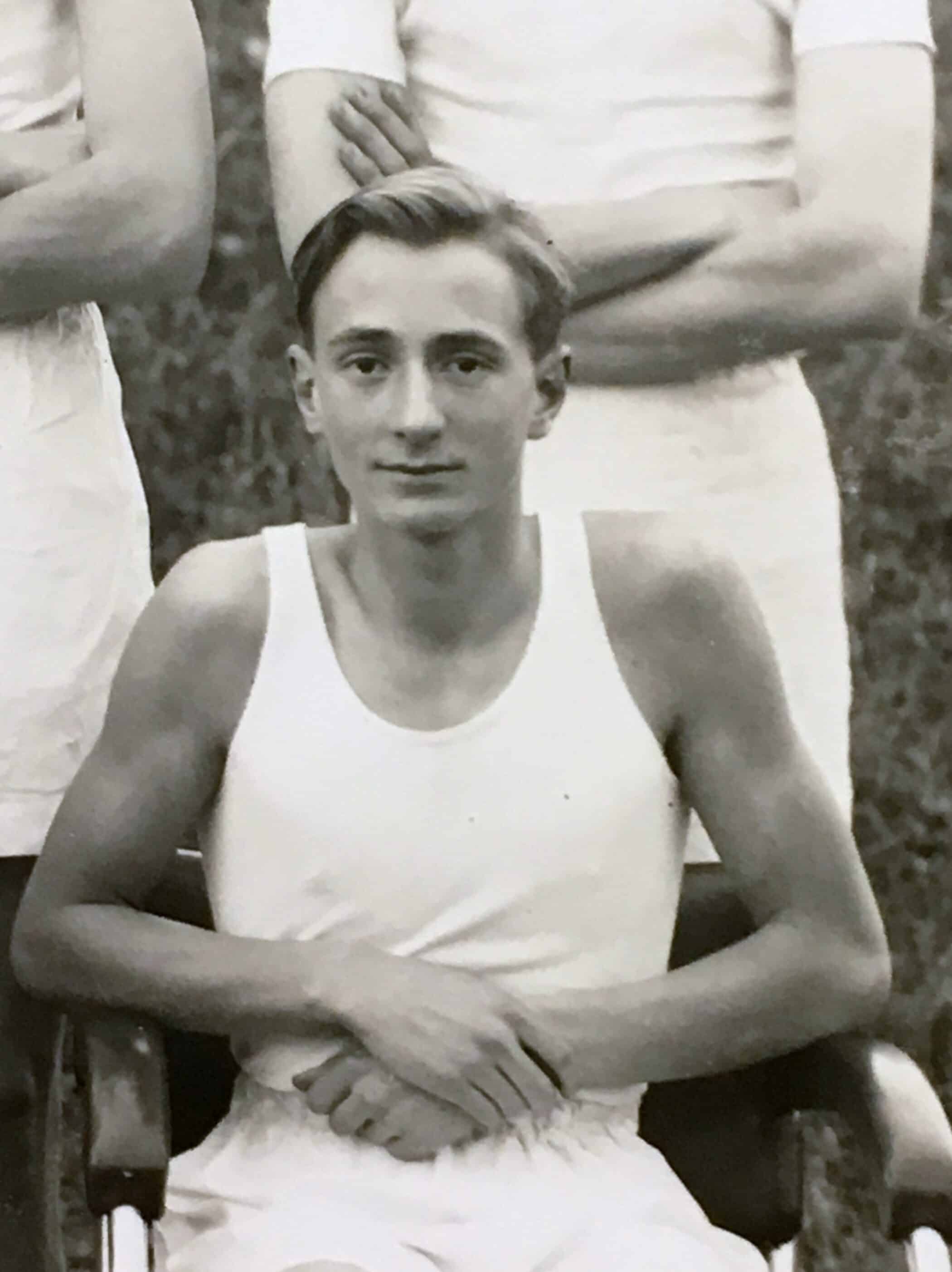
Kenneth Michael Garton Durrant (1923-1944)
Kenneth Michael Garton Durrant (known as Michael) was born in Surrey on 17 September 1923, the only son of Catherine (née Wainwright) and Kenneth Garton Durrant, the director of a brewery. He was educated at Charterhouse School from 1937 to 1941 where he was a member of the Maniacs Cricket XI and the Harpies Football XI, and he won his school colours for cross country running.Michael Durrant enlisted in the Royal Air Force Volunteer Reserve and entered Worcester College, Oxford as an RAF cadet on a short course on 24 April 1942. He trained as a navigator and rose to the rank of Sergeant. On leaving Worcester College he was posted to 582 Squadron. On the night of the 15/16 September 1944 Bomber Command ordered an operation on Kiel, and Michael Durrant was the navigator in a Lancaster bomber which took off from RAF Little Staughton at 10.28pm on the 15th. The aircraft crashed into the North Sea with the loss of the entire crew, including Sergeant Michael Durrant. He was 20 years old.
Michael Durrant is buried at Kiel War Cemetery and commemorated on the war memorials at Charterhouse School, at Weybridge, on a stained-glass window at St Mary’s Church, Christon, Bristol, and on the war memorial at Worcester College, Oxford.
Photograph and school information courtesy of Charterhouse School Archives; further information from W. R. Chorley, Bomber Command Losses of the Second World War (2005); and Martin Middlebrook and Chris Everitt, The Bomber Command War Diaries 1939-1945 (1985).

Geoffrey Joseph Shaw (1913-1944)

Geoffrey Joseph Shaw (1913-1944)
Geoffrey Joseph Shaw was born on 3 January 1913, the son of Max Shaw (formerly Schwabacher), a stockbroker, and Amy (née Politzer). His father Lieutenant Max Shaw of the 16th Battalion Royal Fusiliers (City of London Regiment) was killed in action on 15 September 1916. Geoffrey Shaw was educated at Rugby School from 1926 to 1930 and entered Worcester College, Oxford, on 9 October 1931. He was a member of the College Boat Club and rowed in the 2nd Eight in 1933. He achieved 2nd class honours in PPE in 1934. On leaving University he worked as a fur merchant.
Following the outbreak of war Geoffrey Shaw attended an Officer Cadet Training Unit before being commissioned as a 2nd Lieutenant in the Royal Fusiliers (City of London Regiment) on 2 November 1940. He was later attached to the 2nd Battalion Argyll and Sutherland Highlanders, joining them at L’Eponniere in France on 6 August 1944 where he was placed in command of No. 4 Platoon in SP Company.
At 8pm on 25 September 1944 the 2nd Battalion Argyll and Sutherland Highlanders were just to the north of the Wilhelmina Canal in Holland, having been involved in an attack that day, when they received orders for another attack the following day. They were to clear the open country to the north of the village of Liempde and the woods to its south. It was during this attack on the 26 September 1944 that Captain Geoffrey Shaw was killed in action, aged 31.
Geoffrey Shaw is buried in Mierlo War Cemetery in The Netherlands, and is commemorated on the war memorial at Worcester College, Oxford.
School information courtesy of Rugby School Archives; further information from TNA – 2nd Battalion Argyll and Sutherland Highlanders war diaries, WO 171/1262.

Edward Everard Henry Gerald Dawson (1910-1944)

Edward Everard Henry Gerald Dawson (1910-1944)
Edward Everard Henry Gerald Dawson, known as Bertie, was born at Lincoln on 8 January 1910, the son of Blanche (née Wilson) and Herbert Dawson, an army officer. He was educated at The Oratory School, Caversham. Bertie Dawson entered Worcester College on 12 October 1928, but left before he could start his second year due to a lack of funds. After leaving Oxford he worked as a stockbroker.
Following the outbreak of war Bertie Dawson served as an ambulance driver before attending an Officer Training Unit from where he was commissioned as a 2nd Lieutenant in the 2nd Battalion Lincolnshire Regiment on 29 April 1940. He was one of several officers who joined the battalion at their base at Castle Cary in Somerset, on its return from the fighting in France and Belgium.
In January 1944 the battalion underwent combined operations training in northern Scotland, in preparation for the invasion of Europe. Bertie Dawson was appointed to the command of S Company. On 6 June 1944, D-Day, the battalion landed on Sword Beach and Dawson was tasked with establishing a signal station at the beach exit at Hermanville-sur-Mer to co-ordinate the arrival of the rest of the battalion and its transport. During the next month the battalion was heavily engaged in the fighting around Caen and Bertie Dawson was wounded at Cambes Wood, after which he was evacuated for treatment.
Bertie Dawson re-joined his battalion in Holland on 10 October 1944, when he was appointed to the command of D Company. He took part in Operation Aintree the following day, which captured the town of Overloon, and then advanced to the Laag Heide Woods. Major Edward Dawson was killed during the attack that captured the woods, on 14 October 1944, aged 34.
Bertie Dawson is buried at Overloon War Cemetery, and commemorated on the war memorial at Worcester College, Oxford.
Further information from Gary J. Weight, Mettle and Pasture (History of the 2nd Battalion Lincolnshire Regiment 1939-1945), (2015).
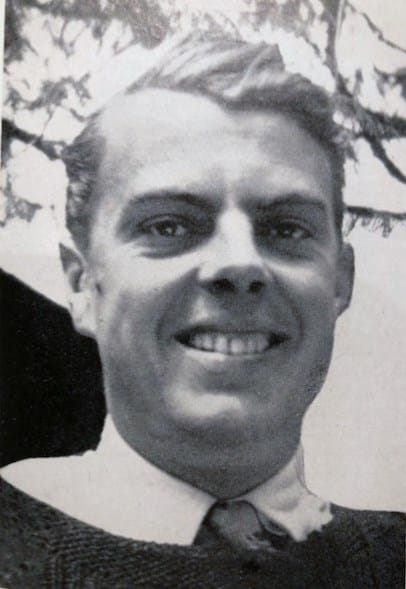
Norman Travers Hankin (1910-1944)

Norman Travers Hankin (1910-1944)
Norman Travers Hankin was born at Whitley Bay in Northumberland on 28 April 1910, the younger son of Ethel (née Thompson) and Seymer Hankin, company secretary to an assurance company. He was educated at Bedford Modern School and then at St Paul’s School from 1923 to 1929 where he played water polo and won the Whittaker Cup for swimming. He later rowed for the 2nd Rowing Eight and served in the Officer Training Corps.Norman Hankin entered Worcester College on 11 October 1929, where he was a member of the College Boat Club and rowed in several crews, including the 1st Torpid who went Head of the River in 1930. He achieved 2nd class honours in Jurisprudence in 1932. In February 1932 he won a scholarship to the Inner Temple and was called to the bar in 1934. He was also employed as a director of Messrs. R. Greg & Co Cotton Spinners of Stockport.
Norman Hankin married Rachel Spedding on 16 July 1938 in Chelsea. Following the outbreak of war, he attended an Officer Training Unit before being commissioned as a 2nd Lieutenant in the Cheshire Regiment on 18 May 1940. Hankin was posted to the Middle East Supply Centres at Baghdad and at Tripoli, and was on the “Q” Staff in Cairo under Lieutenant Colonel R. H. Quinnell, Director of Civilian Transport for the Middle East. He was mentioned in despatches for “distinguished service in Persia-Iraq”, announced by the War Office on 3 August 1943.
It was while stationed in Cairo that Lieutenant Colonel Norman Hankin was killed in an accident on a houseboat on 15 October 1944, aged 34.
Norman Hankin is buried at Heliopolis War Cemetery in Egypt, and is commemorated on the war memorials at St Peter’s Church, Prestbury, Cheshire; St Paul’s School; and Worcester College, Oxford.
Photograph and further information from Arthur Crookenden, The History of the Cheshire Regiment in the Second World War 1939-1945 (1949); school information courtesy of St Paul’s School Archives.

Duke William Moreau de Bellaing (1912-1944)

Duke William Moreau de Bellaing (1912-1944)
Duke William Moreau de Bellaing, known as William or Guillaume, was born at St Pancras in London on 29 March 1912, the son of Marguerite Clot, who was working as a nursery governess in the city. She later married the writer and poet Edouard Jacques Marie Joseph Moreau de Bellaing, who adopted William.
William de Bellaing entered Worcester College on 9 October 1936 and achieved a BLitt. At the beginning of 1944 he was living in Paris, where he worked as a lawyer and senior auditor. He was also a member of the French Resistance and was arrested and taken to Compiegne on 22 January 1944. Two days later William de Bellaing was transported to Buchenwald concentration camp, before being transferred to Mauthausen concentration camp in Austria on 25 February 1933, where he was forced to work in the Flugmotorenwerke Ostmark aircraft engine factory. On 28 July 1944 he was transferred to the camp at Leibnitz-Graz where work was mostly carried out in tunnels on “miracle” weapons and other sensitive projects. William de Bellaing was transferred once more, to Peggau, on 9 September 1944, and died there on 4 November 1944, aged 32.
William de Bellaing is commemorated on the memorial to the Resistance at the Town Hall in Paris. He does not appear on the Worcester College memorial as the College did not learn of his death until 2012.
Further information from monument-mauthausen.org.

Charles John Monro (1916-1944)

Charles John Monro (1916-1944)
Charles John Monro was born in Kensington on 26 February 1916, the son of Colonel John Monro of the Royal Engineers, and Helen (née Middleton). He was educated at Harrow School from 1929 to 1934, where he served as a Cadet Sergeant in the School Officer Training Corps and was a member of the School Shooting VIII.
Charles Monro entered Worcester College on 14 October 1934, and achieved 4th class honours in Jurisprudence in 1937. After leaving the University he entered the Middle Temple to study Law.
Charles Monro was commissioned as a 2nd Lieutenant (Supplementary Reserve of Officers) in the Black Watch (Royal Highlanders) on 2 September 1939. During 1943 he was instructor at the 163rd Officer Cadet Unit from where he joined the 5th Battalion of his regiment at Little Marlow on 2 January 1944 as the second in command of B Company. He landed with the battalion at Fray-sur-Mer on Sword Beach at 8.30pm on D-Day, 6 June 1944. Due to heavy casualties in the days following the invasion the battalion was reduced to three companies with Charles Monro promoted to Company Commander. Major Charles Monro was killed by a V2 rocket in the city of Antwerp on 27 November 1944, aged 28.
He is buried at Schoonselhof Cemetery in Belgium and commemorated on the war memorials at Harrow School, the Middle Temple and Worcester College, Oxford.
School information courtesy of Harrow School Archives; further information from TNA: Flying bomb attacks on Antwerp, WO 205/813; and 5th Battalion Black Watch war diaries, WO 171/1266.

Charles Douglas Coldstream (1909-1944)

Charles Douglas Coldstream (1909-1944)
Charles Douglas Coldstream, known as Douglas, was born in London on 9 September 1909, the third son of Carlotta (née Young) and Francis Menzies Coldstream, a stockbroker. He was educated at Rugby School where he was a cadet sergeant in the Officer Training Corps.
Douglas Coldstream entered Worcester College on 14 October 1927 and achieved a pass degree in 1930. During his time at the College he was a member of the 1930 2nd Torpid crew and also held a commission with the 13th Battalion London Regiment. He resigned his commission on 9 July 1931.
With the outbreak of war looking ever more likely, Douglas Coldstream re-joined the service and was commissioned as a temporary Captain in the Army Educational Corps on 25 February 1938; he was confirmed in his rank on 29 January 1941. He was subsequently posted to India.
Lieutenant Colonel Douglas Coldstream died of pneumonia near Yatung in Tibet, on 9 December 1944, aged 35. He is buried in Gauhati War Cemetery, India and commemorated on the war memorial at Worcester College, Oxford.
Members who died in 1945
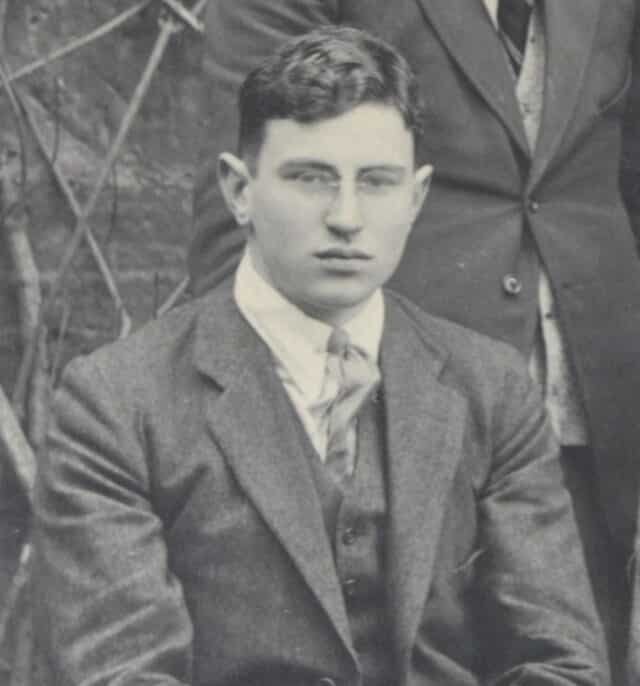
Robert Hamilton Bernays (1902-1945)
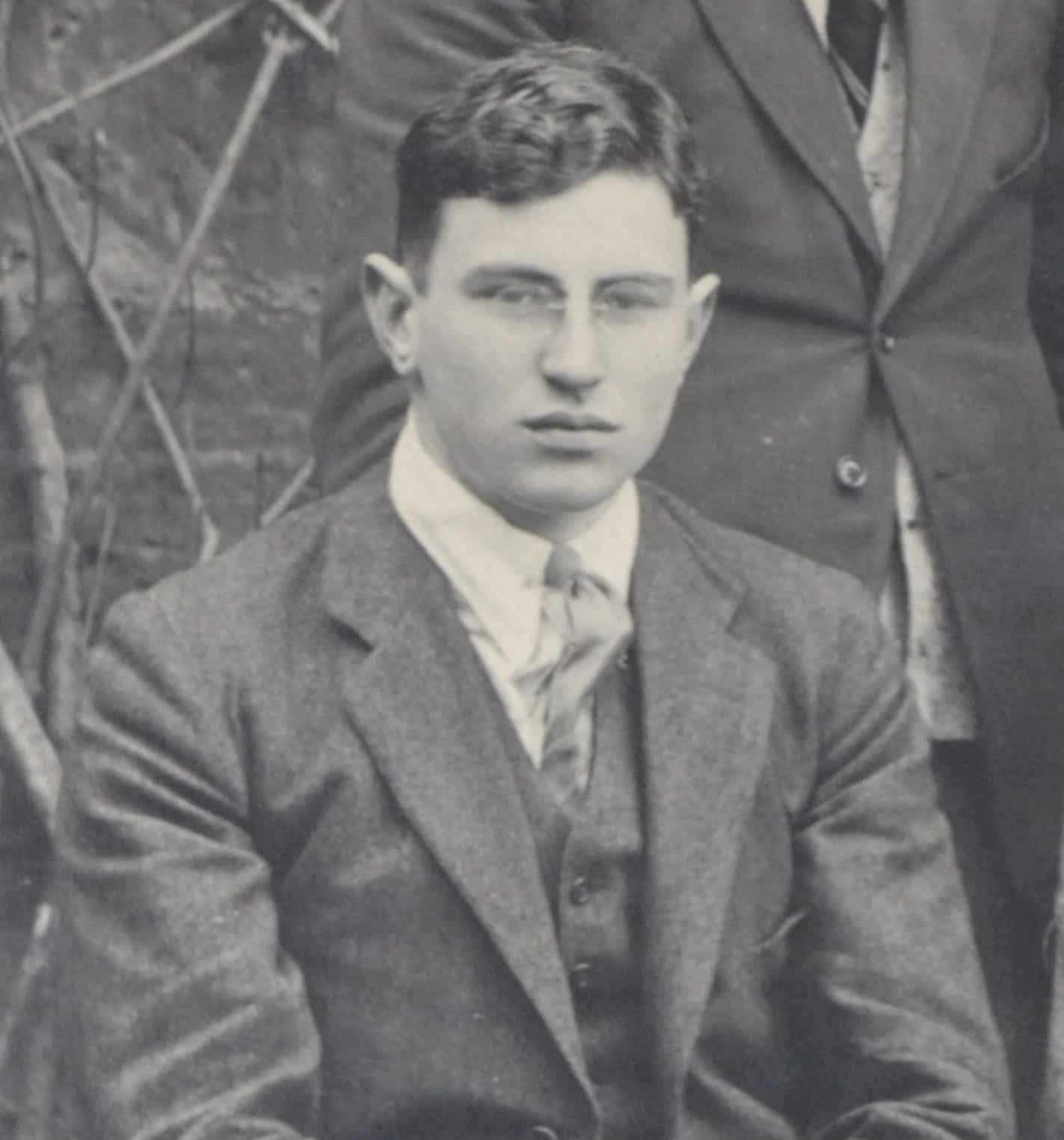
Robert Hamilton Bernays (1902-1945)
Robert Hamilton Bernays was born at Stanmore in Middlesex on 6 May 1902, the youngest son of the Reverend Prebendary Stewart Bernays OBE, and Lilian (née Stephenson). He was educated at Rossall School from 1916 and entered Worcester College on 14 October 1921.While up at Worcester, Robert Bernays was a member of the College Boat Club, rowing in the 2nd Torpid in 1922 and 1923, the 2nd Eight in 1923, and the 1st Torpid in 1924. He was elected President of the Worcester College Junior Common Room and President of the Oxford Union. He graduated in 1925 with an aegrotat degree in Modern History, awarded because he was too ill to take Finals.
After leaving Oxford, Robert Bernays was a journalist of the Daily News until 1930 when the newspaper was taken over and he was made redundant. For the next year he travelled to Australia and India. In 1931 he stood as the Liberal candidate for Bristol North and was elected with a majority of 13,214. Following a visit to Germany in the autumn of 1932 he became something of an expert on the country and was a fierce critic of the Nazi Party. Following the general election of 1935, he was appointed Parliamentary Secretary to the Minister of Health in the National Government, moving to Parliamentary Secretary to the Minister of Transport in 1939.
Robert Bernays married Nancy Britton in 1942 and they had two sons, born February 1943 and October 1944. He enlisted as a sapper in the Royal Engineers in 1942 before being commissioned as a 2nd Lieutenant in the Movement Control Section on 16 January 1943.
On 23 January 1945 Robert Bernays took off from Rome in a Beech 18 Expeditor, flown by an RAF pilot, bound for Brindisi where he was to be part of a parliamentary delegation visiting British troops. Also on board was John Dermot Campbell MP, Member of Parliament for Antrim. A second aircraft containing the rest of the delegation took off three minutes later but turned back when it ran into a violent and severe snow storm. The aircraft with Robert Bernays on board failed to arrive at its destination, and no trace was found following an extensive search of its route. Lieutenant Robert Bernays was subsequently determined to have been killed on active service on 23 January 1945. He was 42 years old.
Robert Bernays is commemorated on the Cassino Memorial in Italy, and on the war memorials of Rossall School and Worcester College, Oxford.
Photograph of Robert Bernays in the Worcester College 2nd Torpid, 1923, Worcester College Archives; school information courtesy of Rossall School.

Owen Meredith Clement Jones (1912-1945)

Owen Meredith Clement Jones (1912-1945)
Owen Meredith Clement Jones was born in Bradford on 6 December 1912, the son of Gertrude (née Smith) and Alfred Clement Jones, a master at Bradford Grammar School. He was educated at Bradford Grammar School from 1920 to 1931, where he was a member of the Debating Society and the Historical Society.
Owen Jones entered Worcester College on 9 October 1931 as an Exhibitioner. He achieved 2nd class honours in Modern History in 1934 and after leaving Oxford worked as a stationer and bookseller in Southampton. He married Constance Maud Smith in 1940.
Prior to the Second World War Owen Jones served as a pilot in the Civil Air Guard. He enlisted in the RAFVR and travelled to Canada for pilot training, landing at Halifax on 17 June 1941. He attended No. 31 Bombing and Gunnery School, Royal Canadian Air Force at Picton airfield in Ontario, and spent his leave in February 1942 in New York, travelling via Niagara Falls. Jones rose to the rank of warrant officer before being commissioned as a probationary Pilot Officer on 18 May 1944. He was posted to 166 Squadron in August 1944, and transferred to 153 Squadron on 7 October that year.
On 28 January 1945 Owen Jones and his crew took off from RAF Scampton in Lincolnshire for an operation over Stuttgart. Their Lancaster crashed en route to their target at the village of Michelbach bei Sinsheim and Flying Officer Owen Jones was killed, aged 32. He was posthumously awarded the Distinguished Flying Cross on 27 March 1945.
Owen Jones is buried at Durnbach War Cemetery in Germany and is commemorated on the war memorials at Bradford Grammar School and Worcester College, Oxford.
School information courtesy of Bradford Grammar School Archives; further information from W. R. Chorley, Bomber Command Losses of the Second World War (2005); Martin Middlebrook and Chris Everitt, The Bomber Command War Diaries 1939-1945 (1985); and www.raf166squadron.com.

Archibald Cluny Campbell Macpherson (1910-1945)

Archibald Cluny Campbell Macpherson (1910-1945)
Archibald Cluny Campbell Macpherson was born on 8 June 1910, the eldest son of Margaret (née McNeilly) and Archibald Macpherson. He was educated at Stowe School until 1928, where he was a member of the Officer Training Corps.
Archibald Macpherson entered Worcester College on 12 October 1928 and achieved 4th class honours in Jurisprudence in 1932. While at the College he served as an Officer Cadet in the Oxford University Officer Training Corps. Macpherson was commissioned as a 2nd Lieutenant in the 8th Battalion Royal Fusiliers (City of London Regiment) on 19 July 1939. He was transferred to the 1st Battalion and joined them in Italy on 12 September 1944; he was appointed as Motor Transport Officer on 15 January 1945. On 14 January 1945 the battalion arrived at the 17th Brigade rest area at San Giovanni Alla Vena for rest and training. While they were there Captain Archibald Macpherson was killed in an accident on 4 February 1945. He was 34.
Archibald Macpherson is buried at Florence War Cemetery in Italy, and commemorated on the war memorials at Stowe School and Worcester College, Oxford.
School information courtesy of Stowe School Archives; further information from TNA – war diary of the 1st Battalion Royal Fusiliers, WO 170/5004.

Roy Archibald Gowing (1924-1945)

Roy Archibald Gowing (1924-1945)
Roy Archibald Gowing was born in Leicester on 29 November 1924, the son of Alice (née Freeman) and Clifford Gowing, a clicker in the shoe trade. He was educated at Wyggeston Grammar School for Boys in Leicester.
Roy Gowing entered Worcester College on 30 April 1943, as a cadet with the Royal Navy, and took a short course in English Literature and English Language. Following the completion of the course he was commissioned as a Sub Lieutenant in the Royal Naval Volunteer Reserve on the 29 November 1944, and was posted to HM Motor Torpedo Boat 776.
HM Motor Torpedo Boat 776 was in the harbour at Ostend in Belgium on 14 February 1945 when it was destroyed by an explosion and ensuing fire. Sub Lieutenant Roy Gowing and another crew member were killed in the incident.
Roy Gowing is buried at Oostende New Communal Cemetery, and comemorated on the war memorials at Wyggeston Grammar School and Worcester College, Oxford.
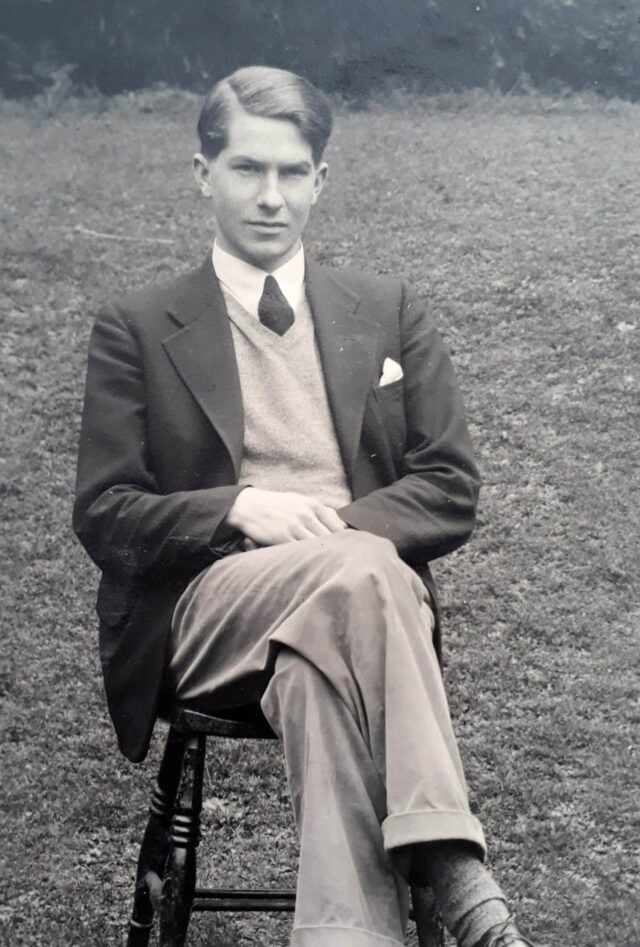
Clement Fletcher Royds (1923-1945)
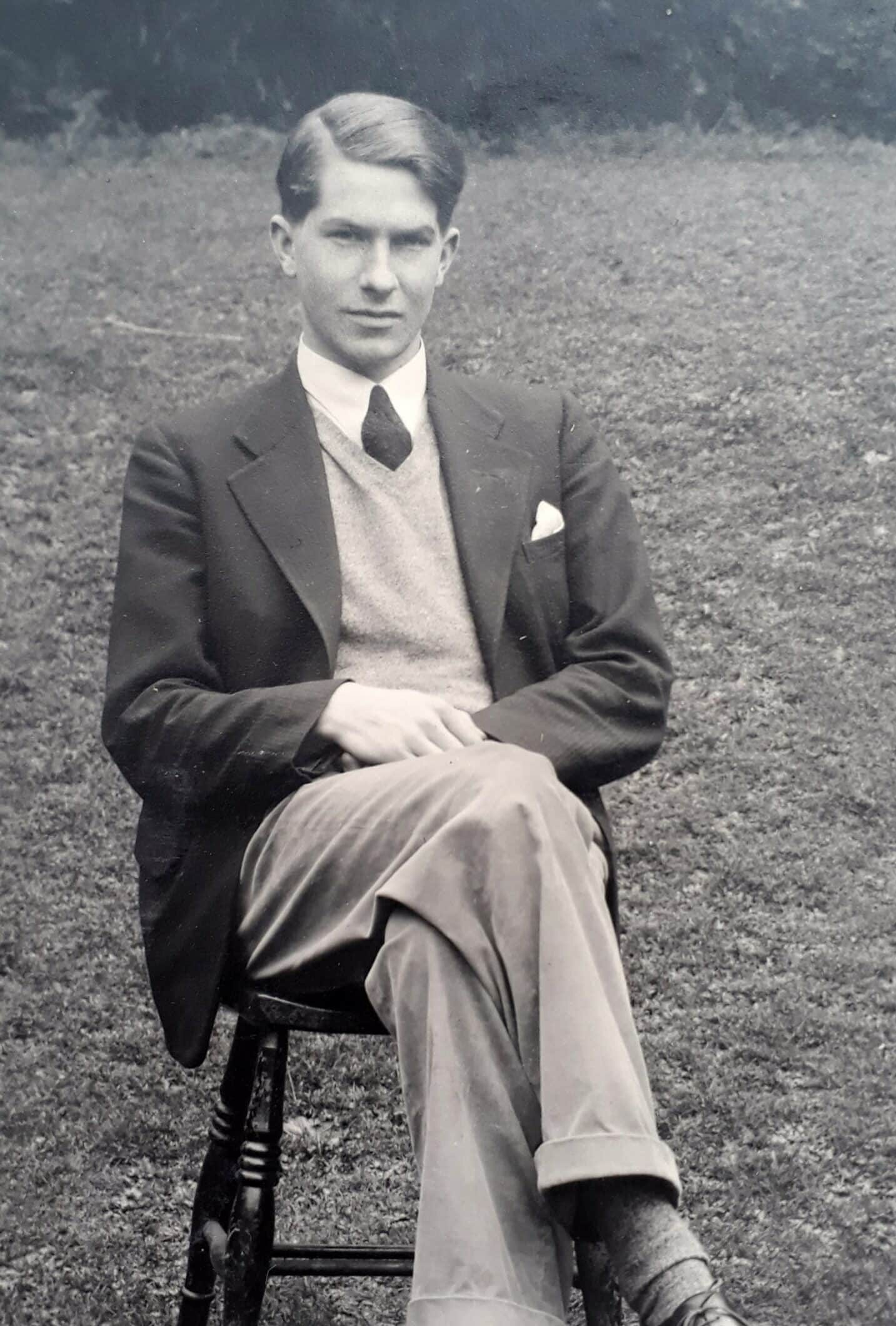
Clement Fletcher Royds (1923-1945)
Clement Fletcher Royds was born on 13 May 1923, the third and youngest son of the Reverend Prebendary Thomas Fletcher Royds BD MA (Worcester College, 1899) and Bertha (née Milward). He was educated at Marlborough College from 1936 to 1942, where he was a Foundation Scholar, a Junior and Senior Scholar, and later appointed as Head Boy.Clement Royds entered Worcester College, Oxford, on 24 April 1942 as an RAF Cadet on a wartime short course. He was subsequently commissioned as a Pilot Officer in the RAFVR on 12 November 1943 and was promoted to Flying Officer on 12 May 1944.
At 1.30pm on 14 February 1945 Clement Royds took off from Vokel in Holland with eight other aircraft from 80 Squadron for an armed reconnaissance in the area Einbeck-Hildesheim-Herford to attack targets of opportunity. During their patrol, they attacked and damaged nine locomotives and later in the mission Royds and Pilot Officer Neil James Rankin RAAF attacked a Messerschmitt Bf 109 when they were flying at 6,000 feet and some 10 miles to the east of Celle. During the combat the enemy aircraft exploded and Royds flew into its severed wing. Flying Officer Clement Royds was forced to bail out of his damaged aircraft and was later found dead. He was 21 years old.
Clement Royds is buried at Hanover War Cemetery in Germany, and is commemorated on a memorial window at St Giles’ Church, Haughton in Staffordshire. He is also commemorated on the war memorials at Marlborough College and at Worcester College, Oxford.
Photograph and school information courtesy of Marlborough College Archives; further information from TNA: Combat report of Pilot Officer Rankin, 80 Squadron RAF, AIR 50/34/47; 80 Squadron RAF summary of events AIR 27/672/3; and 80 Squadron RAF records of events AIR 672/4.

Richard John Michael Harrison (1924-1945)

Richard John Michael Harrison (1924-1945)
Richard John Michael Harrison was born in Cornwall on 6 September 1924, the elder son of Major General Desmond Harrison DSO and Kathleen (née Hazley). He was educated at Rugby School from 1938 to 1943, where he served as a cadet officer in the Officer Training Corps, and was appointed Head of House.
Richard Harrison won a Classical Exhibition to Worcester College, Oxford, for October 1943 but did not take his place, joining the army instead. He was commissioned as a 2nd Lieutenant in the Coldstream Guards on 14 May 1944 and was posted to the 4th (Armoured) Battalion of his regiment, which he joined in the field on 17 October 1944.
On 1 March 1945 the 4th Battalion Coldstream Guards began an attack on the German village of Kervenheim in Rhineland. Lieutenant Richard Harrison’s tank led the attack across an improvised bridge over the Muhlen Sleuth to the south east of Kervenheim but as they reached Weykermanshof he was shot and killed by a sniper. He was 20 years old.
Richard Harrison is buried at Reichswald Forest War Cemetery in Germany and is commemorated on the war memorials at Rugby School and Worcester College, Oxford.
School information courtesy of Rugby School Archives; further information from TNA – war diaries of the 4th Battalion Coldstream Guards, WO 171/1251.
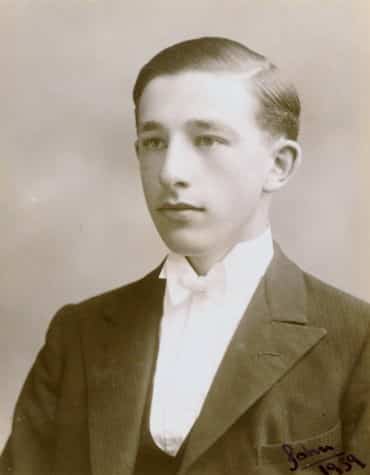
John Skinner (1920-1945)

John Skinner (1920-1945)
John Skinner was born in London on 11 December 1920, the elder son of Colonel Edward Skinner DSO DL JP, of the Royal Artillery, and Emmeline (née Miles). He was educated at Eton College until 1939 and entered Worcester College on 13 October 1939 but left to join the army in 1941, without taking a degree,. During his time in Oxford John Skinner rowed in the College Eight, and was elected captain of the Oxford University Boat Club.He was commissioned as a 2nd Lieutenant in the 19th (King George V’s Own) Lancers, Indian Armoured Corps and joined them in the field on 6 May 1942 where he was attached to A Squadron. In March 1945 the regiment was involved in operations against the Japanese at the village of Tamandu in Burma [now Myanmar] where John Skinner was acting as Forward Tank Officer.
Having successfully completed the operation Lieutenant John Skinner was walking back to his lines when he was killed by an enemy shell on 13 March 1945. He was 24 years old.
John Skinner is buried in Taukkyan War Cemetery in Myanmar. He is commemorated on the war memorial at Worcester College, Oxford.
Photograph courtesy of Eton College Archives; school information from ‘List of Etonians who fought in the World War 1939-1945’; further information from TNA: war diary 19th Lancers, WO 172/7355; and A Squadron 19th Lancers, WO 172/7356; and from Bryan Perrett, Tank Tracks to Rangoon (2014).

John Charles Goldingham (1921-1945)
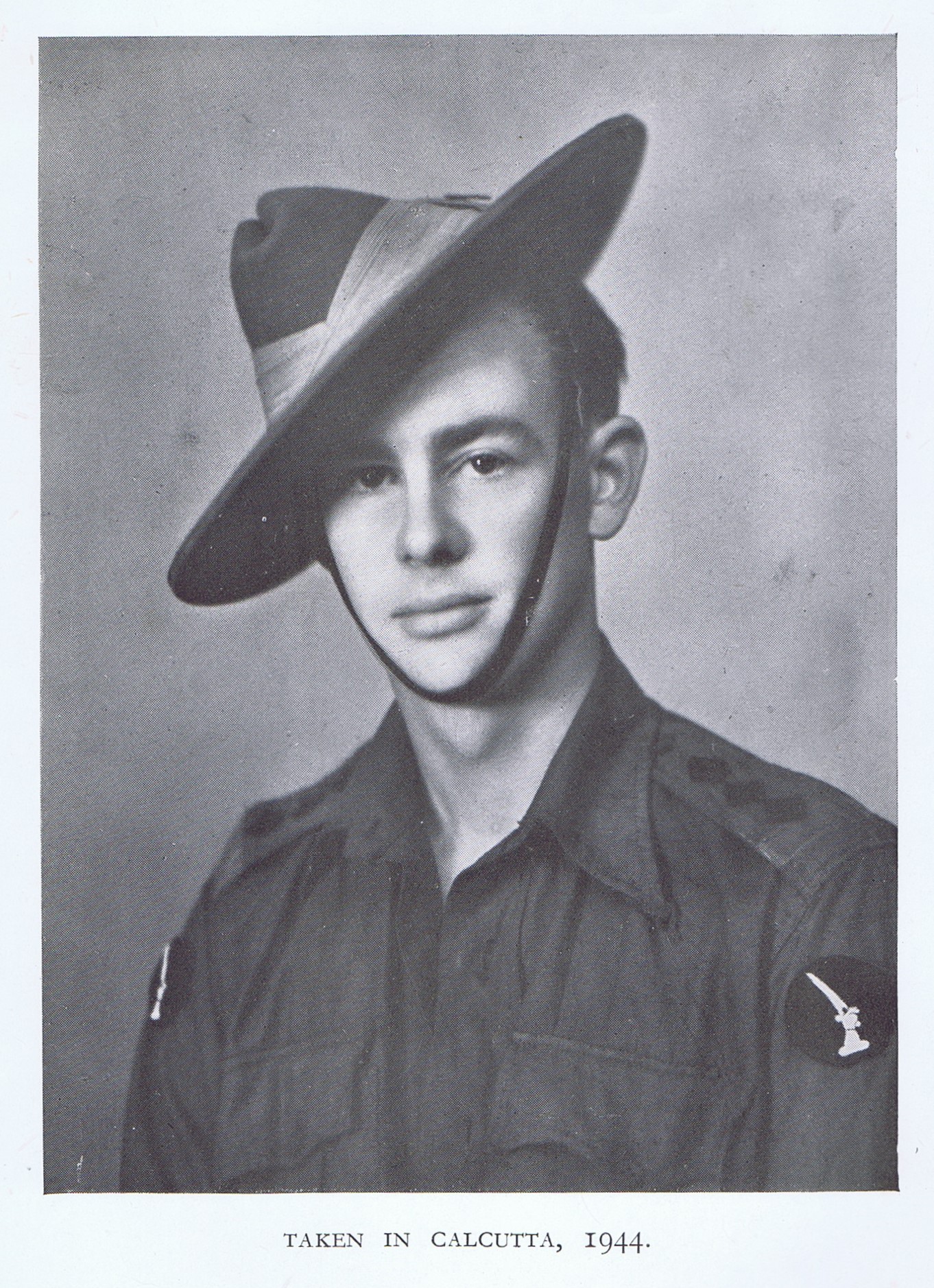
John Charles Goldingham (1921-1945)
John Charles Goldingham was born in Surrey on 25 April 1921, the son of Major Philip Goldingham and Phyllis (née Batt). He was educated at Canford School from 1935. In 1940 he entered Worcester College but left to join the army before taking his degree. While at Oxford he played Laertes in the Friends of the OUDS production of Hamlet in 1941.
John Goldingham enlisted in the army where he rose to the rank of Lance Corporal before being commissioned as 2nd Lieutenant in the Indian Army on 12 December 1942. He was attached to the 3rd Battalion, 8th Gurkha Rifles. On 1 March 1942 his battalion was at Kanlan, Burma, when two of its commanding officers were killed by Japanese artillery. John Goldingham was placed in command of C Company and on 4 March was ordered to open a corridor through the jungle to make contact with the 1st Battalion Northamptonshire Regiment further forward. At noon, John Goldingham reported that he had attacked and destroyed one enemy position and that he was about to attack a second one. By 2.30pm nothing further had been heard from Goldingham and Major Bates assumed command of C Company and continued the advance, subsequently finding John Goldingham lying in some long grass, badly wounded. He was evacuated to the Regimental Aid Post in the rear. Captain John Goldingham died of his wounds two weeks later, on 19 March 1945, aged 23.
John Goldingham is buried in Taukkyan War Cemetery. He is commemorated on the war memorials at Canford School, and Worcester College, Oxford.
Photograph from Letters from John, a volume of letters written by John Goldingham between 1942 and 1945 and published posthumously in 1946 (contact the College Archivist for access). School information courtesy of Canford School Archives; further information from TNA – 3/8th Gurkha Rifles war diaries, WO 172/7786.
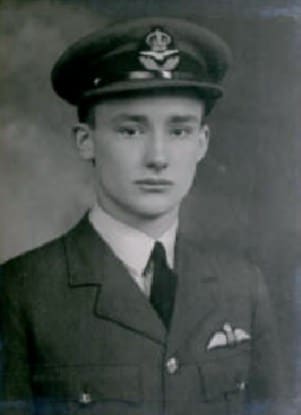
Paul Charles Williams (1923-1945)

Paul Charles Williams (1923-1945)
Paul Charles Williams was born in Buenos Aires, Argentina, on 29 October 1923, the son of Evelyn (née Gardom) and Donald Williams. He was educated at Elstree Preparatory School and at Radley College from 1937 to 1942, where he was a member of the Rugby XV and Captain of the Squash team. He entered Worcester College, Oxford, on 24 April 1942 as an RAF Cadet on a short course.After joining the RAFVR Paul Williams underwent flight training in the United States. He was commissioned as a Pilot Officer on 1 October 1943 and was promoted to Flying Officer on 1 April 1944. On 27 March 1945 Flying Officer Paul Williams was serving with 298 Squadron and was killed when his Halifax aircraft crashed at RAF Tarrant Rushton in Dorset while landing after a navigational exercise. He was 21 years old.
Paul Williams is buried at Brookwood Military Cemetery in Surrey and commemorated on the war memorials at Radley College and Worcester College, Oxford.
Photograph and school information courtesy of Radley School Archives; further information from TNA: 298 Squadron RAF operations book, AIR 27/1653; and 298 Squadron RAF summary of events, AIR 27/1649.
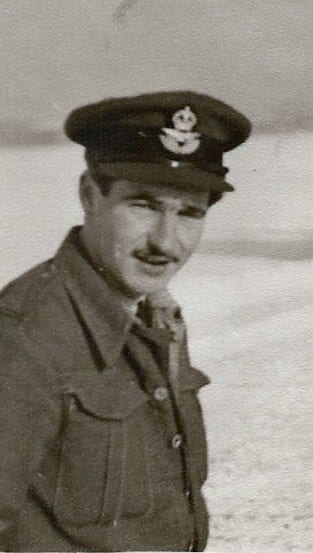
Dennis Hugo (1923-1945)

Dennis Hugo (1923-1945)
Dennis Hugo was born at Crediton in Devon on 5 December 1923, the younger son of Dr Harold Hugo MD, and Florence (née Tucker). He was educated at Durleston Court School, Swanage, and then at Bradfield College.Dennis Hugo entered Worcester College on 24 April 1942 as an RAF Cadet, and was later commissioned as a Pilot Officer. In 1945 Dennis Hugo was stationed in Holland with 66 Squadron. On 11 April 1945 he took off from Landing Ground B85 in a Spitfire with eleven other aircraft from his Squadron to attack enemy ground positions in the Peheim area of Germany. After dropping their bombs they made a strafing attack on an enemy held village under considerable anti-aircraft fire. During the attack Pilot Officer Dennis Hugo was killed when his port wing was hit by flak at a very low level. He was 21 years old.
Dennis Hugo is buried at Sage War Cemetery in Germany. He is commemorated on the Spitfire Memorial Building at Manston Airfield in Kent, and on the war memorials at Crediton, Bradfield College, and Worcester College, Oxford.
Photograph and other information courtesy of the Spitfire and Hurricane Memorial Museum, Manston, Kent; further information from TNA – 66 Squadron Operations record book, AIR 27/600.
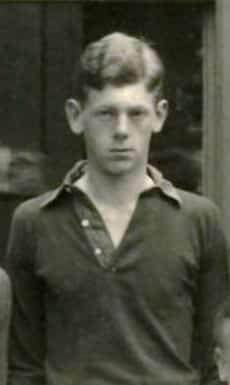
William Grant Waugh (1922-1945)

William Grant Waugh (1922-1945)
William Grant Waugh was born on 15 March 1922, the younger son of Enid (née Pickersgill) and William Grant Waugh FRCS, a surgeon. He was educated at Fettes College from 1935 to 1939, where he was in the school middle weight boxing final in 1939, played for the hockey and rugby teams, and served as a Lance Corporal in the Officer Training Corps. He entered Worcester College, Oxford, on 11 October 1940, but left in 1941 without taking a degree, to join the armed forces.William Waugh enlisted as a Private in the 24th Battalion Durham Home Guard on 6 June 1940 and served with them until 15 October 1940. He was commissioned as a 2nd Lieutenant in the Royal Armoured Corps on 18 April 1942 and was posted to the 10th Royal Hussars (Prince of Wales’ Own), joining them in the field on 3 July 1942. He served with them in B Squadron in North Africa, where he was wounded on two occasions. Lieutenant William Waugh was killed in action on 20 April 1945 near Portomaggiore in Italy, when his tank was hit by enemy fire. He was 23 years old.
William Waugh is buried at Ravenna War Cemetery in Italy, and commemorated on the war memorial at Fettes College and at Worcester College, Oxford.
Photograph and school information courtesy of Fettes College Archives; further information from TNA:24th Battalion Durham Home Guard records, WO 409/27/86/736; and 10th Royal Hussars war diaries, WO 170/4625.

Kenneth Norman Paxton (1916-1945)

Kenneth Norman Paxton (1916-1945)
Kenneth Norman Paxton was born in Maidenhead on 15 November 1916, the son of Lieutenant Colonel Alexander Paxton DSO, MC, of the Royal Engineers, and Florence (née Dennys). He was educated at Cheltenham College and subsequently entered Worcester College, Oxford on 14 October 1934. He achieved 3rd class honours in Italian and German in 1938.
Kenneth Paxton worked in the Foreign Office in Berlin after leaving Oxford, until he enlisted in the Intelligence Corps following the outbreak of war. He was commissioned as a 2nd Lieutenant on 4 October 1942 and served with an Armoured Division in North Africa, Sicily and Italy.
Captain Kenneth Paxton was killed in a traffic accident while on active service in Berlin on 13 August 1945. He was 28 years old.
Kenneth Paxton is buried in Berlin 1939-1945 Cemetery, and commemorated on the war memorial at Worcester College, Oxford.
School information courtesy of Cheltenham College Archives.
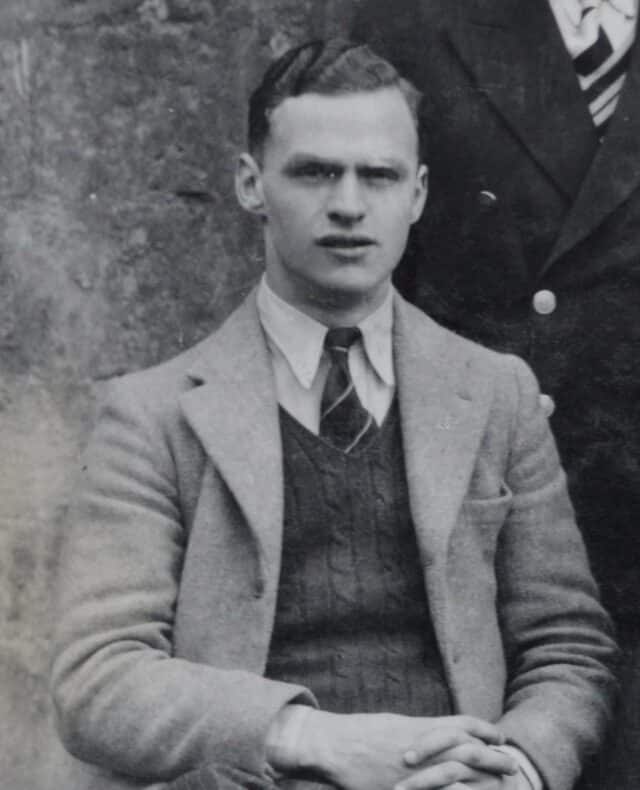
Peter George Baguley (1920-1945)
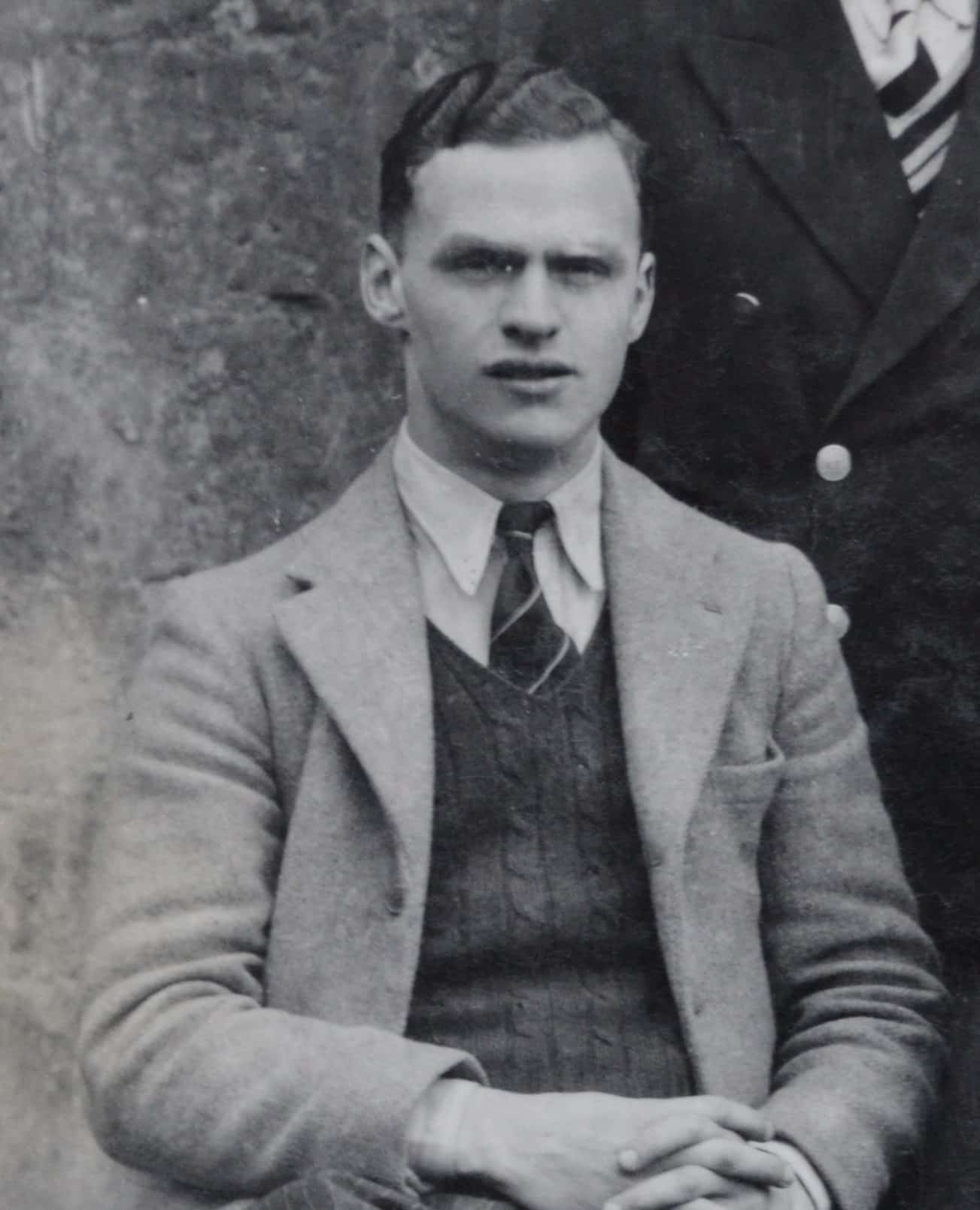
Peter George Baguley (1920-1945)
Peter George Baguley was born at Battle in Sussex on 14 April 1920, the son of Janet (née Wrinch) and George Baguley, a chartered accountant. He was educated at Falconbury School and then at Radley College from 1934 to 1938, where he was a house prefect and a member of the boat club.Peter Baguley entered Worcester College on 7 October 1938, and was a member of the College Boat Club, rowing in the 1st Torpid and 1st Eight in 1939. During his time in Oxford he was also a member of the Oxford University Air Squadron, and enlisted in the Royal Air Force Volunteer Reserve at the outbreak of war. He therefore left Oxford without taking a degree.
Peter Baguley was posted to the Far East where he served as an Aircraftsman 1st Class with the Marine Section at Singapore. He was captured by the Japanese on 1 March 1942 and spent over three years as a prisoner of war. Aircraftsman Peter Baguley died at Palembang Camp, Sumatra on 17 August 1945, aged 25.
Peter Baguley is buried at Jakarta War Cemetery, and commemorated on the war memorials at Radley College and Worcester College, Oxford.
Photograph of Peter Baguley in the Worcester College 1st Torpid, 1939, Worcester College Archives; school information courtesy of Radley School Archives; further information from TNA – RAF Casualties Far East, WO 361/1328; and cofepow.org.uk.
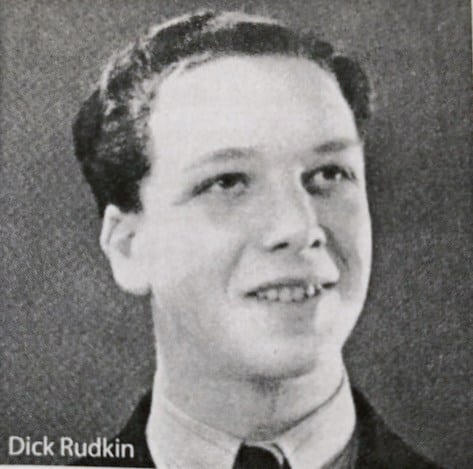
Richard Charles Rudkin (1924-1945)

Richard Charles Rudkin (1924-1945)
Richard Charles Rudkin, known as Dickie or Dick, was born in Middlesex on 14 January 1924, the only son of Helen (née Baynham) and Charles Rudkin, a printer’s machinist. He was educated at Hampton Grammar School from 1935 to 1941, where he was Captain of School.Dickie Rudkin entered Worcester College, Oxford, on 9 October 1942 as an RAF Cadet on a wartime short course. He was commissioned as a Pilot Officer on probation on the 10 March 1944 and was confirmed in his rank and promoted to Flying Officer on 10 September that year.
On 16 October 1945 Dickie Rudkin took off in a Tempest aircraft with 80 squadron from Lubeck-Blank en See in Germany for a training exercise. Flying Officer Richard Rudkin was killed in a crash while flying in a cloud. He was 21 years old.
Dickie Rudkin is buried at Hamburg Cemetery in Germany and commemorated on the war memorials at Hampton Grammar School and Worcester College, Oxford.
Photograph and school information courtesy of Hampton Grammar School Archives; further information from TNA – 80 Squadron RAF summary of events, AIR 27/672/9.
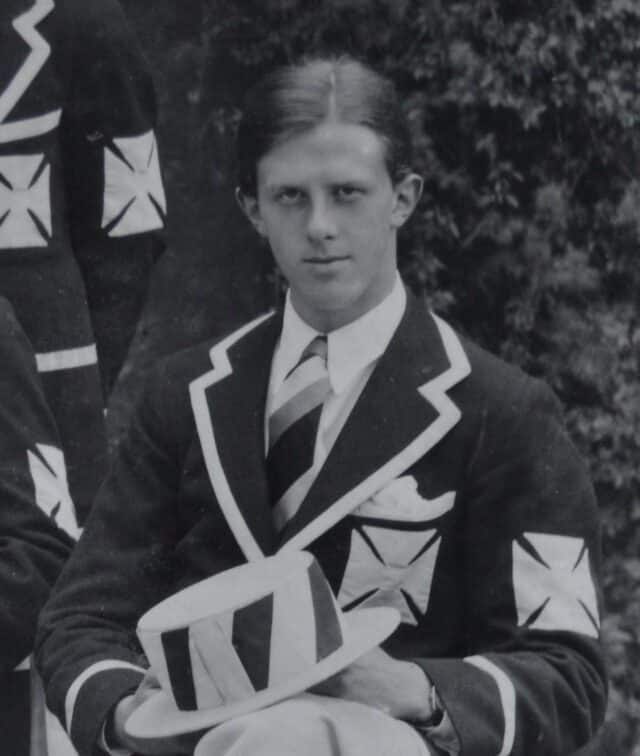
James Boucher (1919-1945)
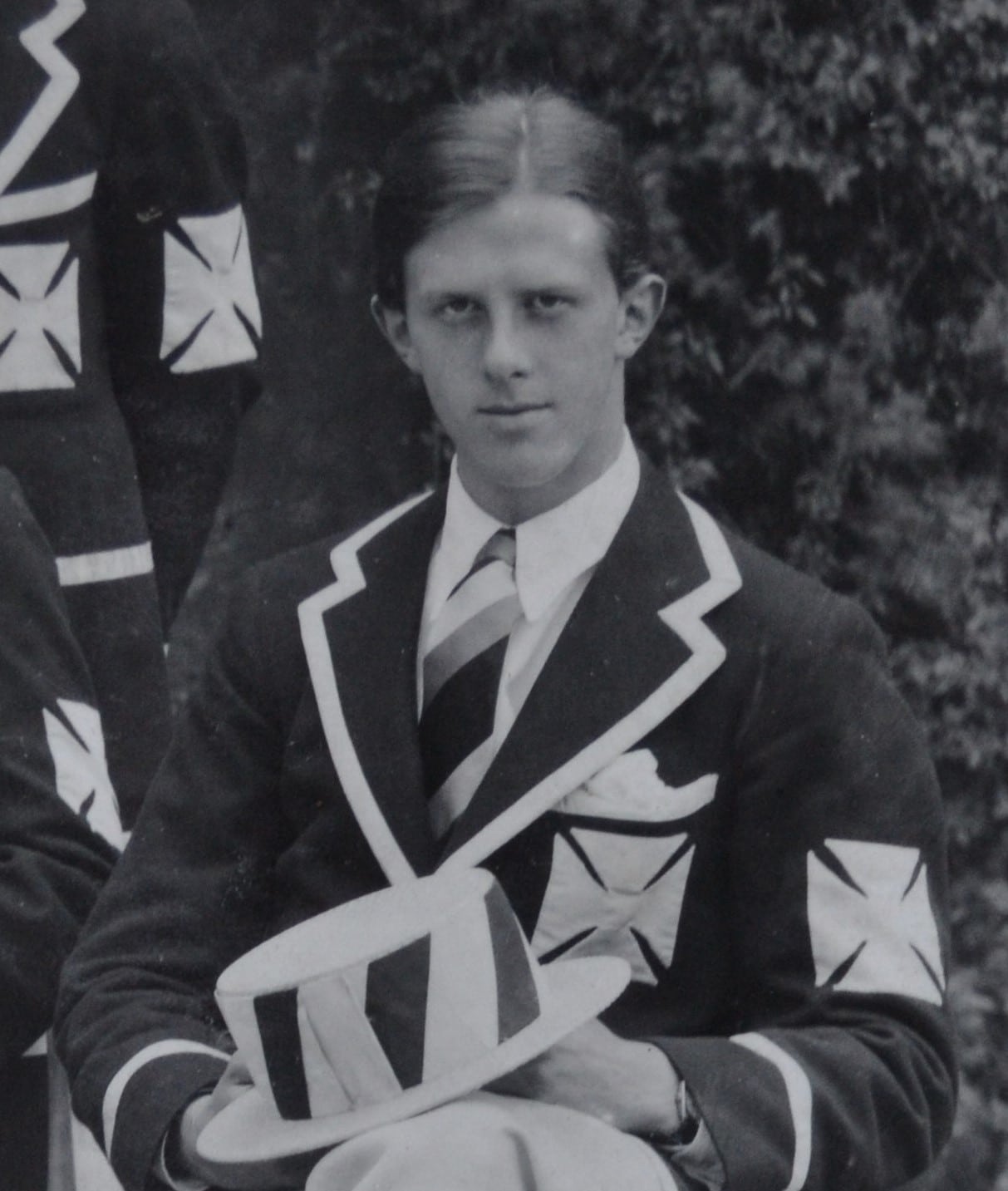
James Boucher (1919-1945)
James Boucher, known as Jim, was born in Hampshire on 16 August 1919, the son of Vera (née Helby) and Rear Admiral Maitland Walter Sabine Boucher DSO RN. He was educated at Farnborough School and at Radley College from 1933 to 1938, where he was appointed Head of House and School Prefect.Jim Boucher entered Worcester College on 7 October 1938, having been awarded an Exhibition. He was a member of the College Boat Club and rowed in the 1st Torpid and 1st Eight in 1939. On the outbreak of war he enlisted as a Gunner in the Royal Artillery and did not return to Oxford to complete his degree, but it is clear from correspondence in the Archives that he intended to return at the end of the war. He attended the 123rd Officer Cadet Training Unit from where he was commissioned as a 2nd Lieutenant in the Royal Artillery on 18 February 1940. He was promoted to Lieutenant and transferred to the Intelligence Corps on 5 September 1942. On 19 October 1945 Captain James Boucher was killed in an accident in India while on active service. He was 26 years old.
Jim Boucher is buried in Ranchi War Cemetery, India. He is commemorated on the war memorials at Radley College and Worcester College, Oxford.
Photograph of Jim Boucher in the Worcester College 1st Eight, 1939, Worcester College Archives; school information courtesy of Radley College Archives.
Members who died in 1946

William Stanley Hollett (1924-1946)

William Stanley Hollett (1924-1946)
William Stanley Hollett was born in Surrey on 14 May 1924, the son of Alice (née Jones) and John Hollett, a local government official. He was educated at Wallington County Grammar School and entered Worcester College on 9 October 1942 as a Naval Cadet. He achieved 2nd class honours in the Modern History short course part 1 in 1943.
William Hollett was commissioned as a Sub Lieutenant (A) in the Royal Naval Volunteer Reserve on 27 February 1945. He was based at HMS Daedalus, the Royal Naval Air Station at Lee-on-Solent. Sub Lieutenant William Hollett died of tuberculosis while on active service on 2 May 1946, aged 21.
William Hollett is buried in Bandon Hill Cemetery in Wallington and commemorated on the war memorial at Worcester College, Oxford.
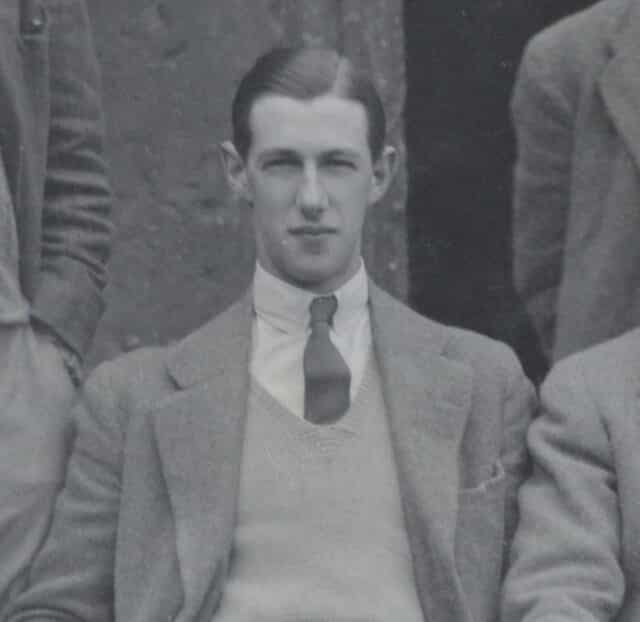
David William Ian Cookes (1917-1946)
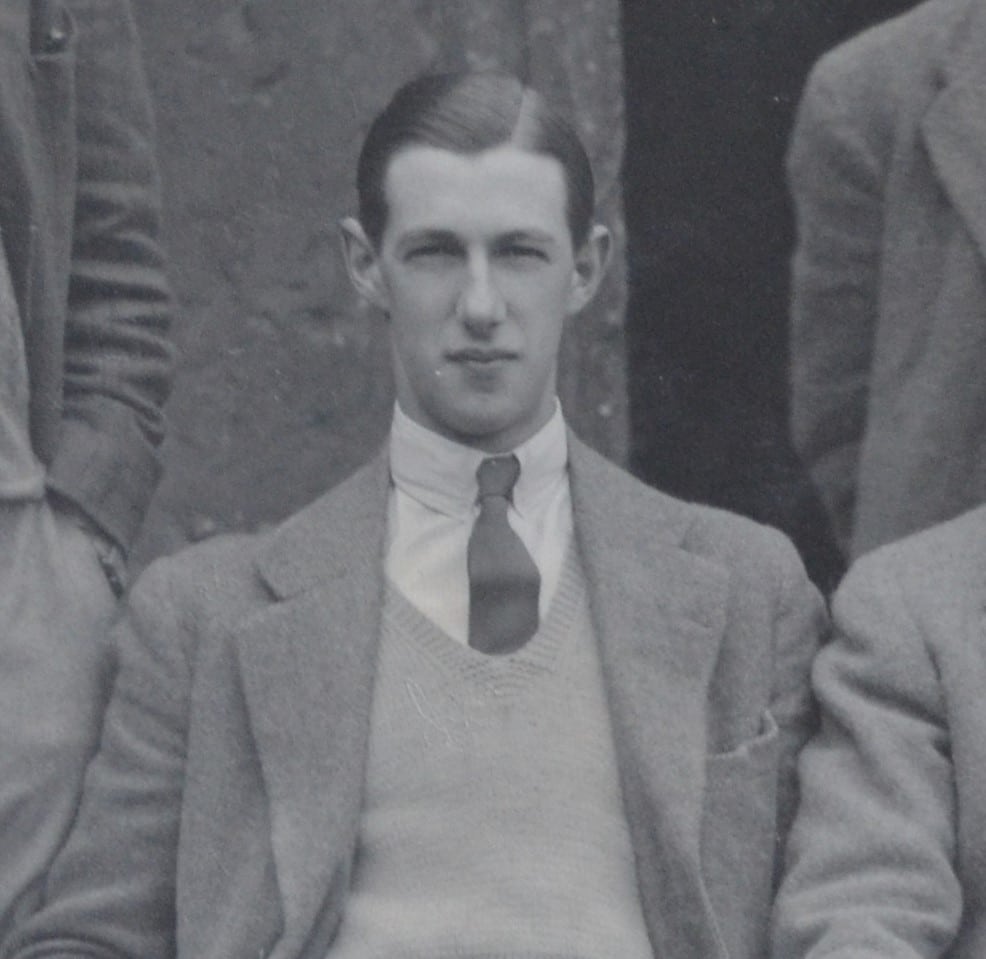
David William Ian Cookes (1917-1946)
David William Ian Cookes was born in Edinburgh on 17 April 1917, the only son of Dorothie (née Forsyth) and Cyril Ian Cookes, a bank manager. He was educated at Trinity College Glenalmond, from 1930 to 1935 where he served as a Lance Corporal in the Officer Training Corps.David Cookes entered Worcester College on 11 October 1935, and achieved 2nd class honours in Jurisprudence in 1938. He was a member of the Worcester College Boat Club and rowed in the 1st Torpid in 1936, and the 2nd Torpid and 2nd Eight in 1937.
David Cookes was commissioned as a 2nd Lieutenant in the Royal Artillery on 31 May 1939. He saw service during the Burma campaign with 129 Field Regiment. In September 1944 he married Mary Cadogan Watkins at the Free Church, New Delhi. Following the war Captain David Cookes returned to his parents’ home in Edinburgh but died from an illness contracted while on active service on 12 May 1946, aged 29.
He is buried in Dundurn Old Churchyard, Saint Fillans, Perth and Kinross, Scotland, and is commemorated on the war memorial at Worcester College, Oxford.
Photograph of David Cookes in the Worcester College 2nd Torpid, 1937, Worcester College Archives; school and other information courtesy of Glenalmond College Archives.









